Amazon Web Services
description: subsidiary of Amazon that provides on-demand cloud computing platforms on a metered pay-as-you-go basis
222 results
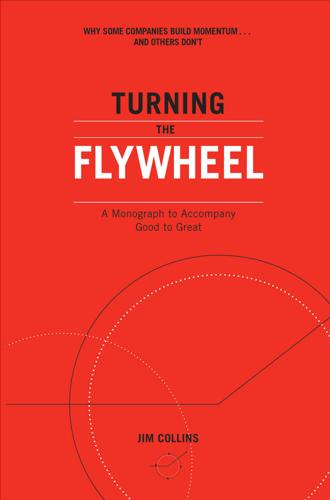
Turning the Flywheel: A Monograph to Accompany Good to Great
by
Jim Collins
Published 26 Feb 2019
Hansen, Great by Choice: Uncertainty, Chaos and Luck—Why Some Thrive Despite Them All (New York, NY: HarperBusiness, 2011), 91–95. 21Amazon, Fiscal 2015 Annual Letter to Shareholders (Seattle, WA: Amazon, 2015); Amazon, Fiscal 2016 Annual Report (Seattle, WA: Amazon, 2016); Amazon, Fiscal 2017 Annual Report (Seattle, WA: Amazon, 2017); Alex Hern, “Amazon Web Services: the secret to the online retailer’s future success,” The Guardian, February 2, 2017, https://www.theguardian.com/technology/2017/feb/02/amazon-web-services-the-secret-to-the-online-retailers-future-success; Robert Hof, “Ten Years Later, Amazon Web Services Defies Skeptics,” Forbes, March 22, 2016, https://www.forbes.com/sites/roberthof/2016/03/22/ten-years-later-amazon-web-services-defies-skeptics/#244356466c44. 22Amazon, Fiscal 2017 Annual Report (Seattle, WA: Amazon, 2017); “Global Retail Industry Worth USD 28 Trillion by 2019 - Analysis, Technologies & Forecasts Report 2016–2019 - Research and Markets,” Business Wire, June 30, 2016, https://www.businesswire.com/news/home/20160630005551/en/Global-Retail-Industry-Worth-USD-28-Trillion. 23Jim Collins, How the Mighty Fall: And Why Some Companies Never Give In (Boulder, CO: Jim Collins, 2009), 29–36. 24Alan Wurtzel, Good to Great to Gone: The 60 Year Rise and Fall of Circuit City (New York, NY: Diversion Books, Kindle Edition, 2012), Chapter 8; Circuit City Stores, Inc., Fiscal 2002 Annual Report (Richmond, VA: Circuit City Stores, Inc., 2002); Michael Janofsky, “Circuit City Takes a Spin at Used Car Marketing,” The New York Times, October 25, 1993, http://www.nytimes.com/1993/10/25/business/circuit-city-takes-a-spin-at-used-car-marketing.html; Mike McKesson, “Circuit City at Wheel of New Deal for Used-Car Shoppers: Megastores,” Los Angeles Times, January 28, 1996, http://articles.latimes.com/1996–01-28/news/mn-29582_1_circuit-city. 25Alan Wurtzel, Good to Great to Gone: The 60 Year Rise and Fall of Circuit City (New York, NY: Diversion Books, Kindle Edition, 2012), Chapter 8; Circuit City Stores, Inc., Fiscal 2002 Annual Report (Richmond, VA: Circuit City Stores, Inc., 2002). 26Alan Wurtzel, Good to Great to Gone: The 60 Year Rise and Fall of Circuit City (New York, NY: Diversion Books, Kindle Edition, 2012), Loc 3542 of 5094. 27Alan Wurtzel, Good to Great to Gone: The 60 Year Rise and Fall of Circuit City (New York, NY: Diversion Books, Kindle Edition, 2012), Chapter 8 and Chapter 10; Jesse Romero, “The Rise and Fall of Circuit City,” Federal Reserve Bank of Richmond, 2013; Jim Collins, How the Mighty Fall: And Why Some Companies Never Give In (Boulder, CO: Jim Collins, 2009), 29–36.
…
Most seeming “second flywheels” come about organically, as bullet-to-cannonball extensions of a primary flywheel. Amazon showed this precise pattern with its Amazon Web Services, which enables organizations big and small to efficiently buy computing power, store data, host websites, and avail themselves of other technology services. Amazon Web Services began as an internal system to provide backend technology support for Amazon’s own e-commerce efforts. In 2006, the company fired a bullet on offering these very same services to outside companies. The bullet hit its target and Amazon had enough calibration to fire a cannonball. A decade later, Amazon Web Services (while still contributing less than 10 percent of Amazon’s overall net sales) generated a substantial portion of Amazon’s operating income.21 Even though Amazon Web Services first appears to be a very different activity than the consumer-retail business, it has substantial similarities.
…
A decade later, Amazon Web Services (while still contributing less than 10 percent of Amazon’s overall net sales) generated a substantial portion of Amazon’s operating income.21 Even though Amazon Web Services first appears to be a very different activity than the consumer-retail business, it has substantial similarities. As Bezos wrote in his 2015 annual letter to shareholders, “Superficially, the two could hardly be more different. One serves consumers and the other serves enterprises . . . Under the surface, the two are not so different after all.” Amazon Web Services aims to lower prices and expand offerings to an ever-growing cadre of customers, leading to increasing revenues per fixed costs, which then drives the flywheel around again.
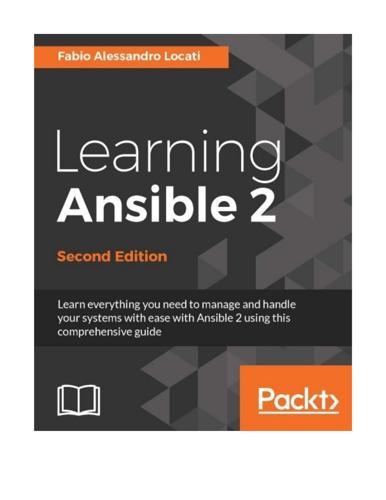
Learning Ansible 2 - Second Edition
by
Fabio Alessandro Locati
Published 21 Nov 2016
In the next sections we will provision the environment that we have used in the previous chapters (two web servers and one database server) in the following environments: • Simple Amazon Web Service deployment: Where all machines will be placed in the same Availability Zone and same network • Complex Amazon Web Service deployment: Where the machines will be split in multiple Availability Zones as well as networks • DigitalOcean: DigitalOcean does not allow us to do many networking tweaks so it will be similar to the first one • Docker: We will create a simple deployment in this case Amazon Web Service Amazon Web Service is the most used public cloud by a fair amount and it's often chosen due to their huge amount of available services as well as the huge amount of documentation, answered questions, and articles that can be expected from such a popular product.
…
The Ansible inventory scripts can be written in any language but, for consistency reasons, dynamic inventory scripts should be written in Python. Remember that these scripts need to be executable directly, so please remember to set them with the executable flag (chmod + x inventory.py). In this chapter, we will take a look at Amazon Web Services and DigitalOcean scripts that can be downloaded from the official Ansible repository. Amazon Web Services To allow Ansible to gather data from Amazon Web Services (AWS) about your EC2 instances, you need to download the following two files from Ansible's GitHub repository at https://github.com/ ansible/ansible: • The ec2.py inventory script • The ec2.ini file, which contains the configuration for your EC2 inventory script Ansible uses AWS Python library boto to communicate with AWS using APIs.
…
To simplify this, Amazon provides some widely used DBaaS, more specifically: • • • • • • Aurora MariaDB MySQL Oracle PostgreSQL SQL Server For each one of those engines, Amazon offers different features and price models but the specifics of each is beyond the goal of this book. Setting up an account with AWS The first thing we will need before starting to work on our Amazon Web Service is an account. Creating an account on Amazon Web Services is pretty straightforward and very well-documented by Amazon official documentation as well as by multiple independent sites and therefore it will not be covered in these pages. After you have created your AWS account, you need to go into the AWS and do the following: • Upload your SSH key in EC2 | Keypairs • Create a new user in Identity & Access Management | Users | Create new user and create a file in ~/.aws/credentials with the following lines: [default] aws_access_key_id = YOUR_ACCESS_KEY aws_secret_access_key = YOUR_SECRET_KEY After you have created your AWS Keys and uploaded your SSH key, you need to set up Route53.
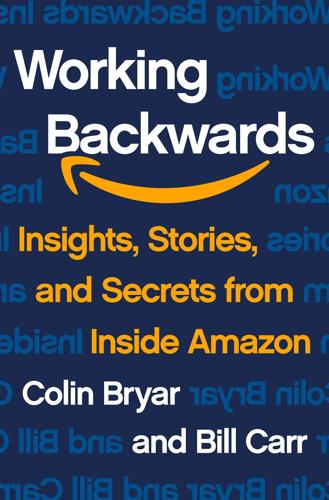
Working Backwards: Insights, Stories, and Secrets From Inside Amazon
by
Colin Bryar
and
Bill Carr
Published 9 Feb 2021
They were Amazon software engineers. They found Amazon Web Services easier to use than some of our existing internal software tools they had been working with to build amazon.com. At this point there was little doubt that web services were going to become a new way of building things. We just didn’t know how big it could be or how quickly developers would adopt it. Within a year, we had a pretty good idea—over 25,000 developers enrolled in the program6 and were constantly surprising us with what they built. Though this program was called Amazon Web Services, it bears little resemblance to today’s AWS.
…
Over the ensuing years, the wording has been tweaked to reflect lessons learned and scars earned, but Amazon has never wavered in its commitment to these four core principles. And they are in large part the reason that in 2015 Amazon became the company that reached $100 billion in annual sales faster than any other in the world. Remarkably, that same year Amazon Web Services (AWS) was reaching $10 billion in annual sales—at an even faster pace than the one Amazon had set.3 Of course, these four cultural touchstones don’t quite get at the “how,” that is, how people can work, individually and collectively, to ensure that they are maintained. And so Jeff and his leadership team crafted a set of 14 Leadership Principles, as well as a broad set of explicit, practical methodologies, that constantly reinforce its cultural goals.
…
Those two years began in the summer of 2003 when Jeff asked me to become his technical advisor, a role that is known colloquially as “Jeff’s shadow,” and is similar to a chief of staff role at other companies. The position had been formalized about 18 months earlier when Andy Jassy, now CEO of Amazon Web Services, became Jeff’s first full-time technical advisor. It had two main responsibilities. One was to help Jeff be as effective as possible. The other was, as Jeff put it to me, to “model and learn from each other” so that the person who held the position could eventually move on to a bigger role in the company.
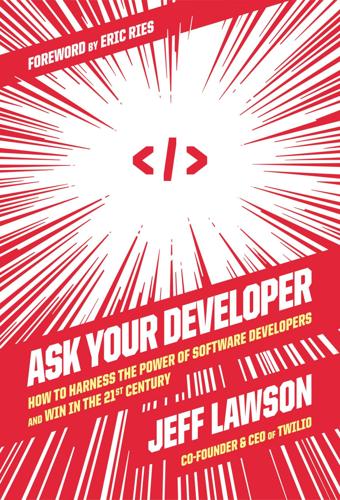
Ask Your Developer: How to Harness the Power of Software Developers and Win in the 21st Century
by
Jeff Lawson
Published 12 Jan 2021
But they’re not alone—many multibillion-dollar SaaS companies arose over the years since the turn of the millennium, representing tens of billions of dollars in revenue, and hundreds of billions of dollars of market cap. But as good as SaaS companies are, the fastest-growing software company in the history of the world didn’t look anything like Salesforce or Workday. Amazon Web Services Changes the Game I joined Amazon in 2004 in the early days of Amazon Web Services (AWS). Once I joined, my boss explained the mission. Amazon was going to build enormous data centers and rent compute-power and storage capacity not as applications, but as building blocks that developers and other companies can use to build their apps.
…
As Jeff Immelt, the former CEO of GE and a member of our Twilio board of directors, once told his executive team at GE: “If we don’t become the best technology company in the world, we’re doomed. We’re dead. There’s no Plan B.” “It’s a quest for survival,” says Werner Vogels, the legendary chief technology officer at Amazon and one of the chief architects of Amazon Web Services, the world’s biggest cloud computing platform, with dozens of data centers girdling the globe. Vogels is a huge guy, six foot six and built like an NFL linebacker. He has a doctorate in computer science and spent more than a decade in academia before joining Amazon. These days a big part of his job involves traveling the world and helping traditional companies adapt and survive.
…
It took a year to write the first version of the software, with Ali writing 20 percent of the code himself. In 2016 Bunq opened for business, and by the end of 2019 it was operating in thirty European countries. The entire customer experience was a mobile app—they didn’t even have a web version until 2019. Bunq operates entirely in the cloud, using Twilio, Amazon Web Services, and others. They also run incredibly lean, with fewer than two hundred employees. Yes, you read that right. This is the thing that should terrify incumbent banks—the scale and efficiency of software is unprecedented. The culture is so engineering-driven that Ali doesn’t even describe Bunq as a bank but rather “a tech company that happens to have a bank attached to it.”
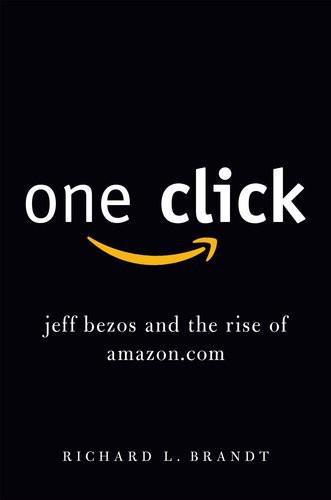
One Click: Jeff Bezos and the Rise of Amazon.com
by
Richard L. Brandt
Published 27 Oct 2011
Netflix can’t afford (at least not yet) to buy all the computing power needed to load up films instantly and stream them to thousands of customers at any moment. So it rents computers from Amazon’s vast store at pennies per minute to handle the tasks, tapping into just as much computer power as it needs at any given moment. It’s all part of a surprising business from the online retailing company, called Amazon Web Services, which is part of a larger trend known as cloud computing. Services like this bring in half a billion dollars annually in revenues to Amazon. Buying companies is a relatively easy way for a stock-rich company to expand its business. But sometimes a great executive will stumble upon an unexpected new idea, or one of his employees may come up with something.
…
Despite some concerns from higher-ups about security, Frederick recalled, “The funny thing is that it did not take a great deal of convincing.” The executives soon realized that they could have a gold mine in their cubicles. By making its data and tools available to outside programmers, Amazon could actually outsource the development of new products—for free. Amazon Web Services was launched in July 2002. “We’re putting out a welcome mat for developers,” announced Bezos. “This is an important beginning and new direction for us.” Developers began creating new sites with original features that could send new buyers to Amazon and help them find and buy products. One former Amazon developer, for example, created a site that he dubbed “Amazon Light.”
…
No, but it was a great feature that benefitted customers. Besides, if the customers did decide to buy from the outside site, the transaction actually went through Amazon, which collects a fee for the transaction. Site owners who sent customers to Amazon to buy Amazon products got about a 15 percent cut of any sale they sent to Amazon. Web services—the process of sharing services between Web sites—had been discussed by Internet pundits for years. Amazon was the first to make the concept a reality in a big way. About two years after the launch of Web services, Amazon boasted sixty-five thousand developers using the program and sending some ten million queries a day to Amazon’s servers.That’s a lot of new customers.
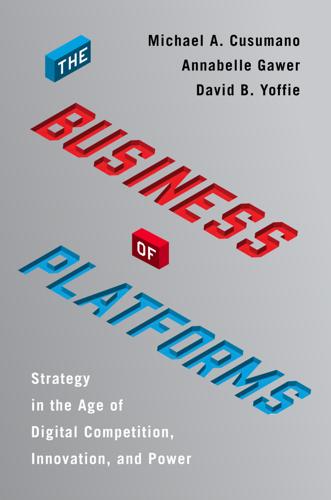
The Business of Platforms: Strategy in the Age of Digital Competition, Innovation, and Power
by
Michael A. Cusumano
,
Annabelle Gawer
and
David B. Yoffie
Published 6 May 2019
The network effects come from the increasing number or utility of the complements: The more there are or the higher quality they are, the more attractive the platform becomes to users and complementors, as well as other potential market actors such as advertisers (and investors). Microsoft Windows, Google Android, Apple iOS, and Amazon Web Services are commonly used operating systems and cloud computing services that serve as innovation platforms for computer and smartphone ecosystems. The second type we call transaction platforms.22 These platforms are largely intermediaries or online marketplaces that make it possible for people and organizations to share information or to buy, sell, or access a variety of goods and services.
…
Amazon is even more complicated because of how it integrated and mixed platform and non-platform businesses. How much of its market value derives from scale and scope economies associated with the online store and its enormous physical warehousing system as compared to Amazon’s “pure” platform businesses, Amazon Marketplace and Amazon Web Services (AWS)? In 2017, the online retail store accounted for about two-thirds of Amazon’s revenues and Amazon Marketplace about 17 percent. AWS accounted for less than 10 percent of revenues but 60 percent of operating profits, and more in prior years.25 Amazon did not always break out these numbers, which made it difficult to do historical analysis.
…
There are also unique barriers to entry in platform markets that we rarely see in the conventional world. First, network effects create barriers in the form of an existing stock of complements around a particular platform. When a platform has millions of applications that run on—and only on—Android, iOS, Windows, Amazon Web Services, Facebook, or WeChat, they increase the barriers to switching to a new or competing platform. Second, and closely related, is that new entrants are often challenged by the difficulty of replicating a platform ecosystem. Successful platform companies have established virtual armies of complementors, such as the thousands of software developers who have already joined the Android, iPhone, Facebook, or WeChat developer networks, or the millions of people with rooms to rent or cars to drive who have already registered with Airbnb, Uber, Lyft, and Didi Chuxing.
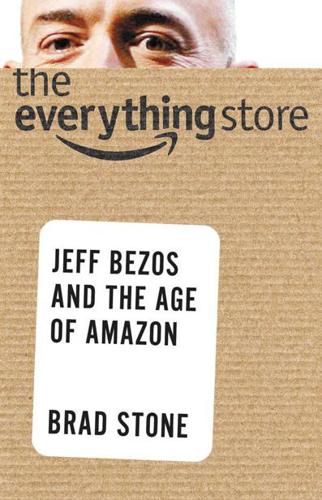
The Everything Store: Jeff Bezos and the Age of Amazon
by
Brad Stone
Published 14 Oct 2013
The company held its first developer conference that spring and invited all the outsiders who were trying to hack Amazon’s systems. Now developers became another constituency at Amazon, joining customers and third-party sellers. And the new group, run by Colin Bryar and Rob Frederick, was given a formal name: Amazon Web Services. It was the trailhead of an extremely serendipitous path. Amazon Web Services, or AWS, is today in the business of selling basic computer infrastructure like storage, databases, and raw computing power. The service is woven into the fabric of daily life in Silicon Valley and the broader technology community. Startups like Pinterest and Instagram rent space and cycles on Amazon’s computers and run their operations over the Internet as if the high-powered servers were sitting in the backs of their own offices.
…
Various divisions of the U.S. government, such as NASA and the Central Intelligence Agency, are high-profile AWS customers as well. Though Amazon keeps AWS’s financial performance and profitability a secret, analysts at Morgan Stanley estimate that in 2012, it brought in $2.2 billion in revenue. The rise of Amazon Web Services brings up a few obvious questions. How did an online retailer spawn such a completely unrelated business? How did the creature that was originally called Amazon Web Services—the group working on the commerce APIs—evolve into something so radically different, a seller of high-tech infrastructure? Early observers suggested that Amazon’s retail business was so seasonal—booming during the holiday months—that Bezos had decided to rent his spare computer capacity during the quieter periods.
…
Chapter 7: A Technology Company, Not a Retailer 1 Gary Rivlin, “A Retail Revolution Turns Ten,” New York Times, July 27, 2012. 2 Gary Wolf, “The Great Library of Amazonia,” Wired, October 23, 2003. 3 Ibid. 4 Luke Timmerman, “Amazon’s Top Techie, Werner Vogels, on How Web Services Follows the Retail Playbook,” Xconomy, September 29, 2010. 5 Shobha Warrier, “From Studying under the Streetlights to CEO of a U.S. Firm!,” Rediff, September 1, 2010. 6 Tim O’Reilly, “Amazon Web Services API,” July 18, 2002, http://www.oreillynet.com/pub/wlg/1707. 7 Damien Cave, “Losing the War on Patents,” Salon, February 15, 2002. 8 O’Reilly, “Amazon Web Services API.” 9 Steve Grand, Creation: Life and How to Make It (Darby, PA: Diane Publishing, 2000), 132. 10 Hybrid machine/human computing arrangement patent filed October 12, 2001; http://www.google.com/patents/US7197459. 11 “Artificial Artificial Intelligence,” Economist, June 10, 2006. 12 Katharine Mieszkowski, “I Make $1.45 a Week and I Love It,” Salon, July 24, 2006. 13 Jason Pontin, “Artificial Intelligence, with Help from the Humans,” New York Times, March 25, 2007. 14 Jeff Bezos, interview by Charlie Rose, Charlie Rose, PBS, February 26, 2009.
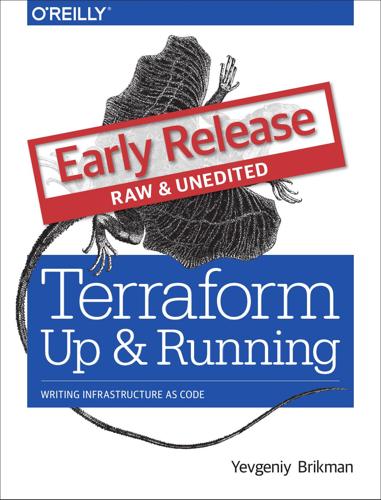
Terraform: Up and Running: Writing Infrastructure as Code
by
Yevgeniy Brikman
Published 13 Mar 2017
The good news is that thanks to the DevOps Rebel Alliance, there is now a better way to do things: Terra‐ form. Terraform is an open source tool that allows you to define your infrastructure as code using a simple, declarative programming language, and to deploy and manage that infrastructure across a variety of cloud providers (including Amazon Web Services, Azure, Google Cloud, DigitalOcean, and many others) using a few commands. For example, instead of manually clicking around a webpage or running dozens of com‐ mands, here is all the code it takes to configure a server: resource "aws_instance" "example" { ami = "ami-40d28157" instance_type = "t2.micro" } And to deploy it, you just run one command: > terraform apply Thanks to its simplicity and power, Terraform is rapidly emerging as a dominant player in the DevOps world.
…
To become fluent in French, you’ll have to spend time talking with native French speakers, watching French TV shows, and listening to French music. To become fluent in Terraform, you’ll have to write real Terraform code, use it to manage real software, and deploy that software on real servers (don’t worry, all the examples use Amazon Web Service’s free tier, so it shouldn’t cost you anything). Therefore, be ready to read, write, and execute a lot of code. What you will find in this book Here’s an outline of what the book covers: Chapter 1, Why Terraform How DevOps is transforming the way we run software; an overview of infra‐ structure as code tools, including configuration management, orchestration, and server templating; the benefits of infrastructure as code; a comparison of Terra‐ form, Chef, Puppet, Ansible, Salt Stack, and CloudFormation.
…
My goal is to get you up and running quickly by discussing why you may want to use Terraform in the first place, how to fit it into your workflow, and what practices and patterns tend to work best. x | Preface To demonstrate these patterns, I’ve included a number of code examples. Just about all of them are built on top of Amazon Web Services (AWS), although the basic pat‐ terns should be largely the same no matter what cloud provider you’re using. My goal was to make it as easy as possible for you to try the examples at home. That’s why the code examples all focus on one cloud provider (you only have to register with one service, AWS, which offers a free tier for the first year).
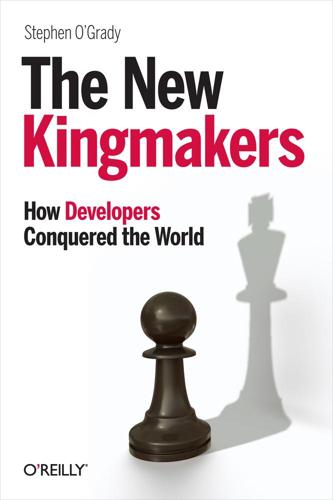
The New Kingmakers
by
Stephen O'Grady
Published 14 Mar 2013
As creative as they could now be with their software infrastructure, to build anything of size, they would eventually have to procure hardware. This meant either purchasing it outright or renting it, typically for the minimum of a month, with the attendant set up, management, and maintenance fees on top. Enter Amazon Web Services (AWS). The idea was simple. Driven relentlessly by Moore’s Law, hardware doubled in speed every two years. Like Google and other Internet giants, Amazon discovered early that the most-economical model for scaling its technology was on cheap, commodity servers deployed by the hundreds or thousands.
…
Fielding, one the authors of HTTP, the protocol that still powers the Internet today—you’ve probably typed http:// many times yourself—advocated for a simple style that both reflected and leveraged the way the Internet itself had been constructed. Unsurprisingly, this simpler approach proved popular. At Amazon, for example, developers were able to choose between the two different mechanisms to access data: SOAP or REST. Even in 2004, 80% of those leveraging Amazon Web Services did so via REST. Two years after that, Google deprecated their SOAP API for search. And they were just the beginning. It’s hard to feel too sorry for SOAP’s creators, however—particularly if what one Microsoft developer told Tim O’Reilly is true: “It was actually a Microsoft objective to make [SOAP] sufficiently complex that only the tools would read and write this stuff,” he explained, “and not humans.”
…
Developers are attracted to its platform because of the size of the market…those developers create thousands of new applications…the new applications give consumers thousands of additional reasons to buy Apple devices rather than the competition…and those new Apple customers give even more developers reason to favor Apple. Apple not only profits from this virtuous cycle, it benefits from ever-increasing economies of scale, realizing lower component costs than competitors. None of which would be possible without the developers Apple has recruited and, generally, retained. Amazon Web Services The company that started the cloud computing craze was founded in 1994 as a bookstore. The quintessential Internet company, Amazon.com competed with the traditional brick-and-mortar model via an ever-expanding array of technical innovations: some brilliant, others mundane. The most-important of Amazon’s retail innovations co-opted its customers into contributors.

Machine, Platform, Crowd: Harnessing Our Digital Future
by
Andrew McAfee
and
Erik Brynjolfsson
Published 26 Jun 2017
Kramer, “The Biggest Thing Amazon Got Right: The Platform,” Gigaom, October 12, 2011, https://gigaom.com/2011/10/12/419-the-biggest-thing-amazon-got-right-the-platform. 142 Dalzell was described as a bulldog: Matt Rosoff, “Jeff Bezos ‘Makes Ordinary Control Freaks Look like Stoned Hippies,’ Says Former Engineer,” Business Insider, October 12, 2011, http://www.businessinsider.com/jeff-bezos-makes-ordinary-control-freaks-look-like-stoned-hippies-says-former-engineer-2011-10. 143 launched Amazon Web Services in 2006: Amazon Web Services, “About AWS,” accessed February 4, 2017, https://aws.amazon.com/about-aws. 143 Amazon S3: Amazon Web Services, “Amazon Simple Storage Service (Amazon S3)—Continuing Successes,” July 11, 2006, https://aws.amazon.com/about-aws/whats-new/2006/07/11/amazon-simple-storage-service-amazon-s3---continuing-successes. 143 Amazon EC2: Amazon Web Services, “Announcing Amazon Elastic Compute Cloud (Amazon EC2)—Beta,” August 24, 2006, https://aws.amazon.com/about-aws/whats-new/2006/08/24/announcing-amazon-elastic-compute-cloud-amazon-ec2---beta. 143 more than 290,000 developers using the platform: Amazon, “Ooyala Wins Amazon Web Services Start-up Challenge, Receives $100,000 in Cash and Services Credits Plus Investment Offer from Amazon.com,” December 7, 2007, http://phx.corporate-ir.net/phoenix.zhtml?
…
Might these resources be valuable to people who wanted to build a database, application, website, or other digital resource but didn’t want to go through the trouble of maintaining all required hardware and software themselves? Amazon decided to find out and launched Amazon Web Services in 2006. It originally offered storage (Amazon S3) and computing (Amazon EC2) services on the platform. Within eighteen months, Amazon claimed to have more than 290,000 developers using the platform. Amazon Web Services added more tools and resources over time, maintained hardened interfaces, and kept growing dramatically. By April 2016, it was contributing 9% of Amazon’s total revenue and, remarkably, over half of the company’s total operating income.
…
Neural networks become much more powerful and capable as their size increases, and it’s only recently that sufficiently large ones have become cheap enough that they are available to many researchers. Cloud computing has helped open up AI research to these smaller budgets. Technology entrepreneur Elliot Turner estimates that the computing power required to execute a cutting-edge machine learning project could be rented from a cloud computing provider like Amazon Web Services for approximately $13,000 by the fall of 2016. Oddly enough, the popularity of modern video games has also been a great boost to machine learning. The specialized graphics processing units (GPUs) that drive popular gaming consoles turn out to be extremely well suited to the kinds of calculations required for neural networks, so they’ve been drafted in large numbers for this task.

Platform Capitalism
by
Nick Srnicek
Published 22 Dec 2016
Amazon, for example, is often seen as an e-commerce company, yet it rapidly broadened out into a logistics company. Today it is spreading into the on-demand market with a Home Services program in partnership with TaskRabbit, while the infamous Mechanical Turk (AMT) was in many ways a pioneer for the gig economy and, perhaps most importantly, is developing Amazon Web Services as a cloud-based service. Amazon therefore spans nearly all of the above categories. Advertising Platforms The elders of this new enterprise form, advertising platforms are the initial attempts at building a model adequate to the digital age. As we will see, they have directly and indirectly fostered the emergence of the most recent technological trends – from the sharing economy to the industrial internet.
…
By all accounts, the Amazon Prime delivery service loses money on every order, and the Kindle e-book reader is sold at cost.34 On traditional metrics for lean businesses, this is unintelligible: unprofitable ventures should be cut off. Yet rapid and cheap delivery is one of the main ways in which Amazon entices users onto its platform in order to make revenues elsewhere. In the process of building a massive logistical network, Amazon Web Services (AWS) was developed as an internal platform, to handle the increasingly complex logistics of the company. Indeed, a common theme in the genesis of platforms is that they often emerge out of internal company needs. Amazon required ways to get new services up and running quickly, and the answer was to build up the basic infrastructure in a way that enabled new services to use it easily.35 It was quickly recognised that this could also be rented to other firms.
…
An Intuit survey, on the other hand, reportedly found that 6% of the population in Britain is working in the sharing economy, but the actual data do not appear to be available. See Stokes, Clarence, Anderson, and Rinne, 2014: 25; Hesse, 2015. 76. Henwood, 2015. 77. Berg, 2016. 78. Knight, 2016. 79. See many more examples at Amazon Web Services, 2016. 80. Huet, 2016. 81. Ibid. 82. While government surveillance is often the focus of public attention today, corporate surveillance is just as pernicious a phenomenon. Pasquale, 2015. 83. ‘Reinventing the Deal’, 2015. 84. CB Insights, 2015. 85. Ibid. 86. CB Insights, 2016a. 87. National Venture Capital Association, 2016: 9; Crain, 2014: 374. 88.
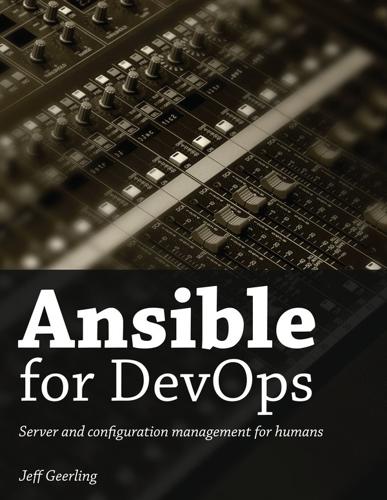
Ansible for DevOps: Server and Configuration Management for Humans
by
Jeff Geerling
Published 9 Oct 2015
If you’re interested in the current status of this effort, or would like to help in migrating to the v2 API, visit the v2 API support issue on GitHub. Dynamic inventory with AWS Many of this book’s readers are familiar with Amazon Web Services (especially EC2, S3, ElastiCache, and Route53), and likely have managed or currently manage an infrastructure within Amazon’s cloud. Ansible has very strong support for managing AWS-based infrastructure, and includes a dynamic inventory script to help you run playbooks on your hosts in a variety of ways. There are a few excellent guides to using Ansible with AWS, for example: Ansible - Amazon Web Services Guide Ansible for AWS I won’t be covering dynamic inventory in this chapter, but will mention that the ec2.py dynamic inventory script, along with Ansible’s extensive support for AWS infrastructure through ec2_* modules, makes Ansible the best and most simple tool for managing a broad AWS infrastructure.
…
Now that we’ve tested our infrastructure on DigitalOcean, we can destroy the droplets just as easily (change the state parameter in provisioners/digitalocean.yml to default to 'absent' and run $ ansible-playbook provision.yml again). Next up, we’ll build the infrastructure a third time—on Amazon’s infrastructure. Provisioner Configuration: Amazon Web Services (EC2) For Amazon Web Services, provisioning works slightly different. Amazon has a broader ecosystem of services surrounding EC2 instances, and for our particular example, we will need to configure security groups prior to provisioning instances. To begin, create aws.yml inside the provisioners directory and begin the playbook the same ways as with DigitalOcean: 1 --- 2 - hosts: localhost 3 connection: local 4 gather_facts: false EC2 instances use security groups as an AWS-level firewall (which operates outside the individual instance’s OS).
…
Ansible Examples Other resources Chapter 1 - Getting Started with Ansible Ansible and Infrastructure Management On snowflakes and shell scripts Configuration management Installing Ansible Creating a basic inventory file Running your first Ad-Hoc Ansible command Summary Chapter 2 - Local Infrastructure Development: Ansible and Vagrant Prototyping and testing with local virtual machines Your first local server: Setting up Vagrant Using Ansible with Vagrant Your first Ansible playbook Summary Chapter 3 - Ad-Hoc Commands Conducting an orchestra Build infrastructure with Vagrant for testing Inventory file for multiple servers Your first ad-hoc commands Discover Ansible’s parallel nature Learning about your environment Make changes using Ansible modules Configure groups of servers, or individual servers Configure the Application servers Configure the Database servers Make changes to just one server Manage users and groups Manage files and directories Get information about a file Copy a file to the servers Retrieve a file from the servers Create directories and files Delete directories and files Run operations in the background Update servers asynchronously, monitoring progress Fire-and-forget tasks Check log files Manage cron jobs Deploy a version-controlled application Ansible’s SSH connection history Paramiko OpenSSH (default) Accelerated Mode Faster OpenSSH in Ansible 1.5+ Summary Chapter 4 - Ansible Playbooks Power plays Running Playbooks with ansible-playbook Limiting playbooks to particular hosts and groups Setting user and sudo options with ansible-playbook Other options for ansible-playbook Real-world playbook: CentOS Node.js app server Add extra repositories Deploy a Node.js app Launch a Node.js app Node.js app server summary Real-world playbook: Ubuntu LAMP server with Drupal Include a variables file, and discover pre_tasks and handlers Basic LAMP server setup Configure Apache Configure PHP with lineinfile Configure MySQL Install Composer and Drush Install Drupal with Git and Drush Drupal LAMP server summary Real-world playbook: Ubuntu Apache Tomcat server with Solr Include a variables file, and discover pre_tasks and handlers Install Apache Tomcat 7 Install Apache Solr Apache Solr server summary Summary Chapter 5 - Ansible Playbooks - Beyond the Basics Handlers Environment variables Per-play environment variables Variables Playbook Variables Inventory variables Registered Variables Accessing Variables Host and Group variables group_vars and host_vars Magic variables with host and group variables and information Facts (Variables derived from system information) Local Facts (Facts.d) Variable Precedence If/then/when - Conditionals Jinja2 Expressions, Python built-ins, and Logic register when changed_when and failed_when ignore_errors Delegation, Local Actions, and Pauses Pausing playbook execution with wait_for Running an entire playbook locally Prompts Tags Summary Chapter 6 - Playbook Organization - Roles and Includes Includes Handler includes Playbook includes Complete includes example Roles Role scaffolding Building your first role More flexibility with role vars and defaults Other role parts: handlers, files, and templates Handlers Files and Templates Organizing more complex and cross-platform roles Ansible Galaxy Getting roles from Galaxy Using role requirements files to manage dependencies A LAMP server in six lines of YAML A Solr server in six lines of YAML Helpful Galaxy commands Contributing to Ansible Galaxy Summary Chapter 7 - Inventories A real-world web application server inventory Non-prod environments, separate inventory files Inventory variables host_vars group_vars Ephemeral infrastructure: Dynamic inventory Dynamic inventory with DigitalOcean DigitalOcean account prerequisites Connecting to your DigitalOcean account Creating a droplet with Ansible DigitalOcean dynamic inventory with digital_ocean.py Dynamic inventory with AWS Inventory on-the-fly: add_host and group_by Multiple inventory sources - mixing static and dynamic inventories Creating custom dynamic inventories Summary Chapter 8 - Ansible Cookbooks Highly-Available Infrastructure with Ansible Directory Structure Individual Server Playbooks Main Playbook for Configuring All Servers Getting the required roles Vagrantfile for Local Infrastructure via VirtualBox Provisioner Configuration: DigitalOcean Provisioner Configuration: Amazon Web Services (EC2) Summary ELK Logging with Ansible ELK Playbook Forwarding Logs from Other Servers Summary GlusterFS Distributed File System Configuration with Ansible Configuring Gluster - Basic Overview Configuring Gluster with Ansible Summary Mac Provisioning with Ansible and Homebrew Running Ansible playbooks locally Automating Homebrew package and app management Configuring Mac OS X through dotfiles Summary Docker-based Infrastructure with Ansible A brief introduction to Docker containers Using Ansible to build and manage containers Building a Flask app with Ansible and Docker Data storage container Flask container MySQL container Ship it!
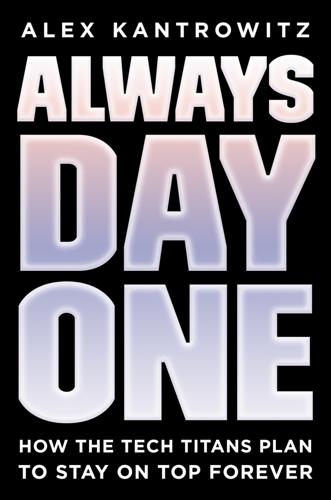
Always Day One: How the Tech Titans Plan to Stay on Top Forever
by
Alex Kantrowitz
Published 6 Apr 2020
Inside Amazon, Bezos has developed a culture that empowers employees to invent and lets them run the thing they’ve created (another leadership principle: Ownership). The deeper you dig in, the more apparent it becomes that this culture, bolstered by Wall Street investors who don’t demand Amazon turn a profit, is what’s behind the company’s array of beloved products and services: Echo, Kindle, Prime, Amazon Web Services, and Amazon.com. It is, in no uncertain terms, Amazon’s competitive advantage. Meet Amazon’s Science Fiction Writers On June 9, 2004, at 6:02 P.M., Jeff Bezos banned PowerPoint at Amazon. Not one for subtlety, he delivered the news right in an email subject line: “No powerpoint presentations from now on,” he wrote to his senior leadership team.
…
In 2011, Amazon’s VP of pricing and promotions, Dilip Kumar, left his position in the retail organization to shadow Bezos for two years as his “technical adviser.” Amazonians covet the technical adviser position. Those who inhabit it attend every meeting Bezos takes, getting a chance to look at Amazon through his eyes, and often gain license to take a major swing when they’re done. Andy Jassy, Bezos’s first technical adviser, went on to found Amazon Web Services (AWS), Amazon’s cloud services division, which now brings in some $9 billion per quarter with Jassy as its CEO. Kumar—whose LinkedIn profile describes his time as Bezos’s technical adviser as “Quite possibly the best job that I’ve ever had!”—also set out to do something big upon completing his tour of duty.
…
“You also had to be an expert in A/B testing platforms, and continuous improvement, and machine learning. Satya was an expert in all of those things.” When Nadella took over Server & Tools in 2011, he understood that simply providing servers and tools to companies building software for desktop machines wasn’t going to be viable. Watching Amazon Web Services’ early success, and reading his economics team’s analysis, Nadella decided that acting any slower would set Microsoft back. While working on Bing, Nadella learned how difficult it was to be a distant number-two player in a market, and he wasn’t eager to repeat the scenario. Despite the risks to the core Windows asset—not to mention a thriving Server & Tools business—Nadella made clear that Server & Tools under him would focus on enabling cloud computing.
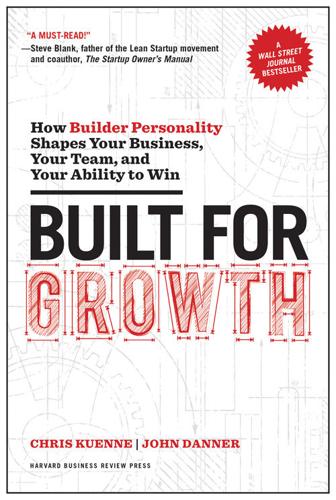
Built for Growth: How Builder Personality Shapes Your Business, Your Team, and Your Ability to Win
by
Chris Kuenne
and
John Danner
Published 5 Jun 2017
All they cared about was maximizing their return.” Explorer in Action The Bezos commitment to innovation inspires a level of inventiveness that does not occur in other companies. —Chris Pinkham, Amazon Web Services Chris Pinkham had just convinced the higher-ups at Amazon to let him return to his native South Africa for the birth of his first child and to continue supporting his work on a project that would ultimately become AWS (Amazon Web Services). Before this move, when he was working for Amazon in Seattle in 2003, his curiosity led him to wonder whether there was a way to create “an infrastructure service for the world.”
…
We share the stories of well-known entrepreneurs like Ben Cohen and Jerry Greenfield (of ice cream fame) and Jack Dorsey of Twitter and Square, in addition to lesser-known founders like Nate Morris, Grace Choi, and Steve Breitman, who have built noteworthy value in their own endeavors—in sanitation, cosmetics, and apartment laundries, respectively. We include corporate entrepreneurs such as Chris Pinkham, the inventor of the underlying technology that enabled Amazon Web Services; the late Charlie Cawley, who built MBNA, the credit card behemoth, out of a small department within Maryland National Bank; and legends like Norbert Berta, who created the caplet dosage form that helped the Tylenol brand recovery from the notorious 1982 poisonings. Using many of these examples, we illustrate how each Builder Type approaches the dynamic challenges at play in building a highly successful business—where does each create value, and where does each risk destroying it?
…
Ability to attract talent: In many ways, an Explorer can become a bit of a folk hero among his or her community of people drawn to a specific kind of problem. Explorers use the question “Is there a better way?” as a magnet to attract enormously talented and like-minded systems thinkers. Earlier in this chapter, we saw Chris Pinkham and Mark Bonfigli each attract the talent who could build, respectively, the foundation for Amazon Web Services and one of the fastest-growing digital marketing firms for auto dealers. In some ways your articulation of the problem and perhaps the beginning of a vision on how to solve it create the same force of attraction that Crusaders enjoy (see chapter 4). This gift allows you to recruit the followers you need to take on successively larger and more complex problems.
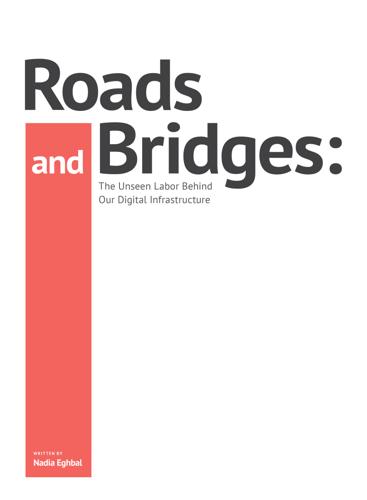
Roads and Bridges
by
Nadia Eghbal
Like electricity or water utilities, access to a server or database can be metered, charged for, and shut off if fees go unpaid. Heroku (mentioned at the beginning of this paper) and Amazon Web Services are two prominent examples of platforms that sell digital infrastructure services to software developers for a fee. (Note that neither project is open source.) Similar open source projects at this level of infrastructure, such as OpenStack (a platform competitive to Amazon Web Services) or MySQL (a database), have found corporate homes. OpenStack is funded by a consortium of companies and MySQL was acquired by Oracle. Part of what makes these services financially attractive is the lack of noise.
…
Suddenly infrastructure software was nearly free. We paid 10% of the normal costs for the software and that money was for software support. A 90% disruption in cost spawns innovation – believe me. [17] The availability of free software components today (as well as cheaper hosting and cloud services, like Amazon Web Services and Heroku) means that a technology startup no longer requires millions of dollars to get off the ground. Entrepreneurs can conceivably release a product and find a market without spending a single dollar, then raise money from venture capitalists only after they’ve shown strong signs of demand.
…
Following Heartbleed, the Linux Foundation announced the formation of the Core Infrastructure Initiative (CII) in order to prevent a similar situation from happening again. Jim Zemlin, the executive director of the Linux Foundation, gathered nearly $4 million in pledges from thirteen corporate donors, including Amazon Web Services, IBM, and Microsoft, to support security-related infrastructure projects over the next three years. [178] They are also building government support, including support from the White House. [179] The CII is officially a project of the Linux Foundation. Since its formation in April 2014, the CII has sponsored development work on a number of projects, including OpenSSL, NTP, GnuPG (a communication encryption system), and OpenSSH (a set of security-related protocols).

Nothing but Net: 10 Timeless Stock-Picking Lessons From One of Wall Street’s Top Tech Analysts
by
Mark Mahaney
Published 9 Nov 2021
S&P, 279t, 282t as platform company, 241–242 playing quarters at, 57–58, 57t and pricing power flywheel, 192–194, 193f, 196–197 revenue, 82, 106–108, 153, 153t rise of, 5 sell-offs of, 48–52 share price, 51f underestimations of, 2 Amazon Kindle, 50, 115–116 Amazon Prime, 115, 174, 180–183, 192, 205 Amazon Subscribe & Save, 115 Amazon Web Services (AWS): launch of, 50 product innovation, 114–119, 179 revenue, 117f “Amazon.Bomb,” 10, 177–178 “Amazon’s Antitrust Paradox,” 308 American Technology Research, 156, 181 Android, ubiquity of, 63 Antitrust regulations, 308–310 AOL, 5, 7–8, 82 Apple: growth of, 305 management teams of, 203–204, 204t, 220t market cap of, 7 product innovation at, 114 revenue, 108, 153, 153t share price, 48–49 and Snap, 63 APRN (Blue Apron), 18–23, 19f, 33 Athar, Sohaib, 134 Auletta, Ken, 149 AWS (see Amazon Web Services [AWS]) Ayers, Charlie, 145 BABA (see Alibaba [BABA]) Bad stocks, 15–33, 293 Blue Apron, 18–23 and fundamentals of stock-picking, 15–18 Groupon, 27–32 Zulily, 23–27 Bain Capital, 24 Barron’s magazine, 9–10, 90, 91, 177–178 Barton, Rich, 188, 191, 209 Bezos, Jeff: acknowledgments of mistakes by, 219, 221 and Amazon Prime, 181, 193 and Amazon Web Services, 115, 116 and Burning Man, 220t as company founder, 204t competition for, 8 innovation by, 10, 205–206 shareholder letters by, 214–216, 216t–217t “Big baggers,” 1–2 “The Big Long,” 5–7 The Big Short (Lewis), 5 Black swan events, 18 Blockbuster, 10 Blue Apron (APRN), 18–23, 19f, 33 Blue Nile (NILE), 23–24 Booking.com (BKNG): acquisition of, 80 as big bagger, 1 during Covid-19 pandemic, 303 fundamentals at, 261t market cap of, 7 net income of, 5, 6t as tech stock, 3 Bow Street, 24 Boyd, Jeff, 91, 210 Brin, Sergey, 145, 146, 204t, 209, 219, 220t Broadcast.com, 87 Brown, Josh, 226 Buffett, Warren, 214 Burning Man, 219, 220t “Burning Up,” 177 Buyer, Lise, 145–146 Calico, 208 Cambridge Analytica, 37 Candor, of management teams, 221 Carpenter, Matt, 311 Case, Steve, 7 Cavens, Darrell, 23–24 Chernobyl (miniseries), 131 Chewy (CHWY): as competitor, 310 and Covid-19 pandemic, 3, 4, 17 during Covid-19 pandemic, 303 fundamentals at, 261t as long-term investment, 66–70 market cap of, 247t share price, 70f as tech stock, 3 CIA, AWS used by, 118 Cisco Systems, 6 Cloud computing, 117–118 Cloudflare, 17 CNBC, 68 Cohen, Ryan, 68, 302 Cohort performance, 250 Companies: judging high-quality, 292 live-from-home and work-from-home, 303 with minimal earnings, 235–242 with no earnings, 242–254, 243t with robust earnings, 232–235 user-generated content, 248–249 Competitive moats, 169–170 Comps, 105–107 Consumerism, as research, 140 ConsumerVoice.org, 21 Content moderation, on Facebook, 37 “A Conventional Look at an Unconventional IPO,” 156 Cooper, Bradley, 135 Covid-19 pandemic, 302–305 Amazon during, 3 Chewy during, 69 DoorDash during, 161–162 eBay during, 85 effect of, on markets, 17–18, 226, 246 and forecasting, 255 Google during, 46 and Internet sector, 3–4 Netflix during, 45 and revenue, 105–107 Stitch Fix during, 124–125, 127 stock dislocations due to, 276 Covid-19 pandemic tech stocks during, 131 Uber during, 159, 161 Cramer, Jim, 157 Criteo (CRTO), 288–289, 289f Cruz, Ted, 37 Customer focus: of Amazon, 180 of DoorDash, 185–186 long-term investments in companies with, 187 of management teams, 214–216, 216t–217t and pricing power flywheel, 194 of product innovation, 295–296 Customer value propositions, 173–199, 297 Amazon vs. eBay, 174–183 DoorDash vs.
…
The intriguing question is: When did Amazon become a “reasonably sane” growth stock? When did it morph from being a speculative investment on the future of Internet retail to being a growth investment (still risky, but not speculative) on the future of one of the Internet’s largest platforms? My answer is 2006–2007, because that’s when Amazon launched both Amazon Web Services (AWS), its cloud offering, and the Amazon Kindle, its e-reader. Although I was skeptical at the time and viewed AWS as a limited, commodity-esque business, AWS eventually became arguably the most important growth engine at Amazon, and today it accounts for arguably half of the company’s market cap.
…
This, combined with the stock being highly dislocated, made me believe that both fundamentals and stock price performance could materially inflect up. Yes, luck was involved, but SFIX shares did rally from $12 in April of 2020 to $70 by the end of the year, as customer metrics improved and the revenue growth outlook strengthened, thanks in part to those new features. For a big example, I’d point to the 2006 launch of Amazon Web Services (AWS), the company’s cloud computing offering, which goes down as one of the single most impressive, most impactful product innovations of this millennium (since 2000), along with those iPhone and Tesla launches. AWS is widely known and widely regarded by tech investors today. Though that was far from the case when it was launched.
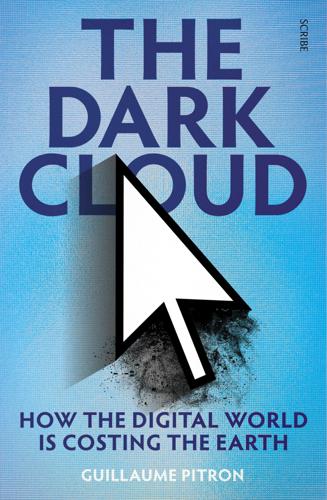
The Dark Cloud: How the Digital World Is Costing the Earth
by
Guillaume Pitron
Published 14 Jun 2023
Today, the biggest companies in the world (such as Google, Facebook, and Apple) still manage their own servers in privatised spaces. But for cost and security reasons, a growing number of companies prefer entrusting the management of their servers to specialist providers such as Equinix, Interxion, EdgeConneX, CyrusOne, Alibaba Cloud, and Amazon Web Service. As good ‘hosts’, they accommodate their clients’ data in ‘colocation’ data centres — a bit like ‘hotels for servers’ linked to the internet. These facilities make up what is known as ‘the cloud’ — an outsourced service for storing data that is accessible from absolutely any interface, and so popular that it is the transit point for a third of the data produced in the world today.
…
(See appendix 7.)1 But every now and then, these flows grind to a halt when ‘blackouts’ occur — a data centre shutting down due to a power outage, a leak in the cooling system, or an IT bug. At the mere mention of such an occurrence, users’ blood runs cold; words like ‘disaster’, ‘hell’, and ‘catastrophe’ come thick and fast. And for good reason, for such events can have huge consequences. In 2012, Amazon Web Services’ data centre was hit by extreme weather, which severed access to Instagram and Pinterest for six hours.2 In 2016, the world’s internet traffic fell by 40 per cent for two minutes after Google went offline.3 And in 2019, Gmail went down for half a day.4 According to a survey, one-third of companies admitted to having suffered an outage over the previous year.5 Such an event can turn into a nightmare: in 2017, British Airways’ data centre crashed, resulting in 400 flights being cancelled and 75,000 passengers left stranded at London’s Heathrow Airport.
…
At a conference at Data Centre World’s trade show — one of the biggest gatherings of cloud computing professionals — in Paris at the end of 2019, an executive made this stunning statement: ‘[We] realised that data centres were going to capture a third of electricity of the greater Paris area.’26 Amazon Web Services, which has been expanding in the Paris region since 2017, ‘is believed to have signed, in France, a contract to supply 155 megawatts of electricity, which is enough for the electricity needs of a city of 100,000 inhabitants,’ a specialist told me anonymously. Today, the sector would represent 2 per cent of global electricity consumption, which, given the rate at which cloud services are growing, could increase fourfold or fivefold by 2030.27 In other words, conclude Cécile Diguet and Fanny Lopez, ‘Data centres will be among the most important electricity consumption elements of the 21st century.’28 It should come as no surprise, therefore, that data storage is becoming a formidable energy challenge for the cities that have made the cloud the cornerstone of their economic development.
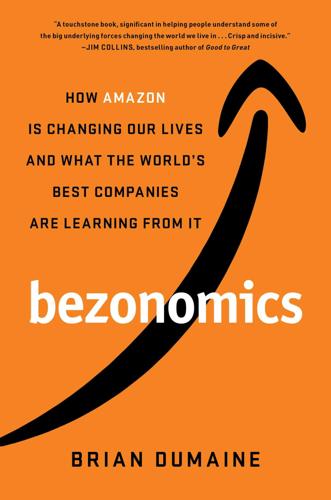
Bezonomics: How Amazon Is Changing Our Lives and What the World's Best Companies Are Learning From It
by
Brian Dumaine
Published 11 May 2020
The company he founded controlled, as of 2019, nearly 40 percent of all online retailing in the U.S. and is one of the largest e-tailers in Europe. Amazon has expanded its Prime membership program to seventeen countries, and the number of people who have signed up for the service globally has hit more than 150 million. Bezos built Amazon Web Services (AWS) into the world’s largest cloud computing company, and Prime Video into a streaming media giant nipping at the heels of Netflix, and he’s the driving force behind the Echo, a smart speaker with Alexa inside that sold nearly 50 million units in its first few years of existence. Throughout the 2010s, this profitable company grew at an average rate of 25 percent a year—an astounding performance for such a large corporation (as of 2018, it had $233 billion in annual revenues).
…
After breakfast, Ella takes the subway to her office. For her work, she searches for Bluetooth keyboards; no surprise, Amazon has the best selection. She clicks twice and knows they’ll be at her desk the next or maybe even the same day if she really needs them fast. She backs up important company files on the cloud built by Amazon Web Services, researches small-business loans offered by Amazon Lending, then gathers her team to discuss her start-up’s next major milestone: launching a new product on the Amazon site. That evening, on her way home, she stops at a cashier-less Amazon Go store to pick up a snack, and when she leaves, sensors and cameras automatically charge her Amazon account for what she carries out.
…
Along those lines, Amazon already has a deal with Lennar, the nation’s largest homebuilder, to preinstall Alexa in all the company’s new homes. Another way that Amazon invades a new industry is to take something that it does well internally and then offer that service to others. The computer expertise that Amazon acquired while selling books online was impressive. Why not share that capability with other businesses? In 2006, Amazon Web Services was born. After a decade of building web applications, Amazon realized it had developed a core competency in operating computer infrastructure and data centers at a massive scale and that it could offer cloud services for customers at a great price. Today, AWS is the largest cloud computing company in the world by a wide margin.

Blitzscaling: The Lightning-Fast Path to Building Massively Valuable Companies
by
Reid Hoffman
and
Chris Yeh
Published 14 Apr 2018
Growing wheat is a low-margin business, as is selling goods in a store or serving food in a restaurant. One of the most amazing things about Amazon’s success is that it has been able to build a massive business based on retailing, which is generally a low-margin industry. And even Amazon now relies heavily on its high-margin SaaS business, Amazon Web Services (AWS). In 2016, AWS accounted for 150 percent of Amazon’s operating income, which means that the retail business actually lost money. Most of the valuable companies we’re focusing on in this book have gross margins of over 60, 70, or even 80 percent. In 2016, Google had a gross income of $54.6 billion on sales of $89.7 billion, for a gross margin of 61 percent.
…
Even with this strenuous effort, it took several years to “tame” the Fail Whale; it wasn’t until after Twitter made it through the 2012 US presidential election night without melting down that the company’s then–creative director Doug Bowman announced that the Great Blue Whale had been put to death. One of the main reasons for the very large increase in the growth of valuable Web companies that we’ve seen in recent years is Amazon’s cloud offering, Amazon Web Services (AWS), which has helped many such businesses navigate around infrastructure limitations. Dropbox, for example, was able to scale up its storage infrastructure much more quickly and easily because it used AWS storage, eliminating the need to build and maintain its own arrays of hard disks. AWS reflects one of the ways that Amazon has made operational scalability a competitive advantage.
…
Since then, Amazon has steadily expanded from books into many other verticals, and today very nearly lives up to Bezos’s vision of an “everything store” (though you still can’t buy automobiles on Amazon…yet). Retail is a truly gargantuan market and Amazon has captured an almost unthinkable portion of it and even made its market much bigger by launching Amazon Web Services. Now, in addition to being “the everything store,” Amazon also provides much of the Internet’s computing power, bandwidth, and storage (including for other dominant companies like Netflix). Distribution Amazon was one of the first companies to fully grasp the possibilities of the Internet as a distribution platform in creating the first successful affiliate program, Amazon Associates, which incentivizes individuals and owners of other websites to refer customers to Amazon in exchange for a share of the revenues generated.

Vassal State
by
Angus Hanton
Published 25 Mar 2024
Chavar, ‘Why you keep using Facebook, even if you hate it’, Vox [website] (11 April 2018), https://www.vox.com/videos/2018/4/11/17226430/facebook-network-effect-video-explainer. 29 Quoted in Brad Stone, The Everything Store: Jeff Bezos and the Age of Amazon (London: Transworld, 2013). 30 ‘How much is Amazon Web Services worth on a standalone basis?’, Forbes [website] (28 February 2019), https://www.forbes.com/sites/greatspeculations/2019/02/28/how-much-is-amazon-web-services-worth-on-a-standalone-basis/. 31 Ted Weschler, speaking to the German publication Manager Magazin (21 October 2016), quoted in Jacob Wolinsky, ‘Biting to the core of Apple’, ValueWalk [website] (20 August 2021), https://www.valuewalk.com/nasdaq-aapl/. 32 Ciaran Driver, Anna Grosman and Pasquale Scaramozzino, ‘Dividend policy and investor pressure’, Economic Modelling 89 (July 2020), pp. 559–76, doi: 10.1016/j.econmod.2019.11.016. 33 ‘Aviva plc: half year report 2023’ [PDF], Aviva [website] (16 August 2023), https://static.aviva.io/content/dam/aviva-corporate/documents/investors/pdfs/results/2023/aviva-plc-half-year-report-2023.pdf.
…
For the second year in a row, in 2022 Amazon paid no UK corporation tax. Instead it received a £7.7 million tax credit.6 Beneath that blunt headline, things get more complicated: Amazon operates in many sectors of the UK economy but not all of these are recorded in Britain. In the case of Amazon Web Services (AWS) the business has operated through Luxembourg, seemingly routing revenue across the world and finally to the US, where tax is finally paid and what is left feeds Amazon and its shareholders. Chief among these is Jeff Bezos and, eventually, some share of that money finds its way onto the launch pad in West Texas.
…
The major advantage to Amazon is that for these Marketplace sales it does not need to hold any stock: it has become for many UK businesses the toll bridge which they must cross. Jeff Bezos’s vision that his platform should become the ‘everything store’ offering limitless selection and seductive convenience at disruptively low prices is now entrenched as the dominant force in UK retail commerce. Amazon Web Services (AWS) began as an attempt by Amazon to control its own web hosting, creating a system that could handle the growing data storage and traffic to its site. By 2002, Jeff Bezos had dispatched a team of data scientists to South Africa to develop a product for others to use, now known as ‘the cloud’.
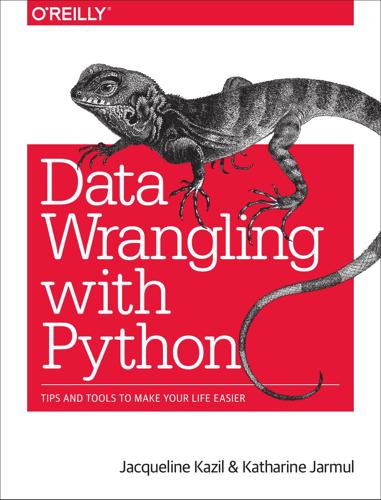
Data Wrangling With Python: Tips and Tools to Make Your Life Easier
by
Jacqueline Kazil
Published 4 Feb 2016
Advanced Python Setup. . . . . . . . . . . . . . . . . . . . . . . . . . . . . . . . . . . . . . . . . . . . . . . . . . . . 439 E. Python Gotchas. . . . . . . . . . . . . . . . . . . . . . . . . . . . . . . . . . . . . . . . . . . . . . . . . . . . . . . . . . . . 453 F. IPython Hints. . . . . . . . . . . . . . . . . . . . . . . . . . . . . . . . . . . . . . . . . . . . . . . . . . . . . . . . . . . . . 465 G. Using Amazon Web Services. . . . . . . . . . . . . . . . . . . . . . . . . . . . . . . . . . . . . . . . . . . . . . . . . 469 Index. . . . . . . . . . . . . . . . . . . . . . . . . . . . . . . . . . . . . . . . . . . . . . . . . . . . . . . . . . . . . . . . . . . . . . . 473 x | Table of Contents Preface Welcome to Data Wrangling with Python!
…
Shared Jupyter notebooks Now that you are familiar with using Jupyter notebooks, you can set one up to share your code with others using a shared server. This will allow others to access your notebook on the normal Internet (not just localhost, like the notebook run from your terminal). There are some great tutorials available on how to set up a notebook server using DigitalOcean, Heroku, Amazon Web Services, Google DataLab, or whatever server you’d like. Remember to use secure passwords with your notebook server to ensure your notebooks are being used only by those with the pass‐ word. This will keep your server and data safe. We recommend setting up a version control system like Git (explored in more depth in Chapter 14) for your Jupyter notebooks as well, so you can have a history of your notebooks on a daily or weekly basis.
…
Aside from these fairly simple and straightforward ways to parse your data and to give your script extra pieces of information, you can use more sophisticated and dis‐ tributed approaches like cloud data and databasing. We’ll look at these next. Using the Cloud for Data Processing The cloud is a term used to refer to a shared pool of resources, such as servers. There are many companies that offer cloud services—Amazon Web Services, more com‐ monly referred to as AWS, is one of the best known. The term cloud is often overused. If you are running your code on a cloud-based server, it is better to say “I am running it on a server” rather than “I am running it in the cloud.” When is a good time to use the cloud? The cloud is a good way to process data if the data is too large to process on your own computer or the procedure takes too long.

Amazon Unbound: Jeff Bezos and the Invention of a Global Empire
by
Brad Stone
Published 10 May 2021
With another like-minded deputy, Andy Jassy, Bezos also expanded in an even more surprising direction. Contemplating the way his own engineers worked, and the expertise the company had developed in building a stable computing infrastructure that could withstand enormous seasonal spikes in traffic, he conceived of a new business called Amazon Web Services. The idea was that Amazon would sell raw computing power to other organizations, who could access it online and use it to economically run their own operations. The business plan was barely understandable to many of Amazon’s own employees and board members. But the forty-year-old Bezos believed in it, micromanaging the project and sending extraordinarily detailed recommendations and goals to AWS team leaders, often late at night.
…
His bet there was a renewal of Amazon’s manifest destiny—to sell not only everything, but everywhere. Bezos had missed an earlier opportunity to invest in India. In 2004, Amazon opened one of its first overseas software development centers in Bangalore, in a small office above an auto dealership. Employees working on its floundering search engine, A9, and its nascent cloud business, Amazon Web Services, repeatedly pitched plans to start a local online store. But as Amazon recovered from the dot-com bust and concentrated its energies on launching in China, India was practically an afterthought. As a result, some of Amazon’s early employees in India quit to start their own firms. In 2007, two engineers, Sachin Bansal and Binny Bansal—unrelated friends and former classmates at the Indian Institute of Technology (IIT) in New Delhi—left Amazon to start their own company, Flipkart, to try to replicate Bezos’s original magic of selling books online.
…
As we have seen, Bezos avidly pursued that goal by plunging billions into projects like Alexa, the Fire Phone, and the Go store, as well as future dominance in India and Mexico and other secret initiatives never known to the public. None of those bets had yet borne fruit. But in 2015, an earlier wager finally started to pay off. In its April earnings report, Amazon revealed for the first time the financial health of its ten-year-old cloud business, Amazon Web Services, and shocked Wall Street with its underlying sales growth and profitability. Then in June, Amazon copied a competitor in China and introduced the first Prime Day, capitalizing on a decade of growth from its two-day shipping program. Both Wall Street and the media began to show a newfound interest in Amazon, and shortly after the twentieth anniversary of its launch, the company came under a new kind of scrutiny commensurate with its growing size.

Internet for the People: The Fight for Our Digital Future
by
Ben Tarnoff
Published 13 Jun 2022
For more on the origins of AWS, see former Amazonian Steve Yegge’s (since removed) rant on Google+, available at gist.github.com/chitchcock/1281611; Jeff Barr, “My First 12 Years at Amazon.com,” August 19, 2014; Andy Jassy’s review of Stone’s The Everything Store on Amazon.com; Benjamin Black, “EC2 Origins,” January 25, 2009; Jack Clark, “How Amazon Exposed Its Guts: The History of AWS’s EC2,” ZDNet, June 7, 2012; Bharath Kumar Gowru et al., “Cloud Computing Using Amazon Web Services,” International Journal for Modern Trends in Science and Technology 3, no 1 (February 2017): 55; Brandon Butler, “The Myth about How Amazon’s Web Service Started Just Won’t Die,” NetworkWorld, March 2, 2015. “Let’s make it …”: Jeff Bezos, interview by Om Malik at the D6 Conference in Carlsbad, California, in May 2008, quoted by Nicholas Carr, “Understanding Amazon Web Services,” Rough Type (blog), May 31, 2008. Not the only ones feeling the pain: Furrier, “Exclusive: The Story of AWS and Andy Jassy’s Trillion Dollar Baby.” 106, The team in Cape Town … Barefoot juggling: Marcin Kowalski’s remarks in “Amazon EC2—10 Year Anniversary Celebration,” YouTube, starts around 2:14.
…
After a year and a half of development in Cape Town, EC2 launched in 2006. Following the same playbook as the e-commerce division, prices were kept low to drive growth: renting a fairly robust virtual server for an hour cost ten cents. Along with Simple Storage Service (S3), an online storage system released that same year, EC2 would be the flagship offering of Amazon Web Services (AWS). AWS created, and still dominates, the market for cloud infrastructure services. Its arrival was well timed. The post-dot-com period, as Google demonstrated, would be about amassing data and finding a way to monetize it. AWS offered a relatively affordable set of tools for manufacturing, storing, organizing, and processing this precious resource.
…
Common Sense Social media is only one genre of online mall. To abolish the rest, more imagination is needed. Nick Srnicek imagines a publicly owned cloud service that “ensures privacy, security, energy efficiency and equal access for all.” Such a service might be carved out of a corporate provider like Amazon Web Services, which could be required to donate a portion of its capacity. Picture a “public lane” for the cloud, serving the digital infrastructure needs of a growing deprivatized sector. This sector would include a variety of cooperative ventures, not just in social media but across all realms of online life.

Fulfillment: Winning and Losing in One-Click America
by
Alec MacGillis
Published 16 Mar 2021
Why not build an infrastructure platform that would make Amazon’s own software development more efficient and also offer it to other companies? Those companies could design applications to run on the infrastructure—everything from computing to payments to messaging—and thus be spared the cost and hassle of building their own infrastructure and running their own servers and data centers. The company created Amazon Web Services, its cloud-computing branch, in 2003, and began offering its first data storage service in 2006. By 2017, AWS was providing cloud services to, among others, GE, Capital One, News Corp, Verizon, Airbnb, Slack, Coca-Cola, and even direct rivals like Apple and Netflix, while bringing in more than $17 billion in revenue for the year—a tenth of Amazon’s total.
…
“It would be my pleasure,” said Alexa, her recently upgraded voice—redesigned to be more humanoid and less robotic, and unveiled in a Super Bowl commercial—booming through the hugely capacious hall of the Washington Convention Center. “Please welcome to the stage vice president of Worldwide Public Sector, Amazon Web Services: Teresa Carlson.” It was the ninth annual AWS Public Sector Summit, an event that had begun with a crowd of 50 in a Marriott across the river in Arlington, and now, in the spring of 2018, drew some 14,000 to the convention center in D.C. The summit’s steroidal expansion was visual affirmation of Amazon’s triumph in the cloud: by year’s end, its cloud infrastructure would bring in $15.5 billion, nearly as much as all its industry rivals combined.
…
” * * * Three months later, the guests were starting to tuck into their salads in the Washington Hilton ballroom as the big Economic Club of Washington banquet for Jeff Bezos got underway. While they ate, the club president, David Rubenstein, ticked off the dinner’s sponsors, among them Boeing, JPMorgan Chase, and Amazon Web Services. “Everyone in this room by definition is a distinguished person,” said Rubenstein to appreciative laughter, but he would, he said, take the time to mention some of the most distinguished of all. He recognized all seventeen ambassadors in attendance: “Singapore … Indonesia … South Africa … United Kingdom … Australia … Ireland…” He recognized the postmaster general, and the head of the General Services Administration, and Maryland governor Larry Hogan, and Stephen Moret, who was overseeing Northern Virginia’s bid for Amazon’s second headquarters, and Washington mayor Muriel Bowser, and three former mayors also in attendance, and the chairman of the Washington Metro subway system.
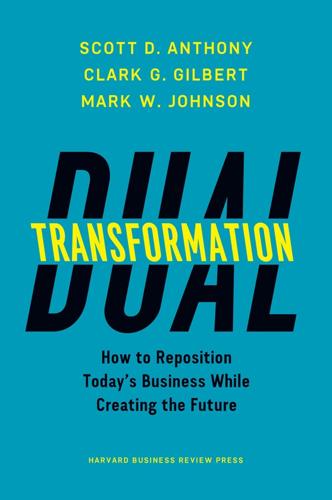
Dual Transformation: How to Reposition Today's Business While Creating the Future
by
Scott D. Anthony
and
Mark W. Johnson
Published 27 Mar 2017
Many of these, such as Amazon Prime (free shipping for members) and customer reviews, fit within the rubric of transformation A, part of Amazon’s continual transformation from a retailer of books to achieve its vision of the world’s most customer-centered retailer. Other innovations push Amazon in new, disruptive directions. Perhaps the company’s most notable transformation B effort is the creation of Amazon Web Services (AWS), which has become the leading provider of cloud computing services. Imagine going back to 2005, when Amazon commissioned the work that ultimately spawned AWS, and predicting that a decade later the company would be the dominant market leader. People would have laughed. AWS began as an effort led by programmer John Dalzell to accelerate internal IT projects.
…
Accelerate Capability Development via Acquisitions and External Hires Generally, a company pursuing transformation B needs to assess the new competitors it will encounter. If your competitive set isn’t changing, after all, it suggests you aren’t stretching far enough. For example, in its core retailing business, Amazon competes against other retailers, such as Walmart and Barnes & Noble. Its Amazon Web Services business has a completely different set of competitors, such as Infosys, Accenture, Microsoft, and IBM. It’s easy to discount the challenges of moving into new markets with a different set of competitors, particularly in a disruptive circumstance, when many of the competitors will be fast-moving entrants.
…
Singapore Postal Services Statistics: Infocomm Development Authority of Singapore, http://www.ida.gov.sg/Policies-and-Regulations/Industry-and-Licensees/Standards-and-Quality-of-Service/Quality-of-Service/Postal-Services, accessed July 2, 2016. Simon Israel’s commitment to transformation and transparency: Speech at the 24th SingPost Annual General meeting, July 14, 2016, http://infopub.sgx.com/FileOpen/Chairman%20Speech.ashx?App=Announcement&FileID=412793. Creation of Amazon Web Services: Charles O’Reilly and Michael Tushman, Lead and Disrupt: How to Solve the Innovator’s Dilemma (Stanford, CA: Stanford University Press, 2016); Brad Stone, The Everything Store: Jeff Bezos and the Age of Amazon (New York: Little, Brown and Company, 2013). AWS market share: “AWS, Google, Microsoft and IBM pull away from pack in race for cloud market share,” Business Cloud News, April, 29, 2016, www.businesscloudnews.com/2016/04/29/aws-google-microsoft-and-ibm-pull-away-from-pack-in-race-for-cloud-market-share/.
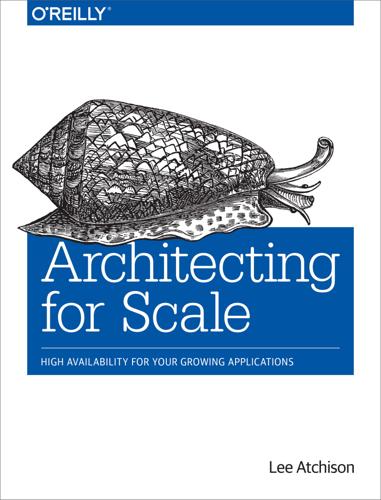
Architecting For Scale
by
Lee Atchison
Published 25 Jul 2016
If you struggle with managing technical debt and associated application failures, this book will provide guidance in reducing that technical debt to make your application able to handle larger scale more easily. Why I Wrote This Book After spending many years at Amazon building highly scaled applications in both the retail and the Amazon Web Services (AWS) worlds, I moved to New Relic, which was in the midst of hyper growth. The company felt the pain of needing the systems and processes required to manage highly scaled applications, but hadn’t yet fully developed the processes and disciplines to scale its application. At New Relic, I saw firsthand the struggles of a company going through the process of trying to scale, and realized that there were many other companies experiencing the same struggles every day.
…
However, one time in late summer it dropped below our 80% SLA for a short period of time (we say we failed our SLA). Note In certain industries, businesses have contractual agreements with customers that require them to meet established SLAs, perhaps with financial or other consequences for failing to meet them. Amazon Web Services, for example, has SLAs with its customers, and in some cases provides financial compensation if they fail to meet those SLAs. For example, with Amazon EC2 instances, if AWS’s monthly uptime percentage falls below 99.95%, it gives a service credit of 10% to affected customers. If it falls below 99.0%, AWS gives a service credit of 30%.
…
Amazon Elastic Load Balancer (ELB), Changing Allocations Amazon Kinesis, Internet of Things Data Intake Amazon S3, Managed Resource (Non-server-based)Lambda and, Event Processing limits of, The “Magic” of Usage-Based Resource Allocation usage-based allocation, The “Magic” of Usage-Based Resource Allocation Amazon Web Services (see AWS) API contracts, The Ownership Benefit API Gateway, Mobile Backend application availability (see availability) applicationsbuilding with failure in mind, Focus #1: Build with Failure in Mind building with scaling in mind, Focus #2: Always Think About Scaling distributing across the cloud, Distributing the Cloud-Maintaining Location Diversity for Availability Reasons effects of growth, Preface guidelines for separating into services, What Should Be a Service?
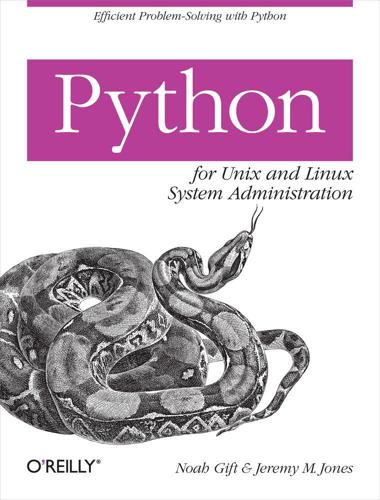
Python for Unix and Linux System Administration
by
Noah Gift
and
Jeremy M. Jones
Published 29 Jun 2009
Bayer, Michael, SQLAlchemy ORM Bicking, Ian, virtualenv blocks of code, editing, Magic Edit bookmark command, bookmark bookmarks, cd navigating to bookmarked directories, cd bootstrapped virtual environment, custom, Creating a Custom Bootstrapped Virtual Environment Boto (Amazon Web services), Amazon Web Services with Boto Buildout tool, Buildout, Developing with Buildout, Developing with Buildout developing with, Developing with Buildout bzip2 compression, Using tarfile Module to Create TAR Archives C callbacks, Callbacks, Callbacks capitalization, Built-in methods for str data extraction (see case) case (capitalization), Built-in methods for str data extraction converting for entire string, Built-in methods for str data extraction cd command, cd, cd, cd, dhist -<TAB> option, dhist -b option, cd charts, creating, Graphical Images checksum comparisons, MD5 Checksum Comparisons, MD5 Checksum Comparisons choices usage pattern (optparse), Choices Usage Pattern close( ) function (socket module), socket close() method, Creating files close() method (shelve), shelve cloud computing, Cloud Computing, Building a sample Google App Engine application, Amazon Web Services with Boto, Google App Engine, Building a sample Google App Engine application Amazon Web services with Boto, Amazon Web Services with Boto cmp() function (filecmp module), Using the filecmp Module combining strings, Built-in methods for str data extraction command history, History command line, Introduction, Summary, Basic Standard Input Usage, Basic Standard Input Usage, Introduction to Optparse, Option with Multiple Arguments Usage Pattern, Unix Mashups: Integrating Shell Commands into Python Command-Line Tools, Hybrid Kudzu Design Pattern: Wrapping a Unix Tool in Python to Spawn Processes, Integrating Configuration Files, Integrating Configuration Files basic standard input usage, Basic Standard Input Usage, Basic Standard Input Usage integrating configuration files, Integrating Configuration Files, Integrating Configuration Files integrating shell commands, Unix Mashups: Integrating Shell Commands into Python Command-Line Tools, Hybrid Kudzu Design Pattern: Wrapping a Unix Tool in Python to Spawn Processes optparse, Introduction to Optparse, Option with Multiple Arguments Usage Pattern community of Python users, Why Python?
…
to obtain object information, pinfo ' (quotation mark, single), Creating strings creating strings with, Creating strings " (quotation marks, double), Creating strings creating strings with, Creating strings _ (underscore), rehash, psearch, psearch, History results, History results for results history, History results, History results __ (in variable names), rehash __ object, psearch ___ object, psearch “magic” functions, alias (see also specific function) A Active Directory, using with Python, Using LDAP with OpenLDAP, Active Directory, and More with Python, Importing an LDIF File active version of package, changing, Change Active Version of Package alias function, alias, alias, alias alias table, rehash, rehashx Amazon Web services (Boto), Amazon Web Services with Boto Apache config file, hacking (example), Apache Config File Hacking, Apache Config File Hacking Apache log reporting, Apache Log Reporting, Apache Log Reporting Apache Log Viewer, building (example), Building an Apache Log Viewer Using PyGTK, Building an Apache Log Viewer Using PyGTK, Building an Apache Log Viewer Using Curses, Building an Apache Log Viewer Using Curses, Apache Log Viewer Application, Apache Log Viewer Application with curses library, Building an Apache Log Viewer Using Curses, Building an Apache Log Viewer Using Curses with Django, Apache Log Viewer Application, Apache Log Viewer Application with PyGTK, Building an Apache Log Viewer Using PyGTK, Building an Apache Log Viewer Using PyGTK Apache logfile, parsing (example), Log Parsing, Log Parsing appscript project, OS X Scripting APIs archiving data, Archiving, Compressing, Imaging, and Restoring, Using a tarfile Module to Examine the Contents of TAR Files, Using a tarfile Module to Examine the Contents of TAR Files, Using a tarfile Module to Examine the Contents of TAR Files examining TAR file contents, Using a tarfile Module to Examine the Contents of TAR Files, Using a tarfile Module to Examine the Contents of TAR Files ARP protocol, Creating Hybrid SNMP Tools asr utility, Automatically Re-Imaging Machines attachments (email), sending, Sending attachments with Python attrib attribute (Element object), ElementTree authentication, Authenticating to a Password Protected Site when installing eggs, Authenticating to a Password Protected Site authentication (SMTP), Using SMTP authentication automated information gathering, Automated Information Gathering, Receiving Email, Receiving Email, Receiving Email receiving email, Receiving Email, Receiving Email automatically re-imaging routines, Automatically Re-Imaging Machines automation, with IPython shell, Automation and Shortcuts, rep B background threading, IPython and Net-SNMP backslash (\), Creating strings escape sequences, list of, Creating strings backups, Introduction, Using a tarfile Module to Examine the Contents of TAR Files, Using a tarfile Module to Examine the Contents of TAR Files examining TAR file contents, Using a tarfile Module to Examine the Contents of TAR Files, Using a tarfile Module to Examine the Contents of TAR Files bar charts, creating, Graphical Images Bash, Python versus, Why Python?
…
Bayer, Michael, SQLAlchemy ORM Bicking, Ian, virtualenv blocks of code, editing, Magic Edit bookmark command, bookmark bookmarks, cd navigating to bookmarked directories, cd bootstrapped virtual environment, custom, Creating a Custom Bootstrapped Virtual Environment Boto (Amazon Web services), Amazon Web Services with Boto Buildout tool, Buildout, Developing with Buildout, Developing with Buildout developing with, Developing with Buildout bzip2 compression, Using tarfile Module to Create TAR Archives C callbacks, Callbacks, Callbacks capitalization, Built-in methods for str data extraction (see case) case (capitalization), Built-in methods for str data extraction converting for entire string, Built-in methods for str data extraction cd command, cd, cd, cd, dhist -<TAB> option, dhist -b option, cd charts, creating, Graphical Images checksum comparisons, MD5 Checksum Comparisons, MD5 Checksum Comparisons choices usage pattern (optparse), Choices Usage Pattern close( ) function (socket module), socket close() method, Creating files close() method (shelve), shelve cloud computing, Cloud Computing, Building a sample Google App Engine application, Amazon Web Services with Boto, Google App Engine, Building a sample Google App Engine application Amazon Web services with Boto, Amazon Web Services with Boto cmp() function (filecmp module), Using the filecmp Module combining strings, Built-in methods for str data extraction command history, History command line, Introduction, Summary, Basic Standard Input Usage, Basic Standard Input Usage, Introduction to Optparse, Option with Multiple Arguments Usage Pattern, Unix Mashups: Integrating Shell Commands into Python Command-Line Tools, Hybrid Kudzu Design Pattern: Wrapping a Unix Tool in Python to Spawn Processes, Integrating Configuration Files, Integrating Configuration Files basic standard input usage, Basic Standard Input Usage, Basic Standard Input Usage integrating configuration files, Integrating Configuration Files, Integrating Configuration Files integrating shell commands, Unix Mashups: Integrating Shell Commands into Python Command-Line Tools, Hybrid Kudzu Design Pattern: Wrapping a Unix Tool in Python to Spawn Processes optparse, Introduction to Optparse, Option with Multiple Arguments Usage Pattern community of Python users, Why Python?

Designing Web APIs: Building APIs That Developers Love
by
Brenda Jin
,
Saurabh Sahni
and
Amir Shevat
Published 28 Aug 2018
Network I/O Network bottlenecks in modern applications are frequently caused by dependencies on external services requiring API calls across data centers. CPU Inefficient code performing expensive computations is one of the common causes of CPU bottlenecks. Memory Memory bottlenecks typically occur when systems do not have sufficient RAM. Most of the cloud hosting providers offer solutions to measure these bottlenecks. If you’re on Amazon Web Services (AWS), you can use Amazon CloudWatch. Heroku has New Relic. And on Google, you can use Stackdriver to access metrics and get insights into health, performance, and availability. To pinpoint specific bottlenecks, you can monitor the categories we just listed, homing in on your most frequently called API methods.
…
Building a Developer Strategy | 149 Attribute Platform of choice Preferred development language and frameworks Common use cases Preferred means of communication Market size and geographical distribution Description Windows and Linux scripting, web developers, SharePoint or Confluence. Java, .NET. Many work with Amazon Web Services (AWS; e.g., AWS Step Functions), some integrate with Slack for reporting. Some developers are exploring Node.js. Internal use cases—approval processes (time off, expenses, general), reports, and looking up clients in the customer relationship management (CRM) and ticketing systems seem like the most requested set of use cases.
…
API Implementation Checklist: ❏ Define specific developer problem to solve ❏ Write internal API specification ❏ Get internal feedback on API specification ❏ Build API ❏ Authentication ❏ Authorization ❏ Error handling ❏ Rate-limiting ❏ Pagination ❏ Monitoring and logging ❏ Write documentation ❏ Run beta test with partners on new API ❏ Gather feedback from beta partners and make changes ❏ Create communication plan to notify developers of changes ❏ Release API changes API Design Worksheets | 205 Index A additions to APIs, 131 additive-change strategy, 133 Amazon Web Services (AWS), 83 ambassador programs, 195 analytics dashboards, 56 Apache Thrift, 14 API testers, 179 APIs about, 1 attributes and traits of good APIs, 199 business case for, 3-7 APIs as a product, 6 APIs for external developers first, internal developers second, 5 APIs for internal developers first, external developers second, 4 characteristics of great APIs, 7 description language, 122-126 design paradigms, 9 designing (see designing APIs, best practices; designing APIs, practical exercise in) event-driven, 19-25 comparison of different types, 24 HTTP Streaming, 23-24 WebHooks, 19-22 WebSockets, 22-23 request–response comparison of types, 18 GraphQL, 14-18 REST, 10-13 RPC, 13-14 security (see security) uses of, 2 application names, misleading, pro‐ hibiting in OAuth, 40 application-level caching for APIs, 87 archiving a GitHub repository, HTTP request for, 12 asynchronous operations, 89 authentication, 27 choosing mechanism for MyFiles API (example), 66 authorization, 28 OAuth 2.0 as standard for, 29 Authorization header (HTTP) for Basic Authentication, 28 with OAuth tokens and scope, 34 automated testing (see testing) awareness tactics examples, 156 AWS (see Amazon Web Services) B backward compatibility, maintaining, 58, 127-128 Basic Authentication, 28 beta programs, 188-190 beta testers, 79 Botkit framework, 177 bottlenecks, finding, 82 207 breadth and depth analysis for devel‐ oper programs, 185 breadth developer programs, 192-197 bulk operation endpoints, support‐ ing, 95 business case for APIs, 3-7 business objectives, defining, 62-64 business-focused tech savvy audience, 145 C cache invalidation, 87 caching in developer SDKs, 115 using to scale thoughput, 87 change, managing, 117-142 aiming for consistency, 117-126 using automated testing, 120-126 backward compatibility, 127-128 planning for and communicating change, 128-141 additions to the API, 131 communication plan, 129 removing fields or endpoints, 132 versioning, 133-141 changelogs, 170 CI pipeline, 121 clickjacking, 40 client secret, ability to reset in OAuth, 39 cloud hosting providers, solutions for measuring bottlenecks, 83 code samples, 173 code snippets, 174 communication means, preferred, of developers, 149 communication plan for changes, 129 community contributions, 182-183 community, building, 192 computing resources, adding to scale applications, 85 consistency in an API, 50, 117-126 hallmarks of consistency, 118 using automated testing, 120-126 continuous integration (CI), 121 Conversations APIs (Slack), 13, 93 208 | Index CPU bottlenecks, 83 Create, Read, Update, and Delete operations (see CRUD operations) credit programs, 197 cross-site request forgery (CSRF), 27, 38 cross-site scripting (XSS), 27 CRUD operations, 10 HTTP verbs and REST conven‐ tions, 11 in MyFiles API (example), 67 in request–response API para‐ digms, 18 pros and cons of API paradigms for MyFiles API (example), 65 current actual numbers for developer funnel indicators, 155 cursor-based pagination, 99-101 advantages and disadvantages, 100 ID as cursor, 101 opaque strings as cursor, 101 timestamp as cursor, 101 custom HTTP headers rate-limit response headers, 110 with OAuth token and scope, 34 D dark launching rate-limiting, 109 data access patterns (new), introduc‐ ing in your API, 90 database indexes, 86 database profiling, 84 database replication, 85 database sharding, 85 date filters, 96 debugging tools, 179 DELETE method (HTTP), 10 (see also CRUD operations) depth developer programs, 187-192 design sprints, 160, 191 designing APIs, best practices, 47-59 design for great developer experi‐ ence, 48-59 making it fast and easy to get started, 48 making troubleshooting easy, 52-56 making your API extensible, 56 working toward consistency, 50 design for real-life use cases, 47-48 focusing on users, 2 designing APIs, practical exercise in, 61-79 scenario 1, 62-72 defining business objectives, 62-64 outlining key user stories, 64 selecting technology architec‐ ture, 65 writing an API specification, 68-72 scenario 2, 72-79 defining problem and impact statement, 73 getting feedback on the API spec, 77-79 selecting technology architec‐ ture, 74 writing an API specification, 74-77 developer ecosystem strategy, build‐ ing, 143-161 building a developer strategy, 147 defining your developer funnel, 152-154 funnel indicators, 154 deriving measurements, 160 developer segmentation, 147-150 common use cases and tasks, 148 examples of segmentation analysis, 149 identity, 147 market size and geographical distribution, 149 platform of choice, 148 preferred development lan‐ guage, framework, and tools, 148 preferred means of communi‐ cation, 149 proficiency, 148 developers, 144-147 business-focused tech savvy audience, 145 hackers, 145 hobbyist, 144 professional developers, 146 variations on categories men‐ tioned, 146 distilling the value proposition, 151 mapping current and future state, 155-156 outlining your tactics, 156-160 awareness tactics examples, 156 developer relations high-level quarterly plan, 159 proficiency tactics examples, 157 success tactics examples, 158 usage tactics examples, 157 developer programs, 185-198 breadth and depth analysis for, 185 breadth programs, 192-197 credit programs, 197 hackathons, 194 meetups and community, 192 online videos and streaming, 196 speaking at events and event sponsorships, 194 support, forums, and StackO‐ verflow, 196 train-the-trainer and ambassa‐ dor programs, 195 depth programs, 187-192 design sprints, 191 early access/beta program, 188 top partner program, 187 measuring, 197 developer relations, 143 Developer Relations core activities, 185 developer resources, 163-184 API documentation, 163-172 code samples and snippets, 172-175 Index | 209 community contribution, 182-183 development tools, 179 frameworks, 177 office hours, 181 rich media, 180 videos, 180 software development kits (SDKs), 175-177 webinars and online training, 182 developer SDKs (see software devel‐ opment kits) developers APIs for external developers first, internal developers second, 5 APIs for internal developers first, external developers second, 4 communicating with about API changes, 129 removal of fields or endpoints, 132 rate limits and, 110-112 trying APIs without signing up, 49 disk I/O, 83 documentation for APIs, 49, 163-172 changelog, 170 frequently asked questions, 168 Getting Started guides, 163 landing page, 169 reference documentation, 165 terms of service (ToS), 171 tutorials, 167 E early access/beta program, 188 edge caching, 87 error handling and exponential back‐ off in SDKs, 115 errors HTTP status codes in MyFiles API specification (example), 71 meaningful, 52-55 actionable errors and recom‐ mended error codes, 52 grouping errors into high-level categories, 53 210 | Index organizing into status codes, headers, and machinereadable and humanreadable codes, 54 event objects for MyFiles API techni‐ cal spec (example), 75 event-driven APIs, 19-25 comparison of different types, 24 HTTP Streaming, 23-24 pros and cons for MyFiles API (example), 74 WebHooks, 19-22 WebSockets, 22-23 events (developer), 194 Events API (Slack), 91 evolving API design, 90-97 adding new API methods, 92 best practices, 97 introducing new data access pat‐ terns, 90 new options to filter results, 95 supporting bulk endpoints, 95 explicit-version strategy, 134-138 exponential back-off, 115 extensibility of APIs, 56 F Facebook, ToS violations, 41 failures and retries (WebHooks), 20 feedback, getting on API specifica‐ tion, 77-79 fields in API responses, filtering, 96 filtering results, providing options for, 95 firewalls, WebHooks and, 21 fixed-window counter (rate-limiting), 107 Flannel (Slack), 88 forums, 196 frameworks, 177 frequently asked questions (FAQ), 168 function names, versioned, 136 G geographical distribution (develop‐ ers), 149 GET method (HTTP), 10 (see also CRUD operations) Getting Started guides, 163 GitHub, 5 addressing scalability challenges, 91 archiving a repository, HTTP request for, 12 OAuth scope headers in API response, 35 rate-limit response header, 111 rate-limiting at, 112 Gmail phishing attack on, 40 thin WebHook message payload, 45 Google Cloud Platform (GCP), 83 Google Developer Groups (GDG), 192 Google Hangouts, versioning case study, 140 GraphQL, 6, 14-18, 91 advantages over REST and RPC, 16 comparison to REST and RPC APIs, 18 Object Field deprecation, 133 pros and cons for MyFiles API (example), 66 gRPC, 14 gzip compression, using in SDKs, 114 custom rate-limit response head‐ ers X-RateLimit-Limit, 111 X-RateLimit-Remaining, 111 X-RateLimit-Reset, 111 organizing errors into, 54 specifying API versions in, 135 X-Frame-Options, 40 HTTP methods CRUD operations and REST con‐ ventions, 11 in REST APIs, 10 in REST, RPC, and GraphQL APIs, 18 in RPC-style APIs, 13 HTTP status codes description for errors in MyFiles API specification (example), 71 in REST APIs, 10 indicating redirection for moved/ moving resources, 135 organizing errors into, 54 returning for rate limits, 110 HTTP Streaming, 23-24 comparison with WebHooks and WebSockets, 24 pros and cons for MyFiles eventdriven API (example), 74 HTTPs endpoints (OAuth), 39 human-readable errors, 52 H I hackathons, 194 hackers, 145 hash-based message authentication code (HMAC), 43 Hello World exercise, 163 hobbyist developers, 144 horizontal scaling, 85 HTTP, 9 (see also request–response APIs) in RPC-style APIs, 13 HTTP headers custom OAuth headers X-Accepted-OAuth-Scopes, 35 X-OAuth-Scopes, 35 ID as cursor, 101 identity (developers), 147 iframes, rendering of authorization screen, disallowing, 40 impact statement for MyFiles API (example), 63 scenario 2, 73 indexes (database), 86 integrated development environ‐ ments (IDEs), 148 interface definition language, 122-126 interface description language (IDL), 122 interfaces, 1 Index | 211 J JavaScript object notation (JSON), 122 JSON responses in REST APIs, 11 JSON web APIs, 122-126 describing and validating requests, 125 describing and validating respon‐ ses, 123 K key indicators status report (devel‐ oper funnel), 155 key performance indicators (KPIs), connecting to developer activities, 160 L landing page for API documentation, 169 load testing, 84 logging changelog, 170 use in troubleshooting developer issues, 55 M machine-readable error codes, 52 Macys.com responsive checkout, 78 MAJOR, MINOR, and PATCH ver‐ sions, 137 managing change (see change, man‐ aging) market potential (developer funnel indicators), 155 market size, 149 measurements of developer activities, 160 measuring developer programs, 197 meetups and community, 192 memory bottlenecks, 83 methods, adding to APIs, 92 MINOR versions, 137 mocking data for interactive user testing, 78 Mutual TLS (Transport Layer Secu‐ rity), 44 212 | Index N network I/O, 83 noise (in WebHooks), 21 non-CRUD operations in REST APIs, 12 O OAuth, 28-42, 50 benefits of, 29 best practices, 38 listing and revoking authoriza‐ tions, 37 scopes, 32 Slack's move to granular OAuth scopes, 34 selection for use in MyFiles API (example), 66 token and scope validation, 34 token expiry and refresh tokens, 35 token generation, 30 objective key results (OKRs), 159 office hours, 181 offset-based pagination, 97 advantages and disadvantages, 98 opaque strings as cursor, 101 OpenAPI, 125 order filters, 96 P paginating APIs, 97-102 best practices, 102 cursor-based pagination, 99-101 advantages and disadvantages, 100 choosing cursor contents, 101 offset-based pagination, 97 advantages and disadvantages, 98 pagination support in developer SDKs, 114 partner engineers, 187 PATCH method (HTTP), 10 (see also CRUD operations) PATCH versions, 137 personally identifiable information (PII), 55 phishing attacks using misleading application names, 40 platform of choice (developers), 148 polling, 19 solving as API scaling problem in REST APIs, 90 WebHooks vs., 19 POST method (HTTP), 10 (see also CRUD operations) problem and impact statement for MyFiles API (example), 63 scenario 2, 73 professional developers, 146 proficiency (developer), 148 proficiency tactics examples, 157 profiling code, 83 programming languages, 148 implementing code snippets in, 174 PUT method (HTTP), 10 (see also CRUD operations) Q quarterly plan for developer relations, 159 R rate-limit response headers, 110 rate-limiting APIs, 102-114 best practices, 112 implementation strategies, 105-110 fixed-window counter, 107 sliding-window counter, 108 token bucket algorithm, 105 rate limits and developers, 110-112 documenting rate limits, 111 rate-limit status API, 111 rate-limiting policy, 103 Slack's rate-limiting, lessons learned from, 113 Stripe's rate-limiting strategies, 104 Read method, 10 (see also CRUD operations) read/write scopes, 32 Real-Time Messaging API, 91 reference apps, 173 reference documentation, 165 refresh tokens, 36 one-time-use, 39 remote procedure calls (RPCs), 13 (see also RPC APIs) removing endpoints or fields from APIs, 132 replay attacks, 43 request logs, providing for develop‐ ers, 55 requests adding request parameters to con‐ trol output, 131 describing and validating, 125 request parameters in version schemes, 136 request–response APIs, 9-19 comparison of different types, 18 GraphQL, 14-17 REST, 10-13 RPC, 13-14 resources (in REST APIs), 10 showing relationships between, 11 responses adding response fields, 131 describing and validating, 123-125 REST APIs, 10-13 comparison to RPC and GraphQL, 18 CRUD operations, HTTP verbs, and REST conventions, 11 general rules for, 10 non-CRUD operations, 12 payload creep, 17 polling as scaling problem, solv‐ ing, 90 pros and cons for MyFiles API (example), 66 showing relationships among resources, 11 retries (WebHooks), 20 rich media, 180-181 rich site summary (RSS) feed, adding to changelog, 170 RPC APIs, 13-14 Index | 213 comparison to REST and GraphQL, 18 general rules for, 13 HTTP request to Slack API, 13 pros and cons for MyFiles API (example), 66 Slack, Conversations APIs, 13 using protocols other than HTTP, 14 RSpec test using JSON Schema speci‐ fication, 125 S sandboxes and API testers, 179 scaling APIs, 81-116 evolving your API design, 90-97 adding new API methods, 92 best practices, 97 introducing new data access patterns, 90 providing new options to filter results, 95 supporting bulk endpoints, 95 providing developer SDKs, 114-116 caching frequently used data, 115 error handling and exponen‐ tial back-off, 115 pagination support, 114 rate-limiting support, 114 SDK best practices, 115 using gzip compression in SDKs, 114 scaling throughput, 82-90 adding computing resources, 85 best practices, 89 caching, 87 database indexes, 86 doing expensive operations asynchronously, 89 finding bottlenecks, 82 using pagination, 97-102 best practices, 102 cursor-based pagination, 99-101 offset-based pagination, 97 214 | Index using rate-limiting, 102-114 best practices, 112 implementation strategies, 105-110 rate limits and developers, 110-112 scopes (OAuth), 32 for sensitive information, 39 for use in MyFiles API (example), 66 in MyFiles API (example) scopes, operations, and resour‐ ces, 67 Slack's move to granular OAuth scopes, lessons learned from, 34 SDKs (see software development kits) search filters, 96 search operations in REST APIs, 12 security, 27-46 authentication and authorization, 27 for WebHooks, 20 OAuth, 28-42 best practices, 38 listing and revoking authoriza‐ tions, 37 scopes, 32 token and scope validation, 34 token expiry and refresh tokens, 35 token generation, 30 WebHooks, 42-45 semantic versioning specification (SemVer), 137 server-sent events (SSE), streaming data via, 24 short-lived authorization codes (OAuth), 39 short-term targets and market poten‐ tial (developer funnel indicators), 155 signatures (WebHook), 43 Slack APIs, 4 adding new API methods, 92 addressing scalability challenges with Events API, 91 API Metadata, 126 app credentials of Slack app with verification token, 42 changelog, 170 Conversations API, 132 supporting bulk operations, 95 developer segmentation for Slack, 149 early access/beta program, 189 Flannel, application-level edge cache, 87 inconsistency in, 118 long-lived tokens, 37 missing field on message pay‐ loads, 127 move to granular OAuth scopes, lessons learned from, 34 rate-limiting, lessons learned from, 113 RPC-style web API, 13 translation layer to maintain backward compatibility, 57 WebSocket-based real-time mes‐ saging API, 22 sliding-window counter (ratelimiting), 108 snippets (code), 174 software as a service (SaaS) compa‐ nies, 4 software development kits (SDKs), 50, 148, 175-177 developer SDKs, 114-116 best practices, 115 caching frequently used data, 115 error handling and exponen‐ tial back-off, 115 pagination support, 114 rate-limiting support, 114 using gzip compression, 114 maintaining, 178 SoundCloud API, value proposition, 151 speaking at developer events, 194 specification (spec), writing for an API, 68-72 MyFiles API WebHooks (exam‐ ple), 74-77 SQL databases, queries based on cur‐ sor values, 99 Stack Overflow, 196 Stackdrivers, 83 stakeholders, reviewing API specifi‐ cation with, 77 state parameter support (OAuth), 38 streaming, 196 Stripe online testing of API by develop‐ ers without signing up, 49 rate-limiting, 104 value proposition, 151 versioning case study, 139 subresources in APIs, 11 success tactics examples, 158 support for developers, 196 T task queues, 89 TCP (Transport Control Protocol), 22 technology architecture, selecting scenario 1 for MyFiles API (exam‐ ple), 65 scenario 2 for MyFiles API (exam‐ ple), 74 terms of service (ToS) violations of Facebook ToS, 41 writing, 171 testing automated, 120-126 describing and validating requests, 125 describing and validating responses, 123-125 sandboxes and API testers, 179 Thrift, 14 throughput, scaling, 82-90 adding computing resources, 85 best practices, 89 caching, 87 database indexes, 86 doing expensive operations asyn‐ chronously, 89 finding bottlenecks, 82 the Time to Hello World (TTHW), 164 Index | 215 timestamps, using as cursors, 101 TLS (Transport Layer Security), 44 token bucket algorithm (ratelimiting), 105 tokens (OAuth) and scope, validation of, 34 expiry and refresh tokens, 35 generation of, 30 Slack's long-lived tokens, 37 top partner program, 187 train-the-trainer and ambassador programs, 195 transformations between versions, 137 Transport Control Protocol (see TCP) transport patterns for MyFiles API (example), 65 troubleshooting, making easy for developers, 52-56 building tooling, 55 meaningful errors, 52-55 providing troubleshooting tools, 179 tutorials for APIs, 49, 167 Twitch, deprecation of an API, 59 Twitter, 90 cursor-based pagination, 99 U Uber developers and rate-limiting, 109 Unix timestamp as cursor, 99 Update method, 10 (see also CRUD operations) URI components, specifying versions in, 135 URIs, specification for MyFiles API (example), 70 usage tactics examples, 157 user interfaces (UIs), 88 user stories (key), outlining scenario 1 for MyFiles API (exam‐ ple), 64 scenario 2 for MyFiles API (exam‐ ple), 73 users, focusing on in API design, 2 216 | Index users.conversations API method (Slack), 94 V value proposition, distilling for your API, 151 verification tokens, 42 versioning APIs, 57, 133-141 additive-change strategy, 133 case study, Google Hangouts, 140 case study, Stripe, 139 explicit-version strategy, 134-138 policies for MAJOR and MINOR changes, 138 process management, 141 vertical scaling, 85 videos creating, 180 online videos and streaming, 196 W WebHooks, 19-22, 90 comparison with WebSockets and HTTP Streaming, 24 considerations for use in MyFiles API (example), 66 MyFiles API Webhooks Spec (example), 74-77 polling vs., 19 pros and cons for MyFiles eventdriven API (example), 74 security, 42-45 best practices, 45 Mutual Transport Layer Secu‐ rity, 44 request signing and WebHook signatures, 43 thin payloads and API retrieval, 44 verification tokens, 42 supporting, additional complexi‐ ties added by, 20 webinars and online training, 182 WebSockets, 22-23, 90 comparison with WebHooks and HTTP Streaming, 24 pros and cons for MyFiles eventdriven API (example), 74 Y YouTube API, value proposition, 151 X XML responses, REST APIs, 11 Index | 217 About the Authors Brenda Jin is an entrepreneur and software engineer.

Exponential Organizations: Why New Organizations Are Ten Times Better, Faster, and Cheaper Than Yours (And What to Do About It)
by
Salim Ismail
and
Yuri van Geest
Published 17 Oct 2014
And they have profoundly changed the way we communicate and interact with one another. One reason for that change is that the cost of distributing a product or service, particularly if can be converted almost entirely to information, has dropped almost to zero. It used to require millions of dollars in servers and software to launch a software company. Thanks to Amazon Web Services (AWS), it now costs just a tiny fraction of that amount. Similar stories can be found in every department in every industry of the modern economy. History and common sense make clear that you cannot radically transform every part of an organization—and accelerate the underlying clock of that enterprise to hyper-speed—without fundamentally changing the nature of that organization.
…
It’s hard to pin down exactly when this new organizational form emerged. Various aspects of ExOs have been around for decades, but it is only over the last few years that they have really started to matter. If we had to pick an official ExO origin date, it would be March 2006, when Amazon launched Amazon Web Services and created the low-cost “Cloud” for medium and small businesses. From that date on, the cost of running a data center moved from a fixed CAPEX (Capital Expenditure) cost to a variable cost. Today, it is almost impossible to find a single startup that doesn’t use AWS. We have even found a simple metric that helps to identify and distinguish emerging Exponential Organizations: a minimum 10x improvement in output over four to five years.
…
The information age now enables Apple and other companies to access physical assets anytime and anywhere, rather than requiring that they actually possess them. Technology enables organizations to easily share and scale assets not only locally, but also globally, and without boundaries. As we noted earlier, the launch of Amazon Web Services in March 2006 was a key inflection point in the rise of ExOs. The ability to lease on-demand computing that would scale on a variable cost basis utterly changed the IT industry. A new Silicon Valley phenomenon called TechShop is another example of this trend. In the same way that gyms use a membership model to aggregate expensive exercise machinery that few could afford to have at home, TechShop collects expensive manufacturing machinery and offers subscribers a small monthly fee ($125 to $175, depending on the location) for unlimited access to its assets.

Rule of the Robots: How Artificial Intelligence Will Transform Everything
by
Martin Ford
Published 13 Sep 2021
One analysis from the research firm Gartner, for example, projects that neuromorphic designs will largely displace GPUs as the primary hardware platform for AI by 2025.2 CLOUD COMPUTING AS THE PRIMARY INFRASTRUCTURE FOR ARTIFICIAL INTELLIGENCE Today’s cloud computing industry got its start in 2006 with the launch of Amazon Web Services, or AWS. Amazon’s strategy was to leverage its expertise in building and managing the massive data centers that powered its online shopping service by selling flexible access to computing resources hosted in similar facilities to a wide range of clients. As of 2018, Amazon Web Services operated more than one hundred data centers located in nine different countries throughout the world.3 The growth of the cloud services provided by Amazon and its competitors has been staggering.
…
In other words, women and people of color are more likely to generate an incorrect match. In 2018, the American Civil Liberties Union compared images of all 538 members of the U.S. Congress to a large dataset of booking photographs taken of people who had been arrested. The ACLU used the Rekognition system available through Amazon Web Services, which is becoming increasingly popular with police departments because it is available at a very low cost. The ACLU was able to conduct the experiment for only about $12. The system flagged twenty-eight members of Congress as arrestees whose photos were contained in the mug shot dataset. Assuming that none of the individuals who were arrested have, in fact, been elected to either the House or the Senate, these were all false positives.
…
Annie Palmer, “Judge temporarily blocks Microsoft Pentagon cloud contract after Amazon suit,” CNBC, February 13, 2020, www.cnbc.com/2020/02/13/amazon-gets-restraining-order-to-block-microsoft-work-on-pentagon-jedi.html. 11. Lauren Feiner, “DoD asks judge to let it reconsider decision to give Microsoft $10 billion contract over Amazon,” CNBC, March 13, 2020, www.cnbc.com/2020/03/13/pentagon-asks-judge-to-let-it-reconsider-its-jedi-cloud-contract-award.html. 12. “TensorFlow on AWS,” Amazon Web Services, accessed May 4, 2020, aws.amazon.com/tensorflow/. 13. Kyle Wiggers, “Intel debuts Pohoiki Springs, a powerful neuromorphic research system for AI workloads,” VentureBeat, March 18, 2020, venturebeat.com/2020/03/18/intel-debuts-pohoiki-springs-a-powerful-neuromorphic-research-system-for-ai-workloads/. 14.

Platform Revolution: How Networked Markets Are Transforming the Economy--And How to Make Them Work for You
by
Sangeet Paul Choudary
,
Marshall W. van Alstyne
and
Geoffrey G. Parker
Published 27 Mar 2016
Cecil, “Uber, Lyft, and Other Rideshare Drivers Now Have Insurance Options,” Policy Genius, https://www.policygenius.com/blog/uber-lyft-and-other-rideshare-drivers-now-have-insurance-options/, accessed June 14, 2015. 48. Huckman, Pisano, and Kind, “Amazon Web Services.” 49. Jillian D’Onfro, “Here’s a Reminder Just How Massive Amazon’s Web Services Business Is,” Business Insider, June 16, 2014, http://www .businessinsider.com/amazon-web-services-market-share-2014-6. 50. Annabelle Gawer and Michael A. Cusumano, Platform Leadership: How Intel, Microsoft, and Cisco Drive Industry Innovation (Boston: Harvard Business School Press, 2002). 51. Adapted from Gawer and Cusumano, Platform Leadership. 52.
…
Baldwin and K. B. Clark of Harvard Business School describe a well-designed platform as consisting of a stable core layer that restricts variety, sitting underneath an evolving layer that enables variety.12 Today’s best-designed platforms incorporate this structural principle. For example, Amazon Web Services (AWS), the most successful platform for providing cloud-based information storage and management, focuses on optimizing a handful of basic operations, including data storage, computation, and messaging.13 Other services, which are used by just a fraction of AWS customers, are restricted to the periphery of the platform and provided through purpose-built apps.
…
All service interfaces, without exception, must be designed from the ground up to be externalizable. That is to say, the team must plan and design to be able to expose the interface to developers in the outside world. No exceptions. 6. Anyone who doesn’t do this will be fired. 7. Thank you; have a nice day! Astute application of this principle of transparency underlies the success of Amazon Web Services (AWS), the platform’s giant cloud services company. Andrew Jassy, Amazon’s vice president of technology, had observed how different divisions of Amazon kept having to develop web service operations to store, search, and communicate data.48 Jassy urged that these varied projects should be combined into a single operation with one clear, flexible, and universally comprehensible set of protocols.

Arriving Today: From Factory to Front Door -- Why Everything Has Changed About How and What We Buy
by
Christopher Mims
Published 13 Sep 2021
Fast, cloud-based databases might seem mundane, but it’s worth noting that nothing that will happen next in this object’s journey through the warehouse would be possible were it not for the utter ubiquity of modern information technology. And the IT backbone of Amazon’s retail operation is, of course, its own industry-dominating cloud services, known as Amazon Web Services (AWS). AWS encompasses nearly 200 (and counting) cloud-based IT services, from databases and cloud computing to AI and general-purpose storage. Our cardboard box of several dozen individually packaged USB chargers is then processed by a “receiver,” a person who inspects them, scans the individual bar code on each item, confirms the items are intact and that they match their descriptions, and then drops them into yellow totes.
…
In the entire history of Amazon, there have only been four people in this role, while also being the public face of Amazon’s fulfillment and delivery operations. First there was Jimmy Wright, former vice president in charge of distribution at Walmart from 1990 to 1998, who came out of retirement for a fourteen-month stint at Amazon from 1998 to 1999. Then there was Jeff Wilke, who by the end of his time at Amazon in early 2021 was tied with Amazon Web Services chief Andy Jassy as Bezos’s most senior and trusted deputy. As of 2021, there’s Dave Clark, who is also the public face of Amazon’s fulfillment and delivery operations. In between Wilke and Clark, from 2006 until his retirement in 2013, there was Marc. While Marc was at Amazon, the company grew from $7 billion a year in revenue to $70 billion.
…
fish items out of the trash: Khadeeja Safdar, Shane Shifflett, and Denise Blostein, “You Might Be Buying Trash on Amazon—Literally,” Wall Street Journal, December 18, 2019, https://www.wsj.com/articles/you-might-be-buying-trash-on-amazonliterally-11576599910. AWS encompasses: “Cloud Products,” Amazon Web Services, https://aws.amazon.com/products. You’ve got to be crazy: Jennifer Alsever, “Robot Workers Take Over Warehouses,” CNN, November 9, 2011, https://money.cnn.com/2011/11/09/smallbusiness/kiva_robots/index.htm. pioneered by Walmart: Charles Fishman, The Wal-Mart Effect (London: Penguin Books, 2006). 16 percent of all retail sales: “Commerce Retail Sales as a Percent of Total Sales,” Federal Reserve Bank of St.

Hit Refresh: The Quest to Rediscover Microsoft's Soul and Imagine a Better Future for Everyone
by
Satya Nadella
,
Greg Shaw
and
Jill Tracie Nichols
Published 25 Sep 2017
By 2008, storm clouds were gathering over Microsoft. PC shipments, the financial lifeblood of Microsoft, had leveled off. Meanwhile sales of Apple and Google smartphones and tablets were on the rise, producing growing revenues from search and online advertising that Microsoft hadn’t matched. Meanwhile, Amazon had quietly launched Amazon Web Services (AWS), establishing itself for years to come as a leader in the lucrative, rapidly growing cloud services business. The logic behind the advent of the cloud was simple and compelling. The PC Revolution of the 1980s, led by Microsoft, Intel, Apple, and others, had made computing accessible to homes and offices around the world.
…
He wrote about Bayesian estimators, machine learning, pattern recognition, and probabilistic decision making. “The advances in data management developed by Amazon engineers have been the starting point for the architectures underneath the cloud storage and data management services offered by Amazon Web Services (AWS),” he wrote. Amazon was leading a revolution and we had not even mustered our troops. Years earlier I had left Sun Microsystems to help Microsoft capture the lead in the enterprise market, and here we were once again far behind. As a company, we’d been very publicly missing the mobile revolution, but we were not about to miss the cloud.
…
People, the human element of any enterprise, are ultimately the greatest asset, and so I set about assembling the right team, starting with Scott Guthrie, a very accomplished Microsoft engineer. He had spearheaded a number of successful company technologies focused on developers. I tapped him to lead engineering for Azure on its way to becoming Microsoft’s cloud platform—our answer to Amazon Web Services. Over time, many others from both inside and outside the company joined our effort. Jason Zander, another key leader who built .Net and Visual Studio, joined to lead the core Azure infrastructure. We recruited the highly regarded Big Data researcher Raghu Ramakrishnan from Yahoo and James Phillips who had cofounded the database company Couchbase.

The Optimist: Sam Altman, OpenAI, and the Race to Invent the Future
by
Keach Hagey
Published 19 May 2025
That summer, they were finally moving on to their first major carrier, Sprint. Deshpande, who ran the client team, was focused on signing more carriers and building features to please them. Howard busied himself amid the servers that Loopt ran its system on (these were the days before the widespread adoption of cloud platforms like Amazon Web Services), and in his spare time, Howard wrote little apps on his Mac computer that worked with the Loopt service. He was biding his time until Apple released a true SDK for the iPhone. Not long after the iPhone went on sale in late June 2007, however, enterprising developers began to “jailbreak” the devices and share the code for doing so online.
…
The iPhone wouldn’t let third-party apps run in the background, which meant Loopt’s always-on service only worked when the app was open. Loopt was charging a few dollars a month for the use of its app on most carriers, which amounted to a few million dollars of revenue, easily eaten into—if not erased—by the enormous infrastructure costs of running location services in the era before Amazon Web Services lowered the cost of servers for startups. “We had questions about whether or not the core Loopt app could ever generate revenue,” McAdoo said. Altman had proposed pivoting to a new app called Loopt Star, built on the Facebook Social graph, that would let users check in, like Foursquare, but give them discounts at businesses, like Groupon.
…
“I was really impressed and believed very much in Greg’s talents, which I felt were very complimentary to mine. I was correct about them.” Minutes later, on December 11, a blog post co-authored by Brockman and Sutskever announced the launch of OpenAI as a nonprofit research company backed by $1 billion in funding from Musk, Altman, Brockman, Jessica Livingston, Peter Thiel, Amazon Web Services, Infosys, and YC Research. The eye-popping number had been Musk’s idea. “We need to go with a much bigger number than $100 million to avoid sounding hopeless relative to what Google and Facebook are spending,” Musk wrote Brockman on November 22. “I think we should say that we are starting with a $1B funding commitment.
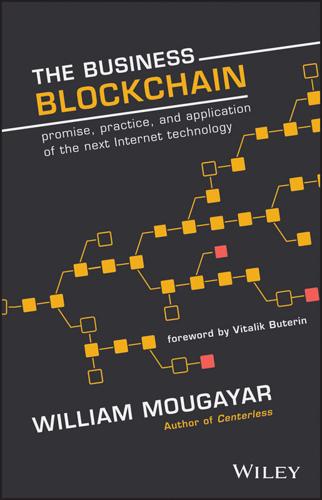
The Business Blockchain: Promise, Practice, and Application of the Next Internet Technology
by
William Mougayar
Published 25 Apr 2016
Blockchain virtual machines may be too expensive if we are to literally compare their functionality to a typical cloud service such as Amazon Web Services or DigitalOcean, but they will be be certainly useful for smart contracts that execute their logic on the blockchain’s virtual machinery, or decentralized applications, also called Dapps. As a sidenote, we could also see a future where client nodes can talk to each other directly in scenarios where blockchains are too expensive or slow. When you run an application in the cloud (for example, on Amazon Web Services or Microsoft Azure), you are billed according to a combination of time, storage, data transfer, and computing speed requirements.
…
These new areas will include banking without banks, gambling without the house’s edge, title transfers without central authorities stamping them, e-commerce without eBay, registrations without government officials overseeing them, computer storage without Dropbox, transportation services without Uber, computing without Amazon Web Services, online identities without Google, and that list will continue to grow. Take any services and add “without previous center-based authority,” and replace with “peer-to-peer, trust-based network,” and you will start to imagine the possibilities. The general characteristics of decentralization-based services include: Speed in settlements No intermediary delays Upfront identification and reputation Flat structure with no overhead Permission-less user access Trust built inside the network Resiliency against attacks No censorship No central point of failure Governance decisions by consensus Peer-to-peer communications THE CRYPTO ECONOMY What started as Bitcoin, the poster child cryptocurrency that captured our imagination, is leading to a multiplicity of blockchain-enabled businesses and implementations.
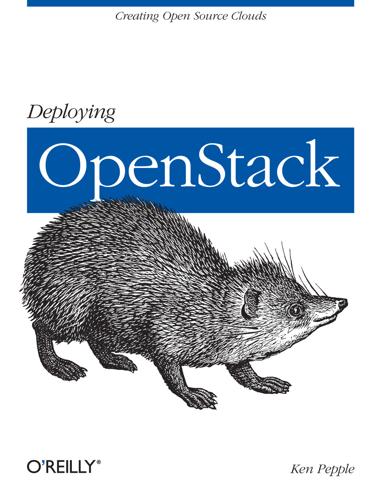
Deploying OpenStack
by
Ken Pepple
Published 26 Jul 2011
It is intended to provide the reader with a solid understanding of the OpenStack project goals, details of specific OpenStack software components, general design decisions, and detailed steps to deploy OpenStack in a few controlled scenarios. Along the way, readers would also learn common pitfalls in architecting, deploying, and implementing their cloud. Intended Audience This book assumes that the reader is familiar with public Infrastructure as a Service (IaaS) cloud offerings such as Rackspace Cloud or Amazon Web Services. In addition, it demands an understanding of Linux systems administration, such as installing servers, networking with iptables, and basic virtualization technologies. Conventions Used in This Book The following typographical conventions are used in this book: Italic Indicates new terms, URLs, email addresses, filenames, and file extensions.
…
# nova-manage db sync # To view the database scheme version, use the db version arguments: # nova-manage db version 14 Note The database version for Cactus is 14 Instance Types and Flavors Instance types (or “flavors,” as the OpenStack API calls them) are resources granted to instances in Nova. In more specific terms, this is the size of the instance (vCPUs, RAM, Storage, etc.) that will be launched. You may recognize these by the names “m1.large” or “m1.tiny” in Amazon Web Services EC2 parlance. The OpenStack API calls these “flavors” and they tend to have names like “256 MB Server.” Instance types or flavors are managed through nova-manage with the instance_types command and an appropriate subcommand. At the current time, instance type manipulation isn’t exposed through the APIs nor the adminclient.

The Big Fix: How Companies Capture Markets and Harm Canadians
by
Denise Hearn
and
Vass Bednar
Published 14 Oct 2024
When Warren Jenson, Amazon’s chief financial officer from 1999 to 2002, was asked about Amazon’s “total addressable market” (the boundaries of the company’s revenue potential), he replied: “Everybody else’s operating margin.”120 The Wall Street Journal put it this way: “If your company made money, Amazon viewed you as the competition and was coming for your business.” Everything Owned by Amazon Source: Matthew Gillman, “Everything Owned by Amazon.” SMB Compass, June 15, 2022121 Amazon now owns a staggering number of businesses, and its economies of scope are unparalleled: Amazon Health, small business lending, Amazon Web Services (AWS), home internet of things (Alexa), retail goods, consumer electronics (Kindle), logistics and fulfilment (Amazon Air), Grocery (Whole Foods, Amazon Go, Amazon Fresh), Amazon Studios, and Amazon Music, are just some of its businesses. This 2022 chart shows the many categories and brands that Amazon owns and operates.
…
The authors emphasise that market power is less a function of controlling a product market and more about controlling multiple assets at the same time and weaponising them to expand into other sectors.122 The Amazon hair salon is a small example of a dominant firm using its existing collection of assets to expand into new industries, propelling its financial flywheel. The company uses data about you and your preferences, as well as its own branded technologies and its profits from other business lines, to endlessly pursue domination in every imaginable industry. Tim Bray, a vice president and distinguished engineer at Amazon Web Services from 2014 to 2020,123 said: “It’s highly injurious to a free market when you have parties who are using fountains of profits from one area of business to invade other areas of business. So yeah, I would like to take an antitrust axe to Amazon.”124 Amazon is not alone in pursuing this ecosystem model.
…
Research from the Centre for Economic Policy Research in Europe confirms that the initial adoption of AI has been skewed in favour of larger firms that were already more productive.156 These tech giants are also “everything companies” and can cross-subsidize various business lines. The oligopoly in cloud computing across Google Cloud, Microsoft’s Azure, and Amazon Web Services has been partially acquired through the surge in digital advertising revenue that Alphabet and Amazon saw during the pandemic.157 And their high profits are now being re-deployed in the AI arms race. These integrated advantages have led to significant value-creation for today’s already monstrously large technology companies.

The Authoritarian Moment: How the Left Weaponized America's Institutions Against Dissent
by
Ben Shapiro
Published 26 Jul 2021
Then, in the aftermath of the riot, Apple’s app store removed Parler, as did the Google Play store. The excuse: supposedly, Parler users had coordinated with regard to the January 6 protests, and Parler had allowed inflammatory and threatening material to remain up. The final blow came when Amazon Web Services—a company that merely provides cloud-based web infrastructure for companies—canceled Parler altogether, taking it offline. AWS, Parler CEO John Matze wrote, “will be banning Parler until we give up free speech, institute broad and invasive policies like Twitter and Facebook and we become a surveillance platform by pursuing guilt of those who use Parler before innocence.”27 As it turned out, Facebook and Twitter had been used by Capitol protesters to coordinate as well.
…
Leftist interest groups immediately began pressuring other major banks to do the same: American Federation of Teachers president Randi Weingarten said the union would not recommend Wells Fargo’s mortgage lending program to its members because of ties to the gun industry.40 In May 2019, Chase Bank began closing bank accounts for customers deemed radical, including Enrique Tarrio of the Proud Boys and radical activist Laura Loomer. Jamie Dimon, CEO of Chase Bank, said, “Very directly, we have not and do not debank people because of their political views.”41 For now, presumably. This threat extends beyond the financial services industry. When Amazon Web Services, whose sole job is to provide cloud services, decides to deplatform Parler, that’s polarizing. When Mailchimp, an email delivery service, refuses to do business with the Northern Virginia Tea Party, that’s polarizing.42 When PayPal announces that it uses slurs from the Southern Poverty Law Center to determine which groups to ban, that’s polarizing.43 When Stripe announces it will not process funds for the Trump campaign website after January 6, that’s polarizing.44 The question here isn’t whether you like any of these groups.
…
After the January 6 riots, based on vaguely sourced reports that Parler had been an organizing place for the rioters, Apple, Amazon, and Google all barred Parler. Apple’s App Store barred Parler on the basis that Parler’s processes were “insufficient” to “prevent the spread of dangerous and illegal content.” Amazon Web Services used its power to kick Parler off the internet entirely, denying it access to its cloud hosting service. Amazon’s excuse: Parler had allowed “posts that clearly encourage and incite violence,” and that it had no “effective process to comply with the AWS terms of service.”53 None of the big tech companies could explain what, precisely, a minimum standard would have looked like.

Attack of the 50 Foot Blockchain: Bitcoin, Blockchain, Ethereum & Smart Contracts
by
David Gerard
Published 23 Jul 2017
As of March 2015, a full third of all Bitcoin exchanges up to then had been hacked, and nearly half had closed.80 Since the exchanges are largely uninsured, unregulated and not required to keep reserves, depositors’ money goes up in smoke. It’s not just scamminess on the part of the proprietors, but sheer jawdropping incompetence: Bitomat, then the third-largest exchange, were keeping the whole site’s wallet file on an Amazon Web Services EC2 server in the cloud that didn’t have separate backups and was set to “ephemeral,” i.e., it would disappear if you restarted it. Guess what happened in July 2011? Whoops.81 Bitcoinica was its sixteen-year-old creator’s first serious PHP project. He read up on PHP, Ruby on Rails, personal finance and startups, and wrote an exchange.82 It collapsed in May 2012: “No database backups … Everyone had root.”83 The exchange’s remaining funds were lost in further hacks, after the administrators turned out to be using their (leaked) Mt.
…
This is clearly superior, for a certain type of seller, to the IPO bubble of the dot-com era, in that these aren’t actually shares, and the purchasers have no influence over the funded enterprise even in theory. The ideas themselves are as bad as the worst dot-com IPOs. Digix, the first token crowdsale on the Ethereum blockchain itself, is a cryptocurrency backed by gold;309 Golem offers a “decentralized” (buzzword alert!) market in computing, like Amazon Web Services except you can only pay using their token;310 Gnosis offers semiautomatic prediction markets using their token;311 SingularDTV is a bizarre plan to fund a TV show about the Singularity in which a Caribbean island adopts Ethereum as its currency and Austrian economics works (this one gets its own section later in the book); Iconomi is an index fund of other ICOs.312 The token smart contracts are often incompetent in both intended functionality and programming ability.313 This turns out not to matter as long as they do the basic job: attract buyers and sell tokens.
…
Until he reinstalled the laptop they were on, he was the proud owner of six Dogecoins. Index 8chan 53 A company for carrying on an undertaking of great advantage, but nobody to know what it is 100 Accenture 122 address 12 AIDS Trojan 72 AllCrypt 43 Alloway, Tracy 111 AlphaBay 72 AlphaPoint 84 altcoins 91 Altoid 51 Amazon Web Services 43, 98 anarcho-capitalism 18, 49 Andresen, Gavin 65 anonymity 26, 52 AntMiner 57 Apple 127, 137 arbitrage 83, 88 artificial intelligence 103, 117, 137 ASCAP 126 Ash, Jordan 96 ASIC 56 Astrobotic 94 Atlantis 54 Augur 104 Australian Securities Exchange 121 Australian Tax Office 63 Austrian economics 23, 49, 98, 137 Automattic 75 Ayre, Calvin 63 Azure Blockchain 122 b-money 19 Back, Adam 19 Bancor 95, 97 Bandcamp 130 banking the unbanked 29 baphomet (8chan) 53 BBC 32, 66 Beanie Baby 35 Berklee Rethink 128 BFX 85 Bitcoin creation of new bitcoins 14 economic aims 22 economic equality 30 exchanges 42 invention 20 irreversibility 26 limited supply 31 Satoshi Nakamoto (creator) 59 security 25 transactions per second 28 Bitcoin Bowl 77 Bitcoin Jesus 37 Bitcoin Mining Accidents 55 Bitcoin Relay Network 58 Bitcoin Savings & Trust 40 Bitcoinica 43, 83 bitcoinmarket.com 35 Bitcointalk 40, 41 Bitfinex 40, 83 BitGo 84 Bitgold 19 Bitmain 57 Bitomat 43 BitPay 43, 74 BitShares 99 BitTorrent 130, 134 Blem Information Management 116 blockchain 13 blockchain (business) 111 Blockchain for Creative Industries 132 Blockchain or the Chaingang?

Agile Project Management With Kanban
by
Eric Brechner
Published 25 Feb 2015
Read further about your favorite advanced project-management topics in the books I listed in this chapter. Index A acceptance test-driven development (ATDD), 121–122 Agile practice Kaizen and, 110 mixing with Kanban, 120–123 Agile Project Management with Scrum (Schwaber), 57 Åhlström, Pär, 135 Amazon Web Services (AWS), 80 Anderson, David, 57, 118 Astels, Dave, 122 ATDD (acceptance test-driven development), 121–122 AWS (Amazon Web Services), 80 B backlog adapting from Waterfall, 41, 45, 50, 52, 54 checklist of actions to take, 24 evolving from Scrum, 58–61, 65–68 large organizations, 85–87 ordering work, 28–29 populating, 25–27 SE workflow, 109 troubleshooting problems, 17–23 Barry, Tanianne DeMaria, 120 BDD (behavior-driven development), 122 Beck, Kent, 121 behavior-driven development (BDD), 122 Benson, Jim, 120 Brooks, Frederick P., Jr., 34 buffer (drum-buffer-rope), 126–128 bugs, software adapting from Waterfall, 45–46, 48–51 defined, 102 evolving from Scrum, 62–65 ordering work, 28–29 sustained engineering, 109–111 troubleshooting problems, 20 business applications, scaling Kanban, 118–119 C chaos, setting limits on, 10–12 checklist of actions to take adapting from Waterfall, 56 deadline management, 37 deploying finished work, 83–84 evolving from Scrum, 70 Kanban, 24, 136 large organizations, 100 for management consent, 5 sustained engineering, 115–116 Chelimsky, David, 122 completed tasks measurement adapting from Waterfall, 48–51 evolving from Scrum, 62–65 conference presentations, 21 constraints defined, 11 elevating, 125 theory of constraints, 124–128 continuous delivery, 80 Continuous Delivery (Humble and Farley), 123 continuous deployment, 79–83 continuous integration, 72–75 continuous publishing, 77–79 continuous push, 75–77 core engineering team about, 102–103 ownership, 104–105 roles and responsibilities, 104 troubleshooting problems, 112–113 Cox, Jeff, 126 Crenshaw, Dave, 124 critical chain, 129–130 CTE (current task estimate), 32–35 Cumulative Flow Diagram, 32–33 current task estimate (CTE), 32–35 customers and customer interaction adapting from Waterfall, 46–48 communicating status to, 92–93 demos for customers, 21 evolving from Scrum, 67 sustained engineering, 105–106, 111, 113 D daily standup meetings about, 14–17 adapting from Waterfall, 42–43, 52 evolving from Scrum, 61, 68 Personal Kanban and, 120 sustained engineering, 115 troubleshooting problems, 23, 115 De Bonte, Austina, 119 deadline management about, 25 checklist of actions to take, 37 establishing MVP, 27–28 estimating features and tasks, 29–31 ordering technical debt, 28–29 ordering work, 28–29 populating backlog, 25–27 right-sizing teams, 33–37 tracking expected completion date, 31–33 Xbox example, 31 defects (Lean waste category), 131 deliver work step guidelines, 8–9 troubleshooting problems, 21–23 demos for customers, 21 Dennis, Zach, 122 dependencies dealing with late or unstable, 94–98 ordering work based on, 87–90 deploying finished work about, 71 checklist of actions to take, 83–84 continuous deployment, 79–83 continuous integration, 72–75 continuous publishing, 77–79 continuous push, 75–77 Xbox examples, 74–75, 77–79, 81–82 design work adapting from Waterfall, 44–45 ordering, 28–29 troubleshooting problems, 21, 23 DevOps practice, 122–123 distributed version control, 73, 75–77 distribution lists, communicating via, 93 done rule (pull criteria) about, 12–13, 15 adapting from Waterfall, 54 best practices, 13–14 evolving from Scrum, 69 implementing, 13 specifying, 13 validating, 13 drum-buffer-rope (TOC application), 126–128 E escalations defined, 102 in SE workflow, 109 troubleshooting problems, 113 estimating features and tasks, 29–31 executive reviews, 21 expected completion date, tracking, 31–33 F Farley, David, 123 features adapting from Waterfall, 42–44 estimating, 29–31 Fletcher, Drew, 119 Fowler, Martin, 121 Freedom from Command and Control (Seddon), 135 G global optimization, 132–135 Goal, The (Goldratt, et al.), 126 Goldratt, Eliyahu M., 126 H Hellesoy, Aslak, 122 Helmkamp, Bryan, 122 high-level routine capturing, 7–8 posting steps for, 8–10 hotfix, defined, 102 Humble, Jez, 123 I implement work step in daily standup meetings, 15–16 done rule, 13 guidelines, 8–9 troubleshooting problems, 17–20 improvement, product.
…
There are frameworks, such as Microsoft Azure’s Application Insights, that can help you achieve the monitoring and instrumentation you need. Naturally, continuous deployment depends on an automated system to deploy builds. In case an issue comes up, the deployment system must also be capable of an automated rollback (switching back to a previous good build). Fortunately, modern cloud computing providers such as Amazon Web Services (AWS) and Microsoft Azure provide these automated systems. With audience control, monitoring, instrumentation, and automated deployment and rollbacks in place, you no longer need preproduction environments. Those environments are costly to build and maintain, and they rarely function quite like production environments because of differences in scale, load, networking, hardware, customer data, business data, and configuration settings.

Life After Google: The Fall of Big Data and the Rise of the Blockchain Economy
by
George Gilder
Published 16 Jul 2018
Scaled up by a distributed queue-processing system, “it allowed us to add new nodes to the pool on demand.” The flaw was that all the GPUs were controlled by Amazon Web Services, which had to be paid. Stephen Balaban was following the Google model of giving your product away and charging for “premium” subscriptions. The problem was that most of his “customers” found the free access to addictive psychedelic photo-paintings good enough. There were a hundred thousand takers for the $9.95 “premium edition,” but a million dollars wasn’t enough. Within a few months, Dreamscope pretty much died of its own success. Amazon Web Service bills mounted to forty thousand dollars a month. The company still had $150,000 in the bank, but it was running out of runway.
…
It fought back, as it normally does, with a stream of YouTube speeches and technical presentations demonstrating the superiority of Google’s cloud offerings, its global SQL reach, its facile user interfaces, its instant responses, its MapReduce, Hadoop, and “Spanner” big-database schemes, its massive fiber deployments and world-spanning data centers, its idealism, its tech conference éclat. But somehow when people had to choose a cloud service, they were turning not to Google but to Amazon Web Services. Who would have thunk it? Google, meanwhile, under its new CEO, Sundar Pichai, pivoted away from its highly publicized “mobile first” mantra, which had led to its acquisitions of Android and Ad Mob, and toward “AI first.” Google was the recognized intellectual leader of the industry, and its AI ostentation was widely acclaimed.
…
Balaban remembered appreciating that about Strachman and Gibson when he first encountered them: “Mike and Danielle recognize the emotional component of starting a company that a lot of people neglect—the emotional rollercoaster that is very draining. I observed that they were really good at making sure that everyone had support networks for when you are, in Elon Musk’s apt description, staring into the abyss and chewing on glass.” Facing the ballooning Amazon Web Services bills, Balaban went back to 1517; Danielle and Mike supplied another $150,000. That extended the runway another four or five months. Not enough. Austin Russell invested twenty thousand dollars in it (he later added another hundred thousand), and so did Gary Bradski at Magic Leap, among others.
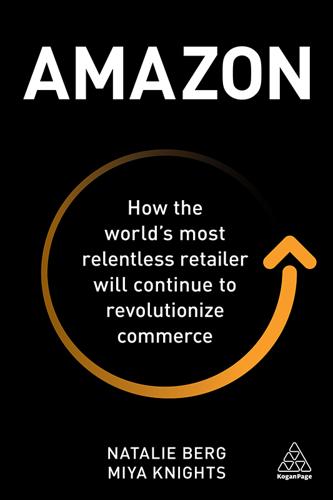
Amazon: How the World’s Most Relentless Retailer Will Continue to Revolutionize Commerce
by
Natalie Berg
and
Miya Knights
Published 28 Jan 2019
It is Amazon’s acceptance of failure as a learning experience that sets them apart from other businesses. ‘[E]very single important thing that we have done has taken a lot of risk taking, perseverance, guts, and some of them have worked out, most of them have not’, says Bezos. Let’s be clear, the ones that have worked out – for example, Prime, Amazon Web Services (AWS) and Amazon Echo – have been colossal successes for the company. The 20-year bet and importance of consistency ‘We’re going to be unprofitable for a long time. And that’s our strategy.’ Jeff Bezos, 199716 Wall Street is inherently short-termist, leaving most public companies focused on maximizing profitability and stock performance from quarter to quarter.
…
Amazon has cleverly taken Prime from a scheme that initially centred on delivery perks to an all-encompassing content-streaming, book-lending, photo-storing beast of a membership programme. The result? Higher spend, shopper frequency and retention. We’ll discuss this in greater detail in the next chapter. Amazon Web Services Amazon’s cloud storage service may not directly benefit shoppers, but it has certainly proven to be Amazon’s white knight. Operating margins are consistently in the high single digits and in 2017 the division was responsible for more than 100 per cent of Amazon’s operating profit. Remember Brad Stone’s point about feeding any part of the flywheel to accelerate it?
…
It cannot be underestimated, however, how much it helps that Amazon’s core business is founded on technology innovation. Before looking at this innovation, let’s take a step back here, as it wasn’t always this way. Going back to 2002, with necessity truly being the mother of all invention, Amazon Web Services (AWS) was first born of the need for sufficient number-crunching capacity and standardized, automated computing infrastructures on which to run its retail marketplace. Capitalizing on advances in networking, storage, compute power and virtualization, Amazon began reselling its cloud computing capabilities as services in 2006.
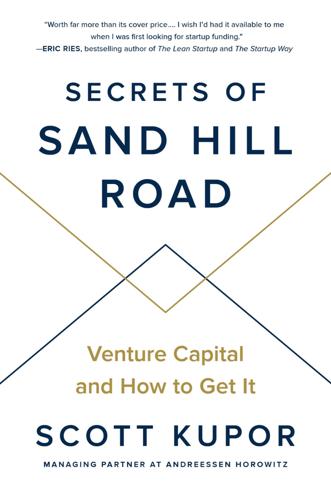
Secrets of Sand Hill Road: Venture Capital and How to Get It
by
Scott Kupor
Published 3 Jun 2019
A few years into my job, on the eve of finishing an IPO for E.piphany, one of the marketing executives I had worked with to help them prepare for the IPO told me he was leaving to join a new startup called LoudCloud. Cofounded by Marc Andreessen, the already revered cofounder of Netscape, LoudCloud was trying to create a compute utility (much like Amazon Web Services has now created). Among the other cofounders was Ben Horowitz. This was the fall of 1999, and the dot-com excitement was in full swing. I had finally opened my eyes to what was happening around me, and I wanted to be a part of it. When my friend at E.piphany offered me the chance to meet Marc Andreessen and Ben Horowitz and see what they were doing, it was too much to pass up.
…
As an engineer, you should be able to develop your custom application and then just “plug it in” to the compute utility that could run the application seamlessly for you. You shouldn’t have to worry about what kind of database, networking equipment, application servers, etc., underlie the utility; it should simply work. It was a great idea—one that Amazon Web Services has built into a multibillion-dollar business today. LoudCloud was probably about ten years ahead of its time, an oft-repeated lesson, by the way, in the startup world. Though timing isn’t everything, timing is definitely something—it’s a big reason why we now see many ideas that failed in the dot-com bubble being reincarnated as successful businesses two decades later.
…
As cloud computing began to take off, the unit costs of all these hardware and software products began to fall. A variant of Moore’s law was sweeping through every segment of the technology stack. At the same time, software development systems also progressed, and engineering efficiency increased correspondingly. Today, developers can go to Amazon Web Services or competing providers and rent compute utility on demand, providing incremental pricing coupled with dramatically lowered input costs. Thus the costs required to start a company have fallen significantly, and therefore the amount of money that startups need to raise at an early stage has declined accordingly.
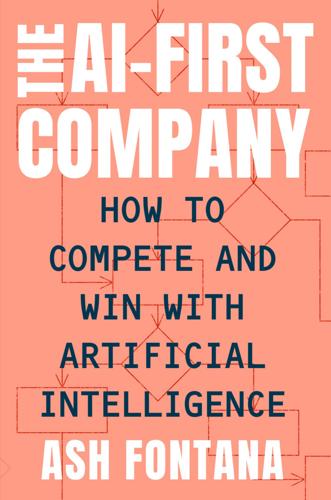
The AI-First Company
by
Ash Fontana
Published 4 May 2021
Going from bottom to top, these are the steps taken to bring it to life: financed it with internal capital; developed it using the Amazon Web Services computing and data infrastructure; collected data from early users of the product and ancillary, spoken word datasets; prepared that data internally without letting it leave the company, partly for privacy reasons; hired its own people to label snippets of voice files; built its own voice recognition models; used its own monitoring systems, again, through Amazon Web Services; monitored usage internally; built the speaker that sits in your home; distributed the speaker directly to customers with supporting setup tools (through mobile applications) to implement as they wish—such as connected to other speakers or as a stand-alone device; and got usage data to train the models and update the product over the Internet.
…
Below is a table of tools that individual contributors may use to illustrate variety, cost, and functionality: category cost examples Integrated development environment Dollars per month JupyterLab, Jupyter Notebooks, Google Colaboratory, RStudio, PyCharm, Microsoft Visual Studio, MathWorks MATLAB, and Vim/Emacs/VS Code Collaboration Hundreds of dollars per month Dataiku and Amazon SageMaker Frameworks Free Scikit-learn, Keras, XGBoost, Google TensorFlow, PyTorch, and Apache Spark MLib Cloud platform Based on usage Amazon Web Services, Google Cloud Platform, Microsoft Azure, IBM Cloud, and SAP Cloud Platform Pretrained models Free Various open-source software, Google Cloud Platform, Amazon Rekognition, and Microsoft Azure AutoML Free Google Cloud Platform AutoML, AWS Comprehend & Rekognition, Microsoft AutoML, H2O, and DataRobot Data labeling Based on usage Appen, Labelbox, and SuperAnnotate Visualization Hundreds of dollars per month Tableau, Looker, Domo, and Microsoft Excel Data preparation Based on usage Informatica, Trifacta, Alteryx, Tamr, and Paxata AI-FIRST MANAGEMENT AI-First companies might need new types of managers.
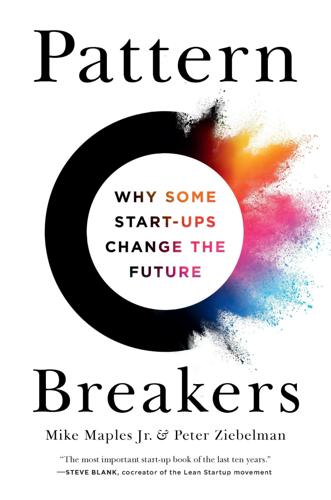
Pattern Breakers: Why Some Start-Ups Change the Future
by
Mike Maples
and
Peter Ziebelman
Published 8 Jul 2024
In mere months following OpenAI’s launch of DALL·E and ChatGPT, the world’s perception of artificial intelligence underwent a seismic shift, evolving more dramatically than it had in all the years before 2022. Occasionally, incumbents can create movements, for example when Apple introduced the iPhone or when Amazon introduced Amazon Web Services. No matter the size of the company, successful movements deliver the same outcome: they topple the old ways and impose new patterns to replace them. Just as great ideas are hard to formulate, movements are hard to initiate. The incumbent institutions that dominate the present fight hard against movements—understandably.
…
By 2004, when Mark Zuckerberg launched Facebook, the limits imposed by those constraints flipped into abundant growth drivers. Broadband became widespread, enabling online services to reach vast audiences. Open-source software, like the LAMP stack, provided free critical infrastructure. Start-ups no longer had to buy expensive and proprietary hardware, databases, and tooling. Soon, Amazon Web Services would eliminate the need for start-ups to maintain their own infrastructure; start-ups could run and update their products in the cloud, bypassing the traditional cumbersome process of upgrading individual company-managed servers. This enabled founders like Zuckerberg to continually refine products based on real-time feedback and aggressively run growth-oriented experiments.
…
These companies either capitalized on organic innovation, building something groundbreaking from square one; or they acquired other companies that were already breaking patterns; or they formed bold partnerships, joining forces with other entities to explore new frontiers. Let’s look at examples of each of these strategies. Organic Innovation Recently celebrated examples of organic innovation often focus on technology companies like Apple with the iPhone or Amazon with Amazon Web Services. These pattern-breaking examples, while compelling, seem less relevant to corporate leaders whose businesses are not technology-centric. Fortunately, enduring examples exist elsewhere. In 1943, the US War Department hired Lockheed Aircraft Corporation to secretly develop a high-speed fighter jet within 180 days.
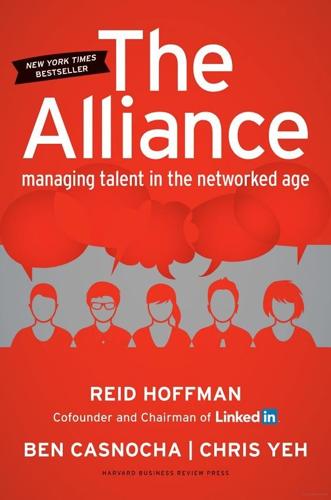
The Alliance: Managing Talent in the Networked Age
by
Reid Hoffman
,
Ben Casnocha
and
Chris Yeh
Published 15 Jan 2014
And that’s how Lasseter ended up back at Disney as its chief creative officer of Disney Animation Studios.9 Disney’s management hired an entrepreneurial talent like Lasseter, but they treated him as a commodity rather than an ally, and in the process, they lost their chance to develop a multibillion-dollar business. Lasseter would have been happy to develop that business within Disney, but his managers wouldn’t let him. Benjamin Black and Amazon Web Services Amazon didn’t make the same mistake as Disney. Recently, it used the principles of the alliance to generate a new multibillion-dollar business. Amazon has become a leader in the field of cloud computing, thanks to Amazon Web Services (AWS), which allows companies to rent online storage and computing power, rather than buying and operating their own servers. Companies ranging from Fortune 500 giants to one-person start-ups run their businesses on AWS.
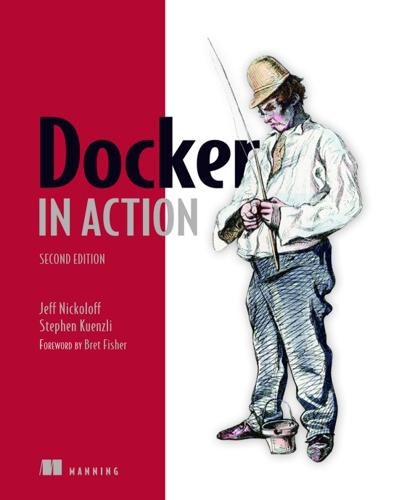
Docker in Action
by
Jeff Nickoloff
and
Stephen Kuenzli
Published 10 Dec 2019
Containers that link to this implementation will have their messages logged to /var/log/mailer.log. That’s not very interesting or useful in a real-world situation, but it might be handy for testing. An implementation that sends email would be better for operational monitoring. The next implementation example uses the Simple Email Service provided by Amazon Web Services to send email. Get started with another Dockerfile. Name this file mailer-live.df: FROM dockerinaction/mailer-base:0.6 ADD ["./live-impl", "${APPROOT}"] RUN apt-get update && \ apt-get install -y curl netcat python && \ curl "https://bootstrap.pypa.io/get-pip.py" -o "get-pip.py" && \ python get-pip.py && \ pip install awscli && \ rm get-pip.py && \ chmod a+x "${APPROOT}/${APP}" USER example:example CMD ["mailer@dockerinaction.com", "pager@dockerinaction.com"] This Dockerfile includes one new instruction, ADD.
…
You may provision a Swarm cluster however you like. Because of the wide variety of provisioning options and the rate of change, we recommend you follow an up-to-date guide to provision a Swarm cluster on your favorite infrastructure provider. Many people deploy test clusters with docker-machine on cloud providers such as DigitalOcean and Amazon Web Services. The examples in this chapter were created and tested using Play with Docker (https://labs.play-with-docker.com/). On the Play with Docker site, you can experiment with Docker and learn about it for free. The cluster was created using the Play with Docker template that provisions three manager and two worker nodes.
…
Docker running three containers on a Linux system Index [SYMBOL][A][B][C][D][E][F][G][H][I][J][K][L][M][N][O][P][Q][R][S][T][U][V][W][Y][Z] SYMBOL /counter endpoint, 2nd # (hash sign) A -a flag, 2nd abstractions access control access to devices active option ADD instruction, 2nd adminer interface adminer key, 2nd adminer service, 2nd, 3rd affinity agents, 2nd all-in-one images All-in-One pattern - -all-tags option Amazon Web Services (AWS), 2nd anti-affinity Apache Cassandra project apache2 process api service, 2nd, 3rd, 4th, 5th, 6th, 7th apk package manager AppArmor profile, 2nd app-image, 2nd app-image-debug stage application artifacts applications configurations and, separating config resource deploying applications managing config resources directly deploying to Swarm clusters cluster resource types defining application and its dependencies by using Docker services using docker stack command apt package manager, 2nd apt-get tool, 2nd apt-get update, Debian ARG instruction ARG VERSION instruction artifact confidentiality artifact integrity attachable network AUDIT_CONTROL capability auto tag automated resurrection and replication automated rollout autoscaling services availability control - -availability option AWS (Amazon Web Services), 2nd aws program AWS_ACCESS_KEY_ID AWS_DEFAULT_REGION AWS_SECRET_ACCESS_KEY B backoff strategy backoff-detector container bandwidth overhead base.version label, 2nd best practices bind mounts blind mount points block sequences (lists) block style bridge network, 2nd build command Build Plus Multiple Runtimes pattern, 2nd Build Plus Runtime pattern builder stage, 2nd BUILD_ID tag, 2nd BusyBox init C -c flag CA (certificate authority) CAIID (content-addressable image identifier) CAP drop - -cap-add flag - -cap-drop flag CAP_NET_ADMIN Cassandra client tool (CQLSH), 2nd cass-shared volume CD (continuous delivery), 2nd CentOS certificate authority (CA) CERT_PRIVATE_KEY_FILE variable CFS (Completely Fair Scheduler) cgroups Chef Inspec tool chroot system call, 2nd CI (continuous integration), 2nd CID (container ID) file - -cidfile cleanup, containers and CLI (command-line interface) CLIENT_ID environment variable Cloudflare CMD instruction, 2nd command line, working with registries from command-line interface (CLI) command property commit subcommand Completely Fair Scheduler (CFS) Compose declarative service environments with collections of YAML primer load balancing, service discovery, and networks with - -compose-file option composite key confidentiality, artifact config command Config property config.common.yml file ConfigID configs key Configuration Image per Deployment Stage pattern configurations applications and, separating config resource deploying applications managing config resources directly distribution and management secrets and container ID (CID) file container networking custom DNS configuration externalizing network management firewalls, lack of network policies, lack of NodePort publishing Container Structure Test (CST) tool ContainerConfig.OnBuild containers, 2nd, 3rd, 4th building environment-agnostic system environment variable injection read-only filesystems building images from committing new images configuring image attributes packaging “Hello, World” preparing packaging for Git reviewing filesystem changes cleanup and conflicts between, eliminating container state and dependencies flexible container identification creating and starting durable automatically restarting containers using PID, 2nd filesystem abstraction and isolation for isolation interactive, running listing, stopping, restarting, and viewing output of PID namespace and shipping containers virtualization different than content-addressable image identifier (CAIID) context context switch continuous delivery (CD), 2nd continuous deployment continuous integration (CI), 2nd COPY instruction, 2nd, 3rd copy-on-write pattern, 2nd corporate storage networks cost, of distribution CPU resources cpus option - -cpuset-cpus flag - -cpu-shares flag - -cpu-shares value CQLSH (Cassandra client tool), 2nd create command CST (Container Structure Test) tool curl command, 2nd current state custom DNS configuration custom image distribution infrastructure D DAB (Distributed Application Bundle) DAEMON Tools daemons databases db-data volume Debian Debian Linux Buster Debian Stretch base image debian:buster-slim debian:stretch platform declarative service environments with Compose collections of services YAML primer default stage depends_on key deploy command deploy key deploy property DEPLOY_ENV variable, 2nd desired state - -detach (-d) flag detached containers dev tag - -device flag devices, access to diaweb container diff command diff subcommand, 2nd DigitalOcean Distributed Application Bundle (DAB) distribution image source-distribution workflows manual image publishing and method of, choosing image distribution spectrum selection criteria private registries consuming images from registry performance of registry image, using publishing with hosted registries private hosted repositories public repositories Distribution registry - -dns flag DNS service, Cloudflare - -dns-search flag Docker containers and “Hello World” example importance of in larger ecosystem overview of problems solved by getting organized improving portability protecting computer use of, when and where.

Python Data Analytics: With Pandas, NumPy, and Matplotlib
by
Fabio Nelli
Published 27 Sep 2018
Google Trends http://www.google.com/trends/explore Statistics on search volume (as a proportion of total search) for any given term, since 2004. Likebutton http://likebutton.com/ Mines Facebook’s public data—globally and from your own network—to give an overview of what people “Like” at the moment. Miscellaneous and Public Data Sets Amazon Web Services public datasets http://aws.amazon.com/datasets The public data sets on Amazon Web Services provide a centralized repository of public data sets. An interesting dataset is the 1000 Genome Project, an attempt to build the most comprehensive database of human genetic information. Also a NASA database of satellite imagery of Earth is available.
…
You can find a more complete list and details of the open data available online in Appendix B.DataHub ( http://datahub.io/dataset ) World Health Organization ( http://www.who.int/research/en/ ) Data.gov ( http://data.gov ) European Union Open Data Portal ( http://open-data.europa.eu/en/data/ ) Amazon Web Service public datasets ( http://aws.amazon.com/datasets ) Facebook Graph ( http://developers.facebook.com/docs/graph-api ) Healthdata.gov ( http://www.healthdata.gov ) Google Trends ( http://www.google.com/trends/explore ) Google Finance ( https://www.google.com/finance ) Google Books Ngrams ( http://storage.googleapis.com/books/ngrams/books/datasetsv2.html ) Machine Learning Repository ( http://archive.ics.uci.edu/ml/ ) As an idea of open data sources available online, you can look at the LOD cloud diagram ( http://lod-cloud.net ), which displays the connections of the data link among several open data sources currently available on the network (see Figure 1-3).
…
Google Books Ngrams http://storage.googleapis.com/books/ngrams/books/datasetsv2.html This source searches and analyzes the full text of any of the millions of books digitized as part of the Google Books project. Musical Data Million Song Data Set http://aws.amazon.com/datasets/6468931156960467 Metadata on over a million songs and pieces of music. Part of Amazon Web Services. Index A Accents, LaTeX Advanced Data aggregation apply() functions transform() function Anaconda Anderson Iris Dataset, see Iris flower dataset Array manipulation joining arrays column_stack() and row_stack() hstack() function vstack() function splitting arrays hsplit() function split() function vsplit() function Artificial intelligence schematization of Artificial neural networks biological networks edges hidden layer input and output layer multi layer perceptron nodes schematization of SLP ( see Single layer perceptron (SLP)) weight B Bar chart 3D error bars horizontal matplotlib multiserial multiseries stacked bar pandas DataFrame representations stacked bar charts x-axis xticks() function Bayesian methods Big Data Bigrams Biological neural networks Blending operation C Caffe2 Chart typology Choropleth maps D3 library geographical representations HTML() function jinja2 JSON and TSV JSON TopoJSON require.config() results US population data source census.gov file TSV, codes HTML() function jinja2.Template pop2014_by_county dataframe population.csv render() function SUMLEV values Classification and regression trees Classification models Climatic data Clustered bar chart IPython Notebook jinja2 render() function Clustering models Collocations Computer vision Concatenation arrays combining concat() function dataframe keys option pivoting hierarchical indexing long to wide format stack() function unstack() function removing Correlation Covariance Cross-validation Cython D Data aggregation apply() functions GroupBy groupby() function operations output of SPLIT-APPLY-COMBINE hierarchical grouping merge() numeric and string values price1 column transform() function Data analysis charts data visualization definition deployment phase information knowledge knowledge domains computer science disciplines fields of application machine learning and artificial intelligence mathematics and statistics problems of open data predictive model process data sources deployment exploration/visualization extraction model validation planning phase predictive modeling preparation problem definition stages purpose of Python and quantitative and qualitative types categorical data numerical data DataFrame pandas definition nested dict operations structure transposition structure Data manipulation aggregation ( see Data aggregation) concatenation discretization and binning group iteration permutation phases of preparation ( see Data preparation) string ( see String manipulation) transformation Data preparation DataFrame merging operation pandas.concat() pandas.DataFrame.combine_first() pandas.merge() procedures of Data structures, operations DataFrame and series flexible arithmetic methods Data transformation drop_duplicates() function mapping adding values axes dict objects replacing values remove duplicates Data visualization adding text axis labels informative label mathematical expression modified of text() function bar chart ( see Bar chart) chart typology contour plot/map data analysis 3D surfaces grid grids, subplots handling date values histogram installation IPython and IPython QtConsole kwargs figures and axes horizontal subplots linewidth plot() function vertical subplots legend chart of legend() function multiseries chart upper-right corner line chart ( see Line chart) matplotlib architecture and NumPy matplotlib library ( see matplotlib library) mplot3d multi-panel plots grids, subplots subplots pie charts axis() function modified chart pandas Dataframe pie() function shadow kwarg plotting window buttons of commands matplotlib and NumPy plt.plot() function properties QtConsole polar chart pyplot module saving, charts HTML file image file source code scatter plot, 3D Decision trees Deep learning artificial ( see Artificial neural networks) artificial intelligence data availability machine learning neural networks and GPUs Python frameworks programming language schematization of TensorFlow ( see TensorFlow) Digits dataset definition digits.images array digit.targets array handwritten digits handwritten number images matplotlib library scikit-learn library Discretization and binning any() function categorical type cut() function describe() function detecting and filtering outliers qcut() std() function value_counts() function Django Dropping E Eclipse (pyDev) Element-wise computation Expression-oriented programming F Financial data Flexible arithmetic methods Fonts, LaTeX G Gradient theory Graphics Processing Unit (GPU) Grouping Group iteration chain of transformations functions on groups mark() function quantiles() function GroupBy object H Handwriting recognition digits dataset handwritten digits, matplotlib library learning and predicting OCR software scikit-learn svc estimator TensorFlow validation set, six digits Health data Hierarchical indexing arrays DataFrame reordering and sorting levels stack() function statistic levels structure two-dimensional structure I IDEs, see Interactive development environments (IDEs) Image analysis concept of convolutions definition edge detection blackandwhite.jpg image black and white system filters function gradients.jpg image gray gradients Laplacian and Sobel filters results source code face detection gradient theory OpenCV ( see Open Source Computer Vision (OpenCV)) operations representation of Indexing functionalities arithmetic and data alignment dropping reindexing Integration Interactive development environments (IDEs) Eclipse (pyDev) Komodo Liclipse NinjaIDE Spyder Sublime Interactive programming language Interfaced programming language Internet of Things (IoT) Interpreted programming language Interpreter characterization Cython Jython PVM PyPy tokenization IPython and IPython QtConsole Jupyter project logo Notebook DataFrames QtConsole shell tools of Iris flower dataset Anderson Iris Dataset IPython QtConsole Iris setosa features length and width, petal matplotlib library PCA decomposition target attribute types of analysis variables J JavaScript D3 Library bar chart CSS definitions data-driven documents HTML importing library IPython Notebooks Jinja2 library pandas dataframe render() function require.config() method web chart creation Jinja2 library Jython K K-nearest neighbors classification decision boundaries 2D scatterplot, sepals predict() function random.permutation() training and testing set L LaTeX accents fonts fractions, binomials, and stacked numbers with IPython Notebook in Markdown Cell in Python 2 Cell with matplotlib radicals subscripts and superscripts symbols arrow symbols big symbols binary operation and relation symbols Delimiters Hebrew lowercase Greek miscellaneous symbols standard function names uppercase Greek Learning phase Liclipse Linear regression Line chart annotate() arrowprops kwarg Cartesian axes color codes data points different series gca() function Greek characters LaTeX expression line and color styles mathematical expressions mathematical function pandas plot() function set_position() function xticks() and yticks() functions Linux distribution LOD cloud diagram Logistic regression M Machine learning (ML) algorithm development process deep learning diabetes dataset features/attributes Iris flower dataset learning problem linear/least square regression coef_ attribute fit() function linear correlation parameters physiological factors and progression of diabetes single physiological factor schematization of supervised learning SVM ( see Support vector machines (SVMs)) training and testing set unsupervised learning Mapping adding values inplace option rename() function renaming, axes replacing values Mathematical expressions with LaTeX, see LaTeX MATLAB matplotlib matplotlib library architecture artist layer backend layer functions and tools layers pylab and pyplot scripting layer (pyplot) artist layer graphical representation hierarchical structure primitive and composite graphical representation LaTeX NumPy Matrix product Merging operation DataFrame dataframe objects index join() function JOIN operation left_index/right_index options left join, right join and outer join left_on and right_on merge() function Meteorological data Adriatic Sea and Po Valley cities Comacchio image of mountainous areas reference standards TheTimeNow website climate data source JSON file Weather Map site IPython Notebook chart representation CSV files DataFrames humidity function linear regression matplotlib library Milan read_csv() function result shape() function SVR method temperature Jupyter Notebook access internal data command line dataframe extraction procedures Ferrara JSON file json.load() function parameters prepare() function RoseWind ( see RoseWind) wind speed Microsoft excel files dataframe data.xls internal module xlrd read_excel() function MongoDB Multi Layer Perceptron (MLP) artificial networks evaluation of experimental data hidden layers IPython session learning phase model definition test phase and accuracy calculation Musical data N Natural Language Toolkit (NLTK) bigrams and collocations common_contexts() function concordance() function corpora downloader tool fileids() function HTML pages, text len() function library macbeth variable Python library request() function selecting words sentimental analysis sents() function similar() function text, network word frequency macbeth variable most_common() function nltk.download() function nltk.FreqDist() function stopwords string() function word search Ndarray array() function data, types dtype (data-type) intrinsic creation type() function NOSE MODULE “Not a Number” data filling, NaN occurrences filtering out NaN values NaN value NumPy library array manipulation ( see Array manipulation) basic operations aggregate functions arithmetic operators increment and decrement operators matrix product ufunc broadcasting compatibility complex cases operator/function BSD conditions and Boolean arrays copies/views of objects data analysis indexing bidimensional array monodimensional ndarray negative index value installation iterating an array ndarray ( see Ndarray) Numarray python language reading and writing array data shape manipulation slicing structured arrays vectorization O Object-oriented programming language OCR, see Optical Character Recognition (OCR) software Open data Open data sources climatic data demographics IPython Notebook matplotlib pandas dataframes pop2014_by_state dataframe pop2014 dataframe United States Census Bureau financial data health data miscellaneous and public data sets musical data political and government data publications, newspapers, and books social data sports data Open Source Computer Vision (OpenCV) deep learning image processing and analysis add() function blackish image blending destroyWindow() method elementary operations imread() method imshow() method load and display merge() method NumPy matrices saving option waitKey() method working process installation MATLAB packages start programming Open-source programming language Optical Character Recognition (OCR) software order() function P Pandas dataframes Pandas data structures DataFrame assigning values deleting column element selection filtering membership value nested dict transposition evaluating values index objects duplicate labels methods NaN values NumPy arrays and existing series operations operations and mathematical functions series assigning values declaration dictionaries filtering values index internal elements, selection operations Pandas library correlation and covariance data structures ( see Pandas data structures) function application and mapping element row/column statistics getting started hierarchical indexing and leveling indexes ( see Indexing functionalities) installation Anaconda development phases Linux module repository, Windows PyPI source testing “Not a Number” data python data analysis sorting and ranking Permutation new_order array np.random.randint() function numpy.random.permutation() function random sampling DataFrame take() function Pickle—python object serialization cPickle frame.pkl pandas library stream of bytes Political and government data pop2014_by_county dataframe pop2014_by_state dataframe pop2014 dataframe Portable programming language PostgreSQL Principal component analysis (PCA) Public data sets PVM, see Python virtual machine (PVM) pyplot module interactive chart Line2D object plotting window show() function PyPy interpreter Python data analysis library deep learning frameworks module OpenCV Python Package Index (PyPI) Python’s world code implementation distributions Anaconda Enthought Canopy Python(x,y) IDEs ( see Interactive development environments (IDEs)) installation interact interpreter ( see Interpreter) IPython ( see IPython) programming language PyPI Python 2 Python 3 running, entire program code SciPy libraries matplotlib NumPy pandas shell source code data structure dictionaries and lists functional programming Hello World index libraries and functions map() function mathematical operations print() function writing python code, indentation Python virtual machine (PVM) PyTorch Q Qualitative analysis Quantitative analysis R R Radial Basis Function (RBF) Radicals, LaTeX Ranking Reading and writing array binary files tabular data Reading and writing data CSV and textual files header option index_col option myCSV_01.csv myCSV_03.csv names option read_csv() function read_table() function .txt extension databases create_engine() function dataframe pandas.io.sql module pgAdmin III PostgreSQL read_sql() function read_sql_query() function read_sql_table() function sqlalchemy sqlite3 DataFrame objects functionalities HDF5 library data structures HDFStore hierarchical data format mydata.h5 HTML files data structures read_html () web_frames web pages web scraping I/O API Tools JSON data books.json frame.json json_normalize() function JSONViewer normalization read_json() and to_json() read_json() function Microsoft excel files NoSQL database insert() function MongoDB pickle—python object serialization RegExp metacharacters read_table() skiprows TXT files nrows and skiprows options portion by portion writing ( see Writing data) XML ( see XML) Regression models Reindexing RoseWind DataFrame hist array polar chart scatter plot representation showRoseWind() function S Scikit-learn library data analysis k-nearest neighbors classification PCA Python module sklearn.svm.SVC supervised learning svm module SciPy libraries matplotlib NumPy pandas Sentimental analysis document_features() function documents list() function movie_reviews negative/positive opinion opinion mining Shape manipulation reshape() function shape attribute transpose() function Single layer perceptron (SLP) accuracy activation function architecture cost optimization data analysis evaluation phase learning phase model definition explicitly implicitly learning phase placeholders tf.add() function tf.nn.softmax() function modules representation testing set test phase and accuracy calculation training sets Social data sort_index() function Sports data SQLite3 stack() function String manipulation built-in methods count() function error message index() and find() join() function replace() function split() function strip() function regular expressions findall() function match() function re.compile() function regex re.split() function split() function Structured arrays dtype option structs/records Subjective interpretations Subscripts and superscripts, LaTeX Supervised learning machine learning scikit-learn Support vector classification (SVC) decision area effect, decision boundary nonlinear number of points, C parameter predict() function regularization support_vectors array training set, decision space Support vector machines (SVMs) decisional space decision boundary Iris Dataset decision boundaries linear decision boundaries polynomial decision boundaries polynomial kernel RBF kernel training set SVC ( see Support vector classification (SVC)) SVR ( see Support vector regression (SVR)) Support vector regression (SVR) curves diabetes dataset linear predictive model test set, data swaplevel() function T TensorFlow data flow graph Google’s framework installation IPython QtConsole MLP ( see Multi Layer Perceptron (MLP)) model and sessions SLP ( see Single layer perceptron (SLP)) tensors operation parameters print() function representations of tf.convert_to_tensor() function tf.ones() method tf.random_normal() function tf.random_uniform() function tf.zeros() method Text analysis techniques definition NLTK ( see Natural Language Toolkit (NLTK)) techniques Theano trigrams() function U, V United States Census Bureau Universal functions (ufunc) Unsupervised learning W Web Scraping Wind speed polar chart representation RoseWind_Speed() function ShowRoseWind() function ShowRoseWind_Speed() function to_csv () function Writing data HTML files myFrame.html to_html() function na_rep option to_csv() function X, Y, Z XML books.xml getchildren() getroot() function lxml.etree tree structure lxml library objectify parse() function tag attribute text attribute

The Smartphone Society
by
Nicole Aschoff
Recently, Amazon got into the business of lending money, originating $3 billion in loans to small sellers who use its “marketplace” platform. In 2017 it bought Whole Foods for $13.7 billion, and in early 2018 it signed a joint-venture deal with investment guru Warren Buffett and J. P. Morgan to reconfigure the health-care market. This is on top of Amazon’s wildly successful venture Amazon Web Services (AWS), which provides on-demand, pay-as-you-go cloud-computing platforms for individuals, small and large businesses, and even governments, and generates half of the company’s profits.8 AWS customers include Netflix, CapitalOne, Condé Nast, and the Central Intelligence Agency, which paid Amazon $600 million for cloud space.
…
“Abrams, Jenna,” 109 ACLU (American Civil Liberties Union), 21, 22, 96, 148–49, 153, 176n28 Acxiom, 72, 77 addiction to social media, 65–69 Admiral, 78, 79 Adolfsson, Martin, 84 AdSense, 52 Advanced Research Projects Agency Network (ARPANET), 80 advertising: data collection and, 76–77, 83–84; on Facebook, 47–48; on Google, 52; political, 149 AdWords, 52 Afghanistan, politics in, 95–96 age discrimination, 149 AI Now, 129, 157 Airbnb, 42, 119, 120, 148 al-Abed, Bana, 90 al-Abed, Fatemah, 90 Aldridge, Rasheen, 91 algorithm(s): for consumer categories, 77; in dystopian future, 129–30, 131; in politics, 109–10; recommender, 67; search, 51–52, 53 algorithmic accountability, 151, 157–59 “algorithmic management,” 32–34 Alibaba, 4, 42 Allard, LaDonna Brave Bull, 104 aloneness, 7 Alphabet, 41, 55, 76, 122, 150 Alpha Go Zero program, 122 alter-globalization activists, 91 Amazon: acquisitions by, 41; and CIA, 81; in Europe, 150; marketplace model of, 150; as monopoly, 53–54; and new capitalism, 118–19; as new titan, 38–41, 44, 45; power of, 54–55; Rekognition software of, 149; tax evasion by, 49; warehouse workers at, 31–32, 33, 34; working conditions at, 46 Amazon Shopping, 30 Amazon Web Services (AWS), 41 American Academy of Pediatrics, 9 American Association of People with Disabilities, 55 American Civil Liberties Union (ACLU), 21, 22, 96, 148–49, 153, 176n28 American Dream, 120–21 American Library Association, 55 amplification, 91 analog networks, in cognitive mapping, 143 Android operating system, 39, 41, 53, 69, 70–71, 72 “angel investor,” 120 Ant Financial, 42 antidiscrimination laws, 149 antitrust laws and practices, 43–44, 52–53, 55, 150 AOL, data collection from, 81 app(s): top ten, 38 “app dashboard,” 69 app jobs, 30–34, 35, 137 Apple: data collection from, 81; in Europe, 150; low-paid workers at, 147; as new titan, 42; refusal of “right to repair” by, 155; supply chain of, 28–29; tax evasion by, 49–50; working conditions at, 46 appropriation, frontiers of, 73–76 appwashing, 34, 35, 146 “Arab Spring,” 97 Ardern, Jacinda, 93 ARPANET (Advanced Research Projects Agency Network), 80 artificial intelligence, 121–22, 123, 130 aspirational story, 120 assembly workers, 28–29 Athena, 42 AT&T, 29, 42, 43, 71 attention, 7 Audible, 41 Australia, justice in, 21 automation, 128, 131 automobiles, analogy between smartphones and, 2–3, 161, 162 autonomy, 117, 124 AWS (Amazon Web Services), 41 bad behavior, 138–39 Baidu, 42 Bannon, Steve, 105 Barlow, John Perry, 124 Bellini, Eevie, 24 Berners-Lee, Tim, 40 Beyoncé, 61, 107 Bezos, Jeff, 38, 44, 49, 54, 118–19 Bharatiya Janata Party (India), 93 big data, 76, 83–84, 145 Binh, Huang Duc, 95 black(s): police violence against, 17–23, 35, 169n6, 169n13 Blackberry, 6 “black-box algorithms,” 151 Black Lives Matter (BLM), 89–90, 100–102, 104, 107, 111 Blades, Joan, 91 blockchains, 124 body cameras worn by police, 22 book publishers, 172n40 boredom, 11 bots, 109 Boyd, Wes, 91 boyfriend, invisible, 24 Boyle, Susan, 63 Brazil, politics in, 97 Brin, Sergei, 38, 41, 54, 119, 148 Brown, Michael, Jr., 22, 89–90, 91, 101–2 Buffett, Warren, 41 Bumble, 23, 91 Bumblehive, 81 Burke, Tarana, 108 Bush, George W., 99 Calico, 41 California Consumer Privacy Act, 150 “CamperForce,” 31–32 Canales, Christian, 21 cancer, 7 candidates, social media use by, 103–5 Capital G, 41 capitalism: chameleonesque quality of, 116–17; crony, 105; and frontiers, 72–79; maps of, 143–44; neoliberal, 69, 102, 112–13, 117–18, 144–45; smartphones as embodiment of, 161–62; spirit of, 115–18; surveillance, 8 capitalist frontiers, government and, 80–81 carbon footprint, 82, 175n77 Carnegie, Andrew, 37, 54, 57 Castile, Philando, 20, 35 CatchLA, 62 caveats, 14–15 celebrities, in digital movements, 91 celebrity culture, 64–65 censorship, 95 Center for American Progress, 55 Center for Responsive Politics, 56 Central Intelligence Agency (CIA), 81, 95, 96, 138, 175n74 centrism, 112 Chadaga, Smitha, 89 change agent, 12 Chan, Priscilla, 56 Chan Zuckerberg Initiative (CZI), 56 Charles, Ashley “Dotty,” 109 Charlottesville, Virginia, 106–7, 111 Chesky, Brian, 120 children, 8, 9, 11–12, 84 China, 4, 42, 94–95 Chronicle, 41 CIA (Central Intelligence Agency), 81, 95, 96, 138, 175n74 Cienfuegos, Joaquin, 20–21 City of the Future, 124 Clinton, Bill, 43, 91, 99 Clinton, Hillary, 50, 107 Clooney, George, 91 “the cloud,” 82 cloud storage facility, 81 coercive relationships, 137–38, 152–54 cognitive maps and mapping, 143–59; algorithmic accountability in, 151; antidiscrimination laws in, 149; coercive and unjust relationships in, 152–54; defined, 143; digital and analog networks in, 143; digital commons in, 156–59; ecological externalities in, 145; economic implications in, 151–52; internet access for poor and rural communities in, 149–50; lacunae in, 145; low-paying jobs in, 146–49, 153–54; monopoly in, 150; political advertising in, 149; power in, 145; and principles of smartphone use, 152–59; privacy in, 150–51; selfish or immoral behavior in, 154–56; sociotechnical layers of, 145 collateral damage, 96 collective action, 155–56 Comcast, 29, 71 comic books, 11 commodification of private sphere, 144 Communications and Decency Act, 51 communities, on-line, 64 community broadband initiative, 149–50 Community Legal Services, 171–72n32 Compass Transportation, 147 Computer and Communications Industry Association, 55 “connected presence,” 6 connection, 44, 63–64, 143, 162 connectivity, 122 Connolly, Mike, 94 consumer(s): vs. producers, 28–29 consumer categories, 77 consumer scores, 77–78 consumption, 83, 138–39 content algorithms, 51–52 content creation, 74–79 contingent workers, 30 convenience, 29–30, 35 Cooperation Jackson, 155 cop-watch groups, 20–21 “The Counted,” 19, 169n6 “creative monopoly,” 44 creativity, 117 credit scores, 78–79 creepin”, 65 critiques, 7–8 crony capitalism, 105 CrushTime, 24 Cruz, Ted, 92 “Cuban Twitter,” 95 Cucalon, Celia, 48 Cullors, Patrisse, 100–102 cultural capital, 62 “custom breathers,” 69 “customer lifetime value score,” 78 “cyberspace,” 82 CZI (Chan Zuckerberg Initiative), 56 Dakota Access Pipeline Protests, 103–4, 110 dashboard apps, 132 data brokers, 72, 77 data centers, energy use by, 82 data collection, 70–72, 83–84, 137, 150–51, 156–59 data mining, 76–79 data ownership, 135–36 “data smog,” 72 Data & Society, 151, 179n20 data vendors, 76 datification, 156–57, 161 dating apps, 23–27, 35 decentralization, 101–2, 120 decommodification, 156–57 DeepMind, 41, 79, 122, 157 Deliveroo, 32–33, 153 Department of Homeland Security, 149 Desai, Bhairavi, 146 Descartes, René, 67 Diallo, Amadou, 19 Diapers.com, 41 dick pics, 25 Dick’s Sporting Goods, 91 digital-analog political model, 104, 110–12, 145, 162 digital commons, 139–41, 156–59 digital divide, 28–29, 35 “digital exclusion,” 29 digital frontier, limits of, 82 digital justice, 17–23, 152, 157, 169n6, 169n13 digital networks, 143 digital platforms, 44 “digital redlining,” 29 “digital well-being,” 69 disconnection, 132–33 discrimination in housing, 47–48 divides, 17–36; built-in, 28–34, 35; related to justice, 17–23, 169n6, 169n13; related to sexuality, 23–27, 35 division of labor, 74–75 Dobbs, Tammy, 129 documentation, 62 domestic violence, 25 DoorDash, 33–34, 146–47 dopamine driven feedback loops, 67 double standard, 25–27, 35 drone warfare, 95 “dual economy,” 12–13 dumbness, 7, 9 “dumb phone,” 1, 8, 132, 167n15 dystopian future, 125–26, 128–30, 131 eBay, 147, 148 Echo Look device, 84 ecological externalities, 145 ecological limit of digital frontier, 82–83, 175n77 economic crisis (2008), 98–100, 117–18 economic divide, 13–14 economic implications, in cognitive mapping, 151–52 economic nationalism, 105 “ecosystems,” 40 Eddystone, 78 education, 13 Edwards, Jordan, 18 Egypt, 92, 97 elderly Americans, 63–64, 84 Electronic Frontier Foundation, 55, 124 Elliot, Umaara, 90 Ellison, Keith, 45 emails: vs. phone calls, 6; scanning of, 70–71 Emerson, Ralph Waldo, 133 employment relationships, 137 encryption, 81, 175n74 energy consumption, 151–52, 154–55; by physical elements of digital life, 82, 175n77 entrepreneurship, 120–21 environmental justice, 154–55 Epsilon, 72 Equal Credit Opportunity Act, 78 Estrada, Joseph, 90–91 Europe, American tech titans in, 150 European Union (EU), 49, 52–53, 150–51 experience economy, 62, 83 exploitation of labor, 75 externalization of work and workers, 31 Facebook: acquisitions by, 41; addiction to, 66–67, 69; and antidiscrimination laws, 149; credit ratings by, 79; data collection by, 71–72, 76, 81, 84; demographics of, 84; discrimination in advertising by, 47–48; employees organizing at, 148; in Europe, 150; Free Basics by, 41–42, 50; low-paid workers at, 147; managing impressions on, 63; as monopoly, 53–54, 172n46; and new capitalism, 124, 136; as news source, 50–51; as new titan, 38–39, 40, 41–42, 44–45; power and influence of, 56; tax evasion by, 49; time spent on, 60 Facebook Live, 84 Facebook Pixel, 72 “Facebook Revolution,” 97 facial recognition software, 129, 149 Fair Housing Act, 48 fake news, 50–51, 56 Federal Bureau of Investigation (FBI), 149 feedback loop, 66–67 “Feminist Five,” 108 feminist movement, 107–8 Ferguson, Missouri, 89–90, 101–2 Fields, James Alex, Jr., 106 filter bubbles, 53, 109–10 financial crisis (2008), 98–100, 117–18 fintech companies, 78–79 flexibility, 117 FlexiSpy, 25 FOIA (Freedom of Information Act) requests, 149 food delivery apps, 32–33 food pictures, 62 forced arbitration, 148 Ford, Henry, 37, 124 Fordlandia, 124 Ford Motor Company, 37, 38, 44 Fowler, Susan, 126–27 FoxConn, 28 framing of analysis of cell phones, 12–14 Free Basics, 41–42, 50 Freedom of Information Act (FOIA) requests, 149 “free market” competition, 98 free speech, 138 Friedman, Patri, 124 frontier of social media, 59–86; addiction to, and fears about, 65–69; and big data, 82–86; characteristics of, 59–65; and government, 80–81; and privacy, 69–72; and profit, 72–79 Fuller, Margaret, 133 Galston, Bill, 45 gamification, 23–24, 146 Garza, Alicia, 100–102 Gassama, Mamoudou, 115 Gates, Bill, 56, 130 General Data Protection Regulation (GDPR), 150–51, 156 Geofeedia, 96 geopolitics, 95–96, 144 Germany, 3 Ghostbot, 24 gig economy, 137 Gilded Age, 1–2, 11, 54 global divides, 28–29 globalization, 98 Global Positioning System (GPS), 5 Gmail, 38, 71 Goodman, Amy, 104 Google: addiction to, 69; advertising on, 76; companies owned by, 41; data collection by, 70–71, 76, 81, 150; employees organizing at, 147–48; in Europe, 150; immoral projects at, 154; and intelligence agencies, 81; lobbying by, 55; low-paid workers at, 147; molding of public opinion by, 55; as monopoly, 52–54; and new capitalism, 119–20, 123, 136; as new titan, 38, 39, 40, 41, 43–45, 56; for online search, 52; power and influence of, 55–56; research funding by, 55; “summer camp” of, 55; tax evasion by, 49, 50; use by children, 84; working conditions at, 47 Google Calendar, 71 Google Chrome browser, 53 Google Drive, 71 Google Earth, 123 Google Fiber, 41 Google Images, 131 Google News, 50 Google Play, 72 Google Search, 38, 41, 53 Google Shopping Case, 52–53 Google Translate, 10 government: and capitalist frontiers, 80–81; and Silicon Valley, 124; surveillance by, 137–38, 144, 148–49 government tracking, 94–95 GPS (Global Positioning System), 5 Grant, Oscar, III, 18 Gray, Freddie, 22, 96 Great Pessimism, 118, 119 Great Recession, 118 Greece, 97 greenhouse emissions, 82 Green New Deal, 103, 151–52, 154, 179n22 Greenpeace, 157 Grindr, 23 gun violence, 90, 91, 110, 111 GV, 41 habitus, 62 Happn, 23, 24 Harari, Yuval Noah, 129–30, 132 Hearst, William Randolph, 50 Herndon, Chris, 56 Heyer, Heather, 106 Hirschman, Albert, 133 household expenses, 13 housing, discrimination in, 47–48 human, fear of becoming less, 67–68 iBeacon, 78 IBM, 149 ICE (Immigration and Customs Enforcement), 21, 148 ICT (information and communication technologies) sector, energy used by, 82 ideals, 120 “identity resolution services,” 77 ILSR (Institute for Local Self-Reliance), 149–50, 153 Immigration and Customs Enforcement (ICE), 21, 148 immoral behavior, 138–39, 154–56 impressions, management of, 62–63 income discrepancy, 12–13 independent contractors, 33–34, 137, 153 India, 4, 42, 60, 93 individualism, 117, 118 information and communication technologies (ICT) sector, energy used by, 82 injustice, 17–23, 169n6, 169n13 In-Q-Tel, 96 insta-bae principles, 61–62 Instacart, 30, 146 Instagram: addiction to, 69; content on, 60, 61, 62; creepin’ on, 65; data collection from, 72; demographics of, 61; microcelebrities on, 60; as new titan, 38, 41; time spent on, 60; value of, 74 Institute for Local Self-Reliance (ILSR), 149–50, 153 insurance companies, data mining by, 79 intelligence agencies, and capitalist frontiers, 81 internet: access for poor and rural communities to, 149–50; access to high-speed, 5, 29; creation of, 80; early days of, 40; government shutdown of, 94; smartphone connection to, 10 Internet Association, 45 Internet Broken Brain, 66 Internet.org, 41 Internet Research Agency, 109 internet service providers, and privacy, 71–72 inventions, new, 11 investors, 120–21 invisible boyfriend, 24 iPhone, 6, 42 Iron Eyes, Tokata, 104 Jacob’s letter, 127 Jacobs, Ric, 127 Jaffe, Sarah, 91 James, LeBron, 92 Jenner, Kris, 59 Jigsaw, 41 Jobs, Steve, 2, 6, 42 Joint Special Operations Command, 95 Jones, Alex, 111 Jones, Keaton, 109 justice, 17–23, 152, 157, 169n6, 169n13 Kalanick, Travis, 126, 127 Kardashian, Kim, 59 Kardashian, Kylie, 59 Kasky, Cameron, 90 Kattan, Huda, 60 Kellaway, Lucy, 1 Kennedy, John F., 88 Kerry, John, 56 Keynes, John Maynard, 117 Khosla, Sadhavi, 93 King, Martin Luther, Jr., 97 King, Rodney, 19 Klein, Naomi, 104 Knight First Amendment Institute, 93, 175n14 Knoll, Jessica, 108 Kreditech, 78–79 Kristol, Bill, 45 Kurzweil, Ray, 123 Lanier, Jaron, 67, 70, 135 Lantern, 95 law enforcement, surveillance by, 96–97, 137–38, 176n28 “leaners,” 29 Lean In (Sandberg), 107 Lehman Brothers, 98 Levandowski, Anthony, 123 LGBTQ community, 10, 64 “lifestyle politics,” 133 “like” button, 66 Lind, William, 105 “listening tour,” 56 Liu Hu, 94 live chats, 5 livestreaming of police violence, 20–21 lobbying, 55, 56 location data, 71 logistics workers, 31 Loon, 41 Loop Transportation, 147 Losse, Katherine, 124 love, 23–27, 35 low-income households, access to high-speed internet by, 29 low-paying jobs, 146–49, 153–54 Luxy, 23 Lyft 30, 31, 33, 146, 153 Lynd, Helen, 2, 3 Lynd, Robert, 2, 3 Lynn, Barry, 56 machine learning, 76, 121–22, 174n52 “machine zone,” 8 Macron, Emmanuel, 93 mainstream media, bypassing of, 91 Ma, Jack, 42 Makani, 41 mamasphere, 64 March for Our Lives, 104 March of the Margaridas, 108 Marjorie Stoneman Douglas (MSD) High School, 90 marketification, 161 Markey, Ed, 152, 179n22 marriage, expectations and norms about, 24–25 Marshall, James, 17–19 Marshall, Tanya, 17–19 Martin, Trayvon, 22, 100 Marx, Karl, 67 mass shootings, 90, 91, 110, 111 Match.com, 23, 24 Match Group, 24 Matsuhisa, Nobu, 62 Maven, 147–48 McDonald, Laquan, 18 McInnes, Gavin, 106, 107, 111 McSpadden, Lezley, 101 meaning, sense of, 64–65, 162 Medbase200, 77 men’s work, 75 mental health of children, 8 meritocracy, 121 Messenger: data collection from, 72 Messenger Kids, 84 metadata, 72 #MeToo movement, 108 microcelebrities, 60 microchoices, 69 Microsoft: and City of the Future, 124; data collection from, 81; employees organizing at, 148; in Europe, 150; immoral projects at, 154; as new titan, 42, 43, 55, 56 Middleton, Daniel, 60 “Middletown,” 2–3 Middletown: A Study in Contemporary American Culture (Lynd and Lynd), 2–3 military, 80–81, 95 mind-body divide, 67–68 miners, 28 Minutiae, 84 misogyny, 25 Mobile Devices Branch of CIA, 81, 95 Mobile Justice MI app, 21, 169n13 Modi, Narendra, 93 Mondragon, Elena, 22–23 monetization, 59, 79 money accounts, mobile, 10 monopolies, 43–46, 52–53, 150 Morgan, J.
…
“Abrams, Jenna,” 109 ACLU (American Civil Liberties Union), 21, 22, 96, 148–49, 153, 176n28 Acxiom, 72, 77 addiction to social media, 65–69 Admiral, 78, 79 Adolfsson, Martin, 84 AdSense, 52 Advanced Research Projects Agency Network (ARPANET), 80 advertising: data collection and, 76–77, 83–84; on Facebook, 47–48; on Google, 52; political, 149 AdWords, 52 Afghanistan, politics in, 95–96 age discrimination, 149 AI Now, 129, 157 Airbnb, 42, 119, 120, 148 al-Abed, Bana, 90 al-Abed, Fatemah, 90 Aldridge, Rasheen, 91 algorithm(s): for consumer categories, 77; in dystopian future, 129–30, 131; in politics, 109–10; recommender, 67; search, 51–52, 53 algorithmic accountability, 151, 157–59 “algorithmic management,” 32–34 Alibaba, 4, 42 Allard, LaDonna Brave Bull, 104 aloneness, 7 Alphabet, 41, 55, 76, 122, 150 Alpha Go Zero program, 122 alter-globalization activists, 91 Amazon: acquisitions by, 41; and CIA, 81; in Europe, 150; marketplace model of, 150; as monopoly, 53–54; and new capitalism, 118–19; as new titan, 38–41, 44, 45; power of, 54–55; Rekognition software of, 149; tax evasion by, 49; warehouse workers at, 31–32, 33, 34; working conditions at, 46 Amazon Shopping, 30 Amazon Web Services (AWS), 41 American Academy of Pediatrics, 9 American Association of People with Disabilities, 55 American Civil Liberties Union (ACLU), 21, 22, 96, 148–49, 153, 176n28 American Dream, 120–21 American Library Association, 55 amplification, 91 analog networks, in cognitive mapping, 143 Android operating system, 39, 41, 53, 69, 70–71, 72 “angel investor,” 120 Ant Financial, 42 antidiscrimination laws, 149 antitrust laws and practices, 43–44, 52–53, 55, 150 AOL, data collection from, 81 app(s): top ten, 38 “app dashboard,” 69 app jobs, 30–34, 35, 137 Apple: data collection from, 81; in Europe, 150; low-paid workers at, 147; as new titan, 42; refusal of “right to repair” by, 155; supply chain of, 28–29; tax evasion by, 49–50; working conditions at, 46 appropriation, frontiers of, 73–76 appwashing, 34, 35, 146 “Arab Spring,” 97 Ardern, Jacinda, 93 ARPANET (Advanced Research Projects Agency Network), 80 artificial intelligence, 121–22, 123, 130 aspirational story, 120 assembly workers, 28–29 Athena, 42 AT&T, 29, 42, 43, 71 attention, 7 Audible, 41 Australia, justice in, 21 automation, 128, 131 automobiles, analogy between smartphones and, 2–3, 161, 162 autonomy, 117, 124 AWS (Amazon Web Services), 41 bad behavior, 138–39 Baidu, 42 Bannon, Steve, 105 Barlow, John Perry, 124 Bellini, Eevie, 24 Berners-Lee, Tim, 40 Beyoncé, 61, 107 Bezos, Jeff, 38, 44, 49, 54, 118–19 Bharatiya Janata Party (India), 93 big data, 76, 83–84, 145 Binh, Huang Duc, 95 black(s): police violence against, 17–23, 35, 169n6, 169n13 Blackberry, 6 “black-box algorithms,” 151 Black Lives Matter (BLM), 89–90, 100–102, 104, 107, 111 Blades, Joan, 91 blockchains, 124 body cameras worn by police, 22 book publishers, 172n40 boredom, 11 bots, 109 Boyd, Wes, 91 boyfriend, invisible, 24 Boyle, Susan, 63 Brazil, politics in, 97 Brin, Sergei, 38, 41, 54, 119, 148 Brown, Michael, Jr., 22, 89–90, 91, 101–2 Buffett, Warren, 41 Bumble, 23, 91 Bumblehive, 81 Burke, Tarana, 108 Bush, George W., 99 Calico, 41 California Consumer Privacy Act, 150 “CamperForce,” 31–32 Canales, Christian, 21 cancer, 7 candidates, social media use by, 103–5 Capital G, 41 capitalism: chameleonesque quality of, 116–17; crony, 105; and frontiers, 72–79; maps of, 143–44; neoliberal, 69, 102, 112–13, 117–18, 144–45; smartphones as embodiment of, 161–62; spirit of, 115–18; surveillance, 8 capitalist frontiers, government and, 80–81 carbon footprint, 82, 175n77 Carnegie, Andrew, 37, 54, 57 Castile, Philando, 20, 35 CatchLA, 62 caveats, 14–15 celebrities, in digital movements, 91 celebrity culture, 64–65 censorship, 95 Center for American Progress, 55 Center for Responsive Politics, 56 Central Intelligence Agency (CIA), 81, 95, 96, 138, 175n74 centrism, 112 Chadaga, Smitha, 89 change agent, 12 Chan, Priscilla, 56 Chan Zuckerberg Initiative (CZI), 56 Charles, Ashley “Dotty,” 109 Charlottesville, Virginia, 106–7, 111 Chesky, Brian, 120 children, 8, 9, 11–12, 84 China, 4, 42, 94–95 Chronicle, 41 CIA (Central Intelligence Agency), 81, 95, 96, 138, 175n74 Cienfuegos, Joaquin, 20–21 City of the Future, 124 Clinton, Bill, 43, 91, 99 Clinton, Hillary, 50, 107 Clooney, George, 91 “the cloud,” 82 cloud storage facility, 81 coercive relationships, 137–38, 152–54 cognitive maps and mapping, 143–59; algorithmic accountability in, 151; antidiscrimination laws in, 149; coercive and unjust relationships in, 152–54; defined, 143; digital and analog networks in, 143; digital commons in, 156–59; ecological externalities in, 145; economic implications in, 151–52; internet access for poor and rural communities in, 149–50; lacunae in, 145; low-paying jobs in, 146–49, 153–54; monopoly in, 150; political advertising in, 149; power in, 145; and principles of smartphone use, 152–59; privacy in, 150–51; selfish or immoral behavior in, 154–56; sociotechnical layers of, 145 collateral damage, 96 collective action, 155–56 Comcast, 29, 71 comic books, 11 commodification of private sphere, 144 Communications and Decency Act, 51 communities, on-line, 64 community broadband initiative, 149–50 Community Legal Services, 171–72n32 Compass Transportation, 147 Computer and Communications Industry Association, 55 “connected presence,” 6 connection, 44, 63–64, 143, 162 connectivity, 122 Connolly, Mike, 94 consumer(s): vs. producers, 28–29 consumer categories, 77 consumer scores, 77–78 consumption, 83, 138–39 content algorithms, 51–52 content creation, 74–79 contingent workers, 30 convenience, 29–30, 35 Cooperation Jackson, 155 cop-watch groups, 20–21 “The Counted,” 19, 169n6 “creative monopoly,” 44 creativity, 117 credit scores, 78–79 creepin”, 65 critiques, 7–8 crony capitalism, 105 CrushTime, 24 Cruz, Ted, 92 “Cuban Twitter,” 95 Cucalon, Celia, 48 Cullors, Patrisse, 100–102 cultural capital, 62 “custom breathers,” 69 “customer lifetime value score,” 78 “cyberspace,” 82 CZI (Chan Zuckerberg Initiative), 56 Dakota Access Pipeline Protests, 103–4, 110 dashboard apps, 132 data brokers, 72, 77 data centers, energy use by, 82 data collection, 70–72, 83–84, 137, 150–51, 156–59 data mining, 76–79 data ownership, 135–36 “data smog,” 72 Data & Society, 151, 179n20 data vendors, 76 datification, 156–57, 161 dating apps, 23–27, 35 decentralization, 101–2, 120 decommodification, 156–57 DeepMind, 41, 79, 122, 157 Deliveroo, 32–33, 153 Department of Homeland Security, 149 Desai, Bhairavi, 146 Descartes, René, 67 Diallo, Amadou, 19 Diapers.com, 41 dick pics, 25 Dick’s Sporting Goods, 91 digital-analog political model, 104, 110–12, 145, 162 digital commons, 139–41, 156–59 digital divide, 28–29, 35 “digital exclusion,” 29 digital frontier, limits of, 82 digital justice, 17–23, 152, 157, 169n6, 169n13 digital networks, 143 digital platforms, 44 “digital redlining,” 29 “digital well-being,” 69 disconnection, 132–33 discrimination in housing, 47–48 divides, 17–36; built-in, 28–34, 35; related to justice, 17–23, 169n6, 169n13; related to sexuality, 23–27, 35 division of labor, 74–75 Dobbs, Tammy, 129 documentation, 62 domestic violence, 25 DoorDash, 33–34, 146–47 dopamine driven feedback loops, 67 double standard, 25–27, 35 drone warfare, 95 “dual economy,” 12–13 dumbness, 7, 9 “dumb phone,” 1, 8, 132, 167n15 dystopian future, 125–26, 128–30, 131 eBay, 147, 148 Echo Look device, 84 ecological externalities, 145 ecological limit of digital frontier, 82–83, 175n77 economic crisis (2008), 98–100, 117–18 economic divide, 13–14 economic implications, in cognitive mapping, 151–52 economic nationalism, 105 “ecosystems,” 40 Eddystone, 78 education, 13 Edwards, Jordan, 18 Egypt, 92, 97 elderly Americans, 63–64, 84 Electronic Frontier Foundation, 55, 124 Elliot, Umaara, 90 Ellison, Keith, 45 emails: vs. phone calls, 6; scanning of, 70–71 Emerson, Ralph Waldo, 133 employment relationships, 137 encryption, 81, 175n74 energy consumption, 151–52, 154–55; by physical elements of digital life, 82, 175n77 entrepreneurship, 120–21 environmental justice, 154–55 Epsilon, 72 Equal Credit Opportunity Act, 78 Estrada, Joseph, 90–91 Europe, American tech titans in, 150 European Union (EU), 49, 52–53, 150–51 experience economy, 62, 83 exploitation of labor, 75 externalization of work and workers, 31 Facebook: acquisitions by, 41; addiction to, 66–67, 69; and antidiscrimination laws, 149; credit ratings by, 79; data collection by, 71–72, 76, 81, 84; demographics of, 84; discrimination in advertising by, 47–48; employees organizing at, 148; in Europe, 150; Free Basics by, 41–42, 50; low-paid workers at, 147; managing impressions on, 63; as monopoly, 53–54, 172n46; and new capitalism, 124, 136; as news source, 50–51; as new titan, 38–39, 40, 41–42, 44–45; power and influence of, 56; tax evasion by, 49; time spent on, 60 Facebook Live, 84 Facebook Pixel, 72 “Facebook Revolution,” 97 facial recognition software, 129, 149 Fair Housing Act, 48 fake news, 50–51, 56 Federal Bureau of Investigation (FBI), 149 feedback loop, 66–67 “Feminist Five,” 108 feminist movement, 107–8 Ferguson, Missouri, 89–90, 101–2 Fields, James Alex, Jr., 106 filter bubbles, 53, 109–10 financial crisis (2008), 98–100, 117–18 fintech companies, 78–79 flexibility, 117 FlexiSpy, 25 FOIA (Freedom of Information Act) requests, 149 food delivery apps, 32–33 food pictures, 62 forced arbitration, 148 Ford, Henry, 37, 124 Fordlandia, 124 Ford Motor Company, 37, 38, 44 Fowler, Susan, 126–27 FoxConn, 28 framing of analysis of cell phones, 12–14 Free Basics, 41–42, 50 Freedom of Information Act (FOIA) requests, 149 “free market” competition, 98 free speech, 138 Friedman, Patri, 124 frontier of social media, 59–86; addiction to, and fears about, 65–69; and big data, 82–86; characteristics of, 59–65; and government, 80–81; and privacy, 69–72; and profit, 72–79 Fuller, Margaret, 133 Galston, Bill, 45 gamification, 23–24, 146 Garza, Alicia, 100–102 Gassama, Mamoudou, 115 Gates, Bill, 56, 130 General Data Protection Regulation (GDPR), 150–51, 156 Geofeedia, 96 geopolitics, 95–96, 144 Germany, 3 Ghostbot, 24 gig economy, 137 Gilded Age, 1–2, 11, 54 global divides, 28–29 globalization, 98 Global Positioning System (GPS), 5 Gmail, 38, 71 Goodman, Amy, 104 Google: addiction to, 69; advertising on, 76; companies owned by, 41; data collection by, 70–71, 76, 81, 150; employees organizing at, 147–48; in Europe, 150; immoral projects at, 154; and intelligence agencies, 81; lobbying by, 55; low-paid workers at, 147; molding of public opinion by, 55; as monopoly, 52–54; and new capitalism, 119–20, 123, 136; as new titan, 38, 39, 40, 41, 43–45, 56; for online search, 52; power and influence of, 55–56; research funding by, 55; “summer camp” of, 55; tax evasion by, 49, 50; use by children, 84; working conditions at, 47 Google Calendar, 71 Google Chrome browser, 53 Google Drive, 71 Google Earth, 123 Google Fiber, 41 Google Images, 131 Google News, 50 Google Play, 72 Google Search, 38, 41, 53 Google Shopping Case, 52–53 Google Translate, 10 government: and capitalist frontiers, 80–81; and Silicon Valley, 124; surveillance by, 137–38, 144, 148–49 government tracking, 94–95 GPS (Global Positioning System), 5 Grant, Oscar, III, 18 Gray, Freddie, 22, 96 Great Pessimism, 118, 119 Great Recession, 118 Greece, 97 greenhouse emissions, 82 Green New Deal, 103, 151–52, 154, 179n22 Greenpeace, 157 Grindr, 23 gun violence, 90, 91, 110, 111 GV, 41 habitus, 62 Happn, 23, 24 Harari, Yuval Noah, 129–30, 132 Hearst, William Randolph, 50 Herndon, Chris, 56 Heyer, Heather, 106 Hirschman, Albert, 133 household expenses, 13 housing, discrimination in, 47–48 human, fear of becoming less, 67–68 iBeacon, 78 IBM, 149 ICE (Immigration and Customs Enforcement), 21, 148 ICT (information and communication technologies) sector, energy used by, 82 ideals, 120 “identity resolution services,” 77 ILSR (Institute for Local Self-Reliance), 149–50, 153 Immigration and Customs Enforcement (ICE), 21, 148 immoral behavior, 138–39, 154–56 impressions, management of, 62–63 income discrepancy, 12–13 independent contractors, 33–34, 137, 153 India, 4, 42, 60, 93 individualism, 117, 118 information and communication technologies (ICT) sector, energy used by, 82 injustice, 17–23, 169n6, 169n13 In-Q-Tel, 96 insta-bae principles, 61–62 Instacart, 30, 146 Instagram: addiction to, 69; content on, 60, 61, 62; creepin’ on, 65; data collection from, 72; demographics of, 61; microcelebrities on, 60; as new titan, 38, 41; time spent on, 60; value of, 74 Institute for Local Self-Reliance (ILSR), 149–50, 153 insurance companies, data mining by, 79 intelligence agencies, and capitalist frontiers, 81 internet: access for poor and rural communities to, 149–50; access to high-speed, 5, 29; creation of, 80; early days of, 40; government shutdown of, 94; smartphone connection to, 10 Internet Association, 45 Internet Broken Brain, 66 Internet.org, 41 Internet Research Agency, 109 internet service providers, and privacy, 71–72 inventions, new, 11 investors, 120–21 invisible boyfriend, 24 iPhone, 6, 42 Iron Eyes, Tokata, 104 Jacob’s letter, 127 Jacobs, Ric, 127 Jaffe, Sarah, 91 James, LeBron, 92 Jenner, Kris, 59 Jigsaw, 41 Jobs, Steve, 2, 6, 42 Joint Special Operations Command, 95 Jones, Alex, 111 Jones, Keaton, 109 justice, 17–23, 152, 157, 169n6, 169n13 Kalanick, Travis, 126, 127 Kardashian, Kim, 59 Kardashian, Kylie, 59 Kasky, Cameron, 90 Kattan, Huda, 60 Kellaway, Lucy, 1 Kennedy, John F., 88 Kerry, John, 56 Keynes, John Maynard, 117 Khosla, Sadhavi, 93 King, Martin Luther, Jr., 97 King, Rodney, 19 Klein, Naomi, 104 Knight First Amendment Institute, 93, 175n14 Knoll, Jessica, 108 Kreditech, 78–79 Kristol, Bill, 45 Kurzweil, Ray, 123 Lanier, Jaron, 67, 70, 135 Lantern, 95 law enforcement, surveillance by, 96–97, 137–38, 176n28 “leaners,” 29 Lean In (Sandberg), 107 Lehman Brothers, 98 Levandowski, Anthony, 123 LGBTQ community, 10, 64 “lifestyle politics,” 133 “like” button, 66 Lind, William, 105 “listening tour,” 56 Liu Hu, 94 live chats, 5 livestreaming of police violence, 20–21 lobbying, 55, 56 location data, 71 logistics workers, 31 Loon, 41 Loop Transportation, 147 Losse, Katherine, 124 love, 23–27, 35 low-income households, access to high-speed internet by, 29 low-paying jobs, 146–49, 153–54 Luxy, 23 Lyft 30, 31, 33, 146, 153 Lynd, Helen, 2, 3 Lynd, Robert, 2, 3 Lynn, Barry, 56 machine learning, 76, 121–22, 174n52 “machine zone,” 8 Macron, Emmanuel, 93 mainstream media, bypassing of, 91 Ma, Jack, 42 Makani, 41 mamasphere, 64 March for Our Lives, 104 March of the Margaridas, 108 Marjorie Stoneman Douglas (MSD) High School, 90 marketification, 161 Markey, Ed, 152, 179n22 marriage, expectations and norms about, 24–25 Marshall, James, 17–19 Marshall, Tanya, 17–19 Martin, Trayvon, 22, 100 Marx, Karl, 67 mass shootings, 90, 91, 110, 111 Match.com, 23, 24 Match Group, 24 Matsuhisa, Nobu, 62 Maven, 147–48 McDonald, Laquan, 18 McInnes, Gavin, 106, 107, 111 McSpadden, Lezley, 101 meaning, sense of, 64–65, 162 Medbase200, 77 men’s work, 75 mental health of children, 8 meritocracy, 121 Messenger: data collection from, 72 Messenger Kids, 84 metadata, 72 #MeToo movement, 108 microcelebrities, 60 microchoices, 69 Microsoft: and City of the Future, 124; data collection from, 81; employees organizing at, 148; in Europe, 150; immoral projects at, 154; as new titan, 42, 43, 55, 56 Middleton, Daniel, 60 “Middletown,” 2–3 Middletown: A Study in Contemporary American Culture (Lynd and Lynd), 2–3 military, 80–81, 95 mind-body divide, 67–68 miners, 28 Minutiae, 84 misogyny, 25 Mobile Devices Branch of CIA, 81, 95 Mobile Justice MI app, 21, 169n13 Modi, Narendra, 93 Mondragon, Elena, 22–23 monetization, 59, 79 money accounts, mobile, 10 monopolies, 43–46, 52–53, 150 Morgan, J.

Working in Public: The Making and Maintenance of Open Source Software
by
Nadia Eghbal
Published 3 Aug 2020
Cloud services have made it easier to upgrade infrastructure without interruptions, if they charge for anything at all. Just as anyone can store their photos on iCloud or their files on Google Drive and pay for more storage as needed, upgrading software infrastructure can be as simple as a few clicks on Fastly, Cloudflare, or Netlify. The biggest providers, such as Amazon Web Services and Microsoft Azure, have made hosting costs very cheap or free. That doesn’t mean it can’t get expensive, however. Donald Stufft, who maintains the Python package manager PyPI, estimates that its infrastructure costs two to three million dollars per year in hosting, donated by Fastly.204 As more developers have adopted PyPI, the project’s costs have grown significantly.
…
According to Stufft, in April 2013, PyPI used 11.84GB of bandwidth.205 By April 2019, that figure had increased to 4.5PB.206 On a smaller scale, open source developer Drew DeVault estimates that he spends $380 each month on server hosting for his projects, which he pays for with user donations.207 Werner Vogels, chief technology officer for Amazon and an architect of Amazon Web Services, describes how the marginal cost of physical infrastructure can become significant at scale: Under the covers these services are massive distributed systems that operate on a worldwide scale. This scale creates additional challenges, because when a system processes trillions and trillions of requests, events that normally have a low probability of occurrence are now guaranteed to happen and must be accounted for upfront.208 Distributed denial-of-service attacks, or DDoS attacks, are one way in which the cost of physical infrastructure is still made visible.
…
Like dependencies, the reputation of a developer is a dynamic property, based on their past and expected future value, viewed through the eyes of others. The practice of paying maintainers to work on open source projects is not new. Donald Stufft, for example, who maintains Python’s packaging tools, was hired by Hewlett Packard Enterprise,253 and then Amazon Web Services, to improve and maintain Python’s packaging.254 A company could just contribute their own employees to a given open source project, and they often do, but some also hire and pay maintainers. The maintainer’s reputation translates into value for the company, whether it’s brand association or having a direct line to someone with influence on the project.
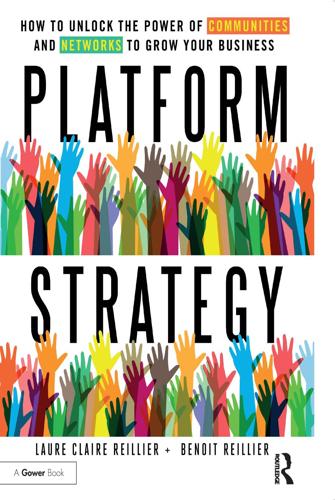
Open for Business Harnessing the Power of Platform Ecosystems
by
Lauren Turner Claire
,
Laure Claire Reillier
and
Benoit Reillier
Published 14 Oct 2017
Amazon also launched Amazon Prime the same year, a membership service offering buyers free and fast delivery. Both FBA and Prime are traditional product lines leveraging Amazon’s excellent logistics capabilities. They have been instrumental in supporting the e-commerce business. Amazon also branched out early on into services supporting digital businesses with Amazon Web Services (AWS), a cloud computing service launched in 2006. AWS is now the largest cloud service in the world and generated $12.2 billion in 2016. Amazon’s first foray into consumer electronics started with the Kindle in 2007, supported by Fire OS, an Android based operating system. Building on the success of Kindle e-book readers, Amazon later launched the Fire Tablet, Fire Phone, Fire TV Stick, and more recently Amazon Echo.
…
Index Accor Group 3, 201, 211 add-on platforms 77, 88–9, 92, 102, 105 advertising 37, 43, 45, 67–8, 93, 97, 99–100, 142, 144, 183 AdWords (Google) 67, 69, 183, 184 Airbnb 1–2, 3, 4, 15, 24, 168, 188; brand 51–2, 153, 169–70; business model 45; credibility 158–9, 163; feedback 35, 52, 160, 179–80; insurance 164; market sizing 79; match 47, 52, 83; value propositions 83, 95, 123 Alibaba 1, 15, 28, 34, 123, 124, 132, 208 Amazon 8, 12, 13, 14, 15, 125; business model 48, 59, 63; conflict resolution 163; ecosystem 28, 57–8, 59–61, 62, 70; feedback 35, 160; home automation 212 Amazon FBA (Fulfilment by Amazon) 58, 61–2 Amazon Marketplace 26–7, 48, 57, 58, 59, 60, 61–2, 84, 111 Amazon Prime 58, 61, 62 Amazon Web Services (AWS) 58 analytics 50–1, 52, 110, 123, 162, 187, 208, 213; see also data capture Android operating system (Google) 58, 67, 185–6 anticompetitive behaviour 173, 182, 186 APIs (application programming interfaces) 52, 183, 197 Apple 5, 8, 13, 14, 28, 193; App Store 32, 38, 63, 64–6; business model 54, 63, 66; ecosystem 63–6, 70, 132; iPhone 63, 65, 123; iTunes 63, 65 application programming interfaces see APIs Ariba 96 Artfire 143 attract 6, 15, 24, 47, 167; ignition 75, 91–6; maturity 75, 121–2, 131; pre-launch 74; scaling-up 75, 105, 107, 110–14, 117 audience builders 24 AWS see Amazon Web Services balance 48, 50, 106, 111–12, 114, 117, 124, 144–7, 150 Bezos, J. 57, 58 big bang launch strategy see event strategy BlaBlaCar 7, 154, 157, 158, 159; insurance 164; pricing strategies 147, 150, 156; scaling-up 112, 115 BorrowMyDoggy 99 bottlenecks 51, 73, 75–6, 86, 98, 99, 100, 101, 108, 112, 116 bowling pin strategy 54, 95, 109 brand 14–15, 51, 76, 118, 153–70 bundling strategies 61, 131, 182 business architecture 22, 66, 74, 80, 91 business models 6–7, 11, 22, 27, 59, 62, 63, 68, 132; platform businesses 6–7, 11, 22, 23, 27–8, 41–54, 70, 87, 138, 146, 177, 199, 200, 212; traditional businesses 62, 73, 91, 193, 211 card platforms 6, 23, 80, 126 catalyst businesses 23–4 Chesky, B. 1, 2, 169 218 Index Choudary, S. 25 communications platforms see Snapchat; WeChat; WhatsApp communities 44–5, 51, 78, 94, 112, 118, 125, 170 compensation strategy see dollar strategy competing platforms 131, 140, 149 competition 22, 25, 121, 130–2, 140, 173, 193 competition authorities 122, 131, 173-5, 186, 197 complements 31, 38, 130, 131 conflict resolution 126, 163, 167 connect 4, 45–6, 62; ignition 98; maturity 97; pre-launch 85; scaling-up 115, 117 consistency 159–60, 203 contributions 78, 82-3, 94, 118 control 52, 53, 123, 140–1, 162 core transactions 49, 52, 85–6, 98–101, 125, 168 correction activities 162 Craigslist 34, 95, 167 credibility 156, 158–9, 195 critical mass 31, 35–6, 37, 46, 73, 80, 121 cultural meme 97 customer acquisition 93, 107, 127; see also platform participants customer experience 36, 48, 53; maturity 108, 111; pricing strategies 139, 140–1; scaling-up 162 data capture 187; see also analytics dating platforms 13, 36, 48, 50, 95, 166, 176 delay strategy 195 Deliveroo 95, 111, 133, 170, 208 demand coordinators 24–5 denial strategy 194 denigrate strategy 194 deter strategy 194–5 Didi Chuxing 15, 132 digital platforms 4, 5, 12, 17, 73, 157, 167 direct network effects 34–5 direct platforms 80 disintermediation 126, 147–8 dispute resolution see conflict resolution dollar strategy 196 dynamic capabilities 196, 199, 200, 201 eBay 4, 15, 22, 48, 49, 53–4; brand 169, 170; business model 21, 27; connect 4, 85; feedback 159, 160; ignition 54; network effects 33, 34; pricing strategies 129, 140, 144, 146; scaling-up 108, 112, 115, 208; value propositions 83, 112 economic value 4, 14, 197 economies of scale 31, 32–33 ecosystems 6, 13, 17, 26–8, 180–1, 186, 207, 211; Amazon 26–7, 57–8, 59–61, 62, 70; Apple 63–6, 70, 132; Facebook 28, 70; Google 66–7, 68–9, 70, 132, 180–1, 185–6; Microsoft 70, 130, 132 enablers 51, 52, 87; ignition 101; maturity 128; pre-launch 87; scaling-up 118 Etsy 84, 87, 94, 110, 132, 146, 210 Evans, P. 14, 24, 25 event strategy 96 ex ante regulation 173, 188 ex post regulation 173 externalities 31–3, 65, 175, 180 Facebook 8, 13, 14, 52, 124, 131, 163, 168; ecosystem 28, 70; ignition 95, 96; network effects 35; pricing strategies 149; scaling-up 107, 166; search results 124 fast follower strategy 199 fear barriers 168–9 feedback 32, 34–6, 47, 77, 98, 100, 101, 108, 110, 111, 125, 160, 165, 188 Fulfilment by Amazon see Amazon FBA gaming platforms 35, 69, 97, 145 Gawer, A. 14, 25 Gebbia, J. 1, 169 Google 7, 13, 14, 67, 163, 180–6; AdWords 67; Android operating system 67, 185; brand 169; business model 50–1, 68; ecosystem 66–7, 68–9, 70, 132, 180–1, 186; home automation 212; search results 125; YouTube 67, 69, 131, 182 Google+ 69, 182 Index governance 51, 76, 140, 165, 167; prelaunch 87; trust framework 155, 157, 162, 164–70 Gumtree 132, 143 Hailo (MyTaxi) 93, 185 HiGear 163 home automation 212 Honda 27 hotels 1, 3, 7, 79, 179–80 IBM 14, 26, 194 ignition 73, 74, 91–102; eBay 53–4; Facebook 95, 96 indirect network effects 34–5 indirect platforms 80–1 innovation 140, 170, 174; maturity 127, 128; regulation 174, 186, 199 Instagram 70, 99, 107, 110, 133 insurance 164 intervention 175 intimacy 156 IT infrastructure 52 key enablers 51, 52 Kickstarter 78, 109, 210 La Belle Asiette 93–4, 99 labour laws 177 Launchworks 21, 157, 206, 208 leakage 49, 126, 147–8 leverage 61, 62, 70, 88, 124–5 linear businesses 6, 12, 41–2, 44, 52 LinkedIn 49, 70, 100, 107, 143, 150, 159 liquidity 33, 52, 143; ignition 99, 101; scaling-up 117 listing fees 144 Lyft 15, 132, 174, 176, 202 management principles 6, 7, 207 management rules 7, 17 market failures 167, 175–6, 187 market makers 24–5 marketplace platforms 12, 15, 48, 26, 59, 61, 85 marketplaces 6, 26, 64, 49, 59, 84, 85, 208 219 market power 37, 173–6, 180–3, 186, 197 market sizing 79–80 Mastercard 5, 23, 26, 80, 134 match 75; ignition 97–101, 115; maturity 124; platform participants 47–8, 52, 84–5, 95; pre-launch 86; scaling-up 114–15 maturity 73, 75–6, 121–2, 127–8 media companies 25 membership fees 139, 143–4 meshed communities 94–5 Microsoft 13–14, 23, 28, 63, 65, 70, 125, 143; ecosystem 70, 130, 132; home automation 212 minimum viable product see MVP monetization 50, 67, 86, 100, 116, 142, 147 MSP (multisided platforms) 25, 46 multihoming 36–7, 149, 176, 177 multisided markets 5, 23–4, 46 multisided platforms see MSP MVP (minimum viable product) 91, 100–1 MyTaxi 93 negative externalities 32, 180 Netflix 26, 197 network effects 33–5, 35, 48, 52, 68, 99, 133, 176; positive 48, 115, 126, 133, 142, 149 networks 31, 33–5 North Star metric 86, 100, 119 on-boarding processes 107–8, 168 Onefinestay 200–1 online platforms 11, 50, 51, 162 OpenTable 93 operating systems 5, 6, 25, 34; Android 58, 67, 185–6 optimize 50, 76; ignition 100, 101; maturity 128, 130; pre-launch 74, 86; scaling-up 116 over-regulation 174 Parker, G. 23, 25–6 partners 45, 79, 128 payment platforms 6, 24, 48 PayPal 95, 131, 187 performance metrics 100, 117, 127 220 Index personalization 124 piggybacking 95 platform balance 111, 117, 128, 144–6 platform businesses 4, 5–7, 11–14, 205, 207, 212, 214; definitions 21, 24–8 platform business models 4–7, 21–2, 27, 45–7, 146, 199, 205, 207, 212, 214 platform development 73, 77, 88; ignition 73, 75–6, 91–101; maturity 73, 75–6, 122, 125, 126, 128, 130; pre-launch 50, 73, 74, 75–6, 77–8, 82–7, 87, 169; scaling-up 73, 75–6, 91, 105–18, 169, 176 platform disruption 193–9, 201–3, 210–11; traditional businesses 132, 193–4, 206, 198–201 platform ecosystems see ecosystems platform fit 75–6, 91, 92, 100, 105, 169 platform management 6–7, 17, 161, 168 platform owners 79, 84, 95, 100, 105 platform participants 35, 47, 48, 51, 78–80, 113, 142, 165; connect 98; ignition 91, 101; match 35, 84, 97; maturity 121–2; pre-launch 78–9, 86; trust framework 51, 158, 160–1 platforms 11–12 Pokémon Go 97 Porter, M. 6, 42–3 positive externalities 31, 32, 65 positive network effects: match 48; maturity 111, 114; pricing strategies 126, 142, 149; scaling-up 117 pre-launch 73, 74, 75–6, 77–8 premium services 142–3 price discrimination 137–8, 143 price elasticity 37, 137 pricing 50, 81, 116, 126–8, 137, 150 pricing friction 141–4 pricing models 139, 141–4, 146 pricing strategies 23, 138–9, 140, 145–50 producer acquisition 108–9 producer retention 108, 121 producers 78, 107–8 Quora 110, 159 Reddit 49, 78, 84, 94, 209, 210, 213 regulation 167, 173–9, 186–9 reliability 156 retention 47, 107–8, 111, 122 risk management 163 Rochet, J. 23–4 rocket model 46, 51, 73, 82, 116; ignition 73, 74, 91; maturity 73, 122; pre-launch 73, 74; scaling-up 73, 162 Ruby Lane 143, 166 SAP 123 scaling-up 73, 105–6, 116 Schmalensee, R. 24 search results 48, 50, 52, 67, 98, 114, 124, 180–1 self-driving cars 67, 211–12 sharing economy 8, 16, 164, 208–11 single homing 36–7 Snapchat 16, 110 Spotify 123 stakeholders 74, 79, 82, 210 start-ups 15 Stootie 98 strategic enablers 51, 101, 118 substitutes 38 talent platforms 205–6 Taobao 124–5 TaskRabbit 108, 148 taxi market 7, 24, 80, 93, 131, 174, 176, 178, 196 Tesco 27 Tinder 13, 96, 166 tipping point 36 Tirole, J. 7, 23–4 traditional businesses 4, 11, 13, 25, 41, 46, 79, 82, 137, 176; platform disruption 38, 193, 198 traditional business models 33 41, 53, 62, 132, 193, 211; ignition 91; maturity 132, 193 transactional platforms 85, 111 transaction fees 139, 143–4, 146 transaction metrics 111, 115, 116 Transport for London (TfL) 177–8 travel platforms 3, 11; see also Airbnb; Lyft; Uber Index trust 45, 49, 51, 84, 87, 99, 106, 115, 121, 130, 147, 153 trust framework 153, 155, 157, 165, 188 Twitter 69, 96, 159, 163 tying strategies 182–3 Uber 11, 15, 22, 52, 108, 177; business model 24, 79; price strategies 81, 140; regulation 140, 162, 167, 174, 177 UberEATS 133 under-regulation 174 unfair competition 3, 174, 180–1, 186 unicorns 15–16 Upwork 47, 88, 126, 159, 169, 206 user acquisition 93, 97, 107–10, 122; see also platform participants user retention 107–8, 111, 122 221 value chains 6, 42–3, 52–3, 202–3 value creation 11, 50, 78, 139, 174, 193, 211 value propositions 57, 63, 82, 112, 196, 197; maturity 112; pre-launch 82; scaling-up 112, 133, 142 Van Alstyne, M. 23, 25–6 VIP strategy 96 viral loops 110 Visa 5, 14, 23, 26, 80–1, 134 WeChat 6, 97, 132 WhatsApp 70, 110 YouTube (Google) 67–9, 131, 182, 183, 186 Zalando 12, 102, 200
…
Index Accor Group 3, 201, 211 add-on platforms 77, 88–9, 92, 102, 105 advertising 37, 43, 45, 67–8, 93, 97, 99–100, 142, 144, 183 AdWords (Google) 67, 69, 183, 184 Airbnb 1–2, 3, 4, 15, 24, 168, 188; brand 51–2, 153, 169–70; business model 45; credibility 158–9, 163; feedback 35, 52, 160, 179–80; insurance 164; market sizing 79; match 47, 52, 83; value propositions 83, 95, 123 Alibaba 1, 15, 28, 34, 123, 124, 132, 208 Amazon 8, 12, 13, 14, 15, 125; business model 48, 59, 63; conflict resolution 163; ecosystem 28, 57–8, 59–61, 62, 70; feedback 35, 160; home automation 212 Amazon FBA (Fulfilment by Amazon) 58, 61–2 Amazon Marketplace 26–7, 48, 57, 58, 59, 60, 61–2, 84, 111 Amazon Prime 58, 61, 62 Amazon Web Services (AWS) 58 analytics 50–1, 52, 110, 123, 162, 187, 208, 213; see also data capture Android operating system (Google) 58, 67, 185–6 anticompetitive behaviour 173, 182, 186 APIs (application programming interfaces) 52, 183, 197 Apple 5, 8, 13, 14, 28, 193; App Store 32, 38, 63, 64–6; business model 54, 63, 66; ecosystem 63–6, 70, 132; iPhone 63, 65, 123; iTunes 63, 65 application programming interfaces see APIs Ariba 96 Artfire 143 attract 6, 15, 24, 47, 167; ignition 75, 91–6; maturity 75, 121–2, 131; pre-launch 74; scaling-up 75, 105, 107, 110–14, 117 audience builders 24 AWS see Amazon Web Services balance 48, 50, 106, 111–12, 114, 117, 124, 144–7, 150 Bezos, J. 57, 58 big bang launch strategy see event strategy BlaBlaCar 7, 154, 157, 158, 159; insurance 164; pricing strategies 147, 150, 156; scaling-up 112, 115 BorrowMyDoggy 99 bottlenecks 51, 73, 75–6, 86, 98, 99, 100, 101, 108, 112, 116 bowling pin strategy 54, 95, 109 brand 14–15, 51, 76, 118, 153–70 bundling strategies 61, 131, 182 business architecture 22, 66, 74, 80, 91 business models 6–7, 11, 22, 27, 59, 62, 63, 68, 132; platform businesses 6–7, 11, 22, 23, 27–8, 41–54, 70, 87, 138, 146, 177, 199, 200, 212; traditional businesses 62, 73, 91, 193, 211 card platforms 6, 23, 80, 126 catalyst businesses 23–4 Chesky, B. 1, 2, 169 218 Index Choudary, S. 25 communications platforms see Snapchat; WeChat; WhatsApp communities 44–5, 51, 78, 94, 112, 118, 125, 170 compensation strategy see dollar strategy competing platforms 131, 140, 149 competition 22, 25, 121, 130–2, 140, 173, 193 competition authorities 122, 131, 173-5, 186, 197 complements 31, 38, 130, 131 conflict resolution 126, 163, 167 connect 4, 45–6, 62; ignition 98; maturity 97; pre-launch 85; scaling-up 115, 117 consistency 159–60, 203 contributions 78, 82-3, 94, 118 control 52, 53, 123, 140–1, 162 core transactions 49, 52, 85–6, 98–101, 125, 168 correction activities 162 Craigslist 34, 95, 167 credibility 156, 158–9, 195 critical mass 31, 35–6, 37, 46, 73, 80, 121 cultural meme 97 customer acquisition 93, 107, 127; see also platform participants customer experience 36, 48, 53; maturity 108, 111; pricing strategies 139, 140–1; scaling-up 162 data capture 187; see also analytics dating platforms 13, 36, 48, 50, 95, 166, 176 delay strategy 195 Deliveroo 95, 111, 133, 170, 208 demand coordinators 24–5 denial strategy 194 denigrate strategy 194 deter strategy 194–5 Didi Chuxing 15, 132 digital platforms 4, 5, 12, 17, 73, 157, 167 direct network effects 34–5 direct platforms 80 disintermediation 126, 147–8 dispute resolution see conflict resolution dollar strategy 196 dynamic capabilities 196, 199, 200, 201 eBay 4, 15, 22, 48, 49, 53–4; brand 169, 170; business model 21, 27; connect 4, 85; feedback 159, 160; ignition 54; network effects 33, 34; pricing strategies 129, 140, 144, 146; scaling-up 108, 112, 115, 208; value propositions 83, 112 economic value 4, 14, 197 economies of scale 31, 32–33 ecosystems 6, 13, 17, 26–8, 180–1, 186, 207, 211; Amazon 26–7, 57–8, 59–61, 62, 70; Apple 63–6, 70, 132; Facebook 28, 70; Google 66–7, 68–9, 70, 132, 180–1, 185–6; Microsoft 70, 130, 132 enablers 51, 52, 87; ignition 101; maturity 128; pre-launch 87; scaling-up 118 Etsy 84, 87, 94, 110, 132, 146, 210 Evans, P. 14, 24, 25 event strategy 96 ex ante regulation 173, 188 ex post regulation 173 externalities 31–3, 65, 175, 180 Facebook 8, 13, 14, 52, 124, 131, 163, 168; ecosystem 28, 70; ignition 95, 96; network effects 35; pricing strategies 149; scaling-up 107, 166; search results 124 fast follower strategy 199 fear barriers 168–9 feedback 32, 34–6, 47, 77, 98, 100, 101, 108, 110, 111, 125, 160, 165, 188 Fulfilment by Amazon see Amazon FBA gaming platforms 35, 69, 97, 145 Gawer, A. 14, 25 Gebbia, J. 1, 169 Google 7, 13, 14, 67, 163, 180–6; AdWords 67; Android operating system 67, 185; brand 169; business model 50–1, 68; ecosystem 66–7, 68–9, 70, 132, 180–1, 186; home automation 212; search results 125; YouTube 67, 69, 131, 182 Google+ 69, 182 Index governance 51, 76, 140, 165, 167; prelaunch 87; trust framework 155, 157, 162, 164–70 Gumtree 132, 143 Hailo (MyTaxi) 93, 185 HiGear 163 home automation 212 Honda 27 hotels 1, 3, 7, 79, 179–80 IBM 14, 26, 194 ignition 73, 74, 91–102; eBay 53–4; Facebook 95, 96 indirect network effects 34–5 indirect platforms 80–1 innovation 140, 170, 174; maturity 127, 128; regulation 174, 186, 199 Instagram 70, 99, 107, 110, 133 insurance 164 intervention 175 intimacy 156 IT infrastructure 52 key enablers 51, 52 Kickstarter 78, 109, 210 La Belle Asiette 93–4, 99 labour laws 177 Launchworks 21, 157, 206, 208 leakage 49, 126, 147–8 leverage 61, 62, 70, 88, 124–5 linear businesses 6, 12, 41–2, 44, 52 LinkedIn 49, 70, 100, 107, 143, 150, 159 liquidity 33, 52, 143; ignition 99, 101; scaling-up 117 listing fees 144 Lyft 15, 132, 174, 176, 202 management principles 6, 7, 207 management rules 7, 17 market failures 167, 175–6, 187 market makers 24–5 marketplace platforms 12, 15, 48, 26, 59, 61, 85 marketplaces 6, 26, 64, 49, 59, 84, 85, 208 219 market power 37, 173–6, 180–3, 186, 197 market sizing 79–80 Mastercard 5, 23, 26, 80, 134 match 75; ignition 97–101, 115; maturity 124; platform participants 47–8, 52, 84–5, 95; pre-launch 86; scaling-up 114–15 maturity 73, 75–6, 121–2, 127–8 media companies 25 membership fees 139, 143–4 meshed communities 94–5 Microsoft 13–14, 23, 28, 63, 65, 70, 125, 143; ecosystem 70, 130, 132; home automation 212 minimum viable product see MVP monetization 50, 67, 86, 100, 116, 142, 147 MSP (multisided platforms) 25, 46 multihoming 36–7, 149, 176, 177 multisided markets 5, 23–4, 46 multisided platforms see MSP MVP (minimum viable product) 91, 100–1 MyTaxi 93 negative externalities 32, 180 Netflix 26, 197 network effects 33–5, 35, 48, 52, 68, 99, 133, 176; positive 48, 115, 126, 133, 142, 149 networks 31, 33–5 North Star metric 86, 100, 119 on-boarding processes 107–8, 168 Onefinestay 200–1 online platforms 11, 50, 51, 162 OpenTable 93 operating systems 5, 6, 25, 34; Android 58, 67, 185–6 optimize 50, 76; ignition 100, 101; maturity 128, 130; pre-launch 74, 86; scaling-up 116 over-regulation 174 Parker, G. 23, 25–6 partners 45, 79, 128 payment platforms 6, 24, 48 PayPal 95, 131, 187 performance metrics 100, 117, 127 220 Index personalization 124 piggybacking 95 platform balance 111, 117, 128, 144–6 platform businesses 4, 5–7, 11–14, 205, 207, 212, 214; definitions 21, 24–8 platform business models 4–7, 21–2, 27, 45–7, 146, 199, 205, 207, 212, 214 platform development 73, 77, 88; ignition 73, 75–6, 91–101; maturity 73, 75–6, 122, 125, 126, 128, 130; pre-launch 50, 73, 74, 75–6, 77–8, 82–7, 87, 169; scaling-up 73, 75–6, 91, 105–18, 169, 176 platform disruption 193–9, 201–3, 210–11; traditional businesses 132, 193–4, 206, 198–201 platform ecosystems see ecosystems platform fit 75–6, 91, 92, 100, 105, 169 platform management 6–7, 17, 161, 168 platform owners 79, 84, 95, 100, 105 platform participants 35, 47, 48, 51, 78–80, 113, 142, 165; connect 98; ignition 91, 101; match 35, 84, 97; maturity 121–2; pre-launch 78–9, 86; trust framework 51, 158, 160–1 platforms 11–12 Pokémon Go 97 Porter, M. 6, 42–3 positive externalities 31, 32, 65 positive network effects: match 48; maturity 111, 114; pricing strategies 126, 142, 149; scaling-up 117 pre-launch 73, 74, 75–6, 77–8 premium services 142–3 price discrimination 137–8, 143 price elasticity 37, 137 pricing 50, 81, 116, 126–8, 137, 150 pricing friction 141–4 pricing models 139, 141–4, 146 pricing strategies 23, 138–9, 140, 145–50 producer acquisition 108–9 producer retention 108, 121 producers 78, 107–8 Quora 110, 159 Reddit 49, 78, 84, 94, 209, 210, 213 regulation 167, 173–9, 186–9 reliability 156 retention 47, 107–8, 111, 122 risk management 163 Rochet, J. 23–4 rocket model 46, 51, 73, 82, 116; ignition 73, 74, 91; maturity 73, 122; pre-launch 73, 74; scaling-up 73, 162 Ruby Lane 143, 166 SAP 123 scaling-up 73, 105–6, 116 Schmalensee, R. 24 search results 48, 50, 52, 67, 98, 114, 124, 180–1 self-driving cars 67, 211–12 sharing economy 8, 16, 164, 208–11 single homing 36–7 Snapchat 16, 110 Spotify 123 stakeholders 74, 79, 82, 210 start-ups 15 Stootie 98 strategic enablers 51, 101, 118 substitutes 38 talent platforms 205–6 Taobao 124–5 TaskRabbit 108, 148 taxi market 7, 24, 80, 93, 131, 174, 176, 178, 196 Tesco 27 Tinder 13, 96, 166 tipping point 36 Tirole, J. 7, 23–4 traditional businesses 4, 11, 13, 25, 41, 46, 79, 82, 137, 176; platform disruption 38, 193, 198 traditional business models 33 41, 53, 62, 132, 193, 211; ignition 91; maturity 132, 193 transactional platforms 85, 111 transaction fees 139, 143–4, 146 transaction metrics 111, 115, 116 Transport for London (TfL) 177–8 travel platforms 3, 11; see also Airbnb; Lyft; Uber Index trust 45, 49, 51, 84, 87, 99, 106, 115, 121, 130, 147, 153 trust framework 153, 155, 157, 165, 188 Twitter 69, 96, 159, 163 tying strategies 182–3 Uber 11, 15, 22, 52, 108, 177; business model 24, 79; price strategies 81, 140; regulation 140, 162, 167, 174, 177 UberEATS 133 under-regulation 174 unfair competition 3, 174, 180–1, 186 unicorns 15–16 Upwork 47, 88, 126, 159, 169, 206 user acquisition 93, 97, 107–10, 122; see also platform participants user retention 107–8, 111, 122 221 value chains 6, 42–3, 52–3, 202–3 value creation 11, 50, 78, 139, 174, 193, 211 value propositions 57, 63, 82, 112, 196, 197; maturity 112; pre-launch 82; scaling-up 112, 133, 142 Van Alstyne, M. 23, 25–6 VIP strategy 96 viral loops 110 Visa 5, 14, 23, 26, 80–1, 134 WeChat 6, 97, 132 WhatsApp 70, 110 YouTube (Google) 67–9, 131, 182, 183, 186 Zalando 12, 102, 200

Abolish Silicon Valley: How to Liberate Technology From Capitalism
by
Wendy Liu
Published 22 Mar 2020
Not for the first time, it occurred to me how silly it was to work on something that was essentially identical to what Twitter was building in-house. But I was still working on it, and we were still in New York, even though we had originally planned to leave right after Demo Day. While we were here, we might as well make the most of it. We’d been burning through our Amazon Web Services (AWS) server credits, and an opportunity came up to get free credits in exchange for doing a bit of marketing for them. At the AWS developer pop-up loft in SoHo, I gave a five-minute presentation explaining our tech stack while profusely praising Amazon for their support; afterward, we got another $10,000 USD in server credits, as well as a swag bag containing an AWS hoodie in men’s large and a Kindle Fire, among other things.
…
In the meantime, as we went through the list of every possible blue-sky pivot, our current business was placed on life support. We started downsizing our tech infrastructure: making harsh cuts to memory and space usage, switching to on-demand server provision despite the potential slowdowns to our product, even shortening logging output to save a few extra dollars a month. Our Amazon Web Services credits had run out, and every dollar counted; the longer we could keep our existing business alive, the more time we had to figure out our improbable pivot. Robotics had piqued my interest. I loved the idea of automating away rote tasks, and my latest obsession was restaurant work — something that I had, again, never done, but which I assumed I could optimise.
…
I couldn’t really blame them: if your employer continually insisted to legislators that the Dashers or Shoppers or Associates who did all the manual work were users rather than workers, it would be understandable to not see them as your fellow workers. And if your job was to build the app they interacted with according to metrics like customer satisfaction or order volume, it would be only natural to start seeing workers as tools rather than human beings. Like Amazon Web Services’ EC2 servers: spun up when needed, shut down when not. And it would be convenient for your company’s bottom line to pay these workers only for the time they spent working. If that were to result in workers orchestrating their lives around the black box you’d built — and suffering as a result — that wouldn’t be your problem.

Binge Times: Inside Hollywood's Furious Billion-Dollar Battle to Take Down Netflix
by
Dade Hayes
and
Dawn Chmielewski
Published 18 Apr 2022
“Fortunately, we’ve had the experience with Game of Thrones, we’ve had the experience of ESPN+ with the big pay-per-view events that we’re doing with UFC exclusively on our platform,” he told the Verge. “We’re getting big bursts. We’ve built capabilities to sustain that, both in terms of processing the transactions that all come in—in a very, very short period of time—as well as the streams.” Within a matter of hours, the BAMTech team offered Mayer a preliminary diagnosis: a flaw in Amazon Web Services’ real-time customer analytics software. Mayer urged Inzerillo to fix it, adding, “This is not good.” Word leaked out to the press that a “third-party vendor” was to blame. “At midnight, the system was humming along fine. Everyone was going through as many checks as possible. Clearly, everyone was streaming the first episode of Mandalorian, it was all on point,” said one West Coast–based tech executive.
…
Mayer contacted Amazon CEO Andy Jassy—who at the time headed the company’s cloud computing business, which powers a number of streaming services, including Netflix—to ask what had gone wrong. Jassy offered to take the fall for the Disney glitch but said the real problem was with Disney’s own app. BAMTech had hacked Amazon Web Services’ search function to deliver movie and TV recommendations—not an intended use. Inzerillo developed a manual work-around that got the service up and running within a matter of hours and kept the Disney+ app functioning until BAMTech offered an updated version of the app weeks later. About one-third of people who had trouble getting through the front door couldn’t remember their passwords, a problem Disney helped create by requiring consumers to use the same login as when they bought theme park tickets, booked travel through the Disney Vacation Club, or shopped its online stores, said the tech executive.
…
(He would pass the reins to Andy Jassy over the summer while remaining involved in the company as executive chairman.) He revealed that more than 175 million Prime members had streamed shows and movies over the previous year, with overall streaming rising more than 70 percent year over year. “Two of our kids are now ten and fifteen years old,” he said, alluding to Prime Video and Amazon Web Services, “and after years of being nurtured, they’re growing up fast and coming into their own.” Chapter 22 Paciencia y Fe Lin-Manuel Miranda grabbed the microphone from Robert De Niro and jumped around the stage like an unleashed labradoodle. “Well, what’s up, In the Heights opening night?!”

The Nature of Software Development: Keep It Simple, Make It Valuable, Build It Piece by Piece
by
Ron Jeffries
Published 14 Aug 2015
A failure can also result when the “desired” state is computed incorrectly and may be impossible or impractical. For example, a naive scheduler might try to run enough instances to drain a queue in a fixed amount of time. Depending on the individual jobs’ processing time, the number of instances might be “infinity.” That will smart when the Amazon Web Services bill arrives! Controls and Safeguards The United States has a government agency called the Occupational Safety and Health Administration (OSHA). We don’t see them too often in the software field, but we can still learn from their safety advice for robots.[13] Industrial robots have multiple layers of safeguards to prevent damage to people, machines, and facilities.
…
Just getting access to log files can be a challenge. Don’t even bother trying to figure out why some socket is being held open for too long. Containerized applications, even more than ordinary ones, need to send their telemetry out to a data collector. Virtual Machines in the Cloud At the time of writing, Amazon Web Services is far and away the dominant cloud platform. Google Cloud is gaining traction thanks to an attractive pricing model, but it has a long way to go before its workload approaches AWS. The world can change pretty quickly, though. While advanced cloud features definitely help with lock-in, compute and storage capacity is more fungible.
…
Back in Force Multiplier, we saw how Reddit suffered from overeager automation. The Governor pattern discussed in Governor, aims to reduce the harm when automation goes the wrong way. Let’s consider an example from a real outage that affected many people and companies. On February 28, 2017, Amazon Web Services’ S3 service in the US-East-1 region went down. Tens of thousands of companies suffered outages due to their own hard dependencies on S3. Large parts of the Net pretty much went dark. Operators went nuts. Users hammered status sites until those crumbled too. (At least, they hammered status sites that weren’t themselves hosted on S3!)

Rentier Capitalism: Who Owns the Economy, and Who Pays for It?
by
Brett Christophers
Published 17 Nov 2020
My biggest thanks go to my family: Agneta, Elliot, Oliver and Emilia. Living with you is the biggest privilege of all. You are all awesome, and I love you with all my heart. Uppsala, March 2020 Abbreviations ABP Associated British Ports ABPI Association of the British Pharmaceutical Industry AWS Amazon Web Services BAT British American Tobacco BIA BioIndustry Association BIG British Infrastructure Group BNOC British National Oil Corporation CAA Civil Aviation Authority CAGR Compound annual growth rate CAP Common Agricultural Policy CCT Compulsory competitive tendering CGT Capital gains tax CHPI Centre for Health and the Public Interest CMA Competition and Markets Authority CRC Community Rehabilitation Company CRE Commercial real estate CSU Commissioning support unit DEFRA Department for Environment, Food and Rural Affairs DHSC Department of Health and Social Care DRC Democratic Republic of Congo DTI Department of Trade and Industry ECU European Currency Unit FBA Fulfillment By Amazon FSA Financial Services Authority GDP Gross domestic product GLC Greater London Council GNP Gross national product GOS Gross operating surplus GVA Gross value-added HMRC Her Majesty’s Revenue and Customs HR Human resources IFA Intangible fixed asset IP Intellectual property IPPR Institute for Public Policy Research IWGB Independent Workers’ Union of Great Britain KPI Key performance indicator LSE London Stock Exchange LSEG London Stock Exchange Group MHCLG Ministry of Housing, Communities and Local Government MoD Ministry of Defence NAO National Audit Office NFC National Freight Corporation NIC National Infrastructure Commission NIDP National Infrastructure Delivery Plan OE Oxford Economics OECD Organisation for Economic Co-operation and Development Ofcom Office of Communications Ofgem Office of Gas and Electricity Markets OFT Office of Fair Trading Ofwat Water Services Regulation Authority ONS Office for National Statistics Opec Organization of the Petroleum Exporting Countries OSI Oxford Sciences Innovation OUI Oxford University Innovation PFI Private Finance Initiative QE Quantitative easing R&D Research and development REIT Real estate investment trust ROSCO Rolling stock company RPI Retail price index SIC Standard industrial classification SMEs Small and medium-sized enterprises SPC Supplementary protection certificate SPV Special purpose vehicle TfL Transport for London TOC Train operating company TRIPS Agreement on Trade-Related Aspects of Intellectual Property Rights UKCS UK Continental Shelf VAT Value-added tax WTO World Trade Organization Preface Few people in the United Kingdom, let alone further afield, have heard of Arqiva.
…
It certainly is, at least partly; and platform rentierism – in the form of Amazon Marketplace, which, like eBay, connects consumers to third-party sellers – is clearly part of the mix. Increasingly, however, Amazon is a different type of rentier, controlling a different type of asset base, and earning a different form of rent. Consider, firstly, Amazon Web Services (AWS), comfortably Amazon’s most profitable business. In establishing and growing its marquee online retail operation – the Amazon we are all familiar with – in the late 1990s and early 2000s, Amazon developed formidable proprietary computing capacity located at server farms around the world.
…
Not only are the entry barriers large, then; they tend to become larger with time as a market grows and matures, conferring significant advantage on the fabled ‘first mover’, and ineluctably reducing the likelihood of the emergence of new players. Amazon’s two infrastructure rentier businesses – Fulfillment by Amazon and Amazon Web Services – are excellent examples of businesses displaying these non-natural monopoly tendencies. Replicating the vast infrastructures underpinning either one would be prohibitively costly. Writing about AWS, for example, Tom Krazit recently noted that ‘its first-mover advantage has lingered well into its second decade’ – its share of the market having held steady at around one-third for several years – precisely because ‘it takes an enormous amount of investment to create a cloud infrastructure network that can compete with AWS’.14 And AWS is not alone.

CTOs at Work
by
Scott Donaldson
,
Stanley Siegel
and
Gary Donaldson
Published 13 Jan 2012
Index 3D technology David Kuttler, 302 Jerry Krill, 83–85 64-bit architectures, 272–274, 281 A acquisitions, William Ballard, 279–280 Adobe, reverse image searching and, 246 AEP (American Electric Power), 128–129 Aguru Images, Craig Miller, 53–54, 56–59 algae, Craig Miller, 69, 76 Alm, Al, 50 Alving, Amy, 1–20 Amazon EC2, 36 Amazon Web Services (AWS), 245 American Electric Power (AEP), 128–129 American Public Media, 163 Amperion, 128 APL (Applied Physics Laboratory) global technical outreach, 90 Jerry Krill, 82 application development, Jeff Tolnar, 145 architecture technical review, 26 Arduinos, Craig Miller, 77 asymmetric warfare, Jerry Krill's comments on, 92 AWS (Amazon Web Services), 245 B Ballard, William, CTO of Gerson Lehrman Group, Inc, 261–283 Beyster, Bob, 51–52 Bilger, Mark, 23 Black, David, 262 Bloore, Paul, 239–260 Bodine, Greg, 30 BPLG (BPL Global), 127–128, 132 breakout engagements, Gerson Lehrman, 265 budgeting, Jeff Tolnar, 146–148 bundling hardware and software, Jeff Tolnar, 135 Burke, Thomas, 177 business development personnel, Gerson Lehrman, 266 C CA Open Space, 39 callable interface, 41 career lessons Darko Hrelic, 206–207, 211 Jan-Erik de Boer, 236 Jerry Krill, 91 Paul Bloore, 253 Wesley Kaplow, 110 career path Amy Alving, 1–6 Darko Hrelic, 205–206 Dmitry Cherches, 181–185 Jan-Erik de Boer, 237 Jeff Tolnar, 128 Marty Garrison, 152 Paul Bloore, 240–242 Tom Loveland, 176–178 Wesley Kaplow, 105–110 CATEX, Craig Miller, 51 Cherches, Dimitri background, 173 of Mind Over Machines, 173–204 ChoicePoint, 158 CIO responsibilities, of William Ballard, 268 CIO role, versus CTO role, 282 CIOs, Jeff Tolnar, 130–131 cloud computing, 35 Amy Alving, 16–17 Craig Miller, 65 David Kuttler, 302 Dmitry Cherches, 186–188, 200 Gerson Lehrman, 277 Jeff Tolnar, 142, 147–148 Marty Garrison, 160, 167 CloudShield, 13 cluster analysis, Craig Miller, 64 CommonCrawl group, 257 communication activities, of William Ballard, 269 communication, importance of, 30 competition, evaluating Amy Alving, 12–13 Darko Hrelic, 211–212, 217 Gerson Lehrman, 265 Jerry Krill, 101–102 Paul Bloore, 244–245 computing cloud computing, 35 Amy Alving, 16–17 Craig Miller, 65 David Kuttler, 302 Dmitry Cherches, 186–188, 200 Gerson Lehrman, 277 Jeff Tolnar, 142, 147–148 Marty Garrison, 160, 167 distributed computing, 242 mobile computing, 39–40 Darko Hrelic, 209–210 impact on Gerson Lehrman, 276 Jerry Krill, 96 Marty Garrison, 168 Paul Bloore, 254 Wesley Kaplow, 123 Comverge, 137 conference calls, ZipDx, 277–278 consulting, by Gerson Lehrman, 265 continuous deployment cycle, at Gerson Lehrman, 281 corporate strategy, Rick Mosca, 191–194 councils, Gerson Lehrman, 264 creativity, role in career path Jerry Krill, 85–87 Paul Bloore, 241 Wesley Kaplow, 116 Crinks, Bert, 115–116 CTO responsibilities, of William Ballard, 267–271, 282–283 Cuomo, Jerry, 25 customizing software, William Ballard's advice regarding, 270–272 cyanobacteria, Craig Miller, 79 cyber security Amy Alving, 18–19 CloudShield, 13 Darko Hrelic, 214–215 Dmitry Cherches, 201 Gerson Lehrman, 276 Springer, 235 Wesley Kaplow, 123 D Dannelly, Doug, 69 DARPA (Defense Advanced Research Projects Agency), Amy Alving, 5–6 Darwin, Charles, 70 data mining, real-time, 281–282 databases Jeff Tolnar, 141 used at Gerson Lehrman, 272 David Kuttler, 296 DAVID system, 165 de Boer, Jan-Erik, 219–237 Debevec, Paul, 57 decision-making, Jeff Tolnar, 133–134 Defense Advanced Research Projects Agency (DARPA), Amy Alving, 5–6 Delman, Debra, 161 Demand Media, 261–262 Department of Energy (DoE), 54–55, 64 deployment cycle, at Gerson Lehrman, 281 DER (distributed energy resources), 139, 142–149 DEs (Distinguished Engineers), 25 development methodology, Paul Bloore, 256–257 development resources, Jeff Tolnar, 139–140 DiData, Craig Miller, 53, 61 digital watermarking, 243 Dimension Data, Craig Miller, 52 Distinguished Engineers (DEs), 25 distributed computing, 242 distributed energy resources (DER), 139, 142–149 Dobson, David, 36 DoE (Department of Energy), 54–55, 64 domain expertise, 36 E economics of consulting with Gerson Lehrman, 265 William Ballard's advice regarding, 270–271, 279 electric co-ops, Craig Miller, 54–55 electrical transformers, Craig Miller, 68 employees, Gerson Lehrman, 265–266 Endhiran movie, Craig Miller, 58–59 energy policy, Craig Miller, 50 engineering offices, Gerson Lehrman, 266 engineers, cost of, 270, 279 ETL (extraction, translation, load), 203 evaluating competition Amy Alving, 12–13 Darko Hrelic, 211–212, 217 Gerson Lehrman, 265 Jerry Krill, 101–102 Paul Bloore, 244–245 expert network space, Gerson Lehrman, 265 expertise, use of, 274–275 external organizations, affiliations of Gerson Lehrman with, 269 extinction, Craig Miller, 78–79 extraction, translation, load (ETL), 203 F FDA, David Kuttler, 300–301 Ferguson, Don, interview with, 21–47 Fernandez, Raul, 52 ferrofluid, 241 First of a Kind project, 23 Folderauer, Ken, 114 fractal architecture, 273–274 free space optics, 84, 95 frequency variations, Craig Miller, 62–63 functional programming, 278 fundraising, Jeff Tolnar, 146 G Garrison, Marty, interview with, 151 Gayal, Amoosh, 24 Gelpin, Tim, 89 G.I.
…
So that in a nutshell is what TinEye is. It was something that I wanted us to do for quite some time. We released it in March of 2008, but I'd wanted to make a web-wide search for a couple of years prior to that, but we didn't actually have the computing capacity to do it. In late 2007, Amazon was developing their AWS, their Amazon Web Services, and cloud computing platform. I was immediately taken by it because I thought, “Aha. Now we can manage to get ahold of the computing capacity we need to launch the search engine.” So we started work on it immediately, and I think it was about four or five months later when we first put TinEye on the web.
…
What's the world starting to look like, and how should we position our services so we take advantage of what the world's going to be in five years' time? One future vision I have is currently counter culture. One of the things that I'm kind of known for is that I do worry about costs. I'm kind of referred to as a cheap guy when it comes to spending money on equipment. So we started TinEye completely using cloud-based services on Amazon's Web Services. Pretty soon, though, we realized that we could do it much more cost-effectively on our own equipment. So this means that we moved away from cloud computing and we do everything ourselves in-house. And that's just interesting because it seems to be swimming against the stream as far as what I see when I speak with other technology people.

Super Pumped: The Battle for Uber
by
Mike Isaac
Published 2 Sep 2019
As more and more people connected online, demand for new, internet-enabled services grew by the day. Second, the hurdles for entrepreneurs who wanted to launch a company were lowering quickly. Amazon Web Services, or AWS, changed the startup game entirely. Amazon started AWS in 2002 as an engineering side project; it would grow to become one of its most successful innovations in Amazon history. Amazon Web Services powers cloud computing services for coders and entrepreneurs who can’t afford to build their own infrastructure or server farms on their own. If a startup is a house, AWS is the electric company, the foundation and the plumbing combined.
…
The App Store changed the model for software development entirely. All a programmer needed was an idea and facility with Apple’s mobile software code. With those two components, anyone could build and distribute their own apps and market them to millions of people instantly. Spin up a server on Amazon Web Services, blast out some code, and submit your app to Apple for review, and your work could be up and running in days. For people opening the App Store at home, it was like walking the aisles of their local Best Buy. Unfettered access to millions of games and programs on their iPhone required little more than a Wi-Fi connection and a few extra bucks.
…
INDEX Page numbers followed by n refer to footnotes. 510 Systems, 108 ABC, 131 Abu Dhabi Investment Authority, 317 Abyzov, Ilya, 90 Accel, 40 Adobe, 27, 39 Advanced Micro Devices, 67 Advanced Technologies Group, 184 Agenda, 67 AIG, 33 Airbnb, xiii, 6, 65, 224 Akamai Technologies, 29, 31, 32 Albarrán, Tammy, 224, 226, 271–72, 275 Alexander, Eric, 260–61, 262, 337 Alfonso, Melene, 16 Alipay, 148 Allen & Company, 319, 320 Alltel, 100 Alphabet, 232. See also Google Alsup, William, 255–56 Amazon, 4, 11–14, 27, 35, 68–69, 92n, 111, 115, 154, 195, 231n Amazon Web Services (AWS), 34–35, 39 American Civil Liberties Union, 211 Andreessen, Marc, 69n, 75 Andreessen Horowitz, 40, 184 Android, 156, 159 AOL, 31, 69n, 229, 230 APAC, 260 Apple, 4, 36, 38–40, 59, 132, 165, 195, 233, 235, 245, 317. See also specific products the Apple problem, 153–64 App Store, 37, 39–40, 59, 155, 157–63, 235, 245 Aquafina, 60 Arab Spring, 199 Arlene Schnitzer Concert Hall, xv Arrington, Michael, 55, 58 Arro, 113 Asia, 139, 140–52, 187, 259, 260.

Surveillance Valley: The Rise of the Military-Digital Complex
by
Yasha Levine
Published 6 Feb 2018
On election day they built a call center, they built an elaborate database to know where their volunteers were, know the neighborhoods where people appeared not to have voted, so they could go knock on doors and get out the vote,” Andy Jassy, head of Amazon Web Services, told All Things Digital. “Nine Questions for Andy Jassy, Head of Amazon Web Services,” All Things Digital, November 8, 2013, https://web.archive.org/web/20170528161820/http://allthingsd.com/20131108 /nine-questions-for-andy-jassy-head-of-amazon-web-services/comment-page-1/. 136. Adi Robertson, “Jeff Bezos’ Blue Origin Partners with Boeing and Lockheed Martin to Reduce Dependence on Russian Rockets,” The Verge, September 17, 2014, https://www.theverge.com/2014/9/17/6328961/jeff-bezos-blue-origin-partners-with-united-launch-alliance-for-new-rocket. 137.
…
Brad Stone, The Everything Store: Jeff Bezos and the Age of Amazon (Boston: Little, Brown, 2013); Jennifer Wills, “7 Ways Amazon Uses Big Data to Stalk You,” Investopedia, September 7, 2016, http://www.investopedia.com/articles /insights/090716/7-ways-amazon-uses-big-data-stalk-you-amzn.asp; Greg Bensinger, “Amazon Wants to Ship Your Package Before You Buy It,” Wall Street Journal, January 17, 2014. 83. Hal Bernton and Susan Kelleher, “Amazon Warehouse Jobs Push Workers to Physical Limit,” Seattle Times, April 3, 2012. 84. Dan Frommer, “Amazon Web Services Is Approaching a $10 Billion-a-Year Business,” Recode, April 28, 2016, https://www.recode.net/2016/4/28/11586526 /aws-cloud-revenue-growth. 85. Went on a buck-hunting trip with your grandson? A Republican candidate could target you for gun-rights ads. Belong to an evangelical Bible study group?
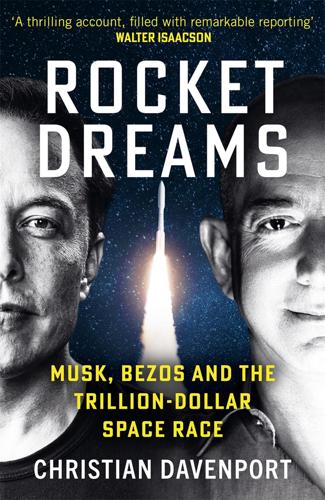
Rocket Dreams: Musk, Bezos and the Trillion-Dollar Space Race
by
Christian Davenport
Published 6 Sep 2025
This would mark a significant step in the space race that was developing between the United States and China—and put Bezos at the fore-front. While other technology companies were shunning the Pentagon for fear of their technology being used in conflict, Bezos felt it was Amazon’s patriotic duty to help serve the nation. It was lucrative as well. In 2013, Amazon Web Services won a $600 million cloud computing contract from the Central Intelligence Agency. And Bezos would defend his decision while going after another cloud computing contract, this one worth $10 billion. “We are going to continue to support the DoD, and I think we should,” he said in 2018. “One of the jobs of a senior leadership team is to make the right decision, even when it’s unpopular.
…
“Our contribution to national security is going to be making a great BE-4 engine, and then the United Launch Alliance is going to use that engine in their vehicle for national security payloads,” Bezos responded. “I’m very excited about that.” This seemed pretty definitive, especially to the ULA executives sitting in the audience: Blue would not pursue national security contracts. But Bezos went on to add: “The C.I.A. is a big user of Amazon Web Services. It has been very gratifying to be part of that national security mission. Not that I really need any additional passion or motivation for space, but I have to tell you that all of us at Blue Origin find the fact that we are going to get to help with the national security missions incredibly motivating.”
…
Then, on January 25, 2020, he hosted Trump’s daughter, Ivanka; her husband, Jared Kushner; and Trump adviser Kellyanne Conway at a party at his $23 million mansion in Washington, D.C., which he’d purchased shortly before Trump’s victory in the 2016 election. But tensions lingered between the Trump White House and Bezos, particularly over a highly anticipated Pentagon cloud-computing contract that was worth $10 billion over ten years. Amazon Web Services, which had a similar contract with the Central Intelligence Agency, was considered the favorite. But in 2019, the Department of Defense awarded the contract to Microsoft. Amazon protested the decision in unusually harsh terms, alleging that Trump had directly interfered with the procurement as retribution for Bezos’s ownership of the Post.

Modern Monopolies: What It Takes to Dominate the 21st Century Economy
by
Alex Moazed
and
Nicholas L. Johnson
Published 30 May 2016
Here are a few examples: Computing platform: Underlying computer system on which application programs can run (e.g., Symbian) Product platforms: Common design, formula, or versatile product, upon which a family or line of products is built (e.g., a car chassis used across many different models) Industry platform: Products, services or technologies that serve as foundations upon which complementary products, services, or technologies can be built (e.g., Intel) Platform as a service: Category of cloud computing services that provides computing platform and solution stack as an online service (e.g., Amazon Web Services) Each of these instances of the word “platform” refers to an underlying product or technology that allows modular components to be built on top of it. Platform business models often use this kind of modular modification, which is why the terms frequently are conflated. Finally, probably the most common misuse of the term “platform” is when it’s used to describe an integrated suite of software products.
…
Today, its app store has millions of app downloads and is an important part of Salesforce’s value proposition. Other cloud software industries have evolved in a similar manner, such as cloud data storage and so-called infrastructure-as-a-service (IaaS) companies. Both Google App Engine and Amazon Web Services have robust development platforms with thousands of available apps and integrations. Healthcare software is another great example of this trend. The first wave of new healthcare software came during the dot-com era. Like Wilson’s Dentasoft and most enterprise software at the time, these products were sold for large, up-front fees.
…
And although Facebook started as a social networking platform, it has expanded to include content platforms (Instagram and Facebook Pages), messaging platforms (Messenger and WhatsApp), and development platforms, as well as a number of experiments with product and services marketplaces. Finally, Amazon has the Amazon Marketplace, Amazon Payments, Amazon Web Services, Fire TV, and the Kindle, which includes both a content platform (for books and digital content) and an Android-based development platform (for apps). The e-commerce company is also looking at expanding into services marketplaces with its Home Services marketplace. In China, the outcome has been similar, with the dominant platform ecosystems controlled by Baidu, Alibaba, and Tencent, collectively referred to in China as BAT.

Designing Data-Intensive Applications: The Big Ideas Behind Reliable, Scalable, and Maintainable Systems
by
Martin Kleppmann
Published 17 Apr 2017
. • CPU clock speeds are barely increasing, but multi-core processors are standard, and networks are getting faster. This means parallelism is only going to increase. • Even if you work on a small team, you can now build systems that are distributed across many machines and even multiple geographic regions, thanks to infra‐ structure as a service (IaaS) such as Amazon Web Services. • Many services are now expected to be highly available; extended downtime due to outages or maintenance is becoming increasingly unacceptable. Data-intensive applications are pushing the boundaries of what is possible by making use of these technological developments. We call an application data-intensive if data is its primary challenge—the quantity of data, the complexity of data, or the speed at which it is changing—as opposed to compute-intensive, where CPU cycles are the bottleneck.
…
Thus, multi-machine redundancy was only required by a small number of applications for which high availability was absolutely essential. However, as data volumes and applications’ computing demands have increased, more applications have begun using larger numbers of machines, which proportion‐ ally increases the rate of hardware faults. Moreover, in some cloud platforms such as Amazon Web Services (AWS) it is fairly common for virtual machine instances to become unavailable without warning [7], as the platforms are designed to prioritize flexibility and elasticityi over single-machine reliability. Hence there is a move toward systems that can tolerate the loss of entire machines, by using software fault-tolerance techniques in preference or in addition to hardware redundancy.
…
Summary | 23 [8] Haryadi S. Gunawi, Mingzhe Hao, Tanakorn Leesatapornwongsa, et al.: “What Bugs Live in the Cloud?,” at 5th ACM Symposium on Cloud Computing (SoCC), November 2014. doi:10.1145/2670979.2670986 [9] Nelson Minar: “Leap Second Crashes Half the Internet,” somebits.com, July 3, 2012. [10] Amazon Web Services: “Summary of the Amazon EC2 and Amazon RDS Ser‐ vice Disruption in the US East Region,” aws.amazon.com, April 29, 2011. [11] Richard I. Cook: “How Complex Systems Fail,” Cognitive Technologies Labora‐ tory, April 2000. [12] Jay Kreps: “Getting Real About Distributed System Reliability,” blog.empathy‐ box.com, March 19, 2012. [13] David Oppenheimer, Archana Ganapathi, and David A.
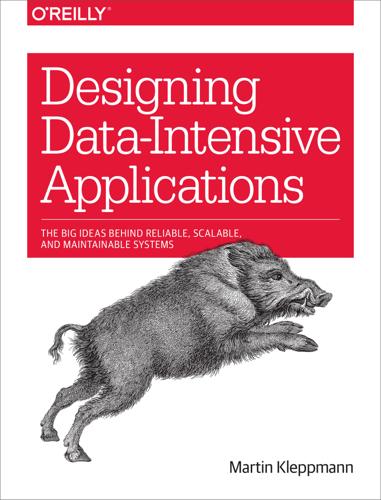
Designing Data-Intensive Applications: The Big Ideas Behind Reliable, Scalable, and Maintainable Systems
by
Martin Kleppmann
Published 16 Mar 2017
CPU clock speeds are barely increasing, but multi-core processors are standard, and networks are getting faster. This means parallelism is only going to increase. Even if you work on a small team, you can now build systems that are distributed across many machines and even multiple geographic regions, thanks to infrastructure as a service (IaaS) such as Amazon Web Services. Many services are now expected to be highly available; extended downtime due to outages or maintenance is becoming increasingly unacceptable. Data-intensive applications are pushing the boundaries of what is possible by making use of these technological developments. We call an application data-intensive if data is its primary challenge—the quantity of data, the complexity of data, or the speed at which it is changing—as opposed to compute-intensive, where CPU cycles are the bottleneck.
…
Thus, multi-machine redundancy was only required by a small number of applications for which high availability was absolutely essential. However, as data volumes and applications’ computing demands have increased, more applications have begun using larger numbers of machines, which proportionally increases the rate of hardware faults. Moreover, in some cloud platforms such as Amazon Web Services (AWS) it is fairly common for virtual machine instances to become unavailable without warning [7], as the platforms are designed to prioritize flexibility and elasticityi over single-machine reliability. Hence there is a move toward systems that can tolerate the loss of entire machines, by using software fault-tolerance techniques in preference or in addition to hardware redundancy.
…
[7] Laurie Voss: “AWS: The Good, the Bad and the Ugly,” blog.awe.sm, December 18, 2012. [8] Haryadi S. Gunawi, Mingzhe Hao, Tanakorn Leesatapornwongsa, et al.: “What Bugs Live in the Cloud?,” at 5th ACM Symposium on Cloud Computing (SoCC), November 2014. doi:10.1145/2670979.2670986 [9] Nelson Minar: “Leap Second Crashes Half the Internet,” somebits.com, July 3, 2012. [10] Amazon Web Services: “Summary of the Amazon EC2 and Amazon RDS Service Disruption in the US East Region,” aws.amazon.com, April 29, 2011. [11] Richard I. Cook: “How Complex Systems Fail,” Cognitive Technologies Laboratory, April 2000. [12] Jay Kreps: “Getting Real About Distributed System Reliability,” blog.empathybox.com, March 19, 2012

Bold: How to Go Big, Create Wealth and Impact the World
by
Peter H. Diamandis
and
Steven Kotler
Published 3 Feb 2015
• We will balance our focus on growth with emphasis on long-term profitability and capital management. At this stage, we choose to prioritize growth because we believe that scale is central to achieving the potential of our business model. This letter is often held up as the encapsulation of Bezos’s view on the subject, but personally, I think an answer he gave to an Amazon Web Services Live audience in 201227 was far more revealing: “What’s going to change in the next ten years?” And that is a very interesting question; it’s a very common one. I almost never get the question: “What’s not going to change in the next ten years?” And I submit to you that that second question is actually the more important of the two—because you can build a business strategy around the things that are stable in time. . . .
…
But it’s the combination of long-term thinking and customer-centrism that has helped Amazon extend their reach far beyond books. Bezos has ventured into music, movies, toys, electronics, automotive parts, and well, just about everything. They have also continued to surround their original market, moving from books into ebooks and ebook readers (with Kindle), and most recently, publishing itself. Meanwhile, Amazon Web Services—their cloud business—has become a beast in its own right (worth nearly $3 billion, according to a November 2013 Business Insider analysis).28 As Morgan Stanley analyst Scott Devitt told the New York Times:29 “Amazon is marching to a different drumbeat, which is long term. Are they doing the right thing?
…
Italic numbers refer to charts/graphs Aabar, 127 Abundance (Diamandis and Kotler), xi–xii, xv, 34, 54, 136, 137, 146, 162, 274 AbundanceHub.com, 158, 162, 210, 277 Abundance360Summit, 278 Academy of Achievement, 129 activists, xiii, 180 in crowdfunding campaigns, 201–3, 212, 230 additive manufacturing, 30, 31, 33, 41 AdhereTech, 47 AdSense, 139 Advanced Research Projects Agency Network (ARPANET), 27 advertising, 241, 242 in crowdfunding campaigns, 212–13 crowdsourcing platforms for, 151, 152–54, 158 advocates, in crowdfunding campaigns, 200–201, 205 AdWords, 241 aerospace industry, 112, 117, 133 skunk methodology used in, 71–73, 75 3–D printing and, 34, 35–37 see also space exploration affiliate marketing, 199–200, 205 Ahn, Luis von, 154, 155–56 Airbnb, 20, 21, 66 Airbus, 249 airlines, 43, 124, 125, 126, 127, 260 AI XPRIZE, 54 algorithms, 43, 51, 52, 66, 85, 220, 227 crowdsourcing projects and, 158, 159, 160, 161, 227 machine-learning, 54–55, 55, 58 Netflix Prize for, 254–56 PageRank, 135 Align Technology, 34–35 Amazon, 50, 76, 97, 128, 129–34, 157, 195, 254 drone proposal of, 61, 133–34 Amazon Web Services, 131, 132 America Online (AOL), 76, 143 Anderson, Chris, 10–11, 54, 123, 224, 229, 242 Anderson, Eric, 95, 96, 97, 98, 99, 100, 179, 202, 203–4 Andraka, Jack, 65 Andreessen, Marc, 27, 33 Android, 16, 135, 176 AngelList, 172, 173–74 Anheuser-Busch, 145 Ansari XPRIZE, 76, 96, 115, 127, 134, 246, 248–49, 253, 260, 261, 262, 263, 264, 265, 266, 267, 268 anti-aging projects, 66, 81, 136, 139 Apollo Program, 96, 100, 118, 139 Appert, Nicolas, 245 Appirio, 227–28 Apple, 18, 28, 62, 72, 111, 128 applications (apps), 13, 13, 15, 16, 28, 45, 47, 150, 158, 176 Arduino, 43 ARKYD Space Telescope campaign, 172, 174–75, 179–80, 186, 187, 188, 193, 195, 207, 209, 242 early donor engagement in, 203–5 hype created in, 205 launch of, 200, 208 recruiting of activists in, 201–3, 212 ”space selfie” reward offered in, 180, 189–90, 196, 208 Arnaout, Ramy, 227 artificial intelligence (AI), x, 22, 24, 41, 44, 52–59, 61, 62, 63, 66, 81, 135, 146, 160, 162, 216, 228, 275, 276, 295n crowdsourcing projects and, 167, 295n entrepreneurial opportunities in, 54, 56–59 Google’s development of, 24, 53, 58, 81, 138–39 Association of Space Explorers, 102 asteroids, ix–x, 180, 228–29 mining of, 95–96, 97–99, 107, 109, 179, 221, 276 Asteroid Zoo, 228 astronomy, 219–21, 228, 247, 267 Autodesk, 48–49, 51, 63, 65 automation, 47–48, 56 automobile industry, 29, 222–23 3–D printing in, 32 see also Local Motors; Tesla Motors autonomous cars, 43–44, 44, 48, 62, 66, 135, 136, 137, 262 autonomy, 79, 80, 85, 87, 92 Babson School of Business, 14 BackRub (research project), 135 Bacon, Jono, 237 Bad Girl Ventures, 19 bake-offs, in incentive competitions, 264 Barnett, Chance, 173 Barrie, Matt, 149–50, 158, 163, 165, 166, 167, 207 Barry, Dan, 35, 61, 62 Bass, Carl, 48–49, 50, 51 Baxter (robot), 60–61 Beland, Francis, 250 Bennett, Jim, 255 Berns, Gregory, 108 Beth Israel Deaconess Medical Center (Boston), 227 Better Blocks, 240–41 Bezos, Jeff, xiii, 73, 97, 115, 126, 128–34, 138, 139, 167 on risk management, 76–77 thinking-at-scale strategies of, 128, 129, 130–33 Bezos, Mark, 128 Bianchini, Gina, 217, 219, 224, 233 Big Think, 49, 121 biotechnology, 63–65 see also genomics; synthetic biology BlackBerry, 176 Blakey, Marion, 110 Blastar (video game), 117 blogs, in crowdfunding campaigns, 177, 205, 206 blue ellipticals, 219–20 Blue Origin, 97, 133 Boeing, 127, 249 Boston Dynamics, 61 Boston Globe, 227 Brand, Stewart, 26 Branson, Richard, xiii, 73, 84, 86, 99, 100, 111–12, 115, 123–28, 138, 139 space tourism projects of, 96–97, 115, 125, 127 thinking-at-scale strategies of, 125–27 Briggs, William, 47 Brin, Sergey, 81, 128, 135 British Admiralty, 267 British Airways, 124, 125, 126 British Medical Journal, 109 British Petroleum (BP), 250, 251 Brooks, Rodney A., 60 Brown, Dan, 152 brute force, 51 Burchard, Brendon, 210 Business Insider, 132 Business World, 144 buzz marketing, 240–41 Bye, Stephen, 45 Calacanis, Jason, 139 Calico, 139 Callaghan, Jon, 62 Caltech, 27 camel racing, 59–60 cameras, 3–4, 152 see also digital cameras Cameron, James, 250 campaign managers, in crowdfunding, 192, 194 Canadian Space Agency (CSA), 102 Cane, Daniel, 57 Capp, Al, 71, 72 CAPTCHA, 154, 155, 167, 295n CastingWords, 145 celebrity (the face): in crowdfunding campaigns, 192, 198, 207 in incentive competitions, 273 cell phones, 49, 135, 163 see also smartphones CFM International, 34 challenge/skills ratio, 91 “charge-coupled device” (CCD), 4–5 Chen, Michael, 35, 36, 37 China, 17, 18, 62 Chinese National Space Administration, 102 Chrome, 135, 138 Chung, Anshe, 144 Cinematch, 254, 255 Cisco, 46 Clarke, Arthur C., 52, 53, 100 cloud services, 39, 45, 50, 51, 56, 57, 63, 65, 66, 132, 216, 227–28 CNN, 48 cognitive biases, 246 cognitive surplus, 215 CoheroHealth, 47 Colgate Palmolive, 154 Comedy Central, 95 communities, online, 22, 182, 215–42, 243 building member base in early days of, 233–34 case studies of, 219–28 collaborative structures of, 217, 227, 228, 236, 237, 255 contests and competitions in building of, 224, 225–27, 232, 237, 240; see also incentive competitions DIY, see DIY communities driving growth in, 239–41 engagement strategies in, 224, 227, 235, 236–38, 239, 241 exponential, see exponential communities Law of Niches in, 221, 223, 228, 231 managing of, 238–39 monetization of, 241–42 passion as important in, 224, 225, 228, 231, 258 rate of innovation in, 216, 219, 224, 225, 228, 233, 237 rating systems in, 226, 232, 236–37 reputation economics in building of, 217–19, 230, 232, 236–37 self-organizing structures of, 217, 237 see also crowdfunding, crowdfunding campaigns; crowdsourcing Compaq, 117 computers, x, 7, 26, 72, 76, 135 see also artificial intelligence (AI); supercomputers Comsat, 102 constraints, power of, 248–49, 259 contract research and manufacturing services (CRAMS), 65 Coolest Cooler campaign, 210–13 corporate sponsorship, 246, 246 Cotichini, Christian, 257 Cotteleer, Mark, 33 Coulson, Simon, 150 Craigslist, 11, 257 creative assets, crowdsourcing of, 158 Creative Commons license, 224 Credit Suisse, 56 Cretaceous Period, ix CrossFit, 229 Crowdfunder, 172, 173, 175 crowdfunding, crowdfunding campaigns, xiii, 22, 103, 144–45, 147–48, 167, 169–213, 216, 242, 243, 247, 258, 270 advertising in, 212–13 building perfect team for, 191–94 building your audience in, 199–203 case studies in, 174–80 celebrity face of, 192, 198, 207 choosing idea for, 184–85 costs in, 195 data-driven decision making in, 207–10, 213 emergence of, 170–71, 170 engagement strategies in, 203–6, 207 feedback in, 176, 180, 182, 185, 190, 199, 200, 202, 209–10 fundraising targets in, 185–87, 191 global focus in, 209 how-to guide to, 181–213 launching with super-credibility in, 190, 199, 203, 204 length and schedule for, 187–89 pitch videos in, 177, 180, 192, 193, 195, 198–99, 203, 212 planning, materials, and resources in, 194–95 promotions and contests in, 207 reward-based, see reward-based crowdfunding setting rewards in, 189–91, 189 seven benefits of, 181–83 telling meaningful story in, 195–98 types of, 172–75 week-by-week execution plan for, 206–7 see also specific crowdfunding campaigns Crowdsortium, 162–63 crowdsourcing, xiii, 18, 22, 57, 85, 103, 143–67, 193, 223, 237, 240–41, 243, 245, 256, 275 in advertising, 151, 152–54, 158 AI as potential threat to, 167, 295n in automotive production, 223–24, 238 best practices of, 163–67 building communities for, see communities, online clear roles and communication in, 165–66 collaboration in, 144, 165–66, 167, 217, 227, 228, 236, 237, 255, 260–61 competitions and, 148, 152–54, 159, 160, 223, 224, 226–27, 232, 237, 240, 259; see also incentive competitions of creative and operational assets, 158–60 definition of, 144 in designing incentive competitions, 257–58 dual-use, 154–56 Freelancer.com case study in, 149–51, 158 growing interconnectedness and, 146–47, 147 incentive competitions and, see incentive competitions industry websites on, 162–63 of micro- vs. macrotasks, 156–58 most common uses for, 156–67 in product development, 18, 19, 223–25, 226–27 in retail and consumer products industry, 159–60 in scientific research, 145–46, 220–21, 227, 228–29 in software development, 144, 159, 161, 226–27, 236 of testing and discovery insights, 160–62 traffic data garnered by, 47 Crowdsourcing.org, 162 Csikszentmihalyi, Mihaly, 89, 92 Cube, 32 CubeSats, 36–37 Culver, Irv, 72 Cummins Engine, 222 Curiosity rover, 99 customer-centric business, 84, 116, 126, 128, 130, 131–32, 133, 138 Daily Show, 95 DARPA Grand Challenge, 262 Dartmouth Summer Research Project, 59 data mining, 42–44, 47–48, 256 AI’s role in, 55–59 behavior tracking and, 47 see also information data sets, preparing of, 164 Da Vinci Code, The (Brown), 152 debt funding, 172, 173, 174 deceptive phase, exponential, 8, 8, 9, 10, 24, 25–26, 29, 41 of AI, 59 in robotics, 60 of 3–D printing, 30, 31 Deep Learning (algorithm), 58, 59 Deepwater Horizon oil rig, 250 Defense Department, US, 71, 72 DeHart, Jacob, 143, 144 DeJulio, James, 151–52, 153, 166 Dell, 50 Deloitte Center for the Edge, 106 Deloitte Consulting, 33, 39, 159, 160, 245, 274 Deloitte University Press, 56 dematerialization, exponential, 8, 8, 10, 11–13, 14, 15, 20–21, 66 democratization, exponential, xii, 8, 10, 13–15, 21, 33, 59, 276 in bioengineering, 64–65 infinite computing and, 51–52 demonetization, exponential, 8, 8, 10–11, 14, 15, 138, 163, 167, 223 in bioengineering, 64–65 infinite computing and, 52 D.

The Truth Machine: The Blockchain and the Future of Everything
by
Paul Vigna
and
Michael J. Casey
Published 27 Feb 2018
If you are already uncomfortable with what Google, Amazon, Facebook, and Apple know about you, think about it in the context of a centralized IoT. Having transactions pass through a small number of behemoth companies would not only be an inefficient way to route data and require regulatory constraints to the system, but it could also create an Orwellian level of control. Do we really want Amazon Web Services or any other big cloud service provider controlling all that valuable data? Not only would that company gain an unprecedented, privileged window onto the entire world of material things and human activity, but it would, in effect, put those centrally controlled companies in charge of what will be billions of machine-to-machine transactions of tokens and digital currencies.
…
That would overwhelm a distributed ledger’s limited storage capacity very quickly—certainly that of Bitcoin. Rather, the data will reside off-chain, wherever the person or institution chooses to store it: locally on their own computer, smartphone, or other device; with a cloud computing service from IBM, Microsoft, or Amazon Web Service. All those options, of course, require some level of trust in the provider. So it’s interesting that some of the emerging decentralized systems for storing data over the Internet, such as Maidsafe, Storj, IPFS (the Interplanetary File System), or Sia, are also being touted as personal data management tools for identity purposes.
…
There are blockchain-based offerings looking to disintermediate the business of outsourced storage and computing, for example, to break the expensive, wasteful, and environmentally harmful dominance of corporate-owned data centers. With names such as Storj, Sia, and Maidsafe, these new platforms reward you with tokens if you offer up your spare hard-drive space to other computer users in a global network of users. You could say these “cloud” services are much truer to that name than those of Amazon Web Services, Google, Dropbox, IBM, Oracle, Microsoft, and Apple, the providers with which most people associate that word. But even bigger changes are being considered, including projects to entirely re-architect the Web itself. There’s Solid, which stands for Social Linked Data, a new protocol for data storage that puts data back in the hands of the people to whom it belongs.

Chaos Engineering: System Resiliency in Practice
by
Casey Rosenthal
and
Nora Jones
Published 27 Apr 2020
For one thing, it took eight years to fully extract themselves from the datacenter. More relevant to our interests, the move to horizontally scaled cloud deployment practices did not coincide with the boost to uptime of the streaming service that they expected.3 To explain this, we have to recall that in 2008, Amazon Web Services (AWS) was considerably less mature than it is now. Cloud computing was not yet a commodity, and not nearly the no-brainer, default deployment option that we have today. Cloud service back then did hold a lot of promise, and one of those promises was that instances4 would occasionally blink out of existence with no warning.
…
The framework consists of four primary functions: Generatr Identifies the object to inject the failure on and calls Slingr. Slingr Injects the failure. Trackr Logs details about the experiment as it occurs. Experiment description Provides documentation on the experiment along with applicable input and output parameters for Lambda functions. ChaoSlingr was originally designed to operate in Amazon Web Services (AWS). It proactively introduces known security failure conditions through a series of experiments to determine how effectively security is implemented. The high-level business driver behind the effort was to improve the company’s ability to rapidly deliver high-quality products and services while maintaining the highest level of safety and security possible.
…
Index A above-the-line systems, Putting the Principles into Practice, Conclusion accidental complexity, Accidental Complexity adaptive capacity, Engineering Adaptive Capacity adoptionfour considerations of, Adoption obstacles to, Obstacles to Adoption obtaining management buy-in, Adoption organization-wide progression of, Who Bought into Chaos Engineering organization-wide spread of, How Much of the Organization Participates in Chaos Engineering perquisites to, Prerequisites After phasedefined, Creating Foresight summary of, Hypothesize Agile movement, Economic Pillars of Complexity Applied to Software alerting, Monitoring and alerting Allspaw, John, Human Factors, People in the Loop-Conclusion Alquraan, Ahmed, Fault Injection in the Network Alvaro, Peter, Human Factors, The Substitution Myth, The Experiment Selection Problem (and a Solution)-Conclusion Amazon Web Services (AWS)Christmas Eve 2012 outage, Chaos Monkey Is Born early days of, Management Principles as Code Antifragility, Antifragility application logiccontinuous verification for, Correctness fault injection testing, Fault Injection in Applications mismatch with business logic, Example 1: Mismatch Between Business Logic and Application Logic-Example 1: Mismatch Between Business Logic and Application Logic Aschbacher, Nathan, Evolution, Let’s Get Cyber-Physical-Conclusion automated canaries, Types of CV Systems B backup and restorein older systems, Design Patterns Common in Older Systems security Game Days, Security Game Days Barker, James, Moving your organization forward Beck, Kent, Economic Pillars of Complexity Before phasecognitive interviews, Effectively Partnering Internally-Understand Operating Procedures defined, Creating Foresight discussion of scope, Discuss Scope experiment design, Designing the Experiment-Tool Support for Chaos Experiment Design goal of, Steps of the Chaos Engineering Cycle hypothesis creation, Hypothesize-Hypothesize role determination, Hypothesize summary of, Hypothesize below-the-line systems, Putting the Principles into Practice, Conclusion blind resiliency testing, Blind Resiliency Testing Blue Teams, Security Chaos Engineering and Current Methods bootcamp concept, The hypothesis, All You Need Is Altitude and a Direction bootstrapping, Reboot everything Borg, Scope of Tests at Google “breaking stuff”, Breaking Stuff, Chaos Engineering and Resilience Brooks, Frederick, Confronting Complexity bullwhip effect, Contemplating Complexity bureaucratic organizations, Safely Organizing the Chaos bus factor, People outages business concernsbenefits of collaborative mindset, Open Minds, Open Science, and Open Chaos-Conclusion Chaos Maturity Model (CMM), Chaos Maturity Model-Putting It All Together return on investment (ROI), ROI of Chaos Engineering-Conclusion business continuity plans (BCPs), Business continuity plans business logiccontinuous verification for, Correctness mismatch with application logic, Example 1: Mismatch Between Business Logic and Application Logic-Example 1: Mismatch Between Business Logic and Application Logic C cache inconsistency, Avoid Cache Inconsistency Cahoon, Jason, Principles in Action, Google DiRT: Disaster Recovery Testing-Conclusion call graph tracing, Observability: The Opportunity canary testing, Types of CV Systems capacitycapacity management, Capacity management role in fault tolerance, Getting to Basic Fault Tolerance Capital Oneachievements of, A Capital One Case Study approach to Chaos Engineering at, Principles in Action case studyblind resiliency testing, Blind Resiliency Testing chaos experiments in CI/CD, Chaos Experiments in CI/CD designing experiments, Things to Watch Out for While Designing the Experiment evangelism, Evangelism team structure, Team Structure tooling, Tooling transition to Chaos Engineering, Transition to Chaos Engineering case studies (see use cases) Chaos Automation Platform (ChAP)application of Advanced Principles, The Advanced Principles in ChAP benefits of, ChAP as Continuous Verification demonstrating ROI for, Alternative ROI Example limiting blast radius in, Minimize Blast Radius overview of, Tool Support for Chaos Experiment Design, CV in the Wild: ChAP running experiments, ChAP: Running Experiments selecting experiments, ChAP: Selecting Experiments Chaos Community Day, Community Is Born, The Future of “The Principles” Chaos Engineering (see also Principles of Chaos Engineering)applying to databases, Applying Chaos Engineering-Fault Injection in the Filesystem applying to sociotechnical systems, Humanistic Chaos-If You’re Not Failing, You’re Not Learning benefits of, Safety, Conclusion, Degree of Variation characteristics of, Fast Evolution, The Systemic Perspective, What Chaos Engineering Is-Antifragility conflicting guidance on, Principles in Action, Human Factors core philosophy of, Google DiRT: Disaster Recovery Testing defined, Formalizing the Discipline, What Chaos Engineering Is, Chaos Engineering and Resilience evaluation of, Chaos Maturity Model Failure Mode and Effects Analysis (FMEA) and, FMEA and Chaos Engineering foundational models for, Safety, Economic Pillars of Complexity Applied to Software goals of, Formalizing the Discipline, Breaking Stuff, Chaos Engineering and Resilience, ROI of Chaos Engineering, The Rise of Cyber-Physical Systems history of, Introduction: Birth of Chaos-Fast Evolution Human and Organizational Performance (HOP) and, HOP Meets Chaos Engineering-Chaos Engineering and HOP in Practice in IT and cloud-dominated ecosystems, Let’s Get Cyber-Physical role in complex systems, Setting the Stage, Encountering Complex Systems steps of experimentation, What Chaos Engineering Is, Tooling, Steps of the Chaos Engineering Cycle-Hypothesize team structure, Team Structure Chaos Kong, Going Big, Automation of the platforms Chaos Maturity Model (CMM)Adoption, Adoption-Obstacles to Adoption benefits of, Business Factors, Chaos Maturity Model development of, Chaos Maturity Model mapping the properties, Putting It All Together Sophistication, Sophistication-Automation of the platforms Chaos Monkeyas low-hanging fruit of Chaos Engineering, Vary Real-World Events birth of, Chaos Monkey Is Born, Adoption initial use of, Automation of the platforms popularity of, Why Do We Need Chaos Engineering?

The Psychology of Money: Timeless Lessons on Wealth, Greed, and Happiness
by
Morgan Housel
Published 7 Sep 2020
Just like Heinz Berggruen, but with Microsoft and Walmart instead of Picasso and Matisse. Not only do a few companies account for most of the market’s return, but within those companies are even more tail events. In 2018, Amazon drove 6% of the S&P 500’s returns. And Amazon’s growth is almost entirely due to Prime and Amazon Web Services, which itself are tail events in a company that has experimented with hundreds of products, from the Fire Phone to travel agencies. Apple was responsible for almost 7% of the index’s returns in 2018. And it is driven overwhelmingly by the iPhone, which in the world of tech products is as tail-y as tails get.
…
But CEO Jeff Bezos said shortly after the disastrous launch of the company’s Fire Phone: If you think that’s a big failure, we’re working on much bigger failures right now. I am not kidding. Some of them are going to make the Fire Phone look like a tiny little blip. It’s OK for Amazon to lose a lot of money on the Fire Phone because it will be offset by something like Amazon Web Services that earns tens of billions of dollars. Tails to the rescue. Netflix CEO Reed Hastings once announced his company was canceling several big-budget productions. He responded: Our hit ratio is way too high right now. I’m always pushing the content team. We have to take more risk. You have to try more crazy things, because we should have a higher cancel rate overall.

Chaos Monkeys: Obscene Fortune and Random Failure in Silicon Valley
by
Antonio Garcia Martinez
Published 27 Jun 2016
Until AdGrok’s very end, search terms like “goldman sachs” and “fuck you” (I had written a post about the ever-elusive goal of “fuck-you money”) would be the most popular terms that led to clicks to our site.* It irritated MRM to no end. But hey—I didn’t see fifty thousand people a day lining up to use the product we had built. We’d take eyeballs wherever we could find them. As a result of the Amazon Web Services near fiasco, plus several more outages and server meltdowns, MRM suggested we run a “chaos monkey” from time to time. This was a software tool created and open-sourced by Netflix, meant to test a product or website’s resiliency against random server failures (such as we’d just witnessed with the blog).
…
In tandem, the popularity of accelerators like Y Combinator, plus a general acceptance of entrepreneurship as a career, meant lots of very skilled engineers and product people were skipping the corporate trajectory and building exciting products. The emergence of turnkey, on-demand computation like Amazon Web Services, plus off-the-shelf Web-development frameworks like Ruby on Rails, meant that new ideas were easier than ever to test. Many entrepreneurs chose to build shovels rather than dig for gold, creating more complex software building blocks to underpin the innovation, such as back-end services like Parse, accelerating the startup explosion in an almost exponential way.
…
On the technical side, it means understanding the company’s “stack”; that is, the pile of interrelated user interface and back-end server technologies that power the product. It might even be as detailed as line-by-line code reviews with the startup’s engineers. You can fake a lot in a startup these days, what with Amazon Web Services and all sorts of off-the-shelf back-end components that let any even minimally competent duffer set up a Web app that does something. Intelligent planning for growth is rare among early startups, but it’s the name of the game at a large, rapidly scaling tech company. Waiting for a team to grow from technical adolescence to mature talent was too long even for a larger company.
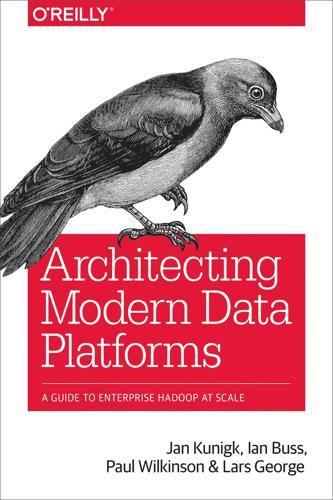
Architecting Modern Data Platforms: A Guide to Enterprise Hadoop at Scale
by
Jan Kunigk
,
Ian Buss
,
Paul Wilkinson
and
Lars George
Published 8 Jan 2019
If there is hardware but it needs to be configured, using an automated deployment process should restore services, including the backed-up data, within days, if not hours. One option to avoid the cost of having a cold standby cluster sitting around is the use of a public cloud offering such as Amazon Web Services (AWS). This allows for quick provisioning of a cluster of likely shared machines, which are then configured similarly to the lost local cluster. Obviously, the real difficulty here is to move the data during a recovery process, but this can be avoided by, for example, using Amazon S3 for backup data or having the cloud provider offer a high-bandwidth interconnect that allows you to copy the backup data when needed.
…
Solutions in the Public Cloud Our discussion of public clouds is different from that of private clouds. In contrast to private cloud Hadoop services, there are thousands of examples in which large organizations and enterprises are successfully running Hadoop in the public cloud. In the coming chapters, we focus our discussion on the three largest public cloud providers in the market: Amazon Web Services (AWS) Microsoft Azure Google Cloud Project (GCP) This chapter looks at the portfolios of our three cloud providers through the lens of Hadoop. We cover the key categories for each: instances, storage, and possible life cycle models. Next, we offer advice on how to use the provider portfolios to implement clusters and big data use cases.
…
Although we focus on Cloudera Director here, we strongly encourage you to look at the similar offerings from other vendors, such as Hortonworks Cloudbreak or MapR Orbit, and to evaluate which is most appropriate for your use case. Cloudera Director As of late 2017, Cloudera Director can be used to provision clusters running Cloudera Distribution, including Apache Hadoop (Cloudera Distribution Hadoop [CDH]), on each of the three major public clouds (Amazon Web Services, Google Cloud Platform, and Microsoft Azure). Director advertises the following key features relevant to our discussion on automated provisioning: Automated provisioning of Cloudera Manager and CDH clusters and supporting databases Deployment of secure, Kerberos-enabled clusters (with a preexisting KDC) Deployment of highly available services Scaling clusters: expansion and contraction of clusters by adding and removing worker nodes Ongoing management: master instance migration Cloudera Director has two components: a command-line client and a server, as shown in Figure 17-3.
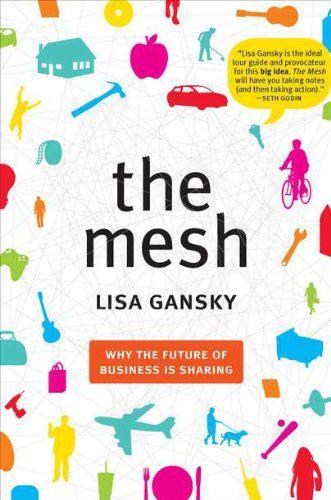
The Mesh: Why the Future of Business Is Sharing
by
Lisa Gansky
Published 14 Oct 2010
They leverage hundreds of billions of dollars in available information infrastructure—telecommunications, mobile technology, enhanced data collection, large and growing social networks, mobile SMS aggregators, and of course the Web itself. They efficiently employ horizontal business to business services, such as FedEx, UPS, Amazon Web Services, PayPal, and an ever-increasing number of cloud computing services. All the Mesh businesses rely on a basic premise: when information about goods is shared, the value of those goods increases, for the business, for individuals, and for the community. Mesh businesses are legally organized as for-profit corporations, cooperatives, and nonprofit organizations.
…
Not all large companies can adopt a Mesh strategy as thoroughly and successfully as Netflix. Many can, will, and have adopted aspects of the Mesh where they’re able to perceive the competitive advantages. Here are five ways: 1. Provide services or platforms that enable and encourage Mesh businesses. We’ve already discussed several, such as Amazon Web Services, PayPal, and FedEx. Like many other companies, the streaming music service Pandora extends its service through an iPhone app. The iPad, Kindle, and Kno are strong new platforms for distributing e-books, blogs, video, and magazines. These services are likely to be reshaped in even more favorable ways by the Mesh as it grows.

Little Bets: How Breakthrough Ideas Emerge From Small Discoveries
by
Peter Sims
Published 18 Apr 2011
Critics ridiculed the company, calling it “Amazon.bomb” or “Amazon.con.” Some Wall Street analysts and investors even called for Bezos to resign. However, the ultimate outcome has been that Amazon’s exploratory mentality has spawned continual breakthroughs, such as Amazon stores, which allows small vendors to sell products on its site, as well as Amazon Web Services (AWS), which includes Elastic Compute Cloud (EC2), permitting third parties to rent storage space on the company’s servers. Third-party vendors now account for roughly 30% of Amazon’s sales, a key source of the company’s impressive growth. Chris Rock, the Google founders, and Jeff Bezos and his team are examples of people who approach problems in a nonlinear manner using little bets, what University of Chicago economist David Galenson has dubbed “experimental innovators.”
…
Abilities, 36–41 Academy Awards, 79, 145 Acoustics, 80–83 Active users, 131, 13–40 Adobe, 19, 89 Advertising, Internet, 4–5 AdWords, 4–5 Affordable loss principle, 28–32, 33 Afghanistan, 25–26, 105 Agile development, 84–91, 148, 151, 152, 194 Agilent Technologies, 19 Agriculture, 99 Alcoholism, 141–42 Al Jabouri, Najim Abdullah, 104, 105 Al-Qaeda, 25–26, 27, 92, 94 Amazon, 5–7, 45, 84, 107, 153 Amazon Auctions, 6 Amazon Web Services (AWS), 7 Ambition, 35 American Psychologist, 141 Animation, 29–32, 41–54, 59–62, 69–76, 105–106, 142–46, 148–49, 155, 158–59, 186–87 humor and, 73–76 plussing, 69–73 prototyping, 59–62 small wins, 142–46, 148–49, 150 See also Pixar; specific animated films Ansari, Daniel, 67–68 Apple, 12, 29, 30, 108, 156 Architecture, 13, 45–46, 54, 55, 77–83, 84, 117, 154, 161, 162 imposition of constraints, 77–84 prototyping, 54–55, 63, 80, 81 See also specific architects and buildings Ariel Ultra, 113–14 Army, U.S., 22–28, 91–95, 103–105, 149–51, 155 counterinsurgency methods, 27, 91–95, 103–105, 149–150, 151, 155 Ballmer, Steve, 156 Bangladesh, 98–102 Barnholt, Ned, 19–22 Bayles (David) and Orland (Ted), Art & Fear: Observations on the Perils (and Rewards) of Artmaking, 169 Beck, Kent, 84 Becket, Welton, 79 Beethoven, Ludwig van, 8, 13, 181–82 Begum, Sufiya, 98–102 Belkin Corporation, 111–13, 153 Belsky, Scott, Making Ideas Happen, 172–73 Berkowitz, Aaron, 67–68 Bezos, Jeff, 5–6, 7, 8, 13, 35, 45, 107, 110–11, 115, 153, 159 Biaj, Iraq, 93–94 Big bets, 20 little bets vs., 19–33 Bird, Brad, 42–44 Blank, Steve, 102–103 Bleeding edge user needs, 136 Blocking, 70 Body language, 123 Boston, 109 Brafman, Ori, 138, 139–40 Click, 138 Sway, 138 Brain, 15, 47, 66, 183–84 capabilities, 47–48 improvisation and, 66–68 Brereton, Kevin, 115 Brin, Sergey, 4–5, 8, 115 Brown, Tim, Change by Design, 171 Bug’s Life, A (film), 59 Bush, George W., 125, 127 Business Land, 112 Calculators, 21–22 Canon, 85 Cars (film), 106 Catmull, Ed, 30–32, 41–45, 60, 62, 75, 121, 142–46, 148–49, 150 CAT scans, 30 Central planning approach, 15–17, 24–26 Challenges, 38, 48, 49, 78 growth mind-set and, 35–49 Chance opportunities, 123, 124, 129 Chandler Pavilion, Los Angeles, 79, 80, 83 Change, 160–61 Chanos, James, 109 Chesborough, Henry, Open Innovation, 166 Chicago, 55–58 Child, Julia, 115 Child development, 160–61 Christensen, Clayton, 107 The Innovator’s Dilemma, 166 The Innovator’s Solution, 166 Clinton, Hillary, 56, 125, 126 CNBC, 125 Cockburn, Alistair, 84 Cold War, 23–26 Collins, Jim: Built to Last, 166–67 Good to Great, 120–21, 166 How the Mighty Fall, 166 Columbia University, 36 Comedian, The (film), 165 Comedians, 1–3, 12, 13, 32, 109, 128, 131, 133, 135, 140, 141, 151, 154–55 Competition, 17, 156 Computer Land, 112 Computer Point, 112 Computers, 22, 29, 83, 107–108, 110, 112–13, 142–46 animation, 29–32, 41–45, 59–62, 69–76, 105–106, 142–46, 148–49, 186–87 software, 83–91, 112, 136–37, 143–46, 149, 151–52 See also Internet Conceptual innovation, 7, 180–81 Confidence, and growth mind-set, 35–41 Consolidating gains, 149 Constraints, imposition of.

Designing Reactive Systems: The Role of Actors in Distributed Architecture
by
Hugh McKee
Published 5 Sep 2016
When programs run in a computer system, the actual work is handled by what is called a thread or thread of execution. Just as each computer system has a limited number of cores and a limited amount of memory, there is also a limited number of threads. A typical computer system has a small number of cores, and common small or medium-sized servers may have 4 to 16 processing cores. (Just looking at Amazon Web Services instances, you can see it’s possible to provision cloud instances with 128 processor cores and 2 terabytes of in-memory RAM.) For memory (RAM), this varies from a few gigabytes to terabytes. A typical server has 8GB to 64GB, but this number keeps going up as the cost of memory decreases in light of technological improvements.

Remix: Making Art and Commerce Thrive in the Hybrid Economy
by
Lawrence Lessig
Published 2 Jan 2009
Everything it does is aimed to drive sales of its products more efficiently. One of the techniques that Amazon uses mirrors the technique of the Internet generally: Amazon has opened its platform to allow others to innovate in new ways to build value out of Amazon’s database. Through a suite of tools called Amazon Web Services (AWS), Amazon enables developers to build products that integrate directly into Amazon’s database. For example, a developer named Jim Biancolo used AWS to build a free Web tool to track the price difference between new products and used products (plus shipping). And a company called TouchGraph used AWS to build a product browser that would show the links between related products.
…
To enable this competition to happen, Netflix shared “a lot of anonymous rating data.” The company 80706 i-xxiv 001-328 r4nk.indd 137 8/12/08 1:55:20 AM REMI X 138 also increasingly offers through RSS feeds access to ranking information about its users’ choices. Amazon does this through its Amazon Web Services. And Google does this perhaps most of all, through Google APIs that encourage what has come to be known as the Google mash-up. Don Tapscott and Anthony Williams describe one example of the Google mash-up in their book, Wikinomics. In May 2005, Paul Rademacher was trying to find a house in Silicon Valley for his job at Dreamworks Animation.
…
Ibid., 195. 80706 i-xxiv 001-328 r4nk.indd 318 8/12/08 1:56:29 AM INDEX ABC, 213 Academy Awards, 45–46 access, 43–49, 67, 106, 255, 261, 291 advertising, 2, 48–49 blogs and, 63, 291 classified, 187 Dogster and, 187 Wikia and, 204–5 Wikipedia and, 161–62, 203–4 Alcoholics Anonymous (AA), 148 Alexa, 236–37 Alexander, Alastair, 208 Allman, Eric, 163–64 amateur creativity, 33, 90, 103 deregulation of, 254–59 in music, 24–29, 32–33 Amazon, 48–49, 125–26, 129–30, 141, 142, 239–40 Little Brother and, 132, 136 Amazon Web Services (AWS), 126, 138 Anderson, Chris, 129 Andover.net, 199 anime music videos (AMVs), 77–78, 79, 80 AOL, 153–54 Apache, 164–65, 183, 241–42 Apple, 88, 142, 165 iPod, 41, 46, 47, 88 iTunes, 12, 13, 41–42, 134 Armstrong, Edwin Howard, 30 Armstrong, Louis, 104 80706 i-xxiv 001-328 r4nk.indd 319 astronomy, 170–71 Atmo, 73 AudioMulch, 12 Awesometown, 227 Bainwol, Mitch, 114 Baker, Stewart, 89 Barish, Stephanie, 80 Barlow, John Perry, 67 barter economies, 180 Baumol, William, 230 Beam-it, 135 Beatles, 74, 75, 255 Becker, Don, 180 Behlendorf, Brian, 164, 183, 242–43 Benkler, Yochai, 50, 58, 59, 62, 118, 140, 146, 169, 172, 176, 178 Berners-Lee, Tim, 58, 221 Bezos, Jeff, 125, 129, 136 Biancolo, Jim, 126 BigChampagne Online Media Measurement, 110 BIND, 164 Blair, Tony, 73–74, 273 blip.tv, 249 Blockbuster, 123–24, 129, 142 blogs, 57, 58–62, 63–65, 103, 139, 291 value of, 92–93 books, 42, 99–100, 268, 269, 291, 292 access to, 43–44 8/12/08 1:56:29 AM 320 books (cont.)

Node.js in Action
by
Mike Cantelon
,
Marc Harter
,
Tj Holowaychuk
and
Nathan Rajlich
Published 27 Jul 2013
Figure 12.1 illustrates how you can use cloud hosting to automate the creation and destruction of an application’s servers. Figure 12.1. Creating, starting, stopping, and destroying cloud servers can be fully automated. The downside to using cloud servers is that they tend to be more expensive than VPSs and can require some knowledge specific to the cloud platform. Amazon Web Services The oldest and most popular cloud platform is Amazon Web Services (AWS; http://aws.amazon.com/). AWS consists of a range of different hosting-related services, like email delivery, content-delivery networks, and lots more. Amazon’s Elastic Compute Cloud (EC2), one of AWS’s central services, allows you to create servers in the cloud whenever you need them.
…
Index [SYMBOL][A][B][C][D][E][F][G][H][I][J][K][L][M][N][O][P][Q][R][S][T][U][V][W][X] SYMBOL 404 status code, 2nd 500 status code, 2nd A absolute paths vs. relative paths Accept header acceptance testing defined overview Soda installing overview using with Sauce Labs using with Selenium Server Tobi Accept-Encoding header add command add-ons for flow control adduser command administration panel middleware after function, 2nd afterEach function, 2nd Ajax (Asynchronous JavaScript and XML) Amazon S3 Amazon Web Services ANSI (American National Standards Institute) ANSI escape codes Apache application dependency application/x-www-form-urlencoded content type, 2nd, 3rd arguments, command-line argv property, 2nd ascii encoding ASI (automated semicolon insertion) asynchronous I/O Asynchronous JavaScript and XML.

Building Microservices
by
Sam Newman
Published 25 Dec 2014
Starting in 2007 with a monolithic Rails application, by 2009 Gilt’s system was unable to cope with the load being placed on it. By splitting out core parts of its system, Gilt was better able to deal with its traffic spikes, and today has over 450 microservices, each one running on multiple separate machines. When embracing on-demand provisioning systems like those provided by Amazon Web Services, we can even apply this scaling on demand for those pieces that need it. This allows us to control our costs more effectively. It’s not often that an architectural approach can be so closely correlated to an almost immediate cost savings. Ease of Deployment A one-line change to a million-line-long monolithic application requires the whole application to be deployed in order to release the change.
…
The more logic that creeps into the client library, the more cohesion starts to break down, and you find yourself having to change multiple clients to roll out fixes to your server. You also limit technology choices, especially if you mandate that the client library has to be used. A model for client libraries I like is the one for Amazon Web Services (AWS). The underlying SOAP or REST web service calls can be made directly, but everyone ends up using just one of the various software development kits (SDKs) that exist, which provide abstractions over the underlying API. These SDKs, though, are written by the community or AWS people other than those who work on the API itself.
…
But Amazon also knew that small teams can work faster than large teams. This led famously to its two-pizza teams, where no team should be so big that it could not be fed with two pizzas. This driver for small teams owning the whole lifecycle of their services is a major reason why Amazon developed Amazon Web Services. It needed to create the tooling to allow its teams to be self-sufficient. Netflix learned from this example, and ensured that from the beginning it structured itself around small, independent teams, so that the services they created would also be independent from each other. This ensured that the architecture of the system was optimized for speed of change.

Zucked: Waking Up to the Facebook Catastrophe
by
Roger McNamee
Published 1 Jan 2019
In parallel, a new concept emerged—the cloud—and the industry embraced the notion of centralization of shared resources. The cloud is like Uber for data—customers don’t need to own their own data center or storage if a service provides it seamlessly from the cloud. Today’s leader in cloud services, Amazon Web Services (AWS), leveraged Amazon.com’s retail business to create a massive cloud infrastructure that it offered on a turnkey basis to startups and corporate customers. By enabling companies to outsource their hardware and network infrastructure, paying a monthly fee instead of the purchase price of an entire system, services like AWS lowered the cost of creating new businesses and shortened the time to market.
…
The case against Amazon is probably strongest, and it provides a framework for understanding the larger issues. For Amazon.com, freedom from antitrust scrutiny has allowed the company to integrate vertically, as well as horizontally. From its original base in retail for nonperishable goods, Amazon has expanded horizontally into perishables, with Whole Foods, and into cloud services, with Amazon Web Services. Amazon’s vertical integration has included Marketplace, which incorporates third-party sellers; Basics, where Amazon private-labels bestselling commodity products; and hardware, such as Alexa voice-controlled devices and the Fire home video server. In a traditional antitrust regime, Amazon’s vertical-integration strategy would not be allowed.
…
Accel Partners, 54, 58 Acxiom, 226 addiction, 100–101, 106–7, 162, 206, 240, 246, 250, 253, 254, 257, 268, 269, 281 advertising, 17, 47, 68–69, 85–86, 105, 120, 125, 257, 283–84 Facebook and, 11–12, 47, 59–61, 63, 68–77, 85, 103, 119, 128–29, 130, 132, 143, 148, 173, 184, 185, 202, 207–9, 211, 217–19, 237–38, 258, 265, 270, 281 Google and, 47, 67–69, 86, 104, 173, 283–86 political, microtargeting in, 237–38 YouTube and, 103, 283–84 Albright, Jonathan, 125 Alcorn, Al, 34 algorithms, 66, 94, 98, 122, 128, 129, 169, 264 extreme views and, 92 of Facebook, 4, 9, 11, 66, 74, 76, 81, 87, 91, 128–29, 143, 166, 232, 235, 243, 270, 274, 277, 281 of Google, 66, 235 of YouTube, 92–93, 139, 274 Allen, Paul, 25 Altair, 34 Altavista, 42 Alter, Adam, 272 Amanpour, Christiane, 147 Amazon, 16, 27, 36, 38, 68, 137, 224, 262, 283 Alexa, 137, 262, 268, 271, 281 Echo, 236 market power of, 46 monopoly power and antitrust issues, 47–48, 136–40, 225–26, 246, 247, 261, 262, 284 Web Services, 40, 41, 137, 138 words associated with, 231 American Academy of Pediatrics, 273 Anderson, Chris, 109 Anderson, Fred, 14 Andreessen, Marc, 27, 36, 37, 43, 58 Android, 138, 204, 271, 282 angel investors, 48 anonymity, 37, 55, 92, 101, 123 antitrust and monopoly issues, 46–48, 136–41, 162, 220, 223, 224, 227, 234, 238, 246, 247, 250, 261–63, 277, 279, 281–83, 285–87 Amazon and, 47–48, 136–40, 225–26, 246, 247, 261, 262, 284 AT&T and, 224–25 Facebook and, 47–48, 100, 136–41, 162, 225–26, 234, 246, 247, 261, 263, 284 Google and, 47–48, 136–40, 162, 225–26, 234, 246, 247, 261–63, 282, 284 Microsoft and, 46–47, 154–55, 286 Apache, 40 Apple, 14, 25, 29–30, 34, 35, 38, 49, 50, 83, 118, 249 iPhone, 38, 84, 100, 105–6, 271 Jones and Infowars and, 228–29 market power of, 46 Onavo and, 140 privacy and, 38, 158, 271 Silver Lake and, 29–30 words associated with, 231 approval, need for, 98 Apture, 107 Arab Spring, 64, 243 ARPANET, 34–35 artificial intelligence (AI), 69, 84–85, 88, 98, 128, 151, 158, 219–20, 223, 236, 252, 260, 261, 263, 264, 267–69, 272 of Facebook, 10, 11, 69, 85, 87, 91, 95, 108, 203, 219–20, 230, 261 of Google, 108, 219–20, 253, 261 Associated Press, 124 AT&T, 224–25 Atari, 34 Atlantic, 195, 231 Attention Merchants, The (Wu), 120 attorneys general, 120, 172, 227 authoritarianism, 278, 279 automobiles, 158, 223 banks, 231–32 Bannon, Steve, 181, 182, 197, 199 Bast, Andy, 109 Belgium, 247 Bell Labs, 225 Berners-Lee, Tim, 36, 161 Bezos, Jeff, 27 Black Lives Matter, 8, 243, 250, 275 Blacktivist, 131 Bloomberg, 50 Blumenthal, Richard, 128 Bodnick, Marc, 14, 18, 59 Bogost, Ian, 195–96 Bolton, Tamiko, 161–62 Bono, 13, 18, 28–29, 30, 59–61, 159 Booker, Cory, 128 Bosworth, Andrew “Boz,” 160, 165 memo of, 204–6 bots, 90, 116, 124, 126, 174, 177, 227 bottomless bowl, 97 Box, 41 brain, 88 brain hacking, 81–82, 118, 141, 148 Brand, Stewart, 177 Brazil, 280 Brexit, 8–9, 96, 180, 196, 198, 244 Breyer, Jim, 58 Bricklin, Dan, 34 Brin, Sergey, 27 bro and hipster cultures, 49–50 Brotopia (Chang), 50 bullying, 87, 101–2, 205, 253, 269, 273, 280, 281 Bushnell, Nolan, 34 Business Insider, 141 BuzzFeed, 204 California, 227–28 environmental regulations in, 201 secession movement, 114, 115 Cambodia, 215, 246 Cambridge Analytica, 78, 180–98, 199, 202–4, 207, 208, 210, 213, 216–18, 251, 259 Cambridge University, 181 Candy Crush, 191, 269 capitalism, 200, 201, 220, 238, 262 Castor, Kathy, 210–11 cell phones, 36, 225 see also smartphones censorship, 252 Center for Humane Technology (CHT), 157, 166–67, 173, 188, 272 Chancellor, Joseph, 181, 186 Chang, Emily, 50 Chaos Monkeys (García Martínez), 71, 72, 73 Chaslot, Guillaume, 92 Chicago School antitrust philosophy, 137–39, 285, 286 children, 214, 240, 253–54 technology and, 106, 156, 166, 237, 255, 268, 269, 272–73, 279–80 China, 162, 205, 215–16 Cisco, 46 CityVille, 191 Clayton Act, 136 Clinton, Bill, 60 Clinton, Chelsea, 167 Clinton, Hillary, 5, 11, 117, 121, 124, 125, 130, 166 Facebook Groups and, 7–8 Clinton Foundation, 130 cloud, 38, 40, 41, 104, 249, 250 Amazon Web Services, 40, 41, 137, 138 CNBC, 118, 161 CNN, 130–31, 147, 161, 193, 229, 231 Coca-Cola, 141 Cohen, Michael, 209–10 Cold War, 32 Columbia University, 54 Common Sense Media, 119, 156–57, 167, 227, 272 Compaq Computer, 27, 35, 152 competition: lack of alteratives to Facebook and Google, 92, 100, 141, 223, 280 see also antitrust and monopoly issues computers, computing, 22, 25, 31–36, 108, 225 in classrooms, 273 cloud, see cloud minicomputers, 33, 46 PCs, 17, 22, 25, 29, 33–36, 40, 42, 45, 46, 273 Congress, 121–33, 135–36, 152, 154, 163, 200, 208, 222, 226, 238 House Energy and Commerce Committee, 209–10, 227 House Intelligence Committee, 123, 127–28, 132, 133, 167, 227 Senate Commerce Committee, 209 Senate Intelligence Committee, 12, 111–12, 127, 132 Senate Judiciary Committee, 128, 131, 132, 136, 209 Zuckerberg’s testimony before, 209–12, 216, 217 Conservative Political Action Conference (CPAC), 174 conspiracy theories, 92–95, 115, 119, 121, 214, 228, 229, 234, 242, 243, 274 Pizzagate, 124–26, 130 Constitution, 12, 259 Fourth Amendment to, 201 content vendors, 283 Conway, Ron, 48 Cooper, Anderson, 81 copyrights, 281 Cosgrave, Paddy, 108–9 Cow Clicker, 195–96 Cox, Chris, 144 Cox, Joseph, 229–30 Cruz, Ted, 185 Currier, James, 47 Cyprus, 125 Czech Republic, 125 Dalai Lama, 31 dark patterns, 96 data and data privacy, 155, 158, 159, 203, 217, 220, 234–36, 238, 253, 258–59, 263–65, 269, 271–72, 277–84 Apple and, 38, 158, 271 Big Data, 158 browsing history, 218–19 Cambridge Analytica and, 78, 180–98, 199, 202–4, 207, 208, 210, 213, 216–18, 251, 259 combined sets of, 68, 285–86 and data as currency, 285 data ownership, 222, 237, 247, 259, 264 data portability, 247 Facebook’s banning of data brokers, 208 Facebook’s continuing threat to, 246 Facebook user data, 4–5, 9, 62, 72, 75–76, 78, 87, 131–32, 141–42, 174, 180–98, 202–4, 210–11, 216–19, 223, 258–59 Facebook user privacy settings, 97 fiduciary rule and, 226–27, 247, 260–61 Global Data Protection Regulation, 221, 222, 224, 259–60 and Internet of Things, 262, 268, 271 and internet as barter transaction, 285 internet privacy bill of rights, 221–24, 226–27 metadata, 68–69, 211, 217–20, 264 passwords and log-ins, 249–50, 271 “price” of data, 285–86 regulations and, 201 and value of data vs. services, 286 Zuckerberg’s attitudes regarding, 4–5, 55–56, 60, 141–42 Data for Democracy, 90, 122, 127 Dead & Company, 74 Defense, U.S.
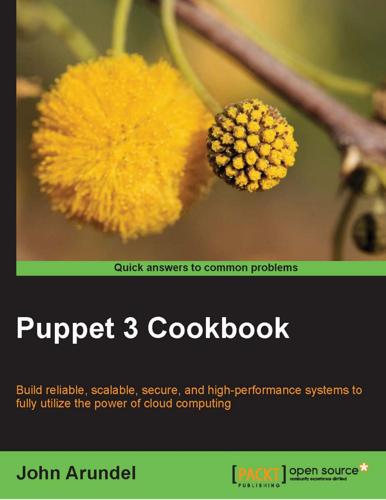
Puppet 3 Cookbook
by
John Arundel
Published 25 Aug 2013
There are plenty of cloud service providers around, with Amazon's EC2 being one of the best-known and oldest-established. In this recipe I'll show you how to manage cloud instances using EC2, but the general principles and most of the code will be adaptable to any cloud provider. Getting ready… You'll need an Amazon Web Services (AWS) account if you don't already have one. Of course if you're using an EC2 instance to try out the recipes in this book, you'll already have everything you need, but otherwise you can sign up for an AWS account here: http://aws.amazon.com/ You'll need the AWS access key ID and secret access key corresponding to your account.
…
How it works… puppet config print will output every configuration parameter and its current value (and there are lots of them). To see the value for a specific parameter, add it as an argument to the puppet config print command: ubuntu@cookbook:~/puppet$ puppet config print noop false See also The Generating reports recipe in this chapter 251 Index A B a2ensite command 148 Amazon EC2 tab 188 Amazon Web Services (AWS) 188 Apache servers about 144 managing 144, 145 Apache virtual hosts creating 145-147 custom domains 149 docroots 149 working 148, 149 APT package framework 106 arguments passing, to shell commands 84, 85 array iteration using, in templates 96, 97 arrays about 45 creating 45 creating, with split function 46 hashes, using 46 using 45 working 45 arrays, of resources using 58 audit metaparameter 140 Augeas tool about 87 automatically editing config files with 89, 90 auto_failback setting 171 automatic syntax checking Git hooks, used 29 AWS Management Console URL 188 Blueprint installing 214 running 215, 216 C case statements about 50, 52 default value, specifying 52 examples 50 working 51 CentOS 8 changes parameter 90 check_syntax.sh script 32 circular dependency about 245 fixing 248 class inheritance extra values, adding using +> operator 78 using 75, 76 cloud computing 188 command output logging 237, 238 working 238 community Puppet style about 34 indentation 34 parameters 35 quoting 34 symlinks 36 using 34 variables 35 conditional statements comparisons 48 elsif branches 48 example 47 expressions, combining 48 working 47 writing 47 config files building with snippets 91- 93 editing automatically with Augeas 89-91 adding lines to 88, 89 configuration data importing, with Hiera 206-208 configuration settings inspecting 251 contain_package assertion 220 cron Puppet, running from 18, 19 cron jobs distributing 126-128 cross-platform manifests writing 79 custom facts creating 200, 201 D Dean Wilson example, URL 231 debug messages logging 239 resource, checking 240 variable values, printing 240 decentralized Puppet architecture creating 14, 16 definitions creating 59 using 59 working 60 dependencies using 61- 64 dependency graphs drawing 245-247 directory trees distributing 135, 136 DocumentRoot parameter 150 dotfiles 121 DOT format, graphs expanded_relationships.dot 247 254 relationships.dot 247 resources.dot 247 dry run mode using 236, 237 dynamic information importing 83 E EC2 instances AWS example, creating 188-193 managing 188 ENC.

Seeking SRE: Conversations About Running Production Systems at Scale
by
David N. Blank-Edelman
Published 16 Sep 2018
This might run afoul of the EU’s General Data Protection Regulation (GDPR)8 compliance rules, which went into effect on May 25, 2018. Again, here are some pitfalls to avoid: Don’t reinvent the wheel; if you have a Data Science or other team concerned about RUM, it might already have a data pipeline9 that we can utilize. Similarly, Google, Amazon Web Services (AWS), and others offer solutions for message queueing and streaming. Don’t rely on third-party APIs as a conduit for monitoring third-party health. Third parties generally do an excellent job of performing what they’re paid to do; however, their reporting APIs are not necessarily their core competency.
…
Of course, you need to put constraints in place to enforce security boundaries and help prevent mistakes, but providing the ability to define and execute delivers the most value. Figure 10-7. Traditional ticket-driven request fulfillment versus full self-service For example, consider the Elastic Compute Cloud (EC2) service from Amazon Web Services (AWS). The ability to press a button and get a running virtual machine was interesting. However, the ability to control your own destiny by making your own machine images (AMIs) and configuration was revolutionary. It empowered individuals and allowed teams to decouple and move at their own pace.
…
Replies Site reliability is operational reliability, scalability, and efficiency. This includes business continuity (disaster recovery, high availability). The operational site becomes a product in and of itself and may include their own CI/CD for internal tooling. The automation tends toward custom tools; for example, Python with Boto library, Ruby with AWS [Amazon Web Services] SDK, and Go language rather than the use of high-level tools like Terraform and Ansible, as they are considered inefficient. Though this is not absolute, just a trend. SRE is programming the operations to create reliable and efficient infrastructure. DevOps focuses on breaking down cultural silos and increasing efficiency or velocity of deployment (CI/CD) pipeline, from development to delivery; this includes building and pre/post artifact testing (testing before and after the artifact is built), thus CT, or continual testing.

WTF?: What's the Future and Why It's Up to Us
by
Tim O'Reilly
Published 9 Oct 2017
Yet for Instagram to exist and thrive, every phone had to include a digital camera and to be connected to a communications network, and that network had to be pervasive and data centers had to provide hosting services that allow tiny startups to serve tens of millions of users. (Instagram had perhaps 40 million users when it was bought; it has 500 million today.) Add up the employees of Apple and Samsung, Cisco and Huawei, Verizon and AT&T, Amazon Web Services (where Instagram was originally hosted) and Facebook’s own data centers, and you see the size of the mountain range of employment of which Instagram itself is a boulder on one small peak. But that’s not all. These digital communications and content creation technologies have made it possible for a new class of media company—Facebook, Instagram, YouTube, Twitter, Snap, WeChat, Tencent, and a host of others around the world—to turn ordinary people into “workers” producing content for their advertising business.
…
I didn’t make that mistake when I gave another version of the talk at an Amazon all-hands meeting in May 2003. The first-generation web services that the e-commerce giant rolled out in 2003 were all about access to their in-house product catalog and its underlying data, and had little to do with the infrastructure services that were launched in 2006 under the name Amazon Web Services (or AWS) and that sparked the great industry transformation that is now called “cloud computing.” Those services came about for entirely different reasons, but I like to think that I planted the seeds of the idea with Jeff that if Amazon was to prosper in the years ahead, it had to become far more than just an e-commerce application.
…
As Jeff described in a short 2008 interview with Om Malik: “Four years ago is when it started, and we had enough complexity inside Amazon that we were finding we were spending too much time on fine-grained coordination between our network engineering groups and our applications programming groups. Basically what we decided to do is build a [set of APIs] between those two layers so that you could just do coarse-grained coordination between those two groups.” (That is, “small pieces loosely joined.”) This is important: Amazon Web Services was the answer to a problem in organizational design. Jeff understood, as every network-enabled business needs to understand in the twenty-first century, that, as HR consultant Josh Bersin once said to me, “Doing digital isn’t the same as being digital.” In the digital era, an online service and the organization that produces and manages it must become inseparable.

Pegasus: How a Spy in Your Pocket Threatens the End of Privacy, Dignity, and Democracy
by
Laurent Richard
and
Sandrine Rigaud
Published 17 Jan 2023
“Some of the biggest hosting companies are in Germany, as well as some of the cheaper ones,” Claudio says. “Pretty common destination when you want to set up infrastructure on a large scale.” Claudio and Donncha were also able to report that NSO had recently—and ill-advisedly—started using Amazon Web Services as a host for at least seventy-three of their servers. A forensic find on Prashant Kishor’s cell phone, just four days before publication, provided Claudio and Donncha new and disturbing detail. Pegasus had exfiltrated nearly 100 megabytes of data from the iPhone in the previous week alone—right around the time Kishor was meeting with the Indian prime minister’s chief political opponent.
…
For your reference, the terms that appear in the print index are listed below. Africa Agalarov, Emin Akhbar al-Youm Aktay, Yasin Algeria Aliyev, Heydar Aliyev, Ilham corruption and Israel and Aliyeva, Mehriban Aliyev family Al Jazeera English Al Maktoum, Mohammed bin Rashid al-Qaeda in Yemen al-Sisi, Abdel Fattah Amar, Ali Amazon Amazon Web Services Amesys Amnesty International (see also Amnesty International, Security Lab; Amnesty Tech) targeting of Amnesty International, Security Lab digital forensic analyses and Forensic Methodology Report forensic tool Megalodon and methodology of peer review and Amnesty Tech Androids Animal Politico Ankara, Turkey Anonymous Ansbacher, Uri Apple cybersurveillance policies of R&D facility in Tel Aviv vulnerabilities and Apple iMessage (see also SMS messages) Apple Music Apple Photos Arab Spring Aramco Araud, Gérard Arenal Romero, Joaquin Arfi, Fabrice Aristegui, Carmen Aristegui, Teresa Aristegui Noticias Armenia Assange, Julian Assiri, Yahya attack vectors (see also exploits) SMS messages as Azano Matsura, Jose Susumo Azenco Azerbaijan Armenia and as client state of NSO corruption in cybersurveillance in elections in human rights in Israel and journalists in. see also Ismayilova, Khadija oil in opposition parties in political prisoners in POWs and targets in United States and in world government rankings Azeri national liberation movement Bahamas Bahrain Baku, Azerbaijan Bataclan theater, attack on BBC Be’er Sheva Belgium Benbenisti, Isaac Ben-Gurion, David Bennett, Naftali Bergman, Ronen Berkeley Research Group (BRG) Bezos, Jeff Biermann, Kai BlackBerrys Blair, Cherie Blair, Tony Boeing Boisseau, Frédéric Bouachrine, Taoufik Bouazizi, Mohamed Boudot, Martin Bouvart, Arthur Bredoux, Lénaïg Breham, Joseph British Virgin Islands Brown, Gordon Bull SA Burj Khalifa Burrough, Bryan Cairo, Egypt Calderón, Felipe Canada Carrasco, Jorge Carroll, John Cartel Project Carter, Ash Casa Blanca story Cash Investigation Caspian Sea Cengiz, Hatice Charbonnier, Stéphane “Charb” Charles, Prince Charlie Hebdo, attack on China Chouf TV Cisco Citi Citizen Lab.
…
See Azano Matsura, Jose Susumo Mubarak, Hosni Mukhtarli, Afgan Munzinger, Hannes Murdoch, Rupert Murillo Karam, Jesus Muslim Brotherhood Mustafayeva, Leyla National Flag Square national security, vs. privacy NEC Neryia, Avishai Netanyahu, Benjamin “network injection attack” Nevada News of the World New York Times Nexa Technologies Nicolino, Fabrice North Korea Novalpina NSO Group Technologies LTD (see also Pegasus) Aliyev government and Azano and bar on infecting mobile phones with US numbers clients of. see also Pegasus end users; specific countries company image competition and corporate governance regime of countermeasures of customers of demise of domain names of employees of financial woes of Francisco Partners and “Governance, Risk and Compliance Committee” Guarnieri answers questions about. see also Pegasus Haaretz and heads of state targeted by Human Rights Policy of Hungary and Israel and Khashoggi assassination and lawsuits against letter from lawyer for license of origin story of publicity campaign to defend regulatory regime and report presented to before publication request-for-response letter to resellers of sales agents of stated values of Transparency and Responsibility Report uses Amazon Web Services as host using process names as camouflage value of vetting program WhatsApp’s lawsuit against Ó Cearbhaill, Donncha background of closing in on NSO development of forensic tool and digital forensic analyses and discovery of Pegasus and Forensic Methodology Report hacktivism and in Ireland Ismayilova and joins Amnesty Tech meeting in Berlin Megalodon and methodology of Mobile Verification Toolkit (MVT) and Radi’s phone and safety concerns Security Lab offline and Technical Analysis of Forensic Traces and Network Measurements Obama, Barack Obermaier, Frederik Obermayer, Bastian Obermayer, Suzanne Obiang, Teodorin oil Olea, Xavier Olioll Olum operating systems, NSO licensing and Oracle Orbán, Viktor Organized Crime and Corruption Reporting Project (OCCRP) Orient XXI Orlando, Florida, nightclub shooting in Orwell, George overregulation Palestinians “Palladium” Panama Panama Papers Panama Project (see also Panama Papers) Panyi, Szabolcs Paradise Papers Pasha Construction Pasha Holdings Pashayevs family Patrucic, Miranda PayPal pedophiles Pegasus development of discovery of earliest system end users of. see also specific countries evolution of heads of state targeted by Khashoggi’s killing and licensing of marketing of offered to Israel’s prospective allies SEDENA’s disappointment with STDi purchases rights to resell targets of. see also specific individuals and groups trickling sales of Pegasus Anonymizing Transmission Network Pegasus Project backlash against conference gaining momentum ground rules identity verification and lawyer for libel laws and maintaining secrecy of and NSO official confirmations of attacks reported publication of security protocols Pegg, David Pelloux, Patrick Peña Nieto, Enrique Pennzoil Perrault, Gilles, Our Friend the King Perrin, Edouard Pethő András Photobucket photos (see also Apple Photos) Pièces à Conviction Pineda, Cecilio Pineda, Marisol Plenel, Edwy Poland politicians (see also specific individuals) Premières Lignes Priest, Dana privacy, vs. national security Proceso process names Puebla, Mexico Putin, Vladimir Qatar Qualcomm Querétaro, Mexico “rackable servers” Radi, Omar after February 20 Movement arrests of conviction of digital forensic analyses of his phone interviews of in jail personal story of targeting of trial of Radio France Radio Free Europe/Radio Liberty (RFE/RL) Radu, Paul Raimondo, Gina M.

The Metaverse: And How It Will Revolutionize Everything
by
Matthew Ball
Published 18 Jul 2022
When consumers own these servers, in the form of consoles or gaming PCs, it doesn’t matter that they’re unused or offline. However, data-center economics are oriented toward optimizing for demand. As a result, it will always be expensive to rent high-end GPUs with low utilization rates. This is why Amazon Web Services gives customers a reduced rate if they rent servers from Amazon in advance (“reserved instances”). Customers are guaranteed access for the next year because they’ve paid for the server, and Amazon is pocketing the difference between the cost and the price the customer is charged (AWS’s cheapest Linux GPU reserved instance, equivalent to a PS4, costs over $2,000 for one year).
…
In addition, the ostensible core of Facebook’s Metaverse strategy is not Oculus, nor VR and AR, but the Roblox and Fortnite-like Horizon Worlds integrated virtual world platform (which is built on Unity). And Roblox has the exact consumers who threaten Facebook’s future—not those disengaging with the social network, but those who never even adopted it. If Facebook is the most aggressive investor in the Metaverse, and Google the most poorly positioned, Amazon sits somewhere in the middle. Amazon Web Services has nearly a third of the cloud infrastructure market and, as discussed throughout this book, the Metaverse will demand unprecedented computing power, data storage, and live services. AWS, in other words, benefits even if other cloud providers take a greater share of future growth. However, Amazon’s efforts to build Metaverse-specific content and services have been largely unsuccessful and arguably less of a priority compared to more traditional markets, such as music, podcasting, video, fast fashion, and digital assistants.
…
See Google Altberg, Ebbe, 110 Amazon, xiv Amazon content via the Apple App Store, 184–85, 197 business model, 164 Fire OS, 213 Fire Phone, 143 gaming and, 178–79, 278, 281n investment in AR/VR hardware, 143, 277–78 market capitalization of, 166 positioning for the Metaverse, 274, 277–78 recommendation engine, 288 see also Bezos, Jeff Amazon Game Studios, 277 Amazon GameSparks, 107–8, 117 Amazon Go, 157 Amazon Lumberyard, 278 Amazon Luna, 96, 131, 277–78, 282 Amazon Music, 197, 277 Amazon Prime, 179, 185, 197, 277–78 Amazon Prime Video, 185, 277 Amazon Web Services (AWS), 84, 99, 277–78 AMC Entertainment, 28 American Cancer Society, 9 American Express, 172, 188 American Tower, 243, 244 America Online (AOL), 13, 15, 61, 130, 165, 273, 283 Andreessen Horowitz, 233 Android, 25, 61, 143, 212–14 Amazon Fire Phone, 143 backwards “pinch-to-zoom” concept, 149–50, 151 game development for, 131 gaming and, 32, 92, 133 Google Cardboard viewer for, 142 Google’s approach to, 184, 212–15, 275 progressive closure of, 213 Samsung’s approach to, 213 the 30% standard, 188, 190–91, 204–5 Animal Crossing: New Horizons, 30–32, 247 AOL Instant Messenger, 61 Apple Audio Interchange File Format (AIFF), 122 dominance of, 189 investment in AR/VR hardware, 143–44 lawsuit from Epic Games, 14n, 22–23, 32n, 134, 186, 284 lawsuit from the European Union, 184 market capitalization of, 166, 186–87 moral stance on pornography, 261 patents of, 143–44, 150 “There’s an app for that” ad campaign, 26, 150, 243 Apple App Store, 26, 132, 165, 309 categories of apps in, 183, 185–87 control over competing browsers, 194–95 control over payment rails, 201–4, 243–44 economics of, 186 as hindering the development of the Metaverse, 192–95, 197–99, 243–44, 309 policies on blockchain, crypto mining, and cryptocurrency trading apps, 200–201 the 30% standard, 120, 172–80, 183–84, 186–92, 197, 201, 203–4, 286 user identity and control, 299 Apple iOS, 60–61 Animoji, 159 “App Tracking Transparency” (ATT), 204–5 AssistiveTouch, 153 control over its NFC chip, 199–200 Face ID authentication system, 159 FaceTime, 65, 83 the home button, 148–49, 244 iCloud storage, 124, 200 “iPad Natives,” 13, 249 iPads, xi, 294 iPhones, 64, 131, 146, 242–44 Metal, 142, 175, 196 multitasking, 149, 244 Newton tablet, 145 “pinch-to-zoom” concept, 149–50, 151 Safari, 194–96, 209 Siri queries to Apple’s servers, 161 “slide-to-unlock” feature, 150–51 WebKit, 39, 194 Apple Music, 184, 197, 255 Apple News, 256 Apple Watch, 152, 161 application programming interfaces (APIs) authentication, 138 Discord APIs, 135 Instagram’s Twitter integration API, 287, 300 proprietary APIs and gaming consoles, 174–77, 287 in United States v.
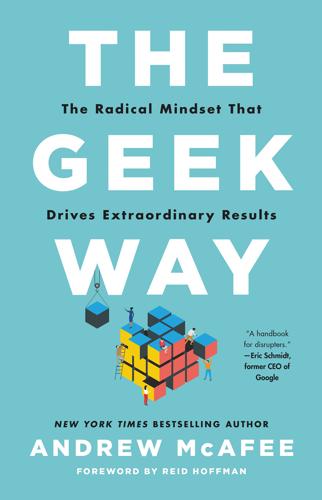
The Geek Way: The Radical Mindset That Drives Extraordinary Results
by
Andrew McAfee
Published 14 Nov 2023
And she said, “Before you say no to me, let me tell you about the opportunity; it’s with Amazon.” I was like, “Amazon, okay. I order books.” And she said, “It’s not that part of Amazon. It’s Amazon Web Services.” And I sat down my glass because I knew that cloud computing was changing business. It was reducing the up-front investment needed to build a technology infrastructure and allowing companies to instead put money into things that mattered to customers. I thought, “Hey, you know what? This could be fun.” Amazon Web Services (AWS) employed only a few thousand people when the recruiter reached out to Williams, but its sales were growing at about 40 percent per year.
…
It rebuilt its systems for super-high modularity (in technical terms, it adopted a service-oriented architecture). Teams could use and combine these modules without needing to ask anyone for access or permission. The company learned so much from this effort and developed so many innovations that it launched a new business, Amazon Web Services, to sell modular technology infrastructure to other companies (thereby helping to create the cloud computing industry). It also permanently shut down the NPI bureaucracy and replaced it with a process that aligned teams’ activities with corporate goals. Amazon eventually settled on two annual alignment processes, called OP1 and OP2.
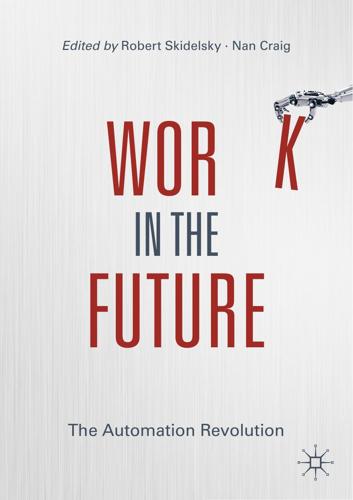
Work in the Future The Automation Revolution-Palgrave MacMillan (2019)
by
Robert Skidelsky Nan Craig
Published 15 Mar 2020
Uber, for instance does not own the cars; they do not have to pay for fuel; they are not responsible for car insurance or maintenance or anything like that. Even in the core of the business, they do not own massive computer servers or anything. Instead, they rent them out from platforms like Amazon Web Services. Effectively, the Uber model has been to try to own as little as possible. But what they do own is the technological platform that connects riders with passengers, and that is the source of their value extraction. The problem for Uber (and likeminded companies) is that this model has not been very profitable.
…
And as companies with extensive data extraction are the most likely to benefit from the virtuous cycle, it means a further consolidation of power, data and resources in the hands of the few companies that already dominate the platform economy. This is all the more important because AI is a general purpose technology.10 AI’s impact will be felt across the economy—so those who control AI, who can actually do AI, are going to have major power and influence in the economy. For instance, for economic impacts we might think about Amazon Web Services or Google Cloud building up AI that they can rent out to other businesses that are too data-poor to build their own AI. They will effectively rent out the basic infrastructure of the digital economy. Likewise, we can imagine companies becoming the sole provider of a particular service. Facebook, for example, already uses such dominance in the attention economy to shape otherwise powerful media companies.
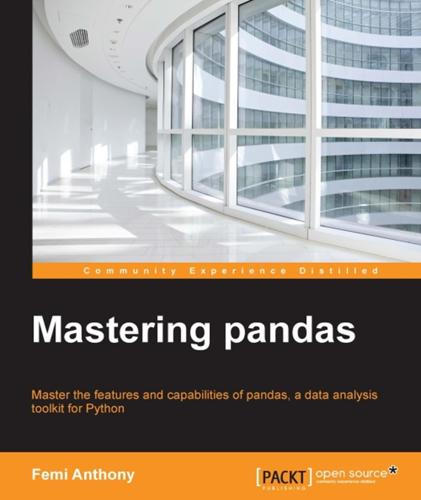
Mastering Pandas
by
Femi Anthony
Published 21 Jun 2015
The conversion from analog to digital media coupled with an increased capability to capture and store data, which in turn has been made possible with cheaper and more capable storage technology. There has been a proliferation of digital data input devices such as cameras and wearables, and the cost of huge data storage has fallen rapidly. Amazon Web Services is a prime example of the trend toward much cheaper storage. The Internetification of devices, or rather Internet of Things, is the phenomenon wherein common household devices, such as our refrigerators and cars, will be connected to the Internet. This phenomenon will only accelerate the above trend.
…
Velocity of big data From a purely technological point of view, velocity refers to the throughput of big data, or how fast the data is coming in and is being processed. This has ramifications on how fast the recipient of the data needs to process it to keep up. Real-time analytics is one attempt to handle this characteristic. Tools that can help enable this include Amazon Web Services Elastic Map Reduce. At a more macro level, the velocity of data can also be regarded as the increased speed at which data and information can now be transferred and processed faster and at greater distances than ever before. The proliferation of high-speed data and communication networks coupled with the advent of cell phones, tablets, and other connected devices, are primary factors driving information velocity.

Mastering Blockchain: Unlocking the Power of Cryptocurrencies and Smart Contracts
by
Lorne Lantz
and
Daniel Cawrey
Published 8 Dec 2020
Centralized, decentralized, and distributed network designs Figures 1-3 through 1-5 illustrate the differences between centralized, distributed, and decentralized systems in the form of databases that store information. Figure 1-3. In a centralized database, like PayPal, all nodes connect to a single, central node that is controlled by one entity Figure 1-4. In a distributed database, like multiple databases hosted on Amazon Web Services (AWS), each node can maintain a replicated copy of the same data, each node knows the identity of other nodes, and all nodes are controlled by one entity Figure 1-5. In a decentralized database, like Bitcoin’s Blockchain, each node can maintain a replicated copy of the same data, each node may not know the identify of other nodes, and all nodes are controlled by many entities who may be anonymous Bitcoin Predecessors The internet’s ubiquity has been disruptive and changed many industries.
…
Blockchain as a Service The concept of Blockchain as a Service (BaaS), where vendors provide easy-to-implement solutions that can be customized, is likely to grow as use cases for the technology increase. Similar to Software as a Service (SaaS) and cloud offerings, these blockchain products provide elements such as centralized management of users and distribution of nodes. Here are a few examples: Amazon Quantum Ledger Part of Amazon Web Services, the Quantum Ledger Database (QLDB) is a ledger that is secured by cryptography and uses the Ethereum and Hyperledger Fabric frameworks. However, the system is centralized, because node-based distributed blockchains are harder to set up. Its strong point is that it offers users the ability to set up an immutable and cryptographically secure ledger.

That Used to Be Us
by
Thomas L. Friedman
and
Michael Mandelbaum
Published 1 Sep 2011
Amazon.com, for example, is now selling not only books and chain saws but business facilities in the cloud. Andy Jassy is Amazon’s senior vice president in charge of Amazon Web Services, Bloomberg BusinessWeek explained (March 3, 2011), which means that his job is to rent space to individual innovators, or companies, on Amazon’s rent-a-cloud. Although all shoppers are welcome, this Amazon, [Jassy] explains, is for business customers and isn’t well marked on the home page. It’s called Amazon Web Services, or AWS … , which rents out computing power for pennies an hour. “This completely levels the playing field,” Jassy boasts. AWS makes it possible for anyone with an Internet connection and a credit card to access the same kind of world-class computing systems that Amazon uses to run its $34 billion-a-year retail operation … AWS is growing like crazy.
…
ACT Adams, Henry Adams, John Advanced Research Projects Agency Afghanistan; Soviet invasion of; U.S. war in African Americans; education of; in World War II Age of Fracture (Rodgers) Ahansal, Mustapha Ahmetovic, Belma Air Force, U.S. Alabama, University of; Creative Campus Alibaba Alice’s Adventures in Wonderland (Carroll) Alito, Samuel Allegheny College Allen, Woody All in the Family (television show) Alonzo, Amanda Alpoge, Levent al-Qaeda Aman, Peter Amanpour, Christiane Amazon; Web Services (AWS) America COMPETES Act (2007) American Association of Retired Persons (AARP) American Federation of State, County and Municipal Employees American Federation of Teachers American Interest, The Americans and the California Dream (Starr) American Society of Civil Engineers (ASCE) American Solutions American Telephone and Telegraph (AT&T) Amtrak Acela Anand, Namrata Andersen, Kurt Anderson, Chris Android Angelides, Phil anti-Federalists AOL Apollo space program Apotheker, Léo Apple; iPad; iPhone; iPod; Macintosh computers Applied Materials apps Arab oil embargo Arab world, uprisings in Argonne National Laboratory Arkansas Armey, Dick Army, U.S.; Training and Doctrine Command Asato, Cathy Asia Society, Center on U.S.

Vulture Capitalism: Corporate Crimes, Backdoor Bailouts, and the Death of Freedom
by
Grace Blakeley
Published 11 Mar 2024
As of 2022, Amazon dominated US ecommerce, with conservative estimates placing its market share at nearly 40 percent.3 Other estimates from 2021 placed the company’s market share in ecommerce as high as 60 percent.4 Within this market-dominating position, the company accounts for more than half of all computer and consumer electronics ecommerce sales and 80 percent of books, music, and video sales.5 Its share of US advertising revenue has also been climbing—its share of ad spending is expected to reach 12.4 percent in 2023, up from 11.7 percent in 2022. Amazon Web Services (AWS), which offers cloud computing services, is by far the most profitable part of the company, accounting for nearly 75 percent of the company’s total operating profit and 32 percent of the global cloud infrastructure market.6 All of this is not enough for some economists to classify Amazon as a monopoly.
…
But neither can it be understood as a traditional monopoly: its strategy isn’t to enclose a single market, erect barriers to entry, and raise prices—it’s to dominate the market for everything. In fact, the company was not even profitable for much of its history. Amazon survived despite market forces, not because of them. Even today, its structure looks highly irrational: certain areas, like Amazon Web Services, are highly profitable, while services like Prime have made large losses. The market is telling Amazon one thing, but it seems to be doing another. Market power is precisely the power to avoid the pressures imposed by the market: it is the power to control the market, rather than be controlled by it.
…
A aerospace industry, 3–10, 16–19, 23, 215–22 Afghanistan, 8, 104 African National Congress (ANC), 202–3 agrochemical industry, 90–91, 123–24 Airbus, 10, 17 Akuno, Kali, 236–37, 251–52 Alibaba, 57–58, 110–11, 171 Allende, Salvador, 241–47, 265, 271 Alphabet (Google), 94, 95, 133 Alpha Natural Resources, 55 Althusser, Louis, 164–65 Amazon, 75–81, 87, 88, 95, 96 Amazon Prime, 76 Amazon Web Services (AWS), 75, 76, 79 Atlas Air (“Amazon Air” subcontractor), 77 lobbying by, 105–6 monopoly power of, 75–77, 132–34 New Taylorism and, 100 Washington Post acquisition, 80 American International Group (AIG), 48–53, 136 American Samoa, US colonialism and, 174 Andalusian Workers’ Union, 230 Anti-Corruption Data Collective, 43 antisemitism, 19–20, 43–44, 53 Aramco, 133 Árbenz, Jacobo, 187–89 Architect or Bee?
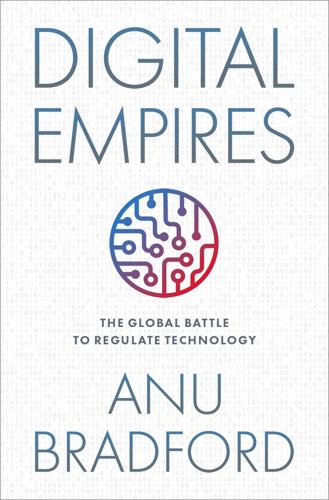
Digital Empires: The Global Battle to Regulate Technology
by
Anu Bradford
Published 25 Sep 2023
Amazon closed its e-commerce operations in China in 2019 after concluding it could not compete with local companies Alibaba and Pinduoduo.33 But even today, many of the most popular products sold on Amazon’s US-based e-commerce site come from China.34 For example, in 2019, a third of the approximately 1,500 suppliers who made Amazon’s private-label products were Chinese.35 Being a marketplace for Chinese products has been at times challenging for Amazon. Following a 2021 crackdown on fake reviews and other banned practices, Amazon removed over 50,000 Chinese shops from its site.36 Beyond selling Chinese products on Amazon.com, the company’s other China-related activities include Amazon Web Services (AWS), which is one of the largest cloud service providers to Chinese companies globally,37 though in China, AWS still only makes up around 5 percent of the domestic market, in line with Microsoft Azure’s market share.38 In 2021, AWS announced that it was expanding its data centers in Beijing and Ningxia.39 Some years ago, China was Amazon-owned Kindle’s largest market, accounting for roughly 40 percent of the company’s global device sales in 2017, though more recent reporting suggests that Kindle is scaling down its operations in China.40 Yet even this limited presence of Amazon and other US tech giants in China has entailed several compromises, as discussed below.
…
To fend off criticism of its collaboration with China’s propaganda apparatus on the China Books project, Amazon emphasized how the company, as a bookseller, ought to provide access to “diverse perspectives,” including books that “some may find objectionable.”75 Like most other US tech companies, Amazon has sought to navigate the Chinese regulatory environment by partnering with local companies and thus shielding itself from direct contact with the country’s censorship and propaganda apparatus. For the China Books project, Amazon partnered with a state-owned company, China International Book Trading Corp.76 To operate Amazon Web Services (AWS), Amazon handed off the content moderation task to a local company called Beijing Sinnet Technology, which dealt with the Chinese authorities’ compliance requests.77 For example, it was Beijing Sinnet Technology that instructed local AWS users to cease using circumvention software that had allowed them to bypass some of the content prohibited by Chinese censors.78 Amazon also pushed back on some censorship demands.
…
Times (Dec. 20, 2021), https://www.nytimes.com/interactive/2021/12/20/technology/china-facebook-twitter-influence-manipulation.html?smid=tw-share. 72.Stecklow & Dastin, supra note 37. 73.See id. 74.See id. 75.See id. 76.See id. 77.See What’s New: Announcing a Broader Operating Relationship Between Amazon Web Services and Sinnet, Amazon (Aug. 1, 2016), https://www.amazonaws.cn/en/new/2016/announcing-operating-relationship-between-aws-and-sinnet/. 78.See Paul Mozur, Joining Apple, Amazon’s China Cloud Service Bows to Censors, N.Y. Times (Aug. 1, 2017), https://www.nytimes.com/2017/08/01/business/amazon-china-internet-censors-apple.html. 79.See Stecklow & Dastin, supra note 37. 80.See id. 81.See David Barboza & Tom Zeller Jr., Microsoft Shuts Blog’s Site After Complaints by Beijing, N.Y.
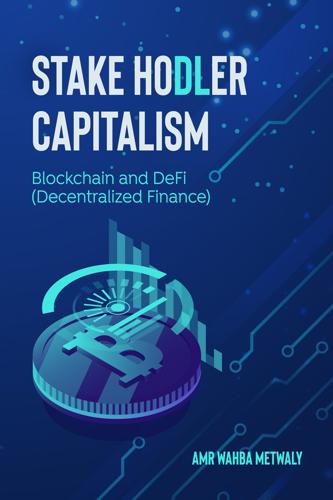
Stake Hodler Capitalism: Blockchain and DeFi
by
Amr Hazem Wahba Metwaly
Published 21 Mar 2021
However, private and centralized blockchains where the computers form their network are owned and controlled by a sole being. These private blockchains can be implemented to fit your business needs and give you the advantages of blockchain while minimizing your data exposure to the public. Examples of platforms that offer private blockchain solutions are IBM Blockchain, Azure Blockchain, and AWS (Amazon Web Services) Blockchain solutions. In the blockchain, every node has a complete history of the blockchain's data since its birth. For Bitcoin, the data is the full history of all Bitcoin transactions. If there is an error in one node's data, it can use the thousands of other nodes as a reference to correct itself.

Webbots, Spiders, and Screen Scrapers
by
Michael Schrenk
Published 19 Aug 2009
In typical SOAP calls, the SOAP interface and client are created and the parameters describing requested web services are passed in an array. With SOAP, using a web service is much like calling a local function. If you'd like to experiment with SOAP, consider creating a free account at Amazon Web Services. Amazon provides SOAP interfaces that allow you to access large volumes of data at both Amazon and Alexa, a web-monitoring service (http://www.alexa.com). Along with Amazon Web Services, you should also review the PHP-specific Amazon SOAP tutorial at Dev Shed, a PHP developers' site (http://www.devshed.com). PHP 5 has built-in support for SOAP. If you're using PHP 4, however, you will need to use the appropriate PHP Extension and Application Repository (PEAR, http://www.pear.php.net) libraries, included in most PHP distributions.
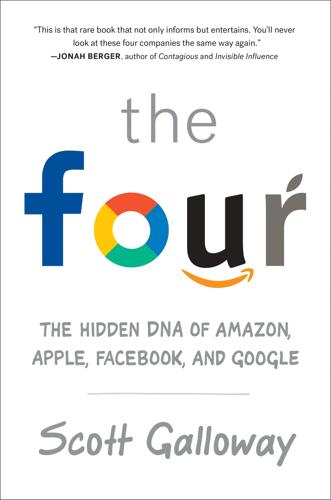
The Four: How Amazon, Apple, Facebook, and Google Divided and Conquered the World
by
Scott Galloway
Published 2 Oct 2017
In the past few years, Amazon has traded on this brand equity, leveraging it to extend into other businesses, and has expanded into other, simply better (more profitable) businesses. Looking back, Amazon’s retail platform just may have been the Trojan Horse that established the relationships and brand later monetized with other businesses. While year-to-year growth for Amazon’s retail business ranged from 13 percent to 20 percent from Q1 to Q3 2015, Amazon Web Services—the retailer’s network of servers and data storage technology—has grown 49 percent to 81 percent during that same interval. AWS also grew into a significant portion of Amazon’s total operating income, from 38 percent in Q1 2015 to 52 percent in Q3 2015.60 Analysts predict that AWS could reach $16.2 billion in sales by the end of 2017, making it worth $160 billion—more than the company’s retail unit.61 In other words, while the world still thinks of Amazon as a retailer, it has quietly become a cloud company—the world’s biggest.
…
Note: Page numbers in italic refer to illustrations. About.com, 147–48, 150–51 Age of Enlightenment, 127 Airbnb, 225–27 Alibaba, 206, 206–10 Amazon, 13–62 agility of, 235 and Alexa/Echo, 9, 31, 45, 50–52, 56 algorithm of, 105, 106 Amazon Marketplace, 25, 41 Amazon Prime, 13, 14, 37, 42, 48, 48–49 Amazon Web Services, 37, 41–42 analog moats of, 91 automated warehouses of, 27, 29–30, 42, 52–54, 91 book sales of, 25–26, 45 brain-based appeal of, 176–77 and brand era, 50–52, 172–73 capitalization of, 3, 32–35, 36, 38–39, 54, 56, 188–89 and competition, 9, 25, 56, 181 consumers’ alliance with, 167–68 consumer trust in, 31, 32, 41, 56 current state of affairs, 3–4 data collection of, 32, 200 effect on retail sector, 24–25, 28–29, 57–59 and failure, 39, 40 frictionless purchases on, 32, 186–87 fulfillment infrastructure, 3, 42, 49, 54, 55, 56, 91, 166, 181, 186 future of, 165–66, 182 global reach of, 190–91, 191 and Google, 60, 188–89 growth of, 27–28, 34, 41, 53 headquarters of, 202 and hunter/gatherer strategies, 14–16, 25–26, 44, 176–77 likability of, 193 multichannel retail, 44–49 and Procter & Gamble (P&G), 194 product differentiation of, 186–87 and product searches, 8, 189 profits/revenue, 17–18, 34–35 and Quidsi, 46 and rational decision making, 170 risk taking, 35–39, 40 scalability, 24–25 sellers’ joining of, 166 stock appreciation of, 28, 28 and stores, 30, 31, 36, 43–45, 55, 56 and taxes, 34, 193 vertical integration of, 195 and Walmart, 228 Whole Foods acquisition, 44, 54, 55–56, 59 zero-click ordering, 31–32, 56 See also Bezos, Jeff analog moats, 10, 90–91, 92 Android, 155, 178 Apollo Project, 267 Apple, 63–95 algorithms of, 105 analog moats of, 90–91, 92 behavioral data of, 200 and competition, 9, 67, 90–91, 92, 179–81 computers, 69, 73–74, 132, 161, 180 Cook’s leadership of, 68–69, 87 current state of affairs, 4 and download piracy, 68 and education market, 93–95 and failure, 39 genitalia-based appeal of, 178–79 global reach of, 190, 191 headquarters of, 202 innovator status, 64, 67, 68, 161 intellectual property theft, 161, 166 iPod, 67–68, 74, 79 likability of, 193 low-cost production of, 88–89 luxury status of, 69–72, 74–76, 78–79, 80–86, 87, 88, 92 privacy issue, 63–64, 136 product differentiation of, 186 profits/revenue, 4, 69, 70, 85 risk taking, 68 secular worship of, 66–67 stores, 80–81, 82–83, 89, 91, 195–96 strategy for success, 57 and taxes, 83, 193, 197 vertical integration of, 195–96 vs.

Lab Rats: How Silicon Valley Made Work Miserable for the Rest of Us
by
Dan Lyons
Published 22 Oct 2018
That group—the cleaning business—still generates 95 percent of Q’s revenues, but eventually Teran thinks Q Marketplace could become the larger part of the business. Teran’s ultimate goal is to handle every aspect of managing a physical space. He uses Amazon Web Services as a model. Instead of building and managing their own data centers, today most companies just fill out a few forms and rent computer power from Amazon Web Services. They might have no idea what kind of computers are being used, or who is running the servers. In the ultimate version of this, a law firm or ad agency could rent new offices, call Q, and never worry about the physical space again.

Digital Bank: Strategies for Launching or Becoming a Digital Bank
by
Chris Skinner
Published 27 Aug 2013
Soon, Amazon was more of a behemoth of data, moving into selling anything from white goods to televisions, and it is easy to sell online when you know how to leverage data relationships. Even then, for Amazon, even this was not enough. In recognising its information leadership, Amazon opened Amazon Web Services (AWS) to become the largest cloud computing firm out there. Amazon now adds server systems to AWS every day that would have been the equivalent of the complete server architecture required to run the total retail business two years ago. That’s information warfare: leveraging systems expertise to get more share of wallet, expansion of market, growth of proposition, and development of the offer into a range of services with no dependency on one.
…
The Innotribe Start-up Challenge was designed to introduce the most promising FinTech and Financial Services Start-Ups to SWIFT’s community of more than 9,700 banking organisations, securities institutions and corporate customers in 209 countries. THE CURRENCY CLOUD, GLOBAL An interview with Michael Laven, Chief Executive, the Currency Cloud Cloud computing has been around for a while, but still suffers from some extreme views with some considering cloud to just be Amazon Web Services whilst others see this as a way of leveraging new forms of business models. Michael (Mike) Laven, CEO of Currency Cloud is one of the latter visionaries, and is changing the game in cross-border payments by building a cloud-based offer for currency movements and offering this as a low-cost, transparent service to consumers and small businesses.

The Second Machine Age: Work, Progress, and Prosperity in a Time of Brilliant Technologies
by
Erik Brynjolfsson
and
Andrew McAfee
Published 20 Jan 2014
They can search the Web and browse Wikipedia. They can follow online courses, some of them taught by the best in the academic world. They can share their insights on blogs, Facebook, Twitter, and many other services, most of which are free. They can even conduct sophisticated data analyses using cloud resources such as Amazon Web Services and R, an open source application for statistics.13 In short, they can be full contributors in the work of innovation and knowledge creation, taking advantage of what Autodesk CEO Carl Bass calls “infinite computing.”14 Until quite recently rapid communication, information acquisition, and knowledge sharing, especially over long distances, were essentially limited to the planet’s elite.
…
id=USARGDPH INDEX Academically Adrift: Limited Learning on College Campuses (Arum and Roksa) Acemoglu, Daron Affinnova Aftercollege.com Agarwal, Anant Age of Spiritual Machines, The: When Computers Exceed Human Intelligence (Kurzweil) Agrarian Justice (Paine) agriculture: development of inelastic demand in Ahn, Luis von Aiden, Erez Lieberman Airbnb.com Alaska, income guarantee plan in algorithms Allegretto, Sylvia Allstate Amazon Amazon Web Services American Society of Civil Engineers (ASCE) Android animals, domestication of Apple Arthur, Brian artificial intelligence (AI) future of SLAM problem in uses of see also robots Arum, Richard ASCI Red ASIMO Asimov, Isaac Asur, Sitaram Athens, ancient ATMs Audi Australia, immigrant entrepreneurship in Autodesk automation: future of labor market effects of in manufacturing Autor, David Baker, Stephen Barnes & Noble Bartlett, Albert A.

Messy: The Power of Disorder to Transform Our Lives
by
Tim Harford
Published 3 Oct 2016
Instead, over the next few years, Amazon launched products as disparate as the Kindle (which immediately and repeatedly sold out, as Amazon struggled to manufacture it), Mechanical Turk (an unsettlingly named global clearinghouse for labor, which pioneered crowdsourcing but was criticized as being a sweatshop), the Fire Phone (widely reviewed as ugly, weird, and disappointing), Marketplace (where competitors to Amazon would use Amazon’s own product listings to advertise their own cheaper alternatives), and Amazon Web Services. AWS in particular was a bold stroke—a move into cloud computing in 2006, four years ahead of Microsoft’s Azure and six years ahead of Google Compute. As Bezos liked to say during the crunches of 1998 and 1999, “If you are planning more than twenty minutes ahead in this environment, you are wasting your time.”15 He was a man in a hurry.
…
By Christmas 2009, Amazon had a market share in e-books of around 90 percent.34 One can tell almost exactly the same story about Amazon’s initially baffling venture into cloud computing: a crazy rush, a series of early technical problems, a loss-making price. Then within a few years, Amazon, a mere bookseller, was the dominant player in cloud computing, and analysts were pronouncing that Amazon Web Services was a more valuable business than Amazon’s online retailing operation. The opportunity had been there to take, but the titans of the industry, IBM, Google, Apple, and Microsoft, had all hesitated at the prospect of a costly battle with the upstart.35 Again and again, we see Amazon moving quickly, losing money, struggling to cope with the demand it created, and in the end, dominating a market.

Advances in Financial Machine Learning
by
Marcos Lopez de Prado
Published 2 Feb 2018
Hirschman, A. O. (1980): National Power and the Structure of Foreign Trade. Vol. 105. University of California Press. Holzman, B. et al. (2017): “HEPCloud, a new paradigm for HEP facilities: CMS Amazon Web Services investigation. Computing and Software for Big Science, Vol. 1, No. 1, p. 1. Jackson, K. R., et al. (2010): “Performance analysis of high performance computing applications on the Amazon Web Services Cloud. Cloud Computing Technology and Science (CloudCom). 2010 Second International Conference. IEEE. Kim, T. et al. (2015): “Extracting baseline electricity usage using gradient tree boosting.”

Rocket Billionaires: Elon Musk, Jeff Bezos, and the New Space Race
by
Tim Fernholz
Published 20 Mar 2018
Bezos declined to speak to the AP about the project, and a spokesman simply said that the company “won’t go anywhere soon.” That, at least, was true. Amazon was already big, but not yet the Goliath it is today. This was before iPhones led the smartphone revolution, before the Kindle, before Amazon Prime, and before Amazon Web Services and Alexa. At this stage in its lifespan, the retailer hadn’t even made an annual profit, despite spending the past four years as a publicly traded company. Investors loved the stock because of its incredible growth rates, the way it scarfed up market share, even entire markets, with ravenous energy.
…
In the years ahead, Amazon would begin releasing physical products like the Kindle, a short-lived phone, and smart speakers for its AI assistant. It would be an early adopter of the growth in cloud computing and deploy its own proprietary servers, optimized to allow other digital entrepreneurs to scale up their own services. Amazon Web Services became a huge moneymaker that undergirded a new generation of internet companies. Amazon established its own distribution centers and began investing in robotic technology to automate deliveries, even experimenting with drones for airborne package drop-offs. This period may have been a distraction from the work of making space cheaper to access, but it would pay off in literal dividends in the years ahead.

Creating Development Environments With Vagrant - Second Edition
by
Michael Peacock
Published 26 Feb 2015
Vagrant uses providers to integrate with the third-party virtualization software, which provides the virtualized machines for our development environment. The default provider is for Oracle VirtualBox; however, there are commercial providers to work with VMware Fusion and also plugins for Vagrant to work with Amazon Web Services. The entire configuration is stored in simple plain text files. The Vagrant configuration (Vagrantfile), and the configuration that defines how our Vagrant machines are configured (typically Shell scripts, Ansible playbooks, Chef cookbooks or Puppet manifests that Vagrant has built-in support for, as provisioners) are simply written in text files.

The Stack: On Software and Sovereignty
by
Benjamin H. Bratton
Published 19 Feb 2016
The geopolitics of the Cloud is everywhere and wants everything: the platform wars between Google, Facebook, Apple, and Amazon, anonymized servers routing the angry tweets from street battles, Anonymous going up against Mexican drug cartels, WikiLeaks crowd-sourcing counterespionage, Tor users building on top of Amazon Web Services services, carriers licensing content, content providers licensing bandwidth, proprietary fiber networks connected trading centers, and on, and on. It might seem at first blush that these events, each perhaps pushing legal boundaries in its own way, should be understood as disruptive contaminations of a standing political order—acts of resistance to the system, even.
…
That said, as the Cloud is planetary is scope, state control of its systems is guaranteed only to the extent that private providers continue to respect (by consent, force, joint venture, outright merger) the practical sovereignty of the national jurisdictions in which their servers are installed, where their offices are headquartered, how exactly their data structure economic exchanges, and how their monetization of those data is or is not taxed. That arrangement is both resilient and unstable in various measures and tracks the successes and failures of globalization itself. Today most Cloud service providers have constraining jurisdictions built into service plans. For example, Amazon Web Services segregates the serving of hosted data according to several geographic “availability zones,” allowing developers to deploy specific versions of their application to specific users in specific countries according to local laws and priorities, regardless of where Amazon might be hosting or mirroring their data.
…
The platform does not care about your name or who you really are deep down, but only in the likelihood that the next presentation of object X, Y, or Z will motivate your One-Clicking and the subsequent activation of supply chain cascades that ensue. For this, Amazon does not even necessarily have to provide the User-facing front end for Cloud services. Just as UPS and FedEx moved into high-margin logistics consulting businesses, Amazon Web Services is a major provider of large-scale Cloud hosting and e-commerce for third parties (including states and their intelligence agencies). In addition to finding customers for its suppliers, Amazon also rents the pick-axes for the Cloud rush. This superterranean platform-of-platforms (from servers to warehouse to inventory delivery) allows both small and large affiliate actors to engage multiple overlapping and even opposed publics on the same shared hosting infrastructures.

Ansible Playbook Essentials
by
Gourav Shah
Published 29 Jul 2015
Before using this subcommand, it is important to set an editor in the environment, as follows: # setting up vi as editor $ export EDITOR=vi # Generate a encrypted file $ ansible-vault create aws_creds.yml Vault password: Confirm Vault password: Launching this command opens up an editor specified with the editor environment variable. The following is an example of the aws_creds.yml file that you may create to store the AWS user credentials in the form of an access key and secret key. These keys are then used to make API calls to the Amazon web services cloud platform. Saving this file and exiting the editor will generate an encrypted file: You can check the type of file created and its contents by running following commands: # Check file type and content $ file aws_creds.yml aws_creds.yml: ASCII text $ cat aws_creds.yml $ANSIBLE_VAULT;1.1;AES256 64616236666362376630366435623538336565393331333331663663636237636335313234313134 3337303865323239623436646630336239653864356561640a363966393135316661636562333932 61323932313230383433313735646438623032613635623966646232306433383335326566343333 3136646536316261300a616438643463656263636237316136356163646161313365336239653434 36626135313138343939363635353563373865306266363532386537623463623464376134353863 37646638636231303461343564343232343837356662316262356537653066356465353432396436 31336664313661306630653765356161616266653232316637653132356661343162396331353863 34356632373963663230373866313961386435663463656561373461623830656261636564313464 37383465353665623830623363353161363033613064343932663432653666633538 Updating the encrypted data To update the AWS keys added to the encrypted file, you can later use Ansible-vault's edit subcommand as follows: $ ansible-vault edit aws_creds.yml Vault password: The edit command does the following operations: Prompts for a password Decrypts a file on the fly using the AES symmetric cypher Opens the editor interface, which allows you to change the content of a file Encrypts the file again after being saved There is another way to update the content of the file.
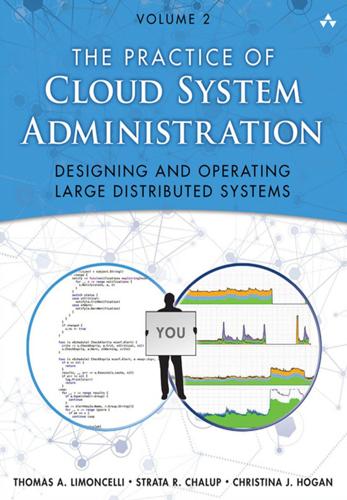
The Practice of Cloud System Administration: DevOps and SRE Practices for Web Services, Volume 2
by
Thomas A. Limoncelli
,
Strata R. Chalup
and
Christina J. Hogan
Published 27 Aug 2014
In Linux and the Xen hyper-visor, this is called “steal time”: it is the amount of CPU time that your virtual machine is missing because it was allocated to other virtual machines (Haynes 2013). IaaS providers usually cannot provide guarantees of how much steal time will exist, nor can they provide mechanisms to control it. Netflix found the only way it could deal with this issue was to be reactionary. If high steal time was detected on a virtual machine in Amazon Web Services (AWS), Netflix would delete the virtual machine and have it re-created. If the company was lucky, the new virtual machine would be created on a physical machine that was less oversubscribed. This is a sorry state of affairs (Link 2013). Some resources are shared in an unbounded manner. For example, if one virtual machine is generating a huge amount of network traffic, the other virtual machines may suffer.
…
See Oncall rules, 353 thresholds, 49 Alexander, Christopher, 69 Allen, Woody, 285 Allspaw, John automation, 249 disaster preparedness tests, 318–320 outage factors, 302 postmortems, 301 Alternatives in design documents, 278 Amazon design process, 276 Game Day, 318 Simple Queue Service, 85 Amazon Elastic Compute Cloud (Amazon EC2), 472 Amazon Web Services (AWS), 59 Analysis in capacity planning, 375–376 causal, 301–302 crash reports, 129 in monitoring, 345, 353–354 Ancillary resources in capacity planning, 372 Andreessen, Marc, 181 Anomaly detection, 354 “Antifragile Organization” article, 315, 320 Antifragile systems, 308–310 Apache systems Hadoop, 132, 467 Mesos, 34 web server forking, 114 Zookeeper, 231, 363 API (Application Programming Interface) defined, 10 logs, 340 Applicability in dot-bomb era, 463–464 Application architectures, 69 cloud-scale service, 80–85 exercises, 93 four-tier web service, 77–80 message bus, 85–90 reverse proxy service, 80 service-oriented, 90–92 single-machine web servers, 70–71 summary, 92–93 three-tier web service, 71–77 Application debug logs, 340 Application logs, 340 Application Programming Interface (API) defined, 10 logs, 340 Application servers in four-tier web service, 79 Approvals code, 47–48 deployment phase, 214, 216–217 design documents, 277, 281 service launches, 159 Arbitrary groups, segmentation by, 104 ARC (Adaptive Replacement Cache) algorithm, 107 Architecture factors in service launches, 157 Archives design documents, 279–280 email, 277 Art of Scalability, Scalable Web Architecture, Processes, and Organizations for the Modern Enterprise, 100 Artifacts artifact-scripted database changes, 185 defined, 196 Assessments, 421–422 Capacity Planning, 431–432 Change Management, 433–434 Disaster Preparedness, 448–450 Emergency Response, 426–428 levels, 405–407 methodology, 403–407 Monitoring and Metrics, 428–430 New Product Introduction and Removal, 435–436 operational excellence, 405–407 organizational, 411–412 Performance and Efficiency, 439–441 questions, 407 Regular Tasks, 423–425 Service Delivery: The Build Phase, 442–443 Service Delivery: The Deployment Phase, 444–445 Service Deployment and Decommissioning, 437–438 services, 407–410 Toil Reduction, 446–447 Asynchronous design, 29 Atlassian Bamboo tool, 205 Atomicity ACID term, 24 release, 240–241 Attack surface area, 79 Auditing operations design, 42–43 Augmentation files, 41–42 Authentication, authorization, and accounting (AAA), 222 Authentication in deployment phase, 222 Authors in design documents, 277, 282 Auto manufacturing automation example, 251 Automation, 243–244 approaches, 244–245 baking, 219 benefits, 154 code amount, 269–270 code reviews, 268–269 compensatory principle, 246–247 complementarity principle, 247–248 continuous delivery, 190 crash data collection and analysis, 129 creating, 255–258 DevOps, 182, 185–186 exercises, 272–273 goals, 252–254 hidden costs, 250 infrastructure strategies, 217–220 issue tracking systems, 263–265 language tools, 258–262 left-over principle, 245–246 lessons learned, 249–250 multitenant systems, 270–271 prioritizing, 257–258 repair life cycle, 254–255 software engineering tools and techniques, 262–270 software packaging, 266 software restarts and escalation, 128–129 steps, 258 style guides, 266–267, 270 summary, 271–272 system administration, 248–249 tasks, 153–155 test-driven development, 267–268 toil reduction, 257 vs. tool building, 250–252 version control systems, 265–266 Availability CAP Principle, 21–22 monitoring, 336 Availability and partition tolerance (AP), 24 Availability requirements cloud computing era, 469 dot-bomb era, 460 first web era, 455 pre-web era, 452–453 second web era, 465 Averages in monitoring, 358 AWS (Amazon Web Services), 59 Backend replicas, load balancers with, 12–13 Backends multiple, 14–15 server stability, 336 Background in design documents, 277–278 Background processes for containers, 61 Backups in design for operations, 36 Baked images for OS installation, 219–220 Banned query lists, 130 Bare metal clouds, 68 Barroso, L.
…
See Oncall rules, 353 thresholds, 49 Alexander, Christopher, 69 Allen, Woody, 285 Allspaw, John automation, 249 disaster preparedness tests, 318–320 outage factors, 302 postmortems, 301 Alternatives in design documents, 278 Amazon design process, 276 Game Day, 318 Simple Queue Service, 85 Amazon Elastic Compute Cloud (Amazon EC2), 472 Amazon Web Services (AWS), 59 Analysis in capacity planning, 375–376 causal, 301–302 crash reports, 129 in monitoring, 345, 353–354 Ancillary resources in capacity planning, 372 Andreessen, Marc, 181 Anomaly detection, 354 “Antifragile Organization” article, 315, 320 Antifragile systems, 308–310 Apache systems Hadoop, 132, 467 Mesos, 34 web server forking, 114 Zookeeper, 231, 363 API (Application Programming Interface) defined, 10 logs, 340 Applicability in dot-bomb era, 463–464 Application architectures, 69 cloud-scale service, 80–85 exercises, 93 four-tier web service, 77–80 message bus, 85–90 reverse proxy service, 80 service-oriented, 90–92 single-machine web servers, 70–71 summary, 92–93 three-tier web service, 71–77 Application debug logs, 340 Application logs, 340 Application Programming Interface (API) defined, 10 logs, 340 Application servers in four-tier web service, 79 Approvals code, 47–48 deployment phase, 214, 216–217 design documents, 277, 281 service launches, 159 Arbitrary groups, segmentation by, 104 ARC (Adaptive Replacement Cache) algorithm, 107 Architecture factors in service launches, 157 Archives design documents, 279–280 email, 277 Art of Scalability, Scalable Web Architecture, Processes, and Organizations for the Modern Enterprise, 100 Artifacts artifact-scripted database changes, 185 defined, 196 Assessments, 421–422 Capacity Planning, 431–432 Change Management, 433–434 Disaster Preparedness, 448–450 Emergency Response, 426–428 levels, 405–407 methodology, 403–407 Monitoring and Metrics, 428–430 New Product Introduction and Removal, 435–436 operational excellence, 405–407 organizational, 411–412 Performance and Efficiency, 439–441 questions, 407 Regular Tasks, 423–425 Service Delivery: The Build Phase, 442–443 Service Delivery: The Deployment Phase, 444–445 Service Deployment and Decommissioning, 437–438 services, 407–410 Toil Reduction, 446–447 Asynchronous design, 29 Atlassian Bamboo tool, 205 Atomicity ACID term, 24 release, 240–241 Attack surface area, 79 Auditing operations design, 42–43 Augmentation files, 41–42 Authentication, authorization, and accounting (AAA), 222 Authentication in deployment phase, 222 Authors in design documents, 277, 282 Auto manufacturing automation example, 251 Automation, 243–244 approaches, 244–245 baking, 219 benefits, 154 code amount, 269–270 code reviews, 268–269 compensatory principle, 246–247 complementarity principle, 247–248 continuous delivery, 190 crash data collection and analysis, 129 creating, 255–258 DevOps, 182, 185–186 exercises, 272–273 goals, 252–254 hidden costs, 250 infrastructure strategies, 217–220 issue tracking systems, 263–265 language tools, 258–262 left-over principle, 245–246 lessons learned, 249–250 multitenant systems, 270–271 prioritizing, 257–258 repair life cycle, 254–255 software engineering tools and techniques, 262–270 software packaging, 266 software restarts and escalation, 128–129 steps, 258 style guides, 266–267, 270 summary, 271–272 system administration, 248–249 tasks, 153–155 test-driven development, 267–268 toil reduction, 257 vs. tool building, 250–252 version control systems, 265–266 Availability CAP Principle, 21–22 monitoring, 336 Availability and partition tolerance (AP), 24 Availability requirements cloud computing era, 469 dot-bomb era, 460 first web era, 455 pre-web era, 452–453 second web era, 465 Averages in monitoring, 358 AWS (Amazon Web Services), 59 Backend replicas, load balancers with, 12–13 Backends multiple, 14–15 server stability, 336 Background in design documents, 277–278 Background processes for containers, 61 Backups in design for operations, 36 Baked images for OS installation, 219–220 Banned query lists, 130 Bare metal clouds, 68 Barroso, L.
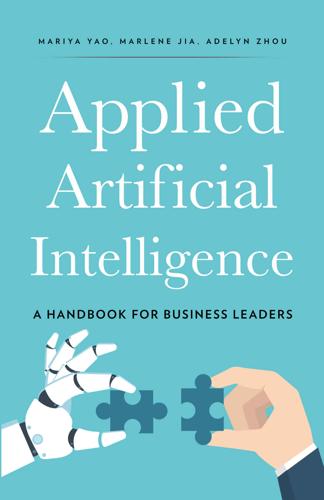
Applied Artificial Intelligence: A Handbook for Business Leaders
by
Mariya Yao
,
Adelyn Zhou
and
Marlene Jia
Published 1 Jun 2018
Many of the tech giants offer to “democratize AI” by releasing open-source development tools such as Keras, TensorFlow, CTNK, and PyTorch, or offer enterprise cloud solutions and proprietary Machine Learning as a Service (MLaaS) platforms. For companies that don’t have the infrastructure or the technical knowledge, these represent excellent solutions for quickly integrating AI capabilities into your company’s workflow . If you already store data and build applications on Amazon Web Services (AWS), Microsoft Azure, Google Cloud, or Apple’s iOS platform, using tightly integrated machine learning solutions like AWS Rekognition or Apple’s Core ML can simplify work for your own developers and may be the most economical business decision. However, the mere existence of a solution does not mean that it’s definitely right for your company.

Beautiful security
by
Andy Oram
and
John Viega
Published 15 Dec 2009
Enter the new world of web services and cloud computing. To mitigate the risk of catastrophic system loss, I wrote a simple plug-in (see the later section “Platforms of the Long-Tail Variety: Why the Future Will Be Different for Us All” on page 165) to the home server that makes use of the Amazon Web Services platform. At set intervals, the system copies the directories I chose onto the server and connects via web services to Amazon’s S3 (Simple Storage System) cloud infrastructure. The server sends a backup copy of the data I choose to the cloud. I make use of the WS-Security specification (and a few others) for web services, ensuring the data is encrypted and not tampered with in transport, and I make use of an X.509 digital certificate to ensure I am communicating with Amazon.
…
He served on the Roundtable on Scientific Communication and National Security, a collaborative project of the National Research Council and the Center for Strategic and International Studies. 268 CONTRIBUTORS INDEX Numbers 3-D Secure protocol account holder domain, 76 acquirer domain, 76 e-commerce security and, 76–78 evaluation of, 77 issuer domain, 76 transaction process, 76 802.11b standard, 51, 52 802.11i standard, 51 A ABA (American Bar Association), 203 Access Control Server (ACS), 77 accountability, 213, 214 ACS (Access Control Server), 77 ActionScript, 93 ad banners (see banner ads) Adams, Douglas, 158 Advanced Monitor System (AMS), 254, 256 advertising (see online advertising) adware (see spyware) Aegenis Group, 66 Agriculture, Department of, 196 AHS (Authentication History Server), 77 AI (artificial intelligence), 254, 257 AllowScriptAccess tag, 94 Amazon Web Services platform, 152 Amazon.com, 102 American Bar Association (ABA), 203 AMS (Advanced Monitor System), 254, 256 analyst confirmation traps, 12 Anderson, Chris, 165 Andreessen, Marc, 165, 166 Anna Carroll (barge), 206 anti-executables, 253 anti-spyware software evolution of, 251 initial implementation, 251 intrusive performance, 254 strict scrutiny, 252 anti-virus software diminished effectiveness, 249 functional fixation, 15 functionality, 232 historical review, 248–249 honeyclients and, 141 intrusive performance, 254 malware signature recognition, 251 need for new strategies, 248 strict scrutiny, 252 zero-day exploits and, 252 Apgar score, 37 Apgar, Virginia, 37 Apple Computer, 8 artificial intelligence (AI), 254, 257 Ascom-Tech AG, 117 Ashenfelter, Orley, 164 Aspect Security, 188 Atkins, Derek, 119 ATMs, early security flaws, 36 attacks (see malicious attacks) attribute certificates, 111 Attrition.org, 55 authentication 3-D Secure protocol, 77 auto-update and, 15 CV2 security code, 76 e-commerce security, 83, 84 federated programs, 210 NTLM, 6 password security, 7 PGP Global Directory and, 127 portability of, 85 security pitfall in, 71 SET protocol, 78 WEP support, 52 Authentication History Server (AHS), 77 authoritative keys, 123 authorization We’d like to hear your suggestions for improving our indexes.

No Filter: The Inside Story of Instagram
by
Sarah Frier
Published 13 Apr 2020
With the unexpected deluge of users, they needed to think fast to keep Instagram online. Systrom called D’Angelo, the early Facebook chief technology officer and early investor in Instagram, for his advice. It was the first of several calls that day. Every hour, Instagram seemed to grow faster. D’Angelo eventually helped the company transition to renting server space from Amazon Web Services instead of buying their own. Within the first day, 25,000 people were using Instagram. Within the first week, it was 100,000, and Systrom had the surreal experience of seeing a stranger scrolling through the app on a San Francisco bus. He and Krieger started an Excel spreadsheet that would update live with each user added.
…
ABC News, 211 Above Category cycling, 185 abuse, abuse content, 41, 97, 261 Academy Awards, 152 Systrom at, 191–92, 204 Accenture, 260 Acton, Brian, 125, 256, 258 Adams, William (will.i.am), 128 Adidas, xix Adobe Lightroom, 240, 243 Adobe Photoshop, 21, 23, 244 advertising, 59, 176, 256 false, 244; see also fake news FB’s business of, 75, 77, 89, 91–92, 94, 96, 105, 118–19, 125, 149–50, 163, 217, 224, 277 IG’s business of, 104, 118–21, 124, 151, 155, 163–65, 174, 175–76, 184, 225, 241, 277 mobile, 74–75 television, 215 see also brand advertising advertising agencies, 89 FB’s relationship with, 120–21, 124 Ahrendts, Angela, 147 @aidanalexander, 171 AiGrow, 246 Airbnb, xvi, 45 Alba, Jessica, 130, 250 Alexander, Aidan, 171 algorithms: FB’s use of, 91, 103, 128, 162, 163, 208, 209, 210–12, 215, 221, 224, 259 IG’s early lack of, 34, 143 IG’s use of, 81, 170, 174, 197–98, 218, 229, 230–32, 233, 251, 271 IG users’ mistrust of, 197 YouTube’s use of, 233–34 @alittlepieceofinsane, 161 Allen, Nick, 117 Allen & Company, 49 Amanpour, Christiane, 127 Amaro photo filter, 23 Amazon, 22, 28, 139, 242 Communications Decency Act and, 41 Whole Foods acquired by, 64 Zappos acquired by, 105 Amazon Web Services, 26, 79–80 American Medical Association, 244 American Society of Plastic Surgeons, 244 analytics, 90, 102, 226 IG’s use of, 100, 178, 183, 226 IG users’ access to, 275–76 Anchor Psychology, 172 Anderson, Steve, 34 early IG investment of, 11, 15 on IG board, 37, 56, 63–64 Anderson Cooper 360, 142 Andreessen, Marc, 11 Andreessen Horowitz: early investment in IG by, 11, 15, 33 investment in PicPlz by, 33–34, 36, 77 Android, 19, 33, 110, 203 IG app for, 50, 51 angel investments, 16, 17, 24, 36 anonymity, user, 41, 80 on Formspring, 40 on IG, 41, 80, 163, 173, 218, 219, 260, 261 troubling content and, 40, 163, 218–19, 260; see also bullying antitrust laws, 75, 268 Antonow, Eric, 165 AOL, 116 Apple, 10, 21, 56, 65, 147, 167, 234 Apple app store, 26, 28, 38, 115 Apple IDs, 42 apps: filter, see filter apps, photo location-based, 15 see also mobile apps; specific apps Argentina, 12 Arthur D.
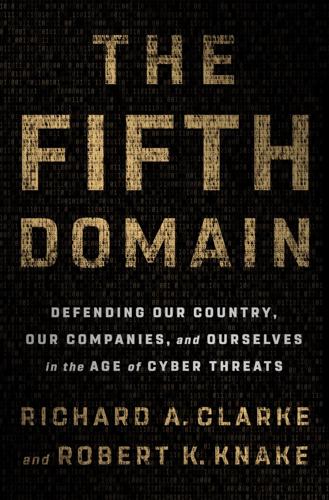
The Fifth Domain: Defending Our Country, Our Companies, and Ourselves in the Age of Cyber Threats
by
Richard A. Clarke
and
Robert K. Knake
Published 15 Jul 2019
Google is so confident in its security capabilities that, instead of arguing that it shouldn’t be expected to be able to stop government intelligence organizations, it is actively working to protect its customers from them and will notify individual Google account holders if they are being targeted by an APT actor. The danger with cloud computing is that it is concentrating risk in the hands of a few players that now have a near monopoly. Almost all SaaS providers start out building their services on top of Amazon Web Services or Microsoft Azure and many stay that way. Netflix, now in a heated rivalry with Amazon Prime for eyeballs in the streaming wars, uses Amazon, as do other giants of the internet age such as Airbnb. Dropbox, the online file storage company, until a few years ago was also an Amazon customer. What this concentration of risk means is that a problem at Amazon (or Microsoft or Google) could be a problem for everyone.
…
They might have used a commercial or consumer-grade virtual private network or one of the many censorship circumvention tools designed to allow people behind national firewalls to roam the web freely. Or, if they were hip to the latest trends in the cyber-criminal underworld, they might have used a stolen credit-card number bought for fifty cents on the dark web to set up an Amazon Web Services account and purchased all the computing power they needed. Chances are, they used several of these techniques to create a string of hop points. What that means for the counteroffense team at Fort Meade (or, in some darker fantasies, at the utility) is that hitting the Iranians back just became pretty complicated.

Succeeding With AI: How to Make AI Work for Your Business
by
Veljko Krunic
Published 29 Mar 2020
Let’s look at all the decisions that have already ossified in your pipeline: You’re using the same ML pipeline that your data scientist used for the small POC. Is it the best pipeline for a security system rolled out to 100,000 people? Your pipeline is using Apache Spark [14], and you’ve hired an Apache Spark specialist. You’ve also hired Amazon Web Services (AWS) [11] specialists, but they don’t know anything about the competing cloud services, such as Microsoft Azure [13] or Google Cloud Platform (GCP) [12]. Your neural network is implemented using TensorFlow [91]. You have a contract with the humane society to use training pictures of the pets.
…
AI superpowers: China, Silicon Valley, and the new world order. Boston: Houghton Mifflin Harcourt; 2018. Peng T. Andrew Ng says enough papers, let’s build AI now! Synced. 2017 Nov 4 [cited 2019 Feb 15]. Available from: https://syncedreview.com/2017/11/04/ andrew-ng-says-enough-papers-lets-build-ai-now/ Amazon.com, Inc. Amazon Web Services. [Cited 2019 Jul 19.] Available from: https://aws.amazon.com Google, Inc. Build. Modernize. Scale. [Cited 2019 Jul 19.] Available from: https://cloud.google.com Microsoft Corporation. Microsoft Azure. [Cited 2019 Jul 19.] Available from: https://azure.microsoft.com/en-us/ 244 APPENDIX 14 15 16 17 18 19 20 21 22 23 24 25 26 27 28 29 30 31 32 C Bibliography 245 Apache Software Foundation.

The Costs of Connection: How Data Is Colonizing Human Life and Appropriating It for Capitalism
by
Nick Couldry
and
Ulises A. Mejias
Published 19 Aug 2019
The Intercept, April 30, 2017. https://theintercept.com/2017/04/30/taser-will-use-police-body-camera-videos-to-anticipate-criminal-activity/. Kollewe, Julia. “Marmite Maker Unilever Threatens to Pull Ads from Facebook and Google.” Guardian, February 12, 2018. Krazit, Tom. “Amazon Web Services Backs Deep-Learning Format Introduced by Microsoft and Facebook.” Geekwire, November 16, 2017. https://www.geekwire.com/2017/amazon-web-services-backs-deep-learning-format-introduced-microsoft-facebook/. Krishna, Sankaran. Globalization and Postcolonialism. Lanham, MD: Rowman & Littlefield Publishers, 2008. Kuchler, Hannah. “Facebook Investors Wake Up to Era of Slower Growth.”
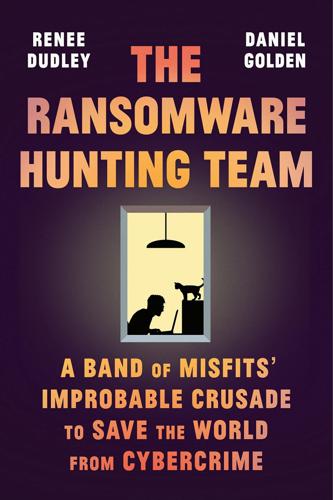
The Ransomware Hunting Team: A Band of Misfits' Improbable Crusade to Save the World From Cybercrime
by
Renee Dudley
and
Daniel Golden
Published 24 Oct 2022
From 2012 to 2017, Baltimore’s IT office cycled through six acting or permanent heads. The city wasn’t completely unprepared. Martin Okumu, director of IT infrastructure, had begun backing up files on the cloud. “It was my initiative; I had to fight for the money,” he said. “I was moving data onto Amazon Web Services for four or five months before the attack, anticipating possible threats. You go to sleep every night knowing that something like this could happen.” In 2014, Gayle Guilford became the city’s first chief information security officer, with two part-time engineers on loan from other duties. She scrounged for funding and free expertise wherever she could find it.
…
For your reference, the terms that appear in the print index are listed below. Abrams, Lawrence; BleepingComputer founded by; early life of; FBI and; Maze and; in Ransomware Hunting Team formation; TeslaCrypt and; truce of; Zbot and ACCDFISA Adleman, Leonard Adrian AdvIntel Agutin, Leonid AIDS, AIDS Trojan algorithms Allied Universal Amazon Web Services American International Group Anderson, Tim Apocalypse Apple Archer-Daniels-Midland Arruda, Stacy ASN.1 asymmetric encryption Atlanta, Ga. Augenbaum, Scott Augustine, John Aunt Beast autism AXA Babuk backdoors bait files Ballod, Christopher Baltimore, Md. Baltimore City Information & Technology (BCIT) Baltimore County Public Schools (BCPS) banking Trojans Bates, Jim Baum, L.

Billionaire, Nerd, Savior, King: Bill Gates and His Quest to Shape Our World
by
Anupreeta Das
Published 12 Aug 2024
Apple, which controls more than half of the smartphone market in the United States and is the single biggest player in the global market, controls the iPhone’s entire ecosystem, from hardware to software and applications, and takes a meaningful cut of the revenues of any app developer that wants to offer its product on the app store. Amazon redefined the consumer retailing business, becoming a trillion-dollar company with its razor-sharp focus on logistics and cutting costs—including using its power as a dominant buyer squeezing its suppliers and slashing worker pay—to fatten its profit margins. Its Amazon Web Services unit is one of two giants in the business of providing cloud computing services to business—the other being Microsoft Azure. Some of this dominance is the natural outgrowth of network effects—the idea that the more people use something, the more value is created because others want to be on the same platform.
…
Mex., 34 Alderbrook Resort and Spa, 268 Alger, Horatio, 20 Alice & Olivia, 54 Allen, Paul, 2, 31, 33–34, 36, 66 Allen & Co., 10 Alliance for a Green Revolution in Africa (AGRA), 191 alliances, personal, 56 All Raise, 165 Alphabet, 10, 13, 18, 44 ALS (amyotrophic lateral sclerosis), 24 Altman, Sam, 56 Amalie Arena, 207 Amazon, 18, 44, 67, 84, 86 see also Bezos, Jeff “Amazon’s Antitrust Paradox” (Khan), 85 Amazon Web Services, 84 Ambri, 222 American Bible Society, 22 American dream, 7, 19–20, 251, 254, 265 Americans for Prosperity, 271 amyotrophic lateral sclerosis (ALS), 24 Andreessen, Marc, 42–44 Andrew, Prince, 231, 232 Andrews University, 11 Aniston, Jennifer, 65 Antitrust (film), 94 antitrust laws, 71, 73–74, 79, 85–87, 93 Antonova, Mila, 161, 235 Apollo Global Management, 232 Apple, 18, 44, 72, 84, 86, 92, 93 see also Jobs, Steve Apple PC, 36 Apple TV, 145 Arjuna Capital, 239 Arnold, John, 272 Art Institute of Chicago, 270 Asana, 206 Ashoka University, 196 Asia, 276–277 Asperger’s syndrome, 53 Associated Press, 237 Astor, Caroline Schermerhorn, 16 Astor Foundation, 120 AstraZeneca, 178 Atlantic Philanthropies, 133, 201 Auletta, Ken, 33, 96, 116 Austin, Cornelia, 269–270 autism, 53 AutoNation, 221 Avahan program, 197 Bachel, Emily, 267–269 Ballmer, Steve, 45, 65, 67–68, 139 Bangladesh, 48 Bankman-Fried, Sam, 50, 205 Barbarians at the Gate (Burrough), 40 Barron’s, 153 BASIC (computer language), 34 Batman (fictional character), 17 Baton Rouge, La., 13 Bayer, 119 “Beards, Sandals, and Other Signs of Rugged Individualism” (Ensmenger), 32 Bear Stearns, 236 Becker, Gary, 11 Beckham, David, 101 Bendet, Stacy, 54 Benioff, Marc, 181, 259 Berggruen, Nicolas, 135 Berkshire Hathaway, 4, 12, 118 Berkshire Hathaway Media Group, 115 Berman, Melissa, 141, 186, 188 Berrien Springs, Mich., 10–11 Bettman Archive, 157 Bezos, Jeff and Blue Origin, 9 divorce of, 144–145 and House Judiciary Committee, 82–83 personal story of, 18–19, 44 physicality of, 54 and Washington Post, 273 wealth of, 45, 250, 253 yacht of, 271 see also Amazon bgC3 LLC, 105–106, 222 Bhushan, Padma, 199 Biden, Joe, 85, 110, 259 Big Bang Theory, The (TV show), 52 “Big Catch-Up, The,” 278 Bill and Melinda Gates Foundation, see Gates Foundation Bill and Melinda Gates Investments (BMGI), 211 billionaire(s), 15, 144–145, 249–254, 261–274 see also names of individuals Billionaires Index, 16 Bina, Eric, 42 Bingaman, Anne, 74 bin Talal, Alwaleed, 213–214 Black, Leon, 232 Blackstone, 212 Blank, Arthur, 273 Bloomberg, 169, 211 Bloomberg (company), 16 Bloomberg, Georgina, 158 Bloomberg, Michael, 13, 54, 158, 201, 273 see also Lasker-Bloomberg Public Service Award Bloomberg Philanthropies, 202 Blue Origin, 9 BMGI (Bill and Melinda Gates Investments), 211 Boeing, 66, 270 Boesky, Ivan, 40 Boies, David, 80 Bonderman, David, 215 Bonfire of the Vanities, The (Wolfe), 40 Bono, 100 book recommendations, 107 Boston College, 194 Boston Globe, The, 273 Boston Red Sox, 273 Boston University, 11 Brand, Stewart, 38–39 Breakthrough Energy, 222, 223 Brennan Center for Justice, 271 Bridgespan Group, 193 Brin, Sergey, 44, 45, 83, 139, 266 Broad, Eli, 205 Brookings Institution, 181 Brotopia (Chang), 58 Bruce Wayne (fictional character), 17 Buckhorn, Bob, 208 Buffett, Howard, 122 Buffett, Peter, 122, 190 Buffett, Susan Alice, 117, 122 Buffett, Susan Thompson, 117, 122, 159 Buffett, Warren E. donations to Gates Foundation, 104, 148 and fashion, 54 friendship with Gates, 115–119 on Gates, 162–163 gift to Gates Foundation, 120–131 and Giving Pledge, 25 letters to shareholders, 107 marriage, 159 at Sun Valley Lodge, 10, 12 on taxes, 259 Bush, George H.

The Everything Blueprint: The Microchip Design That Changed the World
by
James Ashton
Published 11 May 2023
From 2006, Amazon was renting out computing services including data storage to customers who did not want the cost and hassle of investing in their own hardware and were drawn by the flexibility of scaling usage up and down to meet demand. So-called cloud computing was on the rise but for a long time Amazon Web Services (AWS) was as unassuming as its leader. Jassy was a fan of chicken wings which created a handmade ‘wheel of fortune’ to spin and select who would present their ideas as a method of getting through bulging meeting agendas. He was named the division’s chief executive in 2016, by which time it was too big to ignore.
…
Market tracker Omdia said its market share in the second quarter of 2022 rose to 7.1 per cent, its highest to date.5 Arm-based chips that delivered higher computing power but ate up less energy were easy to customise and ideal for smaller data centres on the cloud’s ‘edge’. One research report, from Canalys, said Arm could grab 50 per cent of the market for cloud computing processors by 2026, a striking jump.6 Much of that was down to Amazon Web Services and its Graviton chip, but Huawei and others had also turned to Arm. Microsoft and Google began using Arm-based chips made by the expanding Ampere Computing, which already supplied Oracle and data-centre specialist Equinix. Nvidia followed, with its Grace processor. It was a flurry of activity ideally timed for Arm, just as smartphone volumes tipped into decline.

The Code: Silicon Valley and the Remaking of America
by
Margaret O'Mara
Published 8 Jul 2019
ELLEN ULLMAN, Life in Code, 19983 CONTENTS Also by Margaret O’Mara Title Page Copyright Dedication Epigraph List of Abbreviations Introduction: The American Revolution ACT ONE: START UP Arrivals Chapter 1: Endless Frontier Chapter 2: Golden State Chapter 3: Shoot the Moon Chapter 4: Networked Chapter 5: The Money Men Arrivals Chapter 6: Boom and Bust ACT TWO: PRODUCT LAUNCH Arrivals Chapter 7: The Olympics of Capitalism Chapter 8: Power to the People Chapter 9: The Personal Machine Chapter 10: Homebrewed Chapter 11: Unforgettable Chapter 12: Risky Business ACT THREE: GO PUBLIC Arrivals Chapter 13: Storytellers Chapter 14: California Dreaming Chapter 15: Made in Japan Chapter 16: Big Brother Chapter 17: War Games Chapter 18: Built on Sand ACT FOUR: CHANGE THE WORLD Arrivals Chapter 19: Information Means Empowerment Chapter 20: Suits in the Valley Chapter 21: Magna Carta Chapter 22: Don’t Be Evil Arrivals Chapter 23: The Internet Is You Chapter 24: Software Eats the World Chapter 25: Masters of the Universe Departure: Into the Driverless Car Photographs Acknowledgments Note on Sources Notes Image Credits Index About the Author LIST OF ABBREVIATIONS ACM: Association for Computing Machinery AEA: American Electronics Association AI: Artificial intelligence AMD: Advanced Micro Devices ARD: American Research and Development ARM: Advanced reduced-instruction-set microprocessor ARPA: Advanced Research Projects Agency, Department of Defense, renamed DARPA AWS: Amazon Web Services BBS: Bulletin Board Services CDA: Communications Decency Act of 1996 CPSR: Computer Professionals for Social Responsibility CPU: Central processing unit EDS: Electronic Data Systems EFF: Electronic Frontier Foundation EIT: Enterprise Integration Technologies ENIAC: Electronic Numerical Integrator and Computer ERISA: Employee Retirement Income Security Act of 1974 FASB: Financial Accounting Standards Board FCC: Federal Communications Commission FTC: Federal Trade Commission GUI: Graphical user interface HTML: Hypertext markup language IC: Integrated circuit IPO: Initial public offering MIS: Management information systems MITI: Ministry of International Trade and Industry (of Japan) NACA: National Advisory Committee for Aeronautics, later superseded by NASA NASA: National Aeronautics and Space Administration NASD: National Association of Securities Dealers NDEA: National Defense Education Act NII: National Information Infrastructure NSF: National Science Foundation NVCA: National Venture Capital Association OS: Operating system OSRD: U.S.
…
The company had upended the publishing industry and was pushing into new realms, delivering value and convenience for its customers while it chased brick-and-mortar stores out of business. A big part of its growth came from turning itself into a platform for third-party buying and selling, giving businesses small and large an opportunity to reach Amazon’s enormous audience. Now Amazon was branching out further into large-scale software platforms. The biggest of them all was Amazon Web Services, or AWS. When he talked about AWS, Bezos sounded a lot like Steve Jobs talking about the Apple II. “The most radical and transformative of inventions are often those that empower others to unleash their creativity—to pursue their dreams,” he told shareholders in 2011. Amazon had launched the service without much hoopla in 2006, targeting a new set of customers: software developers in search of storage and sophisticated computer power.
…
Advanced Micro Devices (AMD), 3, 101, 207, 208, 239, 244 Adweek, 315 AdWords and AdSense, 365 Air Force, 37, 38, 57 Albrecht, Bob, 118, 128, 134, 140 Alger, Horatio, 4, 170 Allaire, Paul, 296 Allen, Paul, 154, 155, 227–29, 351 Allison, Dennis, 140 Alsop, Stewart, 349 Altair, 135–36, 138–40, 142, 144–46, 154, 155, 227 AltaVista, 362, 365 Alto, 130, 131, 234, 243 Amazon, 1, 2, 221, 313–15, 317, 324, 354, 359, 366, 380–83, 389, 391, 392, 394, 396, 408, 410 Amazon Web Services (AWS), 381–83, 390–91 American Bankers’ Association, 160 American Challenge, The (Servan-Schreiber), 88, 89 American Electronics Association (AEA), 168, 171, 197, 350 American Research and Development (ARD), 70, 71 America Online (AOL), 306, 316, 317, 346, 358, 368–71 Ampex, 38, 74, 207, 249, 262 Anderson, Fred, 71, 72 Anderson, Harlan, 54 Andreessen, Marc, 2, 305, 306, 309, 316, 318, 338, 341–43, 348, 370, 390, 392–93, 399 Andrews, Paul, 155 Android, 378 Anokwa, Yaw, 408–10 Apollo program, 51, 67, 86, 396 Apple, 1–3, 42, 146–52, 154, 157, 178–84, 186–90, 191, 192, 194, 199–201, 207, 215, 217–21, 223, 227, 229, 231–37, 240–44, 247, 249, 257, 264–67, 270, 271, 273, 277, 280, 284, 289, 295, 304, 305, 322, 328, 336, 355, 356, 364, 366, 372, 375–79, 388, 391, 392, 394, 395, 401, 405, 410 Apple Bill, 218–19, 224 Armstrong, Neil, 65 Army, U.S., 24 ARPA (Advanced Research Projects Agency; renamed DARPA), 45, 57–58, 64, 133, 225, 226, 227, 246, 248, 287, 288, 312, 352 ARPANET, 64–66, 67, 130, 257, 258, 287, 304 Arrillaga, John, 80, 264 Asimov, Isaac, 257 Association for Computing Machinery, 125 AT&T, 61–64, 118, 129, 167, 193, 238, 305, 328 Atari, 106–8, 147, 149, 154, 185, 201 Atari Democrats, 193–94, 216, 217, 221, 222, 224, 290, 325 @Home, 306 Atlantic, 20, 58 Augmentation Research Center, 91 Auletta, Ken, 364 Ayres, Judith, 263 Azure, 383 Babbitt, Bruce, 193 Badham, John, 246–47 Ballmer, Steve, 228, 273, 340–42, 350, 366, 377 Bancroft, Pete, 161–63 Banham, Reyner, 198 Bank of America, 74, 88 Baran, Paul, 124 Barksdale, Jim, 305, 344 Barlow, John Perry, 258, 286–87, 291, 301, 327 Barram, Dave, 294–95, 297, 298 Bayh-Dole Act, 180 Bechtolsheim, Andy, 275, 277, 354 Bell Laboratories, 40, 364 Bentsen, Lloyd, 170–71 Berezin, Evelyn, 124 Berlin, Leslie, 105 Berman, Jerry, 301 Berners-Lee, Tim, 287–90, 305 Bezos, Jeff, 311–15, 354, 355, 380–82, 391, 402 Bidzos, Jim, 310, 311 Billboard, 357 Billionaire Boys Club, 285 Black, Shirley Temple, 79 Blackberry, 376 Blacks at Microsoft, 320, 322 Blodget, Henry, 359 Bloom, Allan, 253 Bloomberg, Michael, 402–3 Bloomfield, Mark, 168, 169, 222 Blue Origin, 402 Blumenthal, Michael, 170 Boeing, 29, 89–90, 232, 271, 314, 384 Boggs, David, 129–30 Boxer, Barbara, 331 Brand, Stewart, 118, 128, 130, 142, 247, 258 Bricklin, Dan, 188 Bridges, Harry, 48 Brin, Sergey, 351–55, 362–65, 373, 375, 404 Brown, Dean, 117, 125, 127, 128, 134–35 Brown, Jerry, 142–43, 156, 194, 212–14, 216, 219, 224, 225, 292, 293 Brown, Pat, 81, 142 Brown, Ron, 299 Bucy, Fred, 211 Bunker, George, 63 Bunker Ramo Corporation, 63, 64, 238 Bunnell, David, 139–40 Burning Man, 363, 369 Bush, George H.
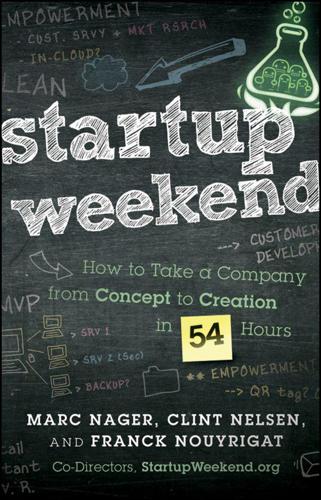
Startup Weekend: How to Take a Company From Concept to Creation in 54 Hours
by
Marc Nager
,
Clint Nelsen
and
Franck Nouyrigat
Published 8 Nov 2011
The following list is by no means complete: Andy Sack, Bill Warner, Brad Feld, Dave McClure, Denis Browne, Eric Ries, Jessica Livingston, John Lewis, Jonathan Ortmans, Kathleen Kennedy, Mark Suster, Robert Scoble, and Yosi Vardi. We'd be remiss if we didn't acknowledge the huge impact our global sponsors have had not only on the organization but on the thousands of Startup Weekend alumni, too. Thank you to Amazon Web Services (Rodica Buzescu), oDesk, O'Reilly, Microsoft BizSpark (particularly Juliano Tubino, Julien Codiniou, Ludo Ulrich, and the rest of the global team), Sun Microsystems (particularly Jeremiah Shackelford), TokBox, and Twilio. Another round of thanks is also in order for the regional and local sponsors who help us bring our events to cities around the world.

The Fourth Industrial Revolution
by
Klaus Schwab
Published 11 Jan 2016
Figure IV: Hard Drive Cost per Gigabyte (1980-2009) Source: “a history of storage costs”, mkomo.com, 8 September 200988 An estimated 90% of the world’s data has been created in the past two years, and the amount of information created by businesses is doubling every 1.2 years.89 Storage has already become a commodity, with companies like Amazon Web Services and Dropbox leading this trend. The world is heading towards a full commoditization of storage, through free and unlimited access for users. The best-case scenario of revenue for companies could potentially be advertising or telemetry. Positive impacts – Legal systems – History scholarship/academia – Efficiency in business operations – Extension of personal memory limitations Negative impact – Privacy surveillance Unknown, or cuts both ways – Eternal memory (nothing deleted) – Increased content creation, sharing and consumption The shift in action Numerous companies already offer free storage in the cloud, ranging from 2 GB to 50 GB.
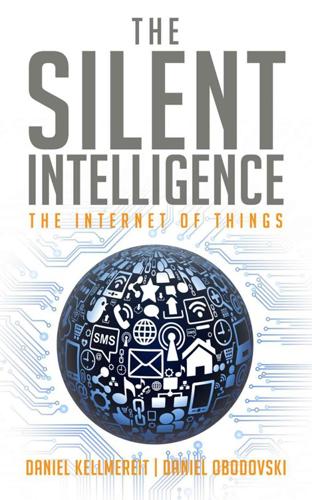
The Silent Intelligence: The Internet of Things
by
Daniel Kellmereit
and
Daniel Obodovski
Published 19 Sep 2013
But speaking of security of connectivity and information, Sanjay Sarma believes cloud services are not any less secure than the ones provided by corporate IT: I think that outsourcing innovation actually ensures security, because you have a few professionals that have best practices. I’d rather trust a thousand people at a company like Amazon Web Services than the four guys in an IT division who have been working there for twenty years. The cloud companies will have the latest enterprise software on their machines, including the latest security updates. That is particularly true if you are doing certain things with sensors that would generate gazillions of terabytes, so much data to be interpreted, analyzed, etc.
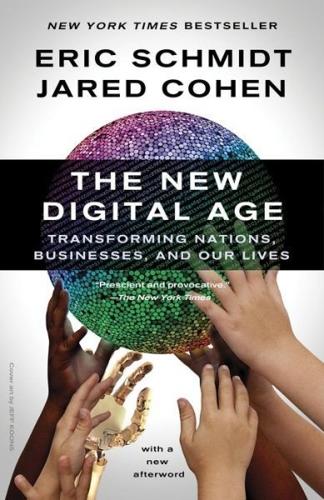
The New Digital Age: Transforming Nations, Businesses, and Our Lives
by
Eric Schmidt
and
Jared Cohen
Published 22 Apr 2013
Building platforms that we merely hope alienated youth will like and use is the equivalent of dropping propaganda flyers from an airplane. Outsiders don’t have to develop the content; they just need to create the space. Wire up the city, give people basic tools and they’ll do most of the work themselves. A number of technology companies have developed start-up kits for people to build applications on top of their platforms; Amazon Web Services and Google App Engine are two examples, and there will be many others. Creating space for others to build the businesses, games, platforms and organizations they envision is a brilliant corporate maneuver, because it ensures that a company’s products are used (boosting brand loyalty, too) while the users actually build and operate what they want.
…
INDEX Aadhaar Abbottabad, Pakistan, 2.1, 5.1 Abkhaz nationalists Abuja, Nigeria Academi, LLC accountability, 2.1, 4.1, 6.1, 7.1 activist groups additive manufacturing Advanced Research Projects Agency (ARPA), n Afghanistan, 1.1, 4.1, 5.1, 5.2, 5.3, 6.1, 6.2, 7.1 reconstruction of, 7.1, 7.2, 7.3 Africa, 3.1, 4.1, 4.2 African Americans African National Congress (ANC) African Sahel African Union Age of Spiritual Machines, The: When Computers Exceed Human Intelligence (Kurzweil), con.1 Agha-Soltan, Neda Agie, Mullah Akbar Agreement on Trade-Related Aspects of Intellectual Property Rights (1994) Ahmadinejad, Mahmoud al-Aqsa Martyrs Brigades al-Assad, Bashar Alcatel-Lucent AlertNet Algeria, 3.1, 4.1 alienation Al Jazeera al-Qaeda, 5.1, 5.2, 5.3, 5.4, 5.5, con.1 al-Shabaab, 2.1, 5.1, 7.1, 7.2 Amazon, itr.1, 1.1, 1.2 data safeguarded by Amazon Web Services American Sentinel drone Android anonymity, 2.1, 3.1, 4.1 Anonymous, 5.1, 5.2 Anti-Ballistic Missile Treaty antiradicalization antiterrorism units, 5.1, 5.2, 5.3, 5.4 Apple, itr.1, 5.1 data safeguarded by apps, 2.1, 5.1 Arab Spring, itr.1, 4.1, 4.2, 4.3, 4.4, 4.5 AR.Drone quadricopter Argentina Armenia arms-for-minerals trade arrests artificial intelligence (AI), itr.1, 1.1 artificial pacemakers Asia Asia-Pacific Economic Cooperation (APEC) Assange, Julian, 2.1, 2.2, 2.3, 2.4, 5.1 Astroturfing Atatürk, Mustafa Kemal, 3.1, 3.2 Athar, Sohaib, n, 269 ATMs augmented reality (AR), itr.1, 2.1 autocracies, 2.1, 3.1, 3.2 data revolution in dissent in information shared by online discussions in Ayalon, Danny Baghdad Baghdad Museum Bahrain Baidu.com, n Bamiyan Buddhas Bangladesh bank loans Basque separatists Batbold, Sukhbaatar battery life Bechtel Belarus Belgium Ben Ali, Zine el-Abidine, 4.1, 4.2 Berezovsky, Boris Better Angels of Our Nature, The (Pinker), 6.1 big data challenge Bill of Guarantees bin Laden, Osama, 2.1, 5.1, 5.2, 6.1, nts.1 biometric information, 2.1, 2.2, 6.1, 6.2, 6.3 Bitcoin, 2.1, nts.1 BlackBerry Messenger (BBM), 2.1, 2.2, 4.1, 5.1 Black Hat Blackwater Blockbuster, n Bloomberg News Bluetooth, 2.1, 2.2, 6.1 body scan body temperatures Boko Haram Bosnia brand Brand, Stewart, n Brazil, 5.1, 5.2, 5.3 Bush, George H.
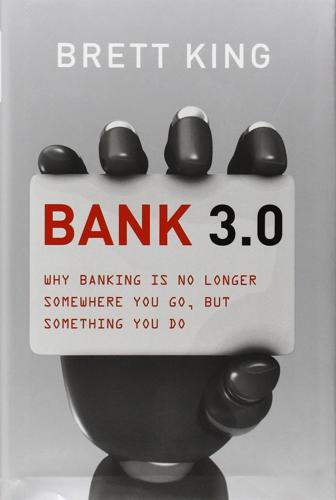
Bank 3.0: Why Banking Is No Longer Somewhere You Go but Something You Do
by
Brett King
Published 26 Dec 2012
—Carmen Herranz, director of innovation at BBVA6 However, much earlier than the BBVA move, some of the more progressive institutions were already floating the concept of moving core banking systems into the cloud for the same reasons—improved productivity, decision making, portability and speed. In May 2010, Michael Harte, CIO of Commonwealth Bank in Australia, announced CBA’s intention to set up a cloud-based operation with Amazon Web Services. Harte explained the rationale behind this move as looking to reduce the cost of purchasing IT and related infrastructure by paying for services on demand as CBA grew, especially as reliance on more digital integration and real-time engagement became essential to CBA’s customer experience. In December 2011, Deutsche Bank went live with its first phase of cloud deployment, namely its IaaS (Infrastructure as a Service) development platform.
…
Deutsche Bank, mentioned earlier, has also developed new modular data centre designs and elastic computing platforms, underpinned by its core identity management platforms, including a Microsoft Active Directory system and an SAP-linked Global LDAP directory. Bank of America, in its efforts to build up private cloud capability, ran just south of 90,000 physical servers and 40 per cent of them were running in the cloud. BofA has set the target to create scaling and capability similar to that of Amazon Web Services environment too, according to Brad Spiers, Head of Compute Innovation at BofA. Interesting to note is that BofA is heavily investing in graphics processing capability, solid-state storage and in-memory databases, with large, fast processing and decision-making capability as the objective. NAB (previously National Australia Bank) of Australia has also committed extensively to private cloud infrastructure as it has moved to a platform-as-a-service concept as part of its programmes built around what it calls NextGen.

How to Build a Billion Dollar App: Discover the Secrets of the Most Successful Entrepreneurs of Our Time
by
George Berkowski
Published 3 Sep 2014
This means that it can be more easily shared (and used) by internal product and development teams. But it also means that the option exists to allow external developers to use it as well. The added bonus is that APIs lay the groundwork for the productisation of internal tools. That simple declaration created an IT, as well as cultural, architecture that catalysed the growth of Amazon Web Services. Within a few short years of its launch in 2006, the service was already a billion-dollar business.2 In short, small teams can run fast and innovate because of their size and the fact that they’re not reliant on the technology from other teams. Move Fast and Break Things Facebook created a culture of agility, promoting a philosophy to ‘move fast and break things’.3 Mark Zuckerberg explained the company’s ‘hacker way’ in a letter to investors:4 Hackers try to build the best services over the long term by quickly releasing and learning from smaller iterations rather than trying to get everything right all at once … We have the words ‘Done is better than perfect’ painted on our walls to remind ourselves to always keep shipping.
…
Index Note: page numbers in bold refer to illustrations, page numbers in italics refer to information contained in tables. 99designs.com 111 500 Startups accelerator 136, 160 Accel Partners 3, 158, 261, 304, 321, 336, 383 accelerators 136, 159–60, 160 accountants 164, 316 accounting software 164 acquisition (of users) costs 148–9, 184, 236–7, 275–9, 282 and Facebook 271, 272, 273–4 for five hundred-million-dollar apps 327, 341–3 for hundred-million-dollar apps 252, 259, 266, 267–74, 275–84, 295–307 and incentive-based networks 270–1 international 295–307 for million dollar apps 136–7, 139, 140–51, 148–9, 153 and mobile social media channels 271–3, 272 and mobile user-acquisition channels 269–70 strategy 222–31 for ten-million-dollar apps 211–12, 213, 222–31, 236–7, 248–9 and traditional channels 268–9 and ‘viral’ growth 225, 278, 279–84 zero-user-acquisition cost 278 acquisitions 414–25 buying sustained growth 417–18 by non-tech corporations 418–20 initial public offerings 420–2 Waze 415–16 activation (user) 136, 137, 139, 153–4, 211–12, 213 Acton, Brian 54, 394 addiction, smartphone 30–1 Adler, Micah 269 administrators 409 AdMob 414–15 advertising 43 business model 67, 89–90 costs 140 and Facebook 271, 272, 273–4 mobile 148–9, 268–70, 272–3, 272 mobile social media 272–3, 272 mobile user-acquisition channels 269–70 outdoor 264 shunning of 42, 54–6 video ads 273 aesthetics 131 after product–market fit (APMF) 180 agencies 195–7, 264, 343 ‘agile coaches’ see scrum masters agile software development 192–3, 299, 315, 357, 377 Ahonen, Tomi 45 ‘aiming high’ 40–1 Airbnb 160, 301 alarm features 48 Albion 111 alerts 293 Alexa.com 146 Alibaba 227 ‘ALT tags’ 147 Amazon 7, 29, 131, 164, 227, 276, 366, 374–5, 401, 406 Amazon Web Services 374 American Express 347 Amobee 149 analytics 134–5, 149, 199, 205, 210, 212, 217–21, 294 and cohort analysis 287–8 Flurry 135, 149, 220 function 217–18 Google Analytics 135, 219–20, 345 limitations 284 Localytics 135, 221 and marketing 263 mistakes involving 218–19 Mixpanel.com tool 135, 217–18, 220–1, 287, 290–1, 345 Andreessen, Marc 180, 418–19 Andreessen Horowitz 72, 80, 180, 321, 383, 385, 418–19 Android (mobile operating system) 6, 23–4, 38, 415 advertising 274 audience size 119 beta testing 202 building apps for 116–22 and international apps 296 in Japan 306 scaling development and engineering 357–8 time spent on 26 and WhatsApp 55 Angel Capital Association 162 angel investors 154, 155–6, 323 AngelList 99, 131, 155, 159, 233 Angry Birds (game) 6, 42, 47, 57–8, 87, 89, 97 and application programming interface 36 delivering delight 207 design 131 funding 321 game in game 348–9 international growth 297–9 platform 117, 118 product extension 356 virality 282 annual offsites 379 annual revenue per user (ARPU) 215, 219, 232, 236 anonymity 43, 56–7 anti-poaching clauses 247 antidilution rights 245 API see application programming interface app descriptions 143 app development billion-dollar app 8, 389–425 CEO advice 406–13 getting acquired 414–25 people 395–405 process 390–1 five-hundred-million-dollar app 325–87 funding 328, 383–7 hiring staff 334–6, 337–40 killer product expansion 350–63 process 326–8 scaling 326, 330–6, 331–2 scaling marketing 341–9 scaling people 364–72, 377–9 scaling process 373–82 scaling product development 357–63 hundred-million-dollar app 251–324 international growth 295–307 process 252–4 product-market fit 255–6 retention of users 286–94 revenue engines 257–66, 275–85 user acquisition 267–74 million-dollar app 81–171 app Version 0.1 123–35 coding 133–4 design 129–33 feedback 127, 134–5 funding 152–60, 161–71, 176, 235–49 identity of the business 106–14 lean companies 115–22 metrics 136–9, 139 process 82–4 startup process 85–105 testing 126–8 user acquisition 140–51 ten-million-dollar app 173–249 growth engine 222–31, 235–49 metrics 211–21 new and improved Version 1.0 198–210 process 174–6 product–market fit 180–97 revenue engine 232–4 venture capital 235–49 app stores 22, 27–8, 33–4 see also Apple App Store; Google Play app-store optimisation (ASO) 142, 225 AppAnnie 205 Apple 19, 20, 31–2, 393 application programming interface 35–6 designers 129 Facetime app 46 iWatch 38–9 profit per employee 402–3 revenue per employee 401 visual voicemail 50 Worldwide Developers Conference (WWDC) 313 see also iPad; iPhone Apple App Store 22, 27, 32–3, 75, 88, 89, 117, 226 finding apps in 140, 141, 142–5 international apps 297–9 making submissions to 152–3 and profit per employee 403 ratings plus comments 204–5 Apple Enterprise Distribution 201–2 application programming interface (API) 35–6, 185, 360, 374 ARPU see annual revenue per user articles of incorporation 169 ASO see app-store optimisation Atari 20 Atomico 3, 261, 321, 383 attribution 227–31 for referrals 230–1 average transaction value (ATV) 214–15, 219, 232, 236, 387 Avis 95 backlinking to yourself 146 ‘bad leavers’ 247 Balsamiq.com 128 Banana Republic 352 bank accounts 164 banking 156–7 Bardin, Noam 43 Barr, Tom 338 Barra, Hugo 120, 306 Baseline Ventures 72 Baudu 226 beauty 131 BeeJiveIM 33 before product–market fit (BPMF) 180 ‘below the fold’ 143 Beluga Linguistics 297 Benchmark 75 benefits 398–400 beta testing 201–4 Betfair 358 Bezos, Jeff 366, 374 Bible apps 45 billion 9–10 Billion-Dollar Club 5 billionaires 9 Bing 226 ‘black-swan’ events 54 BlackBerry 23 Blank, Steve 257 Blogger 41 blood sugar monitoring devices 38 board seats 242, 243–4 board-member election consent 169 Bolt Peters 363 Booking.com 320 Bootstrap 145 Botha, Roelof 76, 77, 80 Box 7, 90, 276, 396–7, 411 brains 10 brainstorming 108 branding 111–13, 143, 263–4 Braun 129 Bregman, Jay xiii, 14–16, 95, 124, 209, 303 bridge loans 323 Brin, Sergey 366 Bring Your Own Infrastructure (BYOI) 17–18 Brougher, Francoise 340 Brown, Donald 44 Brown, Reggie 104–5 Bubble Witch 421 Buffet, Warren 4 build-measure-learn cycle 116 Burbn.com 72–4, 80 business advisors/coaches 103 business analysts 343 business culture 395–8 business goal setting 310–11 business models 67, 83, 87, 88–91, 175, 253, 259, 327, 351–2, 391, 400, 423–4 business success, engines of 183–4, 423–4 Business Wire 150 CAC see Customer Acquisition Cost Cagan, Marty 314 calendars 49 calorie measurement sensors 38 Cambridge Computer Scientists 160 camera feature 48 Camera+ app 48 Candy Crush Saga 6, 47, 87, 89, 131, 278–81, 318, 349, 421–2 card-readers 41–2 cash flow 164 CEOs see Chief Executive Officers CFOs see Chief Financial Officers channels incentive-based networks 270–1 mobile social-media 271–3, 272 mobile user-acquisition 269–70 source attribution 227–31 testing 224–7 traditional 268–9 viral 280–2 charging phones 49–50 Chartboost 149 chauffer hire see Uber app check-ins, location-based 72, 74 Chief Executive Officers (CEOs) 309, 380 advice from 406–13 and the long haul 68 and product centricity 185–6 role 337 Chief Financial Officers (CFOs) 316 Chief Operations Officers (COOs) 309, 326, 337–40, 380 Chief Technology Officers (CTOs) 186–7, 195 Chillingo 298 China 24–5, 146, 226, 306–7 Cisco 402 Clash of Clans (game) 6, 28, 36, 47, 87, 89, 97, 118, 227, 348–9, 398 Clements, Dave 120 Climate Corporation 412, 419 clock features 47 cloud-based software 67, 90 Clover 419 coding 133–4 cofounders 85, 91–105, 188, 191 chemistry 92–3 complementary skills 93 finding 96–9 level of control 94 passion 93–4 red flags 102–3 successful matches 104–5 testing out 100–2 cohort analysis 237, 287–8 Color.com (social photo-sharing) app 113, 255 colour schemes 111 Commodore 20 communication open 412–13 team 194 with users 208–9 Companiesmadesimple.com 163–4 computers 20–1, 29 conferences 97–8, 202, 312–13 confidentiality provisions 244 connectedness 30 ConnectU 105 consumer audience apps 233–4 content, fresh 147 contracts 165–6 convertible loans 163 Cook, Daren 112 cookies 228–9 Coors 348 COOs see Chief Operations Officers Cost Per Acquisition (CPA) 148–9 Cost Per Download (CPD) 148 Costolo, Dick 77–8, 79–80 costs, and user acquisition 148–9, 184, 236–7, 275–9, 282 Crash Bandicoot 33 crawlers 146–7 Cray-1 supercomputer 20 CRM see customer-relationship management CrunchBase 238 CTOs see Chief Technology Officers Customer Acquisition Cost (CAC) 148–9, 184, 236–7, 275–9 customer lifecycle 212–14 customer segments 346–7 customer-centric approach 344 customer-relationship management (CRM) 290–4, 343 customer-support 208–9 Cutright, Alyssa 369 daily active users (DAUs) 142 D’Angelo, Adam 75–6 data 284–5, 345–7 data engineers 284 dating, online 14, 87–8, 101–2, 263 decision making 379–82, 407–8 defining apps 31–4 delegation 407 delight, delivery 205–7 design 82, 129–33, 206–7 responsive 144 designers 132, 189–91, 363, 376 developer meetups 97 developers see engineers/developers development see app development; software development development agencies 196 ‘development sprint’ 192 Devine, Rory 358–9 Digital Sky Technologies 385 directors of finance 316–17 Distimo 205 DLD 97 Doerr, John 164, 310 Doll, Evan 42–3, 105 domain names 109–10 international 146 protection 145–6 Domainnamesoup.com 109 Dorsey, Jack 41, 58, 72, 75–7, 79–80, 104, 112, 215–16, 305, 312, 412–13 ‘double-trigger’ vesting 247 DoubleClick 414 Dow Jones VentureSource 64 down rounds 322–3 downloads, driving 150–1 drag along rights 245 Dribbble.com 132 Dropbox 7, 90, 131, 276 CEO 407, 410–11 funding 160 scaling 336 staff 399 Dunbar, Robin 364–5 Dunbar number 365 e-commerce/marketplace 28–9, 67, 89, 213–14 Chinese 306 Flipboard and 351–2 and revenue engines 232, 233–4, 276 social media generated 271–2 and user retention 288, 289 eBay 7, 28–9, 131, 180, 276 economic models 275 economies of scale 331–2, 331–2 eCourier 15, 95 education 68–9 edX 69 Ek, Daniel 357 Ellis, Sean 182 emails 291–3 emotion effects of smartphones on 29–30, 30 inspiring 223–4 employees see staff employment contracts 246–7 engagement 236, 278, 283 engineering VPs 337, 358–9 engineers/developers 190–1, 194–5, 361–2, 362, 370, 375–7, 405 enterprise 90, 233–4 Entrepreneur First programme 160 entrepreneurs 3–5, 7–8, 65, 262, 393–4, 409, 424 Ericsson 21 Etsy 107, 109, 110, 358 Euclid Analytics 149 Evernote 7, 90, 131, 399 ExactTarget 291 excitement 30 executive assistants 367 Exitround 419 experience 67–8, 264, 397 Fab.com 352 Facebook 7, 10, 26, 32, 48, 76, 226, 394, 422 and acquisition of users 271, 272, 273–4 acquisitions 416–18, 417 agile culture 375 alerts 293 and application programming interface 36 board 180 and business identity 114 and Candy Crush 280–1 Chief Executive Officer 406 cofounders 100–1 and Color 255–6 design 131, 206, 363 Developer Garage 97 driving downloads on 151 and e-commerce decisions 271, 272 and FreeMyApps.com 271 funding 419 and getting your app found 147 and the ‘hacker way’ 375 initial public offering 420–1 and Instagram 29, 51, 76–80, 90, 117 name 110 ‘No-Meeting Wednesday’ 376 product development 187 profit per employee 403 revenue per employee 401 scaling 336 and Snapchat 57 staff 339, 362, 363, 398, 401, 403 and virality 281 WhatsApp purchase 42, 54–6, 416–17, 417 zero-user-acquisition cost 278 and Zynga 279, 281 Facetime app 46 fanatical users 294 feedback 86, 127, 134–5, 182, 192–3, 198–201, 256, 396 loops 204, 211 qualitative 199 quantitative 199 see also analytics Feld, Brad 170, 241 Fenwick and West 168 Fiksu 264, 269–70 finance, VP of 317–18 finding apps 140–8, 148–9 FireEye 90 First Data 419 first impressions 107–10 Fitbit 38 fitness bracelets 38 flat rounds 322–3 Flipboard 6, 29, 42–3, 49, 51, 89–90 and application programming interface 36 Catalogs 351–2 cofounders 105 design 131, 207 funding 164 growth 351–2 platform choice 119 product innovation 351–2 user notifications 292 virality 281 zero-user-acquisition cost 278 Flurry 135, 149, 220 Fontana, Ash 233 Forbes magazine 40 Ford Motors 419 Founder Institute, The 168 founder vesting 166–7, 244 Foursquare 419 France Telecom 13 franchising 354 FreeMyApps.com 270–1 Friedberg, David 412 Froyo (Android mobile software) 7 Fujii, Kiyotaka 304 full service agencies 195–6 functionality 25–6, 45–50, 131 funding 72, 75–6, 84, 87–8, 152–60, 161–71, 179 accelerators 159–60 angel investors 154, 155–6, 323 for billion-dollar apps 391 convertible loans 163 core documents 169–70 for five-hundred-million-dollar apps 328, 383–7 founder vesting 166–7 for hundred-million-dollar apps 254, 258, 316–17, 318–24 incubators 159–60 legal aspects 163–4 and revenue engines 233–4 Series A 234, 238–40, 238, 240, 241, 242–6, 255, 319–21, 385 Series B 238, 241, 253, 260, 284, 319–21, 322, 384 Series C 384 signing a deal 167–8 for ten-million-dollar apps 152–60, 161–71, 176, 235–49 venture capital 72, 75, 156–8, 165–6, 235–49, 261–2, 383–5, 385, 418–19 game in game 348–9 gaming 42, 47, 318, 355 business model 67, 89 and revenue engines 232, 278–9 and user retention 288, 289 see also specific games Gandhi, Sameer 336 Gartner 271 Gates, Bill 4 general managers (GMs) 300–3 Gladwell, Malcolm 424 Glassdoor 361–2 Global Positioning System (GPS) 23 Gmail 72 GMs see general managers goal setting 40–1, 310–11 Goldberg, Dave 397 Goldman Sachs 385 ‘good leavers’ 247 Google 7, 19, 23, 27, 72, 88, 164, 226 acquisitions 43, 414–16, 418 application programming interface 35–6 beta testing 202 Chief Executive Officer 406–8 developer meetups 97 finding your app on 144, 147 Hangouts app 46 meetings 381–2 mission 404, 408–9 and the OKR framework 310 profit per employee 403, 405 revenue per employee 401, 405 scaling 332 and Snapchat 57 and source attribution 228–9 staff 339, 340, 361–2, 366, 401, 403, 404–5, 412 Thank God It’s Friday (TGIF) meetings 311–12 transparency 413 value 78 Waze app purchase 43 and WhatsApp 56 zero-user-acquisition cost 278 see also Android (mobile operating system) Google Ad Mob 149 Google AdSense 149 Google Analytics 135, 219–20, 345 Google Glass 38–9, 405 Google I/O conference 313 Google Maps 33, 35, 414, 416 Google Now 37 Google Play 88, 89, 117, 120, 226 and beta testing 202 finding apps in 141–5 profit per employee 403 ratings plus comments 204–5 Google Reader 72 Google Ventures 384 Google X 405 Google+ and business identity 114 and virality 281 Google.org 339 GPS see Global Positioning System Graham, Paul 184–5, 211 Graphical User Interface (GUI) 20 Greylock 321, 383 Gross, Bill 406–7, 409–10 Groupon 7, 51–2, 227, 344–5, 419 Grove, Andy 310 growth 267, 308–17 buying sustained 417–18 engines 184, 210, 222–31, 259, 265 and five-hundred-million-dollar apps 329–36 and Friday update meetings 311–12 and goal setting 310–11 and hiring staff 308–9, 411–12 and product and development teams 313–14 and staff conferences 312–13 targets 234, 260 see also acquisition (of users); international growth; scaling Growth Hackers 182 GUI see Graphical User Interface hackathons 99 Haig, Patrick 143 Hailo app xiii–xiv, 5, 36, 89, 386 big data 284–5 branding 112–13 cofounders 94–6 customer segments 346–7 customer-support 208–9 design 131, 132, 133, 206–7 development 123–7, 153–4 Friday update meetings 311 funding 162, 242 goal setting 310 growth 296–7, 299, 302–4, 308–11, 313, 315–17, 329–30, 334–6 hiring staff 308–9, 334–6, 338, 366–7 idea for 14–18 international growth 296, 297, 299, 302–4 market research 182 marketing 263, 264, 268, 270, 273, 341, 347–8 meetings 381 metrics 137–9, 216 name 107 organisational culture 396 platform choice 117, 120, 121 premises xiii–xiv, 177–8, 329–30, 371–2, 386 product development 189, 191, 196 retention 293–4 revenue engine 276 scaling development and engineering 357 scaling people 365–7 scaling process 377 team 258 testing 177–8, 201–4 and user emotionality 224 virality 280, 282 Hangouts app 46 Harris Interactive 31 HasOffers 149 Hay Day 47, 97 head of data 342 Heads Up Display (HUD) 38 heart rate measurement devices 37–8 Hed, Niklas 42 hiring staff 308–9, 334–6, 337–40, 365–70 history of apps 31–2 HMS President xiii–xiv, 177–9, 329, 371, 386 HockeyApp 202 HootSuite 151 Houston, Drew 407, 410–11 HP 180, 402 HTC smartphone 121 HUD see Heads Up Display human universals 44–5 Humedica 419 hyperlinks 147 hypertext markup language (HTML) 147 I/O conference 2013 202 IAd mobile advertising platform 149 IBM 20, 402 icons 143 ideas see ‘thinking big’ identity of the business 86 branding 111–13 identity crises 106–14 names 106–11 websites 113–14 image descriptions 147 in Mobi 149 in-app purchases 28 incentive-based networks 270–1 incorporation 163–4, 179 incubators 159–60 Index Ventures 3, 261 initial public offerings (IPOs) 64, 67–9, 78, 80, 246, 420–2 innovation 404–5 Instagram 6, 29, 48, 51, 67, 71–80, 88–90, 114, 117, 226, 278, 340, 417–18 cofounders 73–4 design 131 funding 75–6, 77–8 X-Pro II 75 zero-user-acquisition cost 278 instant messaging 46 Instantdomainsearch.com 109 integrators 410 Intel 310 intellectual property 165–6, 244, 247 international growth 295–307 Angry Birds 297–9 Hailo 296, 297, 299, 302–4 language tools 297 Square 295, 299, 304–6 strings files 296 Uber 299–302 International Space Station 13 Internet bubble 13 investment see funding iOS software (Apple operating system) 7, 23–4, 46, 75, 104 advertising 274 audience size 119 building apps for 116–22 and international apps 296 scaling development and engineering 357–8 time spent on 26 iPad 42–3, 118–20, 351 iPhone 6, 19, 22–3, 32, 38–9, 183, 351 advertising on 274 camera 48 designing apps for 117–18, 120 finding apps with 145 games 42, 47, 58 and Instagram 74–6 in Japan 306 and Square 104, 306 and Uber 301 user spend 117 and WhatsApp app 54–5 iPod 22 IPOs see initial public offerings Isaacson, Walter 32 iTunes app 22, 47, 88, 143 iTunes U app 69 Ive, Jony 129 iZettle 304 Jackson, Eric 40 Jain, Ankit 142 Japan 227, 304–6 Jawbone Up 38 Jelly Bean (Android mobile software) 7 Jobs, Steve 4, 22, 32, 323, 393, 425 journalists 150–1 Jun, Lei 306 Kalanick, Travis 299–300, 384, 422 Kayak 336 Keret, Samuel 43 Keyhole Inc. 414 keywords 143, 146 Kidd, Greg 104 King.com 349, 421–2 see also Candy Crush Saga KISSmetrics 291 KitKat (Android mobile software) 7 Klein Perkins Caulfield Byers (KPCB) 158, 261, 321, 383 Kontagent 135 Koolen, Kees 320, 339 Korea 30 Koum, Jan 42, 54, 55–6, 154, 321, 394, 416 Kreiger, Mike 73–6 language tools 297 Launchrock.com 113–14, 145, 202 Lawee, David 415 lawyers 103, 169, 170, 242 leadership 410–11 see also Chief Executive Officers; managers lean companies 69, 115–22, 154, 257, 320–1 Lee, Bob 340 legalities 163–70, 242–7, 301 letting go 406–7 Levie, Aaron 396–7, 411 Levinson, Art 32 LeWeb 97 Libin, Phil 399 licensing 356 life experience 67–8, 264 lifetime value (LTV) 184, 215, 219, 220–1, 232, 275–7, 279, 291, 342 Line app 46, 226 Lingo24 297 LinkedIn 97, 226, 406, 408–9 links 147 liquidation preference 242, 243, 245 non-participating 245 Livio 419 loans, convertible 163 Localytics 135, 221 locations 69 logos 111–14 LTV see lifetime value luck 412 Luckey, Palmer 39 LVMH 304 Lyons, Carl 263 Maiden 95 makers 375–7 see also designers; engineers/developers managers 189–90, 300–3, 375–7, 405 MapMyFitness 419 market research 115, 127, 182 marketing data 345–7 and Facebook 271, 272, 273–4 and incentive-based networks 270–1 marketing engineering team 344–5 and mobile social media channels 271–3, 272 and mobile user-acquisition channels 269–70 partner marketing 347–8 scaling 341–9 teams 262–6, 337, 342 and traditional channels 268–9 VPs 262–6, 337, 342 marketplace see e-commerce/marketplace MasterCard 347–8 Matrix Partners 283 McClure, Dave 136, 160, 211, 234 McCue, Mike 42–3, 105, 351 McKelvey, Jim 41, 104 ‘me-too’ products 181 Medium 41 Meebo 73 meetings 379–82, 412–13 annual offsite 379 daily check-ins 381 disruptive nature 376–7 Friday update 311–12 meaningful 381–2 monthly strategic 380 quarterly 380 weekly tactical 380 Meetup.com 98–9 Mendelsen, Jason 170 messaging platforms 226 time spent on 46 and user retention 288, 289 metrics 136–9, 139, 211–21 activation 136, 137, 139, 153–4, 211–12, 213 annual revenue per user (ARPU) 215, 219, 232, 236 average transaction value (ATV) 214–15, 219, 232, 236, 387 consensual 215–16 lifetime value (LTV) 184, 215, 219, 220–1, 232, 275–7, 279, 291, 342 and product-market fit 209–10 referral 137, 138, 139, 153, 154, 211–12, 213, 230–1 revenue 137, 138, 139, 154, 211–12, 213, 214–15, 219, 291 transparency regarding 312 see also acquisition (of users); retention (of users) mice 20 Microsoft application programming interface 35–6 revenue per employee 401 Windows 20, 22, 24 Millennial Media 149 minimum viable product (MVP) 123, 153 MirCorp 13–14 mission 261, 404, 408–9 Mitchell, Jason 51 Mitsui Sumitomo Bank 305 Mixpanel.com tool 135, 217–18, 220–1, 287, 290–1, 345 MMS see Multimedia Messaging Service Mobile Almanac 45 Mobile App Tracking 230, 231 mobile technology, rise of 19–39 MoMo app 306 Monsanto 419 moonshots 404–5 Moore, Jonathan 200 MoPub 149 Moqups.com 128 Mosaic 180 Motorola 21 Moz.com 143 Mullins, Jacob 419 Multimedia Messaging Service (MMS) 47 Murphy, Bobby 43, 104–5, 152–3 music player apps 47 MVP see Metrics into Action; minimum viable product names 106–11, 142 NameStation.com 108 Nanigans 273–4 National Venture Capital Association 64 native apps 33–4 NDA see Non Disclosure Agreement negotiation 265 Net Promoter Score (NPS) 206, 209 net-adding users 206 Netflix 400 Netscape 164, 180 New Enterprise Associates 385 New York Times news app 32–3, 256 news and alerts feature 48–9 Nextstop 72 Nguyen, Bill 255–6 NHN 227 Nike Fuelband 38 Nintendo Game Boy 47 Nokia 21, 35–6 Non Disclosure Agreement (NDA) 165 noncompetition/non-solicitation provision 244, 247 notifications 291–4 NPS see Net Promoter Score Oculus VR 39 OKR (‘objectives and key results’) framework 310–11, 380 OmniGraffle 128 open-source software 23, 34–5, 185 OpenCourseWare 68–9 operating systems 20–4 see also Android; iOS software operations VPs 337 org charts 258, 309 organisational culture 395–8 O’Tierney, Tristan 104 outsourcing 194–7 ownership and founder vesting 166–7 and funding 155, 156, 161–3, 318 oxygen saturation measurement devices 37–8 Paananen, Ilkka 118–19, 397–8 Page, Larry 4, 23, 382, 404, 407–8 Palantir 90 Palihapitiya, Chamath 187 Pandora 7, 47, 67, 131, 410 pay-before-you-download model 28 pay-per-download (PPD) 225 Payleven 304 payment systems 7, 33–4, 227, 304, 305 see also Square app PayPal 7, 227, 304, 305 Pepsi 196 Perka 419 perks 398–400 perseverance 67, 394, 410 personal computers (PCs) 29 perspiration measurement devices 38 Pet Rescue Saga 349, 421 Petrov, Alex 369 phablets 7 Pham, Peter 255 PhoneSaber 33 Photoshop 128 PIN technology 305 Pincus, Mark 311 Pinterest app 48, 226 and business identity 114 and e-commerce decisions 271, 272 and getting your app found 147 name 107 and virality 281 Pishevar, Shervin 300 pivoting 73–4 population, global 9–10 portfolio companies 261–2 PowerPoint 128 PPD see pay-per-download preferential return 243 premises 370–2 preparation 412 press kits 148, 150 press releases 150 Preuss, Dom 98 privacy issues 43, 56–7 private vehicle hire see Uber pro-rata rights 242, 243 producers 409 product chunks 360 product development scaling 357–63 scope 199 team building for 188–91 and team location 193–4 and vision 186–8, 191 see also app development; testing product expansion 350–63 product extension 354 product managers 189–90, 405 product-centricity 185–6, 314, 360 product-market fit 9, 180–97, 235–6, 248, 256–7 measurement 209–10, 212, 286–8 profit 267, 320, 342 profit margin 258–9, 318, 321 profit per employee 402–4, 403, 405 profitability 260, 277, 400 Project Loon 405 proms 12 proto.io tool 133 prototype apps 86, 174 app Version 0.1 123–35, 174 new and improved Version 1.0 198–210 rapid-design prototyping 132–3 PRWeb 150 PSP 47 psychological effects of smartphones 29–30, 30 pttrns.com 131 public-relations agencies 343 publicity 150–1, 225, 313 putting metrics into action 138–9 Puzzles and Dragons 47, 131 QlikView 221, 284–5 QQ 307 quality assurance (QA) 190–1, 196 Quora 76 QZone 307 Rabois, Keith 368, 369 Rakuten 227 Rams, Dieter 129 rapid-design prototyping 132–3 ratings plus comments 204–5 Red Bull 223 redemption codes 230 referrals (user) 137, 138, 139, 153, 154, 211–12, 213 attribution for referrals 230–1 referral codes 230 religious apps 45 remuneration 361–2, 362, 363 Renault 13 restated certification 169 retention (of users) 136–9, 153, 154 for five hundred-million-dollar apps 327, 341–3 for hundred-million-dollar apps 286–94, 288–9 measurement 286–8 for ten-million-dollar apps 206, 211–12, 213, 278 revenue 137–8, 139, 154, 211–12, 213, 214–15, 219, 236, 239–40, 267, 291, 331–2, 341–2, 354 revenue engines 184, 210, 232–4, 257–66, 265, 275–85 revenue per employee 400–2, 402, 405 revenue streams 27–9 Ries, Eric, The Lean Startup 115–16 Rockefeller, John D. 9 Rocket Internet 304 Rolando 33 Rosenberg, Jonathan 413 Rovio 58, 97, 118, 297–9, 318, 320–1, 336, 354, 409 see also Angry Birds Rowghani, Ali 77 Rubin, Andy 23 Runa 419 SaaS see software as a service Sacca, Chris 75–6 sacrifice 86–7 Safari Web browser 32 salaries 361–2, 362, 363 sales VPs 337 Salesforce 291 Samsung 23 Galaxy Gear smartwatch 38 smartphones 121 Sandberg, Sheryl 4, 100–1, 339, 397 SAP 304 scaling 259, 308, 312, 323–4, 326, 330–6, 331–2, 384–5 decision making 379–81 international growth 295–307 marketing 341–9 and organisational culture 396–8 people 338–9, 364–72 premature 334–5 process 373–82 product development and engineering 357–63 and product innovation 350–6 reasons for 333–4 skill set for 335–6 Schmidt, Eric 120 scope 199 screenshots 131, 144, 206 scrum masters (‘agile coaches’) 315, 359, 360 search functions 49 organic 141–2, 141, 145 search-engine optimisation (SEO) 142, 145–8, 225 Sedo.com 109 Seed Fund 136 Seedcamp 160 Sega Game Gear 47 segmentation 220, 287, 290, 346–7 self-empowered squads/units 360 SEO see search-engine optimisation Sequoia Capital 76, 77–80, 158, 255, 321, 383, 385 Series A funding 234, 238–40, 238, 240, 241, 242–6, 255, 261, 262, 319–21, 385 Series B funding 238, 241, 253, 260, 319–21, 322, 384 Series C funding 384 Series Seed documents 168 Sesar, Steven 263 sex, smartphone use during 31 Shabtai, Ehud 43 shares 156, 166–8, 244 ‘sharing big’ 51–2, 52 Shinar, Amir 43 Shopzilla 263 Short Message Service (SMS) 21, 46–7 Silicon Valley 71–4, 77, 79, 99, 162, 168, 180, 184, 255, 340, 361, 411, 422 Sina 227 sitemaps 146–7 skills sets complementary 93 diverse 409–10 for scaling 335–6 Skok, David 283 Skype app 7, 46, 111, 200–1, 226, 357, 419 Sleep Cycle app 48 Smartling 297 smartwatches 7, 38–9 SMS see Short Message Service Snapchat app 6, 43, 46, 56–7, 88, 89, 223, 226, 416, 418 cofounders 104–5 design 131 funding 152–3, 307, 320 name 107 platform 117 staff 340 valuations 333 virality 280, 283 zero-user-acquisition cost 278 social magazines 42–3 see also Flipboard social media 48 driving downloads through 151 and getting your app found 147 mobile channels 271–3, 272 and user retention 288, 289 Sofa 363 SoftBank 227 software development agile 192–3, 299, 315, 357, 377 outsourcing 194–5 see also app development software as a service (SaaS) 67, 90, 208, 214, 233, 276–7 Somerset House 329–30, 371 Sony 21, 47 SoundCloud 358 source attribution 227–31 space tourism 13–14 speech-to-text technology 50 speed 20 Spiegel, Evan 43, 56–7, 104–5, 152–3 Spinvox 50 Splunk 90 Spotify app 47, 357–8 SQL 284 Square app 6, 41–2, 58–9, 87, 89, 333, 350 branding 112 Chief Executive Officer 412–13 cofounders 104 design 131, 363 funding 320–1 international growth 295, 299, 304–6 marketing 348 metrics 215–16 name 107, 110 product–market fit 183 revenue engine 276 scaling people 367–8 scaling product innovation 352–3 staff 340, 367–8 transparency 312 virality 282 Square Cash 353 Square Market 353 Square Register 350, 352–3 Square Wallet 348, 350, 353 Squareup.com 144 staff at billion-dollar app scale 395–405, 423 attracting the best 91 benefits 398–400 conferences 312–13 conflict 334, 378 employee agreements 244 employee legals 246–7 employee option pool 244 employee-feedback systems 378 firing 370, 378 hiring 308–9, 334–6, 411–12 induction programmes 370 investment in 360 mistakes 369–70, 411–12 and premises 370–2 profit per employee 402–4, 403 revenue per employee 400–2, 402 reviews 370 scaling people 364–72, 377–9 scrum masters 315, 359, 360 training programmes 370 see also cofounders; specific job roles; teams Staples 419 Starbucks 338, 348 startup weekends 98 startups, technology difficulties of building 63–80 failure 63–5, 73–4 identity 106–14 lean 115–22, 154 process 82–4, 85–105 secrets of success 66–9 step sensors 38 stock markets 420–1 straplines 111 strings files 296 Stripe 160 style 111 subscriptions 90 success, engines of 183–4, 423–4 SumUp 304 Supercell 28, 47, 97, 118–19, 318, 336, 397–8, 401, 403 see also Clash of Clans; Hay Day SurveyMonkey 397 surveys 206, 209 synapses 10 Systrom, Kevin 71–80 tablets 7 Tableau Software 90 Taleb, Nicholas Nassim 54 Tamir, Diana 51 Tap Tap Revolution (game) 42 Target 419 taxation 164 taxi hailing apps see Hailo app TaxiLight 16 team builders 264 team building 188–91 teams 82, 174, 252, 390 complementary people 409–10 for five-hundred-million-dollar apps 326, 342–5, 357–63, 374, 386 growth 313–14, 326, 342–4 for hundred-million-dollar apps 258–61 located in one place 193–4 marketing 262–6, 342–4 marketing engineering 344–5 product development and engineering 357–63 ‘two-pizza’ 374 TechCrunch Disrupt 97, 99 technology conferences 97–8, 202, 312–13 Techstars 159, 160, 168 Tencent 307 Tencent QQ 226 term sheets 168, 169, 170, 243–4 testing 126–8, 177–8, 187–8, 192–3, 199–201 beta 201–4 channels 224–7 text messaging 21 unlimited packages 42 see also Short Message Service ‘thinking big’ 40–59, 82, 85 big problem solutions 41–3 disruptive ideas 53–9 human universals 44–5 sharing big 51–2, 52 smartphones uses 45–50 Thoughtworks 196 time, spent checking smartphones 25–6, 26, 45–50 Tito, Dennis 13 tone of voice 111 top-down approaches 311 traction 233, 252 traffic information apps 43 traffic trackers 146 translation 296–7 transparency 311–12, 412–13 Trilogy 13 Tumblr 110, 226, 399, 418 Twitter 41, 48, 54, 72, 226, 394 acquisitions 418 and application programming interface 36 and Bootstrap 145 and business identity 114 delivering delight 206 and e-commerce decisions 272 and FreeMyApps.com 271 funding 419, 421 and getting your app found 147 initial public offering 421 and Instagram 51, 76–7, 79–80 name 110 and virality 281 ‘two-pizza’ teams 374 Uber 6, 36, 87, 89, 333, 350 and attribution for referrals 231 design 131 funding 320, 384, 422 international growth 295, 299–302 name 107, 110 revenue engine 276 revenue per employee 401 scaling product innovation 355–6 staff 339, 399 user notifications 292 virality 280 Under Armour 419 Union Square Ventures (USV) 3, 158, 242, 261, 262, 288, 321, 323, 377, 383 unique propositions 198 UnitedHealth Group 419 URLs 110 ‘user experience’ (UX) experts 190 user journeys 127–8, 213–14 user notifications 291–4 user stories 193 users 83, 175, 252, 327, 390 activation 136, 137, 139, 153–4, 211–12, 213 annual revenue per user (ARPU) 215, 219, 232, 236 communication with 208–9 definition 137 emotional response of 223–4 fanatical 294 finding apps 140–8 lifetime value (LTV) 184, 215, 219, 220–1, 232, 275–7, 279, 291 metrics 136–9 net-adding of 206 ratings plus comments 204–5 referrals 137, 138, 139, 153, 154, 211–12, 213, 230–1 target 83, 115, 127 wants 180–97 see also acquisition (of users); retention (of users) Usertesting.com 200–1 USV see Union Square Ventures valuations 83, 161–3, 175, 237–8, 238, 253, 318, 319, 322, 327, 333, 391 venture capital 72, 75, 156–8, 165–6, 235–49, 261–2, 383–5, 385, 418–19 Viber app 6, 46, 1341 video calls 46, 47 viral coefficient 282–4 ‘viral’ growth 225, 278, 279–84 Communication virality 281 and cycle time 283–4 incentivised virality 280–1 inherent virality 280 measurement 282–4 social-network virality 281 word-of-mouth virality 281–2 virtual reality 39 vision 261, 393–4, 408–9, 414, 415 voice calls 46–7 voice-over-Internet protocol (VOIP) 46 voicemail 50 Wall Street Journal 43, 55 warranties 246 Waze app 6, 43, 97 acquisition 415–16 design 131 name 107 zero-user-acquisition cost 278 web browsing 49 Web Summit 97 websites 113–14, 144–8 WebTranslateIt (WTI) 297 WeChat app 46, 226, 306 Weibo 48 Weiner, Jeff 408–9 Wellington Partners 4 Weskamp, Marcos 207 Westergren, Tim 410 WhatsApp 6, 42, 46, 54–6, 87, 90, 226, 394 acquisition 42, 54–6, 416, 416–17, 417 cofounders 96 design 131, 144 funding 154, 320–1 platform 117–18 valuations 333 virality 280 White, Emily 340 Williams, Evan 41, 65 Williams, Rich 344 Wilson, Fred 110, 242, 288, 323, 377 Windows (Microsoft) 20–1, 22, 24, 24 Winklevoss twins 105 wireframes 127–8 Woolley, Caspar 15–16, 95, 124, 338 WooMe.com 14, 87–8, 101–2, 263 Workday 90 world population 9–10 Worldwide Developers Conference (WWDC) 313 wowing people 8–9 WTI see WebTranslateIt Xiaomi 306 Y Combinator 159–60, 184–5, 211, 407, 410–11 Yahoo!
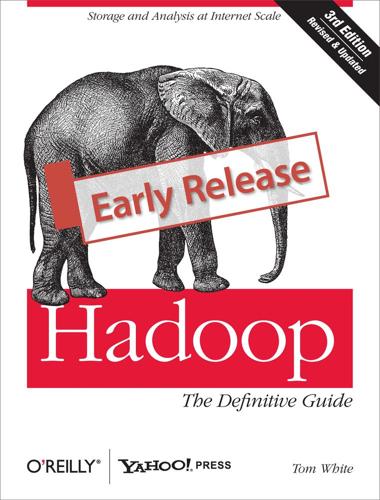
Hadoop: The Definitive Guide
by
Tom White
Published 29 May 2009
The volume of data being made publicly available increases every year, too. Organizations no longer have to merely manage their own data: success in the future will be dictated to a large extent by their ability to extract value from other organizations’ data. Initiatives such as Public Data Sets on Amazon Web Services, Infochimps.org, and theinfo.org exist to foster the “information commons,” where data can be freely (or in the case of AWS, for a modest price) shared for anyone to download and analyze. Mashups between different information sources make for unexpected and hitherto unimaginable applications.
…
Here we create an RSA keypair with an empty passphrase, stored in a file called id_rsa_whirr in the current user’s .ssh directory: % ssh-keygen -t rsa -P '' -f ~/.ssh/id_rsa_whirr Warning Do not confuse the Whirr SSH keypair with any certificates, private keys, or SSH keypairs associated with your Amazon Web Services account. Whirr is designed to work with many cloud providers, and it must have access to both the public and private SSH key of a passphrase-less keypair that’s read from the local filesystem. In practice, it’s simplest to generate a new keypair for Whirr, as we did here. We need to tell Whirr our cloud provider credentials.
…
The volume of these events can be huge, too large to process with traditional systems. This data can also be very “dirty” thanks to “injection attacks” from rogue systems, browser bugs, or faulty widgets. For this reason, ShareThis chose to deploy Hadoop as the preprocessing and orchestration frontend to their backend systems. They also chose to use Amazon Web Services to host their servers, on the Elastic Computing Cloud (EC2), and provide long-term storage, on the Simple Storage Service (S3), with an eye toward leveraging Elastic MapReduce (EMR). In this overview, we will focus on the “log processing pipeline” (Figure 16-19). The log processing pipeline simply takes data stored in an S3 bucket, processes it (described shortly), and stores the results back into another bucket.
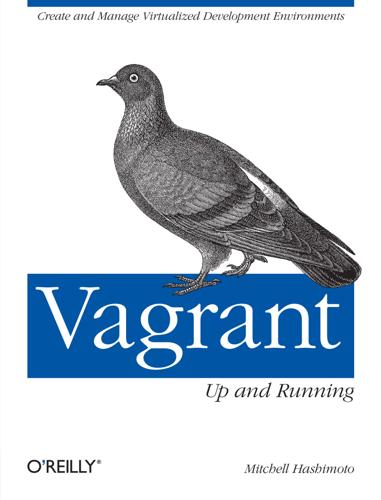
Vagrant: Up and Running
by
Mitchell Hashimoto
Published 29 May 2013
And with just a little bit of easy-to-learn configuration, Vagrant can automatically set up complex network configurations, install and manage software within the virtual machine, or package the virtual machine for re-use by other people. Virtualization is the foundational technology behind what is often referred to as the cloud. Amazon Web Services, Microsoft Azure, virtual private server (VPS) providers, and more are based completely around this technology or those similar to it. These sort of cloud services are now the de facto standard for hosting web applications. Virtualization is everywhere. The good news is that virtualization technology is readily available to anyone with a modern computer.

Smart Cities: Big Data, Civic Hackers, and the Quest for a New Utopia
by
Anthony M. Townsend
Published 29 Sep 2013
Yet media reports barely noted it. Cellular outages during crises have become so commonplace in modern urban life that we no longer question why they happen or how the problem can be fixed. Disruptions in public cloud-computing infrastructure highlight the vulnerabilities of dependence on network apps. Amazon Web Services, the eight-hundred-pound gorilla of public clouds that powers thousands of popular websites, experienced a major disruption in April 2011, lasting three days. According to a detailed report on the incident posted to the company’s website, the outage appears to have been a normal accident, to use Perrow’s term.
…
Index Access Together, 166 Accountability Department, U.S., 265 ACM Queue, 266 Adams, Sam, 83 Aerotropolis (Kasarda and Lindsay), 24 Agent.btz, 269 Airbnb, 163 air-conditioning, early solutions for, 19–20 air defense, computer systems for, 63 Air Force, U.S., 63, 259 “air-gapping,” 269 AirPort, 128 air transportation, 63 digital technology in, 32–33 Albritton, Dan, 301–2 Alexander, Christopher, 142–44, 285–86 Alfeld, Louis Edward, 81–82, 86 Allan, Alasdair, 271 Altair, MITS, 153 Altman, Anne, 65 Amar, Georges, 106, 133 Amazon Web Services, 263–64 American Airlines, 63–64 American Express, 62 Amin, Massoud, 35 Amsterdam, 279 analog cellular, 53 Angelini, Alessandro, 91–92 Ansari X PRIZE, 202–3 API (application program interface), 150 Apple, 49, 128, 148, 271 Siri of, 233 apps, 121–26, 144–52, 183, 213, 235 to address urban problems, 156–59 badges for, 148 contests for, 156, 200–205, 212, 215, 225, 227–30 for navigation of disabled, 166 situated software as, 232–36 “Trees Near You” as, 201–2 variety of, 6 Apps for Democracy, 156, 200–201, 203 Arab Spring, social media in, 11–12 Arbon, 37 Arcaute, Elsa, 313–14 Archibald, Rae, 80 Archigram, 20–21 Architectural Association (London), 20 Architectural Forum, 142 Architecture Without Architects (Rudofsky), 111–12 Arduino, 137–41 ARPA (Advanced Research Projects Agency), 259 ARPANET, 111, 259–60, 269 ArrivalStar, 293 Arup, 32 Ashlock, Philip, 158–59 Asimov, Isaac, 73–75, 88 Association for Computing Machinery, 260 Astando, 244 AT&T, 35–37, 51–52, 111, 260, 272 dial-up Internet service at, 36 Atlanta, Ga., 66 Atlantic, The, 75 AutoCAD, 302 AutoDesk, 302 automobile, as new technology, 7 Ayers, Charlie, 252 Babajob, 178–79 “Baby Bells,” 195 Baltimore, Md., 211 Banavar, Guru, 66–67, 69, 90, 306 Bangalore, 66, 178–79 Cisco’s smart city engineering group at, 45 as fast-growing city, 13 Ban Ki-moon, 181–82 Banzi, Massimo, 137 Baran, Paul, 259–60 Barcelona, 10, 246–47 destruction of wall of, 43 Barragán, Hernando, 137 Barry, Marion, 199 Batty, Michael, 85–87, 295–97, 313, 315–16 Becker, Gene, 112–13 Beijing, 49, 273–74 Belloch, Juan Alberto, 223 Beniger, James, 42–43 Bentham, Jeremy, prison design of, 13 Berlin, 38 Bernstein, Phil, 302 Bettencourt, Luis, 312–13 Betty, Garry, 196 Bhoomi, 12–13 big data, 29, 87, 191, 292–93, 297, 305–6, 316, 319 “Big Ideas from Small Places” (Khanna and Skilling), 224 BlackBerry Messenger, riots coordinated via, 12 blogosphere, 155 Bloomberg, Michael, 147, 205–6, 304 Boing-Boing, 156 Booz Allen Hamilton, 30 Bosack, Len, 44 Boston, Mass., 212–17, 239–41, 306–7 “Adopt-A-Hydrant” in, 213 Discover BPS, 240–42 Office of New Urban Mechanics in, 213–16 “What Are My Schools?”

WikiLeaks and the Age of Transparency
by
Micah L. Sifry
Published 19 Feb 2011
SIFRY 13 14 15 16 17 18 19 20 21 22 23 24 205 January 28, 2011, www.reuters.com/article/2011/01/28/us-wikileaksidUSTRE70R5A120110128?pageNumber=1. See http://about.lob.by/localeaks/ for details. Micah L. Sifry, “From WikiLeaks to OpenLeaks, Via the Knight News Challenge,” techPresident, December 17, 2010, http://techpresident.com/ blog-entry/wikileaks-openleaks-knight-news-challenge. Amazon Web Services, http://aws.amazon.com/message/65348. Interview with author, December 1, 2010. PayPal’s vice president of platform, Osama Bedier, said that the company acted in response to the State Department legal advisor’s letter to WikiLeaks, which declared its receipt of the leaked cables to be a violation of the law.

The Automatic Customer: Creating a Subscription Business in Any Industry
by
John Warrillow
Published 5 Feb 2015
Not surprisingly, its first focus was on baby products like diapers and wipes—a category Amazon placed a big bet on when it paid $545 million to acquire Quidsi, the creators of Diapers.com, which itself offers a subscription for diapers that enjoyed 30% month-over-month growth in 2013.6 Amazon is known for its wins in selling to consumers—but subscriptions can work for B2B as well as B2C. One of Amazon’s latest ventures is a subscription that offers to help other companies grow their subscription businesses. Amazon Web Services (AWS) offers companies access to servers, software, and technology support on a subscription basis. Many of the world’s largest subscription companies, including Adobe, Citrix, Netflix, and Sage, use AWS, along with many of the highest-profile start-ups, like Airbnb, Pinterest, Dropbox, and Spotify.
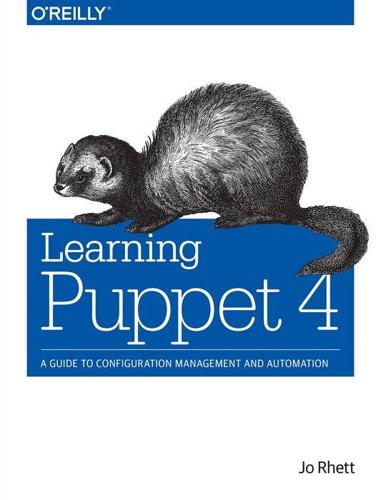
Learning Puppet 4: A Guide to Configuration Management and Automation
by
Jo Rhett
Published 24 Mar 2016
If you are an experienced developer or operations engineer, you are welcome to use a testing environment of your own choice. Anything which can host multiple Linux nodes will work. Puppet’s needs are minimal. Any of the following would be suitable for use as a Puppet test lab: • • • • • A bunch of spare systems you have sitting around that you can install Linux on. An AWS Free Tier Amazon Web Services instance. An OpenStack DevStack development instance. An VMware Free vSphere ESXi solo instance. A Vagrant development environment on your personal computer. You can build your own test lab using one of the solutions above, or you can use an existing test lab you maintain. In all cases I recommend using an OS compatible with RedHat Enterprise Linux 6 or 7 for learning purposes.

The Second Intelligent Species: How Humans Will Become as Irrelevant as Cockroaches
by
Marshall Brain
Published 6 Apr 2015
No one in 2000 would have imagined a company like Google with control over millions of server machines and petabytes of storage space. Yet here we are in 2015 and Google exists in that form. Many other companies – Microsoft, Facebook, Apple, Amazon, etc. - have similar amounts of computing power and storage space. And Amazon makes it possible for anyone to easily build their own cloud platform using a system called AWS (Amazon Web Services). The processing power, hard disk space and RAM in a typical desktop computer has increased dramatically because of Moore's Law since desktop machines first appeared in the 1980s. Extrapolating out to the years 2020 and 2040 shows a startling increase in computer power. The point where small, inexpensive computers have power approaching that of the human brain is just a few decades away.
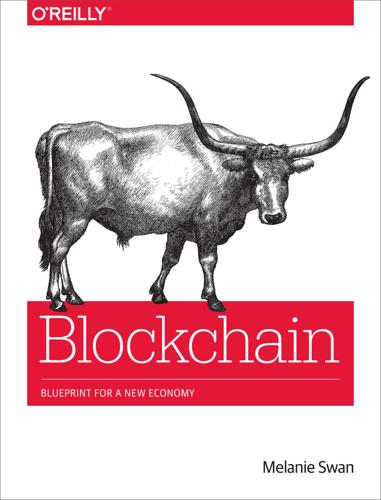
Blockchain: Blueprint for a New Economy
by
Melanie Swan
Published 22 Jan 2014
Genomecoin, GenomicResearchcoin Even without considering the longer-term speculative possibilities of the complete invention of an industrial-scale all-human genome sequencing project with the blockchain, just adding blockchain technology as a feature to existing sequencing activities could be enabling. Conceptually, this would be like adding coin functionality or blockchain functionality to services like DNAnexus, a whole-human genome cloud-based storage service. Operating in collaboration with university collaborators (Baylor College of Medicine’s Human Genome Sequencing Center) and Amazon Web Services, the DNAnexus solution is perhaps the largest current data store of genomes, having 3,751 whole human genomes and 10,771 exomes (440 terabytes) as of 2013.147 The progress to date is producing a repository of 4,000 human genomes, out of the possible field of 7 billion humans, which highlights the need for large-scale models in these kinds of big data projects (human whole-genome sequencing).
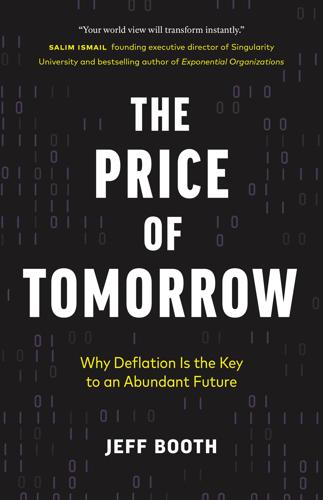
The Price of Tomorrow: Why Deflation Is the Key to an Abundant Future
by
Jeff Booth
Published 14 Jan 2020
All other retailers combined—including Walmart, Home Depot, Target, eBay, Best Buy, and Costco—fight over the remaining 55 cents sold online. It has 199 million monthly unique users on its sites and 100 million Prime members that pay an annual fee to Amazon for special deals.11 Besides selling products and services, Amazon also leverages the technology it builds by allowing others to access it for their businesses. Amazon Web Services is an $80 billion business on its own and controls 32 percent of cloud computing. Somewhat ironically, it was Lehman Brothers that failed to see what was coming in the credit crisis of 2008 and was forced into bankruptcy. Beyond the smarts, drive, and curiosity of Bezos, it’s easy to see that without a little luck and timing, it all could have been different.
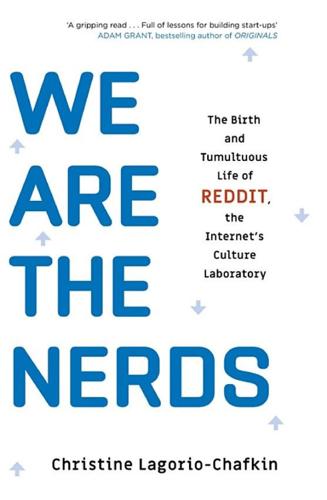
We Are the Nerds: The Birth and Tumultuous Life of Reddit, the Internet's Culture Laboratory
by
Christine Lagorio-Chafkin
Published 1 Oct 2018
They’d throw a huge Halloween party for loyal Redditors that night at a sports bar in Potrero Hill called the Connecticut Yankee. Before the party, they’d accomplish a bit of hardware handiwork they’d begun that past spring. Back in mid-May, the company had transitioned all its operations and the site’s storage to Amazon Web Services. It had been a bit bumpy at first—the team pulled an all-nighter to figure out how to fix the site’s performance when its servers weren’t sitting inches from one another, until Huffman coded a fix. They’d kept the old servers around in case of trouble, but five months had passed without significant incident.
…
Other recent names include ServyMcServface, fidgetspinner, IllBeYourServerTonight, Hillary-email-server, and SeanSpicer-porn-folder. “The way our servers work, they get spun up and killed quite a lot,” Wardle said. “So probably for a brief period, yes, we had one called Snowden. There was definitely one called Harambe.” Reddit’s operations were managed across Amazon Web Services and employed between six hundred and one thousand servers at a time, scaling to more during busy times of day. There was no physical AWS server bestowed with a silver nameplate thanks to a vote of random humans scattered across the planet, so none of this makes a tremendous amount of sense.

Coders: The Making of a New Tribe and the Remaking of the World
by
Clive Thompson
Published 26 Mar 2019
“See, this is what I’m talking about,” Spectre says, slapping his laptop shut with a grimace. “The distance between looking like a genius and looking like an idiot in programming? It’s one character wide.” Even the slightest mistake in an instruction can produce catastrophe. One morning in early 2017, there was a massive collapse of Amazon Web Services, a huge cloud-computing system used by thousands of web apps, including some huge ones, like Quora or Trello. For over three hours, many of those big internet services were impaired. When Amazon finally got things up and running again and sent in a team to try and figure out what had gone wrong, it appeared that the catastrophe had emerged from one of their systems engineers making a single mistyped command.
…
See artificial intelligence (AI) Albright, Jonathan, ref1 Alciné, Jacky, ref1 algorithms, ref1, ref2 bias in ranking systems, ref1 scale and, ref1 algorithms challenge whiteboard interview, ref1, ref2, ref3 Algorithms of Oppression (Noble), ref1 Allen, Fran, ref1, ref2 Allen, Paul, ref1 AlphaGo, ref1, ref2 Altman, Sam, ref1, ref2 Amabile, Teresa M., ref1 Amazon, ref1, ref2, ref3 Amazons (board game), ref1 Amazon Web Services, ref1 Analytical Engine, ref1 Anderson, Tom, ref1 AND gate, ref1 Andreessen, Marc, ref1, ref2, ref3, ref4, ref5, ref6, ref7, ref8 Antisocial Media (Vaidhyanathan), ref1 Apple, ref1 Apple I, ref1 Apple iPhone, ref1, ref2 aptitude testing, ref1 architects, ref1 artificial intelligence (AI), ref1 dangers of, warnings about and debate over, ref1 de-biasing of, ref1 deep learning (See deep learning) edge cases and, ref1 expert systems, ref1 Hollywood depiction of, ref1 initial attempts to create, at Dartmouth in 1956, ref1 job listing sites, biased results in, ref1 justice system, effect of AI bias on, ref1 learning problem, ref1 neural nets (See neural nets) racism and sexism, learning of, ref1 artistic temperaments, ref1 Assembly computer language, ref1 Atwood, Jeff, ref1, ref2 Babbage, Charles, ref1, ref2 back-end code, ref1, ref2, ref3, ref4 backpropagation, ref1 “Bad Smells in Code” (Fowler and Beck), ref1 Baffler, The, ref1 Bahnken, A.
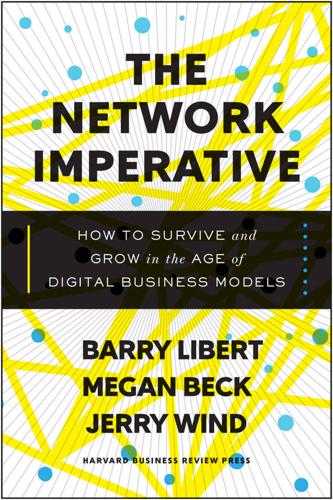
The Network Imperative: How to Survive and Grow in the Age of Digital Business Models
by
Barry Libert
and
Megan Beck
Published 6 Jun 2016
Amazon believes that it will someday be able to predict what its customers want so accurately that it will begin the shipping process before the orders are even placed. If you haven’t heard, this deep data strategy is paying off. Amazon has one of the best customer satisfaction ratings in the United States, and it translates that wealth of customer data into new customer-satisfying innovations like the Kindle, Amazon streaming, and Amazon Web Services. Maintaining specific, measurable goals and tracking key metrics, leaders at Amazon can make decisions quickly and confidently, with the best information possible. The rapid iteration required of digital innovation—particularly for network businesses—requires this type of support. PIVOT Step 5: Track The goal of Track, an ongoing process, is to determine which metrics and which reporting frequency you need to best support the development of your network business.
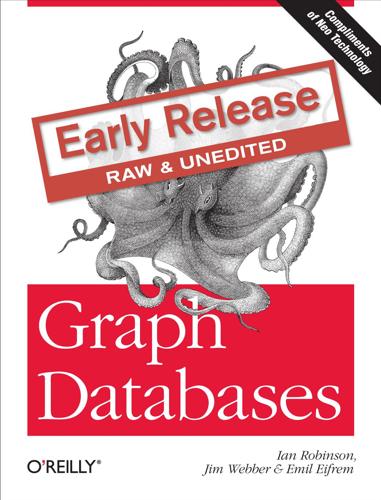
Graph Databases
by
Ian Robinson
,
Jim Webber
and
Emil Eifrem
Published 13 Jun 2013
Not only does this regulate write traffic, it reduces contention, and allows you to pause write operations without refusing client requests during maintenance periods. Global clusters For applications catering to a global audience, it is possible to install a multi-region cluster in multiple datacenters and on cloud platforms such as Amazon Web Services 7. See http://docs.neo4j.org/chunked/milestone/ha-configuration.html Application Architecture | 73 (AWS). A multi-region cluster allows you to service reads from the portion of the cluster geographically closest to the client. In these situations, however, the latency introduced by the physical separation of the regions can sometimes disrupt the coordination pro‐ tocol; it is, therefore, often desirable to restrict master reelection to a single region.

Futureproof: 9 Rules for Humans in the Age of Automation
by
Kevin Roose
Published 9 Mar 2021
Starker still was the difference in billable hours: it took the lawyers an average of ninety-two minutes to complete the challenge, whereas LawGeex’s AI finished in twenty-six seconds. Even computer programmers, long seen as the white-collar workers with the best job opportunities, are at risk of automation. “No-code” and “low-code” development interfaces, which allow non-programmers to create applications, as well as centralized service providers like Amazon Web Services, have made it possible for companies to write software and maintain technical infrastructure with fewer humans than ever before. Even AI engineers may be automating themselves out of jobs. In 2017, Google released AutoML, a suite of tools that uses machine learning models to build and train other machine learning models.
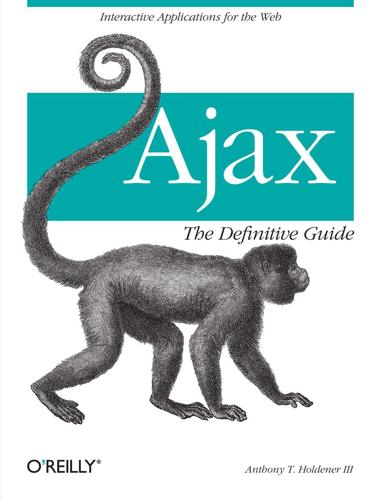
Ajax: The Definitive Guide
by
Anthony T. Holdener
Published 25 Jan 2008
> <soap:Envelope xmlns:soap="http://www.w3.org/2001/12/soap-envelope" soap: encodingStyle="http://www.w3.org/2001/12/soap-encoding"> <soap:Header> <!-- Header information --> </soap:Header> <soap:Body> <!-- Body Information --> </soap:Body> </soap:Envelope> Example 17-1 shows what a request may look like using Amazon Web Services (AWS) to get details regarding this book. The Amazon Standard Item Number (ASIN) is how Amazon tracks every item that it sells. In the case of books, the ASIN is the same as the book’s ISBN. Example 17-1. A SOAP request using AWS <?xml version="1.0" encoding="utf-8" ?> <SOAP-ENV:Envelope xmlns:SOAP-ENV="http://schemas.xmlsoap.org/soap/envelope/" xmlns:SOAP-ENC="http://schemas.xmlsoap.org/soap/encoding/" xmlns:xsi="http://www.w3.org/2001/XMLSchema-instance" xmlns:xsd="http://www.w3.org/2001/XMLSchema" SOAP-ENV:encodingStyle="http://schemas.xmlsoap.org/soap/encoding/"> <SOAP-ENV:Body> 598 | Chapter 17: Introducing Web Services Example 17-1.
…
Send email to index@oreilly.com. 925 Ajax web applications (see RIAs) Ajax.NET, 97 Ajax.PeriodicalUpdater() object, 690, 868 Ajax.PeriodicUpdater object, 101 Ajax.Request object, 99 Ajax.Request( ) method, callbacks, 416 Ajax.Responders object, 867 Ajax.Updater object, 101, 867 options, 101 ajaxload.info web site, 436 Akismet (blogging API), 620, 892 alert boxes, 335 integrating the window into web applications, 335–347 keeping focus and closing the pop up, 339–343 moving the window, 344–347 window style, 336–339 variations caused by operating systems and browsers, 335 alpha channel, 438 alpha transparency, 438 support by PNG format, 440 alternate stylesheets, 364, 371 font size, 389 “Alternative Style: Working with Alternate Style Sheets”, 372 Amazon Standard Item Number (ASIN), 598 Amazon Web Services (see AWS) Amazon.com Book page, 154 breadcrumbs on, 221 organizing tools, 155 web services, 652 XML Scratch Pad, 609 Amnesty International, 656, 892 Amp’s main page, 144 animation, 434–481 Ajax, 453–481 dragging and dropping, 454–464 drawing libraries, 472–481 dynamically animating position of an object, 464–467 effects on objects, 467–472 object manipulations, 467–472 using frameworks, 453 building with PNG format, 439–453 CSS, 441 differences from GIFs, 440 JavaScript looping, 442–444 926 | Index more robust animation object, 444–448 using Ajax, 448–453 character animation for games, 735–753 moving the character, 742–753 walking loop, 735–742 GIF format history of, 435 how it works, 435–437 on the Web, 434 animation object (example), 442–444 adding Ajax, 448–453 starting, pausing, and stopping programmatically, 444–448 AOL Instant Messenger, 893 Apache Software Foundation (ASF), Jakarta Struts, 60 Apache web server, 36 features, 37 mod_headers module, 812 module to handle compression, 814 typical HTTP header sent from, 811 APIs, web service, 618, 619–658 Ajax and, 657 blogging services, 620–623 bookmark services, 623–626 financial services, 626 mapping services, 627–631 news and weather services, 636–641 NewsIsFree, 637–641 other services, 656 photo services, 641–649 Flickr, 642–649 reference, 892–915 reference services, 650 search services, 651 shopping services, 652–655 eBay, 653–655 appearance of an application (see visualization) appendChild( ) method, 108, 259, 260 Apple Mac OS X alert windows, 335 Safari web browser, 18 <applet> elements, id attribute (XHTML 1.0), 321 applets, 734 arcade games, 731 ArcWeb, 627, 893 array literals, 824 arrays, using to store changing information, 399 ASCII, 852 online list of character codes, 223 ASIN (Amazon Standard Item Number), 598 ASP (Active Server Pages), 39, 40 ASP.NET, 40 assemblies (.NET), 59 asynchronous, 864 Atom, 16, 614 support by browser engines, 18 attributes creating for DOM elements, 106 creating for DOM nodes, 107 <frame> elements, style attributes, 317 <frameset> element, 317 XHTML versus HTML form elements, 484 XML, 845 Audioscrobbler, 632 AWS (Amazon Web Services) gathering AWS response and formatting for client, 610 methods available with, 608 REST request, 609 SOAP request using, 598 SOAP request using PHP, 607 WSDL document (example), 601–604 B back and forward buttons (browsers), problems with Ajax, 245, 918 background check records, 667 backward compatibility, web developers and, 19 balance (application layout), 159 bar graph based on user-submitted data, 476–481 completed page with bar graph, 481 JavaScript handling response, request, and drawing, 478–480 page to request data for the graph, 476 server-side script handling dynamic bar graph request, 477 base64_encode( ) function, 312 BaseError object, 409 BBC, 637, 893 before pseudoclass (CSS), 297 behavior property, 314 Berlind, David, 661 Bible lookup service, 656 Big O notations (sorting algorithms), 268 binary transparency, 439 bindings element (WSDL), 601 Blinksale (invoice service), 626, 894 bloat, avoiding in web application design, 143 blogging services, 620–623 list of some popular blogging APIs, 620 using FeedBurner MgmtAPI in an application, 621–623 Blogmarks (bookmarking service), 624, 894 blogs, 155 body component of a web page, 792 breaking into smaller pieces, 793–795 book information database (ISBNdb), 650 bookmark services, 623–626 del.icio.us API, 624–626 listing of some popular APIs, 623 bookmarks, 244 problems with Ajax, 917 breadcrumbs, 221–226 creating with XHTML lists and CSS, 222 CSS styling rules, 222 dynamically creating, 225 importNode( ) function for Internet Explorer, 224 supplied by server response, 223 Bresenham line algorithm, 748, 750 Bresenham, Jack E., 750 broken links, testing in web applications, 26 browsers, 17–19 alert windows, 335 alpha transparency support, 439 application navigation and, 151 back and forward buttons, problems with Ajax, 245 bookmarks, problems with Ajax, 244 code for browser detection, 198–199 compressed content, 814 CSS specifications, 13 customizations, 363–367 character encoding, 366 font sizes, 366 stylesheets, 364–366 enhancing to become true applications, xiii font sizes, relative, 386 functioning of file menu example, 209 Gecko layout engine, 18 KHTML/WebCore layout engines, 18 other layout engines, 19 Index | 927 browsers (continued) page loading status, 240 plug-ins, 733 Flash, 733 Java applets, 734 Shockwave, 734 pop-up windows and, 362 Presto layout engine, 19 right mouse button clicks, 764 standards compliance and backward compatibility, 20 standards supported by browser engines, 17 tables populating, innerHTML or DOM methods, 259 problems with, 248 testing performance in web application development, 26 Trident layout engine, 18 web standards and, 10 XMLHttpRequest object implementations, 69 XPath implementations, 83 XSLT and XPath support, 17 bubble sorts, 268 business logic layer (BLL), 804 business records, 667 businesses advantages of Ajax applications, 672–674 ease of installation, 674 reducing costs, 673 communication through combined applications, 720 communication through file sharing, 691–703 file notification, 696–698 receiving the file, 698–703 sending a file, 692–696 communication through whiteboards, 703–719 building the board, 703–707 enhancing with pen color choices, 715–718 enhancing with stamps and shapes, 719 replicating rendering on all users’ screens, 707–714 real-time communication, 674–691 chat client, 678–686 chat server, 686–690 client/server communication, 675 connecting to chat, 675–678 928 | Index button_onclick function (example), 465 buttons image built into a CSS button, 184 navigation bar, 180–184 representing 3D, 183 buySAFE, 894 BVS Performance Center for Banks, 145 C C# .NET, adding compression to a site, 832 C# documentation comments, 26 Cache-Control header (HTTP), 813 Cairo graphics engine (Gecko), 19 CakePHP framework, 62 callbacks Ajax response, 864 Ajax.Request( ) method, 416 supporting Ajax calls to the server for animations, 481 capital letters, use in application text, 166 Cascading Style Sheets (see CSS) Casciano, Chris, 332 Castlevania (arcade game), 731 catch clause, 414 Cavedog’s Total Annihilation game, 724 cells collection, 136 CGI (Common Gateway Interface), 37 FastCGI, 37 Channel Definition Format (CDF), 15 character class (example) changes in direction, 770 collision bounding constraints, 754 collision detection and other functionality, 756–759 modified animation object as basis, 735–740 modified for different characters and animation sequences, 740–742 mouse click event handling, 749–753 movement functionality added, 743–747 starts and stops movement, event handling, 770 character encodings, 851 choosing in browsers, 366 character references, 851 character.js file, 778–783 chat application (example), 672–691 chat client, 678–686 adding events to input controls, 680 event-handling functions, SendMessage( ) and QuitChat( ), 681 JavaScript code to run Ajax chat client, 683–686 monitoring message queue on server and displaying new messages, 682 PHP that creates structure, 679 tracking current users, 683 chat server, 686–690 get_messages.php file, 688 get_users.php file, 690 logout.php file, 686 put_message.php file, 687 quote_smart( ) function to prevent SQL injection, 687 client/server communication, 675 connecting to chat, 675–678 working Ajax chat application, 690 chat services, 155 checkboxes (form controls), 493 custom, 499 properties, 499 setting error indicator to, 553 using id attributes to get values, 494 Chevron, Jemima, 718 chunks-of-data structuring, 236 circular collision detection, 759–762 Pythagorean theorem, 759 testing a point and a circle, 761 testing for a circle and a rectangle, 761 testing two circles for collision, 761 class attribute, using for quick customizations, 398 classes FCL (Framework Class Library), 58 specification in web application development, 25 client frameworks, 94–97 Dojo Toolkit, 94 DWR, 96 jQuery, 96 other, 97 Prototype, 95 objects used with Ajax, 99–102 Sarissa, 97 client request for a web service, 606 client side of Ajax applications modular coding, 791–803 CSS, 795–802 JavaScript, 802 XHTML, 791–795 optimizations, 818–830 JavaScript, 822–830 XHTML and CSS, 819–822 client/server architecture, 28 communication between client and server, 838 communication model for chat program, 675 data validation duties, 536 RPC for distributed computing, 595 web sites in the year 2000, 6 client-side errors, 409 notifying the user, 419 closePopUp( ) function, 340 CLR (Common Language Runtime), 40 CMSs (Content Management Systems), Zope and, 62 CNET, 653, 895 code examples in this book, xviii code optimization, 839 coincident lines, 764 collisions, 753–764 circular collision detection, 759–762 detection techniques, 753 handling, 772 linear collision detection, 762–764 rectangular collision detection, 754–759 color color themes switcher, creating, 392–397 contrasts between text and its background, 166 GIF image format, 256-color-palette limit, 437 palette-based GIF images, 436 true-color images in GIF file format, 438 color wheel, 718 colors.css file, 369 example of contents, 370 Colossal Cave Adventure, 726 comb sorts, 268 comma-separated value (CSV) files, 47 comments documenting code, 27 removing from CSS and XHTML files, 819 removing from JavaScript files, 822 XML, 849 commercial Ajax web applications, 32 Common Gateway Interface (see CGI) Common Intermediate Language (CIL), 58 Common Language Infrastructure (CLI), 59 Common Language Specification (CLS), 58 Common Type System (CTS), 58 communication functionality, 155 Index | 929 communication needs for business combining applications, 720 file sharing, 691–703 file notification, 696–698 receiving the file, 698–703 sending a file, 692–696 real-time communication, 674–691 chat client, 678–686 chat server, 686–690 client/server communication, 675 connecting to chat, 675–678 whiteboards, 703–719 building the board, 703–707 enhancing with pen color choices, 715–718 enhancing with stamps and shapes, 719 replicating rendering on all users’ screens, 707–714 compiled languages, 37 compression, 830–833 adding to a site using C# .NET, 832 adding to a site using PHP, 831 HTTP, 813–815 CompuServe, GIF format, 435 conditional catch clause, 414 confirmation window, 349–351 consistency importance in application layout, 161 importance in web application design, 150 content changes, Ajax and, 923 Control.Slider object, 389–392 controller (MVC model), 30 controls and widgets, design of, 316 cookies, 375–381 incorporating into style switcher object, 378–381 simple cookie object (example), 376–378 storing user customization information, 407 cost savings from using web applications, 673 Craigslist, 660 CREATE TABLE statement (SQL), 49 createDocumentFragment( ) method, 107 createElement( ) method, 106, 260 createTextNode( ) method, 107, 259, 260 createXMLHttpRequest( ) function, 71 credit cards, validating, 541–543 credit checks, 626 930 | Index “Cross-Browser Scripting with importNode( )”, 329 cross-browser compatibility, testing for web applications, 26 Crowther, William, 726 Crysis (FPS game), 723 CSS (Cascading Style Sheets), 5, 117–129 CSS1 specification, 13 CSS2 specification, 13 properties and JavaScript equivalents, 119–124 CSS2.1 specification, 13 CSS3 specification, 13 Dojo Toolkit drag-and-drop functionality, 457 drop-down menu solution, 188–191 font size switching, 387–389 forms, 498 image rollovers in browsers without scripting, 186 in tabs, 216 layout using, 250–252 modifying and removing style, 118 stylesheet manipulation methods, 118 modularity of CSS files, 795–802 media types, 800 style properties, 796–800 notification of errors in form data, 552–555 error rules, 553–554 rule switching with JavaScript, 555 numbering system for document and table of contents, 296 optimizations, 819–822 removing comments from files, 819 removing unnecessary whitespace, 819 shortening class and id names, 821 using shorthand notation, 822 pen color changes in whiteboard application, 716 PNG image to be used in animation, 441 Results objects, Google’s AJAX Search API, 592 rule types, 117 sample tabs using XHTML lists, 213–215 simple navigation bars styled with, 176–180 slide show application, Internet Explorer version, 314 slide show styling, 305–307 sortable list styling, 300 standards supported by browser engines, 18 style information, 126 style switching, structure for CSS files, 368–371 styles for a Windows-like file menu, 195–198 styling <div> element to replace <iframe>, 324 styling alert windows, 338 styling breadcrumbs, 222 Internet Explorer and, 223 styling links at bottom of a page, 226 support by ASP.NET, 40 tab content sections, hiding from view, 218 table styling, keeping with sorts, 280–283 Zen Garden site, 160, 332 separating structure from presentation, 333–334 CSS2Properties object, 119 cssRules collection, 128 CTS (Common Type System), 58 CURL package, 655 Custom Search Engine, 587 CustomError object (example), 423–426 modified to garner user feedback, 428–432 D Daily CSS Fun web site, 332 Dalton Mailing Service, Inc., 146 data access layer (DAL), 804 data access module (model in MVC), 30 data exchange formats, choosing between XML and JSON, 92–94 data sources (for mashups), 665–668 open source services, 668 public data, 665–667 background check records, 667 business records, 667 people searches, 667 public records, 666 selecting, 670 data validation, 534–562 Ajax client/server validation, 558–562 advantages of, 562 checking form fields on the fly, 558–561 CSS notification of errors, 552–555 CSS error rules, 553–554 rule switching with JavaScript, 555 feeds, 616 importance of, 534 server-side, 555–558 checking whether expected data was received, 556 protecting the database, 557 returning problems to the client, 557 value checks, 557 using JavaScript, 536–552 checking phone numbers, 539 Dojo Toolkit, 549–552 regular expressions, 538 validation object, 543–549 value checking, 537 data, Ajax optimization, 839 databases, 44–48 basic three-tier application design pattern, 29 errors, 412 IBM DB2, 45 indexing, 569, 836 interaction with, using frameworks, 64–67 ISBNdb, 650 logging errors to, 420 Microsoft SQL Server, 45 nonrelational database models, 47 open source, MySQL and PostgreSQL, 46 optimization of SQL, 808 Oracle, 45 protecting from attacks, 557 querying, steps involved, 65 saving form data sent from clients, 528 server-side code to store element position, 405 storing information for a draggable object, 404 storing user customization information, 407 storing whiteboard coordinates, 710 DataUnison eBay Research, 653, 895 Dave.TV (video service), 632, 895 dBASE, 47 declarations XML, 844 XSLT, 856 decode( ) method (json class), 89 decrementing operators, 829 del.icio.us (bookmark service), 623, 624–626, 896 adding a post programmatically using PHP, 624–626 parameters to add a post, 624 Index | 931 DELETE statement (SQL), 53 delivery company, mashup pinpointing truck locations, 671 demographic information service, 650 density (in application layout), 160 Department of Corrections, data on felonies, 667 descriptors, GIF, 435 design of Ajax interfaces (see interfaces, designing) design patterns, 28–31, 148 client/server, 28 MVC (model-view-controller), 30 three-tier (basic), 29 Unique URLs, 244 design phase Ajax web application development, 25 software development life cycle, 23 DHTML Tree (Zapatec), 234 Diablo game series, 729 dimensional databases, 47 <div> elements hints for user searches, 577 innerHTML property, placing content into windows, 347 making draggable, 455 popupContainer, 340 using with Ajax to replace <iframe> elements, 323–329 inserting content, 325–329 styling the <div> element, 324 whiteboard, 703 Django framework, 61 document fragments, 828 Document object getElementById( ) method, 494 loading XML string into, 81 loadXML( ) method, 79 methods used to create nodes in a document tree, 107 setProperty( ) method, 83 Document Object Model (see DOM) document tree, 103 root element or root node, 104 text element or text node, 104 W3C node types, 105 document.getElementsByClassName( ) function, 98 documentation, 26 932 | Index documentFragment object, constructing tables, 260 DocumentFragment objects, 107 appending to list of child nodes, 108 Dojo Toolkit, 94, 880–884 dojo.io.bind, 881 drag-and-drop functionality, 457–460 adding a handle to draggable object, 458 creating draggables and droppables, 458 methods for HtmlDragSource object, 459 script to enable, 457 effects, 468 online demo, 470 handling results, 881 JSON with dot notation, 882 moving objects, 464 sending form data, 883 sortable list drag-and-drop functionality, 301–302 validation objects, 549–552 widgets for building form elements and forms, 515–517 dollar sign function, $( ), 98 DOM (Document Object Model), 5, 103–140 changing styles, 117–129 Internet Explorer and, 127 style information, 126 creating elements, attributes, and objects, 106–108 Document object traversal, 105 DOM Level 1 specification, 13 DOM Level 2 specification, 13, 106 Internet Explorer and, 224 DOM Level 3 specification, 13 XPath support by browsers, 83 element, attribute, and object information, 112–115 methods, listed, 113 properties, listed, 114 events, 129–135 creating, 130 information about, 131–133 initializing, 130 Internet Explorer and, 133 Form object, 490 importNode( ) method, 327 innerHTML property and, 138–140 JavaScript optimization and, 827–828 keyboard and mouse events, 764 loading XML file into Document object, 79 methods for dynamic table creation, 258 modifying and removing elements, attributes, and objects, 108–112 methods, listed, 110–112 parsing, 77 problems with using tables for layout, 248 specifications, 13 standardized list of DOM node types, 104 standards supported by browser engines, 18 tables, 135–138 traversing the DOM document tree, 115–117 methods, listed, 116 traversal properties, listed, 116 dot notation, 882 dragdrop components, 802 Draggable object, 344–345, 403, 455–456 change callback function, 456 container with handle for dragging point, 456 optional parameters, 455 Draggable object (Rico), 460 Draggables object, 455 dragging and dropping, 157 animation technique, 454–464 Dojo Toolkit, 457–460 Rico library, 460 script.aculo.us objects, 455–457 wz_dragdrop.js library, 460–463 Zapatec library, 463 sortable lists, 297–302 DrawCanvasUpdate( ) function, 713 drawing libraries, 472–481 JavaScript Vector Graphics Library, 472–481 Ajax application, 476–481 methods available to, 474–476 DrawPoint( ) method, 706 driving directions searches MapQuest classic site, 6 MapQuest site using Ajax, 8 drop downs (form controls), 493 custom, 505–515 properties, 505 preparing for the addition of Ajax, 495 drop-down menus, 188–191 Droppables object, 456 add( ) method, optional parameters, 456 callback functions, 457 Dropzone object (Rico), 460 DTDs (document type definitions), 853 Frameset, 316 SOAP documents and, 598 Dun and Bradstreet Credit Check, 626, 896 DWR framework, 96 dynamic content, providing with CGI, 37 with FastCGI, 37 with servlets, 38 with SSI, 38 dynamic directions (character movement), 747 E eBay, 653, 653–655, 896 API and documentation, 653 input parameters for REST requests, 654 requesting search results from REST API, 654 REST methods available in the API, 654 ECMA (European Computer Manufacturer’s Association) International, 12 Ecma International, 10 ECMAScript, 12 ActionScript implementation, 733 e-commerce sites, 652 economic games, 725 Edition 4 of ECMA-262, 19 Education and Outreach Working Group (WAI), 168 educational environment (web applications), 32 Edwards, Dean, 314 Effect object Accordion( ) method, 237 changing to open multiple sections, 238 Position( ), 466 SlideUp( ) and SlideDown( ) methods, 239 Effect object (Rico), 464 Index | 933 effects and dragdrop components, 802 effects on objects (animation), 467–472 Dojo Toolkit, 468 script.aculo.us, 467 Zapatec Effects library, 470–472 efficiency of web applications, 150 electronic products data center, 653 Element interface, 106 Element object hide( ) method, 242, 340 removeClassName( ) and add ClassName( ) methods, 283 show( ) method, 242, 340 elements DOM, 106 form, 482–484 SOAP document, 598 WSDL, 599–601 XML, 845 XSLT, 856–861 email addresses, validating, 540 embedded interpreters, FastCGI and, 37 empty( ) method, 556 encode( ) method, 90 Encoding namespace (SOAP), 598 end users, expecting too much of, 147 English Standard Version (ESV) Bible Lookup, 656, 897 Enterprise Resource Planning (ERP) packages, 62 entity headers (HTTP), 810 entity references, 849 Envelope namespace (SOAP), 598 environments (Ajax web applications), 31–33 commercial, 32 educational, 32 government, 33 intranet, 31 specific content, 33 equality testing, 537 ERP5, 62 error levels, 421 defining custom error levels, 422 errors, 408–433 displaying user errors, 420–433 following site design, 421–433 handling, 417–420 emailing the developer, 420 logging to a database, 420 notifying the user, 418 ignorable, 417 JavaScript, 409 934 | Index requiring immediate attention, 417 server-side, 410–413 database, 412 external errors, 413 server scripting, 410–412 trapping, 414–417 Ajax requests, 416 throwing an error, 415 try...catch...finally block, 414 escaping potentially dangerous characters to the database, 557 ESPN main page, 143 ESV (English Standard Version) Bible Lookup, 656, 897 Ethernet protocol, 816 packets, 817 European Computer Manufacturer’s Association (ECMA) International, 12 EvalError object, 409 event handling, 767–776 changes in direction, 770 receiving data, 774 starts and stops, 767–770 user input, 767 event listeners, 131 Event object, 132 constants and methods, 342 observe( ) method, 343, 442 pointerX( ) and pointerY( ) methods, 704, 766 EventCapturer object, 132 EventListener object, 132 events DOM, 129–135 creating, 130 focus and, 343 information about, 131–133 initializing, 130 Internet Explorer and, 133 modules, 129 importNode( ) function that registers events, 327–329 replacement of DOM Events with XML Events, 11 Events object (example), 767–770 changes in direction, 770 collision events, 773 making requests and parsing commands from server, 774 events.js file, 783–786 Excel, 47 execution speed, 809 execution time, 808 optimizing in JavaScript, 826 Expires response header (HTTP), 813 Extensible HyperText Markup Language (see XHTML) Extensible Markup Language (see XML) Extensible Stylesheet Language Transformation (see XSLT) extension blocks (GIF), 436, 438 F Facebook, 656, 897 Faces.com, 642, 897 FastCGI, 37 FCL (Framework Class Library), 58 FedEx, 898 feed aggregators, 614 feedback in Ajax web application design, 152 getting from users regarding errors, 428–432 FeedBlitz (blogging service), 620, 898 FeedBurner web services, 620, 898 MgmtAPI, 621 FeedMap, 627, 898 Fielding, Roy, 605 <fieldset> elements, 483 grouping associated form elements, 489 setting error indicator to checkboxes and radio buttons, 553 file menu, 192–212 adding Ajax, 210 code for browser detection, 198–199 CSS styles for Windows-like file menu, 195–198 JavaScript code for manipulating, 199–209 XHTML file, 192–195 file sharing, 691–703 file notification, 696–698 checking server for file notices, 696 get_file_notices.php file, 697 JSON response from server, 697 receiving the file, 698–703 delete_file.php, 700 PHP file checking indicator and giving response to sender, 702 sending user client monitoring for receiving, 700–702 server handling of get_file.php request, 698 sending a file, 692–696 PHP file to create form for file transfer, 692–694 saving file and alerting receiving user, 694 file size, 807, 808 file uploads from client to server, 529 financial services, 626 Firefox character encoding changes, 367 feedback agent, 428 text size changes, 367 user changes to browser theme, 363 :first-child pseudoselector (CSS), 223 first-person shooter (FPS) games, 722 “Fixing the Back Button and Enabling Bookmarking for Ajax Apps”, 244 Flash, 733 flat file databases, 47 flexibility of web applications, 150 Flickr, 155, 641, 899 example REST request, 642 example REST response, 642 JSON response to client, 649 methods available within the API, 643–648 organizing tools, 155 response formats, 642 REST request with JSON response to client (example), 648 focal point (of an application), 161 focus keeping focus on a pop-up alert box, 339–343 poor focus in web application design, 144 focusOnPopUP( ) function (example), 340 fonts, 162–167 browser font size changes, 366 color contrasts, 166 commanding attention to text, 166 font families and their types, 163–166 spacing of text, 166 switching font sizes, 386–392 CSS font file, 387–389 font-size slider bar, 389–392 relative font sizes, 386 use of capital letters, 166 fonts.css file, 369 example of contents, 370 Food Candy, 656 for loops, optimization techniques, 826 form buttons, 493 Index | 935 <form> elements, 483 <fieldset> element, 489 id attribute (XHTML 1.0), 321 name attribute, 490 Form object properties, 493 submit( ) and reset( ) methods, 493 Form.Validation object (example), 543–549 added functionality for Ajax, 558–561 forms, 28, 154, 482–533 accessibility, 485–488 aligning controls using CSS, 251 changing appearance of, 498 using CSS, 498 creating custom form controls drop downs, 505–515 radio buttons and checkboxes, 499–505 custom form objects in libraries and toolkits, 515–519 Dojo Toolkit, 515–517 Zapatec library, 518–519 elements, 482–484 file transfer form, 692–694 GSearchForm object, 585 HTML forms, replacement with XForms, 11 larger form in the navigation window, 353–355 manipulation with JavaScript, 490–497 sending data with Dojo Toolkit, 883 server handling of Ajax request, 524–531 emailing form data sent from the client, 527 GET/POST/RAW POST requests, 525 getting file uploads, 529 saving form data in a database, 528 sending data back to the client, 529 server responses, 531–533 client handling of complex response, 532 reporting success or failure, 531 submission with MooTools, 880 submitting a form using Ajax, 519–524 code example, 522–524 function looping through elements and getting values, 521 switching to different languages, 399–400 (see also data validation) forums, 155 forward button (browsers), problems with Ajax, 918 936 | Index FPS (first-person shooter) games, 722 fragment identifiers creating unique URL for bookmarks, 244 setting unique URLs for browser back button, 245 <frame> elements, 317 id attribute (XHTML 1.0), 321 frames, 316–323 animation, 442 animations with PNG format, 439 approximating iframes using Ajax and a <div> element, 323–329 inserting content, 325–329 styling the <div> element, 324 <frameset> and <frame> elements, 317 frameset, complete (example), 318 iframe, 319 packets, 816 XHTML and, 321–323 deprecation of frames and iframes, 321 if frames must be used, 322 using iframes as frames, 322 <frameset> elements, 317 Framework Class Library (FCL), 58 frameworks, 57 advantages of, 63–67 database interaction, 64 database interaction using Zend Framework, 65 client, 94–97 Dojo toolkit, 94 DWR, 96 jQuery, 96 other, 97 Prototype, 95 Sarissa, 97 Java, 60 Jakarta Struts, 60 Spring, 60 Tapestry, 61 moving objects, 464 .NET Framework, 58 PHP, 62 CakePHP, 62 Zend, 63 Zoop, 63 Python, 61 Ruby on Rails, 59 Sarissa, 83 using for animation, 453 (see also listings under names of individual frameworks) full text site searches, 568 functionality, 153–158 code components based on, 802 common web tools, 153–155 determining tools needed, 157 porting desktop functionality to the Web, 153 tool tips, 355 tools in desktop applications, 156 types of functions in applications, 153 functions (XSLT), 861 G games, 721–786 character animation, 735–753 moving the character, 742–753 walking loop, 735–742 collisions, 753–764 circular collision detection, 759–762 linear collision detection, 762–764 rectangular collision detection, 754–759 complete character.js file, 778–783 complete events.js file, 783–786 complete logic.js file, 776–778 event handling, 767–776 changes in direction, 770 collisions, 772 receiving data, 774 starts and stops, 767–770 user input, 767 Internet requirements, 732–735 game development with Ajax, 734 plug-ins for browsers, 733 resources for further information, 786 user input, 764–766 keyboard input, 765 mouse input, 766 web game genres, 721 adventure games, 726–727 arcade games, 731 first-person shooters (FPS), 722 other games, 732 puzzle games, 730 role-playing games (RPGs), 728–730 strategy games, 724–726 Gecko future of, 19 standards supported, 18 general headers (HTTP), 810 generating data, 157 GeoRSS, 630 Gestalt effect, 183 GET and POST methods, 72, 525 parameters passed with Prototype Ajax object, 865 submitting form data with Ajax, 520 getAttribute( ) method, 113 getDomDocument( ) method, 86 getElementById( ) method, 77, 105, 494 getElementsByTagName( ) method, 77, 105 GIF image format creating true-color GIF images, 438 history of, 435 how it works, 435–437 file structure, 435 palettes, 436 limitations of, 437 alpha transparency, 438 color depth, 437 global responders (Prototype), 867 global variables, 826 Gmail, 171 God-like strategy games, 725 golden ratio, 163 GoldenNumber.Net, 163 Goodman, Danny, 258 Google Advanced Search page, 576 AJAX Search API, 581–593, 652 displaying results, 589–593 GSearchControl object, 582–585 GSearchForm object, 585 GWebSearch object, 586 Searchers available with, 581 using the API, 587–589 Class Reference site, 587 Gmail service, 172 Google Maps, 7, 627 Google Reader, 614 implementing a site search tool using Google API, 570–575 map technology, use in HouseMaps.com mashup, 660 search capabilities, 565 search engine, 651 search engine used for a site, 581 sign up site for an account, 575 web service APIs, reference listing, 899–901 government agencies, information from, 651 Index | 937 government environments (web applications), 33 graphing charts from user data (see bar graph based on user-submitted data) graphs and charts, 157 GSearchControl object, 582–585 GSearchForm object, 585 Guha, R.
…
Send email to index@oreilly.com. 925 Ajax web applications (see RIAs) Ajax.NET, 97 Ajax.PeriodicalUpdater() object, 690, 868 Ajax.PeriodicUpdater object, 101 Ajax.Request object, 99 Ajax.Request( ) method, callbacks, 416 Ajax.Responders object, 867 Ajax.Updater object, 101, 867 options, 101 ajaxload.info web site, 436 Akismet (blogging API), 620, 892 alert boxes, 335 integrating the window into web applications, 335–347 keeping focus and closing the pop up, 339–343 moving the window, 344–347 window style, 336–339 variations caused by operating systems and browsers, 335 alpha channel, 438 alpha transparency, 438 support by PNG format, 440 alternate stylesheets, 364, 371 font size, 389 “Alternative Style: Working with Alternate Style Sheets”, 372 Amazon Standard Item Number (ASIN), 598 Amazon Web Services (see AWS) Amazon.com Book page, 154 breadcrumbs on, 221 organizing tools, 155 web services, 652 XML Scratch Pad, 609 Amnesty International, 656, 892 Amp’s main page, 144 animation, 434–481 Ajax, 453–481 dragging and dropping, 454–464 drawing libraries, 472–481 dynamically animating position of an object, 464–467 effects on objects, 467–472 object manipulations, 467–472 using frameworks, 453 building with PNG format, 439–453 CSS, 441 differences from GIFs, 440 JavaScript looping, 442–444 926 | Index more robust animation object, 444–448 using Ajax, 448–453 character animation for games, 735–753 moving the character, 742–753 walking loop, 735–742 GIF format history of, 435 how it works, 435–437 on the Web, 434 animation object (example), 442–444 adding Ajax, 448–453 starting, pausing, and stopping programmatically, 444–448 AOL Instant Messenger, 893 Apache Software Foundation (ASF), Jakarta Struts, 60 Apache web server, 36 features, 37 mod_headers module, 812 module to handle compression, 814 typical HTTP header sent from, 811 APIs, web service, 618, 619–658 Ajax and, 657 blogging services, 620–623 bookmark services, 623–626 financial services, 626 mapping services, 627–631 news and weather services, 636–641 NewsIsFree, 637–641 other services, 656 photo services, 641–649 Flickr, 642–649 reference, 892–915 reference services, 650 search services, 651 shopping services, 652–655 eBay, 653–655 appearance of an application (see visualization) appendChild( ) method, 108, 259, 260 Apple Mac OS X alert windows, 335 Safari web browser, 18 <applet> elements, id attribute (XHTML 1.0), 321 applets, 734 arcade games, 731 ArcWeb, 627, 893 array literals, 824 arrays, using to store changing information, 399 ASCII, 852 online list of character codes, 223 ASIN (Amazon Standard Item Number), 598 ASP (Active Server Pages), 39, 40 ASP.NET, 40 assemblies (.NET), 59 asynchronous, 864 Atom, 16, 614 support by browser engines, 18 attributes creating for DOM elements, 106 creating for DOM nodes, 107 <frame> elements, style attributes, 317 <frameset> element, 317 XHTML versus HTML form elements, 484 XML, 845 Audioscrobbler, 632 AWS (Amazon Web Services) gathering AWS response and formatting for client, 610 methods available with, 608 REST request, 609 SOAP request using, 598 SOAP request using PHP, 607 WSDL document (example), 601–604 B back and forward buttons (browsers), problems with Ajax, 245, 918 background check records, 667 backward compatibility, web developers and, 19 balance (application layout), 159 bar graph based on user-submitted data, 476–481 completed page with bar graph, 481 JavaScript handling response, request, and drawing, 478–480 page to request data for the graph, 476 server-side script handling dynamic bar graph request, 477 base64_encode( ) function, 312 BaseError object, 409 BBC, 637, 893 before pseudoclass (CSS), 297 behavior property, 314 Berlind, David, 661 Bible lookup service, 656 Big O notations (sorting algorithms), 268 binary transparency, 439 bindings element (WSDL), 601 Blinksale (invoice service), 626, 894 bloat, avoiding in web application design, 143 blogging services, 620–623 list of some popular blogging APIs, 620 using FeedBurner MgmtAPI in an application, 621–623 Blogmarks (bookmarking service), 624, 894 blogs, 155 body component of a web page, 792 breaking into smaller pieces, 793–795 book information database (ISBNdb), 650 bookmark services, 623–626 del.icio.us API, 624–626 listing of some popular APIs, 623 bookmarks, 244 problems with Ajax, 917 breadcrumbs, 221–226 creating with XHTML lists and CSS, 222 CSS styling rules, 222 dynamically creating, 225 importNode( ) function for Internet Explorer, 224 supplied by server response, 223 Bresenham line algorithm, 748, 750 Bresenham, Jack E., 750 broken links, testing in web applications, 26 browsers, 17–19 alert windows, 335 alpha transparency support, 439 application navigation and, 151 back and forward buttons, problems with Ajax, 245 bookmarks, problems with Ajax, 244 code for browser detection, 198–199 compressed content, 814 CSS specifications, 13 customizations, 363–367 character encoding, 366 font sizes, 366 stylesheets, 364–366 enhancing to become true applications, xiii font sizes, relative, 386 functioning of file menu example, 209 Gecko layout engine, 18 KHTML/WebCore layout engines, 18 other layout engines, 19 Index | 927 browsers (continued) page loading status, 240 plug-ins, 733 Flash, 733 Java applets, 734 Shockwave, 734 pop-up windows and, 362 Presto layout engine, 19 right mouse button clicks, 764 standards compliance and backward compatibility, 20 standards supported by browser engines, 17 tables populating, innerHTML or DOM methods, 259 problems with, 248 testing performance in web application development, 26 Trident layout engine, 18 web standards and, 10 XMLHttpRequest object implementations, 69 XPath implementations, 83 XSLT and XPath support, 17 bubble sorts, 268 business logic layer (BLL), 804 business records, 667 businesses advantages of Ajax applications, 672–674 ease of installation, 674 reducing costs, 673 communication through combined applications, 720 communication through file sharing, 691–703 file notification, 696–698 receiving the file, 698–703 sending a file, 692–696 communication through whiteboards, 703–719 building the board, 703–707 enhancing with pen color choices, 715–718 enhancing with stamps and shapes, 719 replicating rendering on all users’ screens, 707–714 real-time communication, 674–691 chat client, 678–686 chat server, 686–690 client/server communication, 675 connecting to chat, 675–678 928 | Index button_onclick function (example), 465 buttons image built into a CSS button, 184 navigation bar, 180–184 representing 3D, 183 buySAFE, 894 BVS Performance Center for Banks, 145 C C# .NET, adding compression to a site, 832 C# documentation comments, 26 Cache-Control header (HTTP), 813 Cairo graphics engine (Gecko), 19 CakePHP framework, 62 callbacks Ajax response, 864 Ajax.Request( ) method, 416 supporting Ajax calls to the server for animations, 481 capital letters, use in application text, 166 Cascading Style Sheets (see CSS) Casciano, Chris, 332 Castlevania (arcade game), 731 catch clause, 414 Cavedog’s Total Annihilation game, 724 cells collection, 136 CGI (Common Gateway Interface), 37 FastCGI, 37 Channel Definition Format (CDF), 15 character class (example) changes in direction, 770 collision bounding constraints, 754 collision detection and other functionality, 756–759 modified animation object as basis, 735–740 modified for different characters and animation sequences, 740–742 mouse click event handling, 749–753 movement functionality added, 743–747 starts and stops movement, event handling, 770 character encodings, 851 choosing in browsers, 366 character references, 851 character.js file, 778–783 chat application (example), 672–691 chat client, 678–686 adding events to input controls, 680 event-handling functions, SendMessage( ) and QuitChat( ), 681 JavaScript code to run Ajax chat client, 683–686 monitoring message queue on server and displaying new messages, 682 PHP that creates structure, 679 tracking current users, 683 chat server, 686–690 get_messages.php file, 688 get_users.php file, 690 logout.php file, 686 put_message.php file, 687 quote_smart( ) function to prevent SQL injection, 687 client/server communication, 675 connecting to chat, 675–678 working Ajax chat application, 690 chat services, 155 checkboxes (form controls), 493 custom, 499 properties, 499 setting error indicator to, 553 using id attributes to get values, 494 Chevron, Jemima, 718 chunks-of-data structuring, 236 circular collision detection, 759–762 Pythagorean theorem, 759 testing a point and a circle, 761 testing for a circle and a rectangle, 761 testing two circles for collision, 761 class attribute, using for quick customizations, 398 classes FCL (Framework Class Library), 58 specification in web application development, 25 client frameworks, 94–97 Dojo Toolkit, 94 DWR, 96 jQuery, 96 other, 97 Prototype, 95 objects used with Ajax, 99–102 Sarissa, 97 client request for a web service, 606 client side of Ajax applications modular coding, 791–803 CSS, 795–802 JavaScript, 802 XHTML, 791–795 optimizations, 818–830 JavaScript, 822–830 XHTML and CSS, 819–822 client/server architecture, 28 communication between client and server, 838 communication model for chat program, 675 data validation duties, 536 RPC for distributed computing, 595 web sites in the year 2000, 6 client-side errors, 409 notifying the user, 419 closePopUp( ) function, 340 CLR (Common Language Runtime), 40 CMSs (Content Management Systems), Zope and, 62 CNET, 653, 895 code examples in this book, xviii code optimization, 839 coincident lines, 764 collisions, 753–764 circular collision detection, 759–762 detection techniques, 753 handling, 772 linear collision detection, 762–764 rectangular collision detection, 754–759 color color themes switcher, creating, 392–397 contrasts between text and its background, 166 GIF image format, 256-color-palette limit, 437 palette-based GIF images, 436 true-color images in GIF file format, 438 color wheel, 718 colors.css file, 369 example of contents, 370 Colossal Cave Adventure, 726 comb sorts, 268 comma-separated value (CSV) files, 47 comments documenting code, 27 removing from CSS and XHTML files, 819 removing from JavaScript files, 822 XML, 849 commercial Ajax web applications, 32 Common Gateway Interface (see CGI) Common Intermediate Language (CIL), 58 Common Language Infrastructure (CLI), 59 Common Language Specification (CLS), 58 Common Type System (CTS), 58 communication functionality, 155 Index | 929 communication needs for business combining applications, 720 file sharing, 691–703 file notification, 696–698 receiving the file, 698–703 sending a file, 692–696 real-time communication, 674–691 chat client, 678–686 chat server, 686–690 client/server communication, 675 connecting to chat, 675–678 whiteboards, 703–719 building the board, 703–707 enhancing with pen color choices, 715–718 enhancing with stamps and shapes, 719 replicating rendering on all users’ screens, 707–714 compiled languages, 37 compression, 830–833 adding to a site using C# .NET, 832 adding to a site using PHP, 831 HTTP, 813–815 CompuServe, GIF format, 435 conditional catch clause, 414 confirmation window, 349–351 consistency importance in application layout, 161 importance in web application design, 150 content changes, Ajax and, 923 Control.Slider object, 389–392 controller (MVC model), 30 controls and widgets, design of, 316 cookies, 375–381 incorporating into style switcher object, 378–381 simple cookie object (example), 376–378 storing user customization information, 407 cost savings from using web applications, 673 Craigslist, 660 CREATE TABLE statement (SQL), 49 createDocumentFragment( ) method, 107 createElement( ) method, 106, 260 createTextNode( ) method, 107, 259, 260 createXMLHttpRequest( ) function, 71 credit cards, validating, 541–543 credit checks, 626 930 | Index “Cross-Browser Scripting with importNode( )”, 329 cross-browser compatibility, testing for web applications, 26 Crowther, William, 726 Crysis (FPS game), 723 CSS (Cascading Style Sheets), 5, 117–129 CSS1 specification, 13 CSS2 specification, 13 properties and JavaScript equivalents, 119–124 CSS2.1 specification, 13 CSS3 specification, 13 Dojo Toolkit drag-and-drop functionality, 457 drop-down menu solution, 188–191 font size switching, 387–389 forms, 498 image rollovers in browsers without scripting, 186 in tabs, 216 layout using, 250–252 modifying and removing style, 118 stylesheet manipulation methods, 118 modularity of CSS files, 795–802 media types, 800 style properties, 796–800 notification of errors in form data, 552–555 error rules, 553–554 rule switching with JavaScript, 555 numbering system for document and table of contents, 296 optimizations, 819–822 removing comments from files, 819 removing unnecessary whitespace, 819 shortening class and id names, 821 using shorthand notation, 822 pen color changes in whiteboard application, 716 PNG image to be used in animation, 441 Results objects, Google’s AJAX Search API, 592 rule types, 117 sample tabs using XHTML lists, 213–215 simple navigation bars styled with, 176–180 slide show application, Internet Explorer version, 314 slide show styling, 305–307 sortable list styling, 300 standards supported by browser engines, 18 style information, 126 style switching, structure for CSS files, 368–371 styles for a Windows-like file menu, 195–198 styling <div> element to replace <iframe>, 324 styling alert windows, 338 styling breadcrumbs, 222 Internet Explorer and, 223 styling links at bottom of a page, 226 support by ASP.NET, 40 tab content sections, hiding from view, 218 table styling, keeping with sorts, 280–283 Zen Garden site, 160, 332 separating structure from presentation, 333–334 CSS2Properties object, 119 cssRules collection, 128 CTS (Common Type System), 58 CURL package, 655 Custom Search Engine, 587 CustomError object (example), 423–426 modified to garner user feedback, 428–432 D Daily CSS Fun web site, 332 Dalton Mailing Service, Inc., 146 data access layer (DAL), 804 data access module (model in MVC), 30 data exchange formats, choosing between XML and JSON, 92–94 data sources (for mashups), 665–668 open source services, 668 public data, 665–667 background check records, 667 business records, 667 people searches, 667 public records, 666 selecting, 670 data validation, 534–562 Ajax client/server validation, 558–562 advantages of, 562 checking form fields on the fly, 558–561 CSS notification of errors, 552–555 CSS error rules, 553–554 rule switching with JavaScript, 555 feeds, 616 importance of, 534 server-side, 555–558 checking whether expected data was received, 556 protecting the database, 557 returning problems to the client, 557 value checks, 557 using JavaScript, 536–552 checking phone numbers, 539 Dojo Toolkit, 549–552 regular expressions, 538 validation object, 543–549 value checking, 537 data, Ajax optimization, 839 databases, 44–48 basic three-tier application design pattern, 29 errors, 412 IBM DB2, 45 indexing, 569, 836 interaction with, using frameworks, 64–67 ISBNdb, 650 logging errors to, 420 Microsoft SQL Server, 45 nonrelational database models, 47 open source, MySQL and PostgreSQL, 46 optimization of SQL, 808 Oracle, 45 protecting from attacks, 557 querying, steps involved, 65 saving form data sent from clients, 528 server-side code to store element position, 405 storing information for a draggable object, 404 storing user customization information, 407 storing whiteboard coordinates, 710 DataUnison eBay Research, 653, 895 Dave.TV (video service), 632, 895 dBASE, 47 declarations XML, 844 XSLT, 856 decode( ) method (json class), 89 decrementing operators, 829 del.icio.us (bookmark service), 623, 624–626, 896 adding a post programmatically using PHP, 624–626 parameters to add a post, 624 Index | 931 DELETE statement (SQL), 53 delivery company, mashup pinpointing truck locations, 671 demographic information service, 650 density (in application layout), 160 Department of Corrections, data on felonies, 667 descriptors, GIF, 435 design of Ajax interfaces (see interfaces, designing) design patterns, 28–31, 148 client/server, 28 MVC (model-view-controller), 30 three-tier (basic), 29 Unique URLs, 244 design phase Ajax web application development, 25 software development life cycle, 23 DHTML Tree (Zapatec), 234 Diablo game series, 729 dimensional databases, 47 <div> elements hints for user searches, 577 innerHTML property, placing content into windows, 347 making draggable, 455 popupContainer, 340 using with Ajax to replace <iframe> elements, 323–329 inserting content, 325–329 styling the <div> element, 324 whiteboard, 703 Django framework, 61 document fragments, 828 Document object getElementById( ) method, 494 loading XML string into, 81 loadXML( ) method, 79 methods used to create nodes in a document tree, 107 setProperty( ) method, 83 Document Object Model (see DOM) document tree, 103 root element or root node, 104 text element or text node, 104 W3C node types, 105 document.getElementsByClassName( ) function, 98 documentation, 26 932 | Index documentFragment object, constructing tables, 260 DocumentFragment objects, 107 appending to list of child nodes, 108 Dojo Toolkit, 94, 880–884 dojo.io.bind, 881 drag-and-drop functionality, 457–460 adding a handle to draggable object, 458 creating draggables and droppables, 458 methods for HtmlDragSource object, 459 script to enable, 457 effects, 468 online demo, 470 handling results, 881 JSON with dot notation, 882 moving objects, 464 sending form data, 883 sortable list drag-and-drop functionality, 301–302 validation objects, 549–552 widgets for building form elements and forms, 515–517 dollar sign function, $( ), 98 DOM (Document Object Model), 5, 103–140 changing styles, 117–129 Internet Explorer and, 127 style information, 126 creating elements, attributes, and objects, 106–108 Document object traversal, 105 DOM Level 1 specification, 13 DOM Level 2 specification, 13, 106 Internet Explorer and, 224 DOM Level 3 specification, 13 XPath support by browsers, 83 element, attribute, and object information, 112–115 methods, listed, 113 properties, listed, 114 events, 129–135 creating, 130 information about, 131–133 initializing, 130 Internet Explorer and, 133 Form object, 490 importNode( ) method, 327 innerHTML property and, 138–140 JavaScript optimization and, 827–828 keyboard and mouse events, 764 loading XML file into Document object, 79 methods for dynamic table creation, 258 modifying and removing elements, attributes, and objects, 108–112 methods, listed, 110–112 parsing, 77 problems with using tables for layout, 248 specifications, 13 standardized list of DOM node types, 104 standards supported by browser engines, 18 tables, 135–138 traversing the DOM document tree, 115–117 methods, listed, 116 traversal properties, listed, 116 dot notation, 882 dragdrop components, 802 Draggable object, 344–345, 403, 455–456 change callback function, 456 container with handle for dragging point, 456 optional parameters, 455 Draggable object (Rico), 460 Draggables object, 455 dragging and dropping, 157 animation technique, 454–464 Dojo Toolkit, 457–460 Rico library, 460 script.aculo.us objects, 455–457 wz_dragdrop.js library, 460–463 Zapatec library, 463 sortable lists, 297–302 DrawCanvasUpdate( ) function, 713 drawing libraries, 472–481 JavaScript Vector Graphics Library, 472–481 Ajax application, 476–481 methods available to, 474–476 DrawPoint( ) method, 706 driving directions searches MapQuest classic site, 6 MapQuest site using Ajax, 8 drop downs (form controls), 493 custom, 505–515 properties, 505 preparing for the addition of Ajax, 495 drop-down menus, 188–191 Droppables object, 456 add( ) method, optional parameters, 456 callback functions, 457 Dropzone object (Rico), 460 DTDs (document type definitions), 853 Frameset, 316 SOAP documents and, 598 Dun and Bradstreet Credit Check, 626, 896 DWR framework, 96 dynamic content, providing with CGI, 37 with FastCGI, 37 with servlets, 38 with SSI, 38 dynamic directions (character movement), 747 E eBay, 653, 653–655, 896 API and documentation, 653 input parameters for REST requests, 654 requesting search results from REST API, 654 REST methods available in the API, 654 ECMA (European Computer Manufacturer’s Association) International, 12 Ecma International, 10 ECMAScript, 12 ActionScript implementation, 733 e-commerce sites, 652 economic games, 725 Edition 4 of ECMA-262, 19 Education and Outreach Working Group (WAI), 168 educational environment (web applications), 32 Edwards, Dean, 314 Effect object Accordion( ) method, 237 changing to open multiple sections, 238 Position( ), 466 SlideUp( ) and SlideDown( ) methods, 239 Effect object (Rico), 464 Index | 933 effects and dragdrop components, 802 effects on objects (animation), 467–472 Dojo Toolkit, 468 script.aculo.us, 467 Zapatec Effects library, 470–472 efficiency of web applications, 150 electronic products data center, 653 Element interface, 106 Element object hide( ) method, 242, 340 removeClassName( ) and add ClassName( ) methods, 283 show( ) method, 242, 340 elements DOM, 106 form, 482–484 SOAP document, 598 WSDL, 599–601 XML, 845 XSLT, 856–861 email addresses, validating, 540 embedded interpreters, FastCGI and, 37 empty( ) method, 556 encode( ) method, 90 Encoding namespace (SOAP), 598 end users, expecting too much of, 147 English Standard Version (ESV) Bible Lookup, 656, 897 Enterprise Resource Planning (ERP) packages, 62 entity headers (HTTP), 810 entity references, 849 Envelope namespace (SOAP), 598 environments (Ajax web applications), 31–33 commercial, 32 educational, 32 government, 33 intranet, 31 specific content, 33 equality testing, 537 ERP5, 62 error levels, 421 defining custom error levels, 422 errors, 408–433 displaying user errors, 420–433 following site design, 421–433 handling, 417–420 emailing the developer, 420 logging to a database, 420 notifying the user, 418 ignorable, 417 JavaScript, 409 934 | Index requiring immediate attention, 417 server-side, 410–413 database, 412 external errors, 413 server scripting, 410–412 trapping, 414–417 Ajax requests, 416 throwing an error, 415 try...catch...finally block, 414 escaping potentially dangerous characters to the database, 557 ESPN main page, 143 ESV (English Standard Version) Bible Lookup, 656, 897 Ethernet protocol, 816 packets, 817 European Computer Manufacturer’s Association (ECMA) International, 12 EvalError object, 409 event handling, 767–776 changes in direction, 770 receiving data, 774 starts and stops, 767–770 user input, 767 event listeners, 131 Event object, 132 constants and methods, 342 observe( ) method, 343, 442 pointerX( ) and pointerY( ) methods, 704, 766 EventCapturer object, 132 EventListener object, 132 events DOM, 129–135 creating, 130 focus and, 343 information about, 131–133 initializing, 130 Internet Explorer and, 133 modules, 129 importNode( ) function that registers events, 327–329 replacement of DOM Events with XML Events, 11 Events object (example), 767–770 changes in direction, 770 collision events, 773 making requests and parsing commands from server, 774 events.js file, 783–786 Excel, 47 execution speed, 809 execution time, 808 optimizing in JavaScript, 826 Expires response header (HTTP), 813 Extensible HyperText Markup Language (see XHTML) Extensible Markup Language (see XML) Extensible Stylesheet Language Transformation (see XSLT) extension blocks (GIF), 436, 438 F Facebook, 656, 897 Faces.com, 642, 897 FastCGI, 37 FCL (Framework Class Library), 58 FedEx, 898 feed aggregators, 614 feedback in Ajax web application design, 152 getting from users regarding errors, 428–432 FeedBlitz (blogging service), 620, 898 FeedBurner web services, 620, 898 MgmtAPI, 621 FeedMap, 627, 898 Fielding, Roy, 605 <fieldset> elements, 483 grouping associated form elements, 489 setting error indicator to checkboxes and radio buttons, 553 file menu, 192–212 adding Ajax, 210 code for browser detection, 198–199 CSS styles for Windows-like file menu, 195–198 JavaScript code for manipulating, 199–209 XHTML file, 192–195 file sharing, 691–703 file notification, 696–698 checking server for file notices, 696 get_file_notices.php file, 697 JSON response from server, 697 receiving the file, 698–703 delete_file.php, 700 PHP file checking indicator and giving response to sender, 702 sending user client monitoring for receiving, 700–702 server handling of get_file.php request, 698 sending a file, 692–696 PHP file to create form for file transfer, 692–694 saving file and alerting receiving user, 694 file size, 807, 808 file uploads from client to server, 529 financial services, 626 Firefox character encoding changes, 367 feedback agent, 428 text size changes, 367 user changes to browser theme, 363 :first-child pseudoselector (CSS), 223 first-person shooter (FPS) games, 722 “Fixing the Back Button and Enabling Bookmarking for Ajax Apps”, 244 Flash, 733 flat file databases, 47 flexibility of web applications, 150 Flickr, 155, 641, 899 example REST request, 642 example REST response, 642 JSON response to client, 649 methods available within the API, 643–648 organizing tools, 155 response formats, 642 REST request with JSON response to client (example), 648 focal point (of an application), 161 focus keeping focus on a pop-up alert box, 339–343 poor focus in web application design, 144 focusOnPopUP( ) function (example), 340 fonts, 162–167 browser font size changes, 366 color contrasts, 166 commanding attention to text, 166 font families and their types, 163–166 spacing of text, 166 switching font sizes, 386–392 CSS font file, 387–389 font-size slider bar, 389–392 relative font sizes, 386 use of capital letters, 166 fonts.css file, 369 example of contents, 370 Food Candy, 656 for loops, optimization techniques, 826 form buttons, 493 Index | 935 <form> elements, 483 <fieldset> element, 489 id attribute (XHTML 1.0), 321 name attribute, 490 Form object properties, 493 submit( ) and reset( ) methods, 493 Form.Validation object (example), 543–549 added functionality for Ajax, 558–561 forms, 28, 154, 482–533 accessibility, 485–488 aligning controls using CSS, 251 changing appearance of, 498 using CSS, 498 creating custom form controls drop downs, 505–515 radio buttons and checkboxes, 499–505 custom form objects in libraries and toolkits, 515–519 Dojo Toolkit, 515–517 Zapatec library, 518–519 elements, 482–484 file transfer form, 692–694 GSearchForm object, 585 HTML forms, replacement with XForms, 11 larger form in the navigation window, 353–355 manipulation with JavaScript, 490–497 sending data with Dojo Toolkit, 883 server handling of Ajax request, 524–531 emailing form data sent from the client, 527 GET/POST/RAW POST requests, 525 getting file uploads, 529 saving form data in a database, 528 sending data back to the client, 529 server responses, 531–533 client handling of complex response, 532 reporting success or failure, 531 submission with MooTools, 880 submitting a form using Ajax, 519–524 code example, 522–524 function looping through elements and getting values, 521 switching to different languages, 399–400 (see also data validation) forums, 155 forward button (browsers), problems with Ajax, 918 936 | Index FPS (first-person shooter) games, 722 fragment identifiers creating unique URL for bookmarks, 244 setting unique URLs for browser back button, 245 <frame> elements, 317 id attribute (XHTML 1.0), 321 frames, 316–323 animation, 442 animations with PNG format, 439 approximating iframes using Ajax and a <div> element, 323–329 inserting content, 325–329 styling the <div> element, 324 <frameset> and <frame> elements, 317 frameset, complete (example), 318 iframe, 319 packets, 816 XHTML and, 321–323 deprecation of frames and iframes, 321 if frames must be used, 322 using iframes as frames, 322 <frameset> elements, 317 Framework Class Library (FCL), 58 frameworks, 57 advantages of, 63–67 database interaction, 64 database interaction using Zend Framework, 65 client, 94–97 Dojo toolkit, 94 DWR, 96 jQuery, 96 other, 97 Prototype, 95 Sarissa, 97 Java, 60 Jakarta Struts, 60 Spring, 60 Tapestry, 61 moving objects, 464 .NET Framework, 58 PHP, 62 CakePHP, 62 Zend, 63 Zoop, 63 Python, 61 Ruby on Rails, 59 Sarissa, 83 using for animation, 453 (see also listings under names of individual frameworks) full text site searches, 568 functionality, 153–158 code components based on, 802 common web tools, 153–155 determining tools needed, 157 porting desktop functionality to the Web, 153 tool tips, 355 tools in desktop applications, 156 types of functions in applications, 153 functions (XSLT), 861 G games, 721–786 character animation, 735–753 moving the character, 742–753 walking loop, 735–742 collisions, 753–764 circular collision detection, 759–762 linear collision detection, 762–764 rectangular collision detection, 754–759 complete character.js file, 778–783 complete events.js file, 783–786 complete logic.js file, 776–778 event handling, 767–776 changes in direction, 770 collisions, 772 receiving data, 774 starts and stops, 767–770 user input, 767 Internet requirements, 732–735 game development with Ajax, 734 plug-ins for browsers, 733 resources for further information, 786 user input, 764–766 keyboard input, 765 mouse input, 766 web game genres, 721 adventure games, 726–727 arcade games, 731 first-person shooters (FPS), 722 other games, 732 puzzle games, 730 role-playing games (RPGs), 728–730 strategy games, 724–726 Gecko future of, 19 standards supported, 18 general headers (HTTP), 810 generating data, 157 GeoRSS, 630 Gestalt effect, 183 GET and POST methods, 72, 525 parameters passed with Prototype Ajax object, 865 submitting form data with Ajax, 520 getAttribute( ) method, 113 getDomDocument( ) method, 86 getElementById( ) method, 77, 105, 494 getElementsByTagName( ) method, 77, 105 GIF image format creating true-color GIF images, 438 history of, 435 how it works, 435–437 file structure, 435 palettes, 436 limitations of, 437 alpha transparency, 438 color depth, 437 global responders (Prototype), 867 global variables, 826 Gmail, 171 God-like strategy games, 725 golden ratio, 163 GoldenNumber.Net, 163 Goodman, Danny, 258 Google Advanced Search page, 576 AJAX Search API, 581–593, 652 displaying results, 589–593 GSearchControl object, 582–585 GSearchForm object, 585 GWebSearch object, 586 Searchers available with, 581 using the API, 587–589 Class Reference site, 587 Gmail service, 172 Google Maps, 7, 627 Google Reader, 614 implementing a site search tool using Google API, 570–575 map technology, use in HouseMaps.com mashup, 660 search capabilities, 565 search engine, 651 search engine used for a site, 581 sign up site for an account, 575 web service APIs, reference listing, 899–901 government agencies, information from, 651 Index | 937 government environments (web applications), 33 graphing charts from user data (see bar graph based on user-submitted data) graphs and charts, 157 GSearchControl object, 582–585 GSearchForm object, 585 Guha, R.

Wild Ride: Inside Uber's Quest for World Domination
by
Adam Lashinsky
Published 31 Mar 2017
What won Sullivan over was the opportunity to oversee “real-world threats and digital threats,” to report directly to Kalanick, and to have “relatively unlimited resources” to accomplish his task. His mandate, he says, was to make safety a “brand differentiator” for Uber. Sullivan entered Uber in the spring of 2015 with a long to-do list. Securing driver and rider data was a matter of adding more rigorous authentication requirements to Uber’s account with Amazon Web Services, where Uber stored its data. “We went from basics to best practices,” he says. His team researched “telematics,” the ability to collect data over networks that measured movement. As an example, Uber’s data on how its drivers handle their phones is so precise it can tell if they are holding the phone while driving, a no-no.

Learning Vue.js 2: Learn How to Build Amazing and Complex Reactive Web Applications Easily With Vue.js
by
Olga Filipova
Published 13 Dec 2016
Once I switch it off, the network connection is lost and there is no access to my application anymore. Also, even if I could leave it on forever, I don't like this website address. It's a bunch of letters and numbers, and I want it to be something meaningful. There are more robust ways. I can buy, for example, a virtual instance on AWS (Amazon Web Services), copy my application to this instance, buy a domain at a domain provider such as GoDaddy, associate this domain to the bought instance's IP, and run the application there and it will be accessible, maintained, backed up, and taken care of by the Amaz(on)ing service. Amazing, but ... expensive as hell.

Blockchain Chicken Farm: And Other Stories of Tech in China's Countryside
by
Xiaowei Wang
Published 12 Oct 2020
On a gray, chilly day in Hangzhou, I visit Alibaba Cloud to try to understand the company’s pledge of using artificial intelligence to help raise pigs in partnership with the Sichuan-based Tequ Group, a sprawling food company with a focus on industrial agriculture. Tequ had pork-yield plans of ten million pigs by 2020 (though they were stymied by failure to contain ASF and labor disruptions from COVID-19). Alibaba Cloud’s new campus is a half hour outside the city center, in a place called Cloud Town. The lush green setting reminds me of the Amazon Web Services (AWS) campus in Seattle, including the rain that occasionally pours down in sheets. The main building is generic, just like the main AWS building, with gray carpets, convenient beverage fridges, and uninspired office furniture. In the main lobby is the Cloud Computing Museum, showcasing Alibaba Cloud’s technical achievements of the past decade, which parallel AWS’s trajectory.

Survival of the Richest: Escape Fantasies of the Tech Billionaires
by
Douglas Rushkoff
Published 7 Sep 2022
As if allergic to the input of municipal leaders, community representatives, or advocates for the poor, those charging themselves with building civilization 2.0 act as if their tech capabilities com bined with their private sector successes entitle them to program a new world from scratch, for profit. If Jeff Bezos already controls Amazon Web Services—the infrastructure through which over a third of our networked interaction already takes place—why shouldn’t he be the one to build the space program through which humanity migrates to its next home? If Elon Musk could become the richest person in the world by transforming the automotive industry with his Tesla cars, shouldn’t he be entitled to realize his dream of colonizing Mars with giant domes?

Who Is Government?: The Untold Story of Public Service
by
Michael Lewis
Published 18 Mar 2025
By law, Binance should have flagged these suspicious activities and notified U.S. authorities. It hadn’t. Nor did it follow know-your-customer rules that require clients to provide identity documents before opening an account. All Binance required was an email address. Koopman’s team started to collect data, filing the financial equivalents of search warrants on Google and Amazon Web Services for all records dealing with Binance transactions. Rutkowski came up with the idea of searching calls to the AWS help desk, since anyone calling had to give a name and location. “We weren’t ready for the magnitude of data that came in,” Koopman says. They looked for user IDs from Iran, IP addresses from regions under U.S. sanctions such as Syria and Crimea.

Character Limit: How Elon Musk Destroyed Twitter
by
Kate Conger
and
Ryan Mac
Published 17 Sep 2024
But Agrawal was blunt with his teammates, too, and his hard-charging nature sometimes clashed with other engineers who worked alongside him. He could be intractable, and when his team disagreed with him, he would sometimes keep pushing what he wanted anyway. Before he became CTO, he began arguing that the company had to stop running its own servers and move everything into a cloud service like Google Cloud or Amazon Web Services. Google and Amazon offered flexibility, allowing companies to expand quickly without having to buy and build more server space, giving start-ups and Fortune 500 corporations alike the ability to be more agile and not worry about the upkeep of infrastructure. That was the world Agrawal wanted to operate in.
…
they wondered. The call became a war zone as executives fought for their fiefdoms, trying to preserve what they had and suggesting cuts from other people’s teams. As Musk continued, more silly spending came to light. The company was spending hundreds of millions of dollars on its contract for Amazon Web Services, the cloud-computing program run by the online retailer—but it also had a similar contract with Google to use its Google Cloud service. There were offices with two hundred desks but only sixty employees. At one point on the call, as Musk probed the company’s spending on web infrastructure, an executive said he would need to speak with Falk about a solution.

The Data Journalism Handbook
by
Jonathan Gray
,
Lucy Chambers
and
Liliana Bounegru
Published 9 May 2012
Things like creating and fetching items from the database, and matching URLs to specific code in an app are built into the frameworks, so developers don’t need to write code to do basic things like that. While there hasn’t been a formal survey of news app teams in the U.S., it is generally understood that most teams use one of these two frameworks for database-backed news apps. At ProPublica, we use Ruby on Rails. The development of rapid web server “slice” provisioning services like Amazon Web Services also took away some of what used to make deploying a web app a slow process. Apart from that, we use pretty standard tools to work with data: Google Refine and Microsoft Excel to clean data; SPSS and R to do statistics; ArcGIS and QGIS to do GIS; Git for source code management; TextMate, Vim and Sublime Text for writing code; and a mix of MySQL, PostgreSQL and SQL Server for databases.
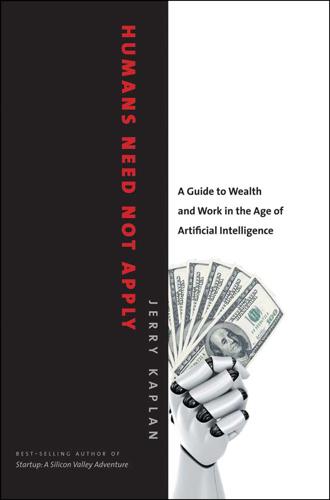
Humans Need Not Apply: A Guide to Wealth and Work in the Age of Artificial Intelligence
by
Jerry Kaplan
Published 3 Aug 2015
“Strawberry Harvesting Robot,” posted by meminsider, YouTube, November 30, 2010, http://youtu.be/uef6ayK8ilY. 6. For an amazingly insightful analysis of the effects of increased communication and decreased energy cost across everything from living cells to civilizations, see Robert Wright, Nonzero (New York: Pantheon 2000). 7. Amazon Web Services (AWS), accessed November 25, 2014, http://aws.amazon.com. 8. W. B. Yeats, “The Second Coming,” 1919, http://en.wikipedia.org/wiki/The_Second_Coming_(poem). 3. ROBOTIC PICKPOCKETS 1. At least, that’s the way I remember it. Dave may have a different recollection, especially in light of the fact that Raiders wasn’t released until 1981. 2.
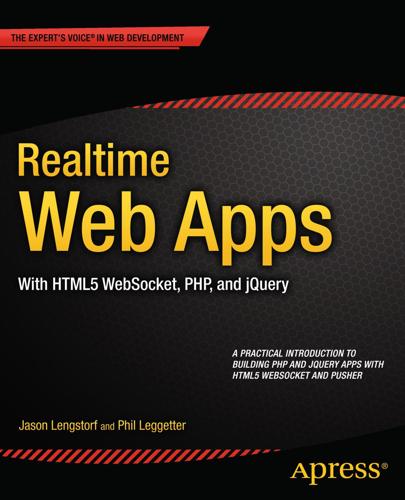
Realtime Web Apps: HTML5 WebSocket, Pusher, and the Web’s Next Big Thing
by
Jason Lengstorf
and
Phil Leggetter
Published 20 Feb 2013
This access was unrestricted, so users simply trusted that these app developers would be responsible and hoping for the best. Obviously, this was not a sustainable model. OAuth emerged as an alternative authentication protocol after the team behind it studied many of the proprietary solutions that existed—services such as Google AuthSub, AOL OpenAuth, and the Amazon Web Services API—and combined the best practices into an open protocol that would be easy for any service to use and any developer to implement. OAuth is currently working on the OAuth 2.0 draft, which has been implemented by several service providers, including Facebook. 1 http://oauth.net/ 259 Appendix a ■ OAuth How OAuth Works Before we talk about what’s happening, let’s look at a real-world OAuth workflow: social photo-sharing site Flickr is part of the Yahoo!

Effective Programming: More Than Writing Code
by
Jeff Atwood
Published 3 Jul 2012
But until you’ve demonstrated a willingness to help the customers using the software you’ve built — and more importantly, learn why they need help — you haven’t truly finished building that software. Working With the Chaos Monkey Late last year, the Netflix Tech Blog wrote about five lessons they learned moving to Amazon Web Services. AWS is, of course, the preeminent provider of so-called “cloud computing,” so this can essentially be read as key advice for any website considering a move to the cloud. And it’s great advice, too. Here’s the one bit that struck me as most essential: We’ve sometimes referred to the Netflix software architecture in AWS as our Rambo Architecture.

Subscribed: Why the Subscription Model Will Be Your Company's Future - and What to Do About It
by
Tien Tzuo
and
Gabe Weisert
Published 4 Jun 2018
Across the board, perpetual license and maintenance revenues are slowing or in decline. There’s no growth left in on-premise software, and a lot of younger SaaS companies founded over the last ten years are starting to see real gains in market share. Hardware is shifting as well—the success of Amazon Web Services has convinced IT buyers to shift from big, expensive capex-based installations to opex-based rental agreements. The big firms are struggling to catch up because they can see where the market is heading. Today’s innovative companies are increasingly pursuing recurring revenue–based business models and are relegating their ERP systems to a commodity general ledger in the process.

Thank You for Being Late: An Optimist's Guide to Thriving in the Age of Accelerations
by
Thomas L. Friedman
Published 22 Nov 2016
Back then, you wanted to build your town or your factory along a rushing river—such as the Amazon—and let it flow through you. That river would give you power, mobility, nourishment, and access to neighbors and their ideas. So it is with these digital flows into and out of the supernova. But the rivers you want to build on now are Amazon Web Services or Microsoft’s Azure—giant connectors that enable you, your business, or your nation to get access to all the computing-power applications in the supernova, where you can tie into every flow in the world in which you want to participate. The world cannot get this connected in so many new realms at such profound new depths without being reshaped.
…
Louis Park Agadez, Niger age of accelerations; dislocation and; education and; human adaptability as challenged by; as inflection point; innovation as response to; leadership and; the Machine and; Moore’s law and; social technologies and agriculture: in Africa and Middle East; climate change and; monocultures vs. polycultures in Airbnb; trust and air-conditioning Aita, Samir algorithms; human oversight and; self-improving Alivio Capital Allen, Paul Allisam, Graham Almaniq, Mati Al Qaeda Al-Shabab AltaVista Amazon (company) Amazon rain forest Amazon Web Services American Civil Liberties Union American Dream American Interest American University of Iraq “America’s New Immigrant Entrepreneurs: Then and Now” (Kauffman Foundation) Amman, Jordan amplifying, as geopolitical policy Andersen, Jeanne Anderson, Chris Anderson, Ross Anderson, Wendell Andreessen, Marc Andrews, Garrett Android AngularJS Annan, Kofi Anthropocene epoch Anthropocene Review anti-Semitism APIs (application programming interfaces) Apple; see also Jobs, Steve Applebaum, Anne Apple Newton Apple Pay apps revolution Arab Awakening Arabic, author’s study of Arab-Muslim world, golden age of Arafat, Yasser architects, software for Armstrong, Neil artificial intelligence (AI); intelligent algorithms and; intelligent assistance and Artnet.com Ashe, Neil Ashraf, Quamrul Assad, Bashar al- Associated Press Astren, Fred AT&T; intelligent assistance and; iPhone gamble of; lifelong learning and; as software company Atkinson, Karen atmosphere: aerosol loading in; CO2 in; ozone layer of ATMs Auguste, Byron Austria Austro-Hungarian Empire Autodesk automation, see computers, computing autonomous systems; see also cars, self-driving Autor, David Avaaz.org Azmar Mountain Bajpai, Aloke Baker, James A., III balance of power Bandar Mahshahr, Iran bandwidth Bangladesh bankruptcy laws bank tellers Barbut, Monique baseball, class-mixing and BASIC Bass, Carl Batman, Turkey BBCNews.com Bee, Samantha Beinhocker, Eric Beirut: civil war in; 1982 Israeli-Palestinian war in Bell, Alexander Graham Bell Labs Bennis, Warren Benyus, Janine Berenberg, Morrie Berenberg, Tess Berkus, Nate Berlin, Isaiah Berlin Wall, fall of Bessen, James Betsiboka River “Better Outcomes Through Radical Inclusion” (Wells) Between Debt and the Devil (Turner) Beykpour, Kayvon Bible Bigbelly garbage cans big data; consumers and; financial services and; software innovation and; supernova and Big Shift Big World, Small Planet (Rockström) “Big Yellow Taxi” (song) Bingham, Marjorie bin Laden, Osama bin Yehia, Abdullah biodiversity: environmental niches and; resilience and biodiversity loss; climate change and biofuels biogeochemical flows biomass fuels biotechnology bioweapons birth control, opposition to Bitcoin black elephants Blase, Bill blockchain technology Bloomberg.com Blumenfeld, Isadore “Kid Cann” Bobby Z (Bobby Rivkin) Bodin, Wes Bohr, Mark Bojia, Ayele Z.

The Filter Bubble: What the Internet Is Hiding From You
by
Eli Pariser
Published 11 May 2011
The enormous pool of computing power and storage these networked machines create is known as the cloud, and it allows clients much greater flexibility. If your business runs in the cloud, you don’t need to buy more hardware when your processing demands expand: You just rent a greater portion of the cloud. Amazon Web Services, one of the major players in the space, hosts thousands of Web sites and Web servers and undoubtedly stores the personal data of millions. On one hand, the cloud gives every kid in his or her basement access to nearly unlimited computing power to quickly scale up a new online service. On the other, as Clive Thompson pointed out to me, the cloud “is actually just a handful of companies.”

Platform Scale: How an Emerging Business Model Helps Startups Build Large Empires With Minimum Investment
by
Sangeet Paul Choudary
Published 14 Sep 2015
Uber offers benefits and vehicle purchase schemes to drivers who want to buy a new car and start participating on Uber. THE RESOURCE BARRIER It is much easier to start a business in 2015 than it was in 1995. One of the most important reasons is the significant reduction in the amount of resources required to get a business up and running. An important contributor to this change is the rise of Amazon Web Services, which lowers the amount of resources required at the outset to start up. A startup that would have needed to procure a minimum level of infrastructure in 1995 may leverage Amazon’s resources on demand in 2015. THE ACCESS BARRIER Platforms often disrupt gatekeepers by giving producers direct access to potential consumers.
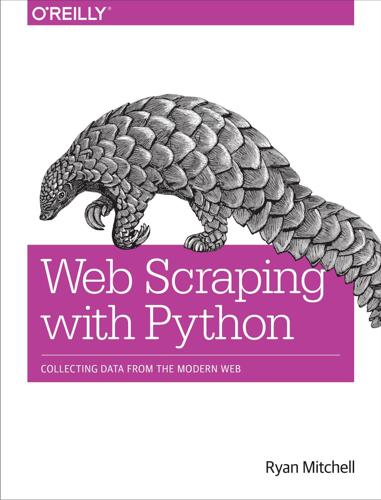
Web Scraping With Python: Collecting Data From the Modern Web
by
Ryan Mitchell
Published 14 Jun 2015
Not only does it cover Google’s user interface, but also the command-line and scripting tools that you can use to give your application greater flexibility. If you prefer to work with Amazon, Mitch Garnaat’s Python and AWS Cookbook is a brief but extremely useful guide that will get you started with Amazon Web Services and show you how to get a scalable application up and running. Moving Forward The Web is constantly changing. The technologies that bring us images, video, text, and other data files are constantly being updated and reinvented. To keep pace, the collection of technologies used to scrape data from the Internet must also change.

Whiplash: How to Survive Our Faster Future
by
Joi Ito
and
Jeff Howe
Published 6 Dec 2016
It’s very hard to see where the company ends and the customer begins in these systems. You see pull at work not only with parts and labor, but with financial capital as well. Kickstarter allows people to raise what they want in a fashion that’s far more agile and responsive than traditional fund-raising methods. Crowdfunding demonstrates that the same logic behind Amazon Web Services—the “distributed computing” division—works for the aggregation of financial capital as well. People often associate crowdfunding with dubious ideas for new products, but Experiment.com shows that the same system can be used to fund serious scientific research.17 Beyond crowdfunding, crowdsourcing also provides independent creators with affordable options for extending their resources.
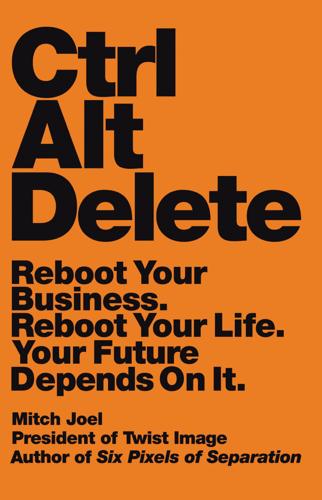
Ctrl Alt Delete: Reboot Your Business. Reboot Your Life. Your Future Depends on It.
by
Mitch Joel
Published 20 May 2013
Google continues to fascinate as the search engine expands into areas like online video (YouTube), mobile (Android and the Nexus line of devices), email services (Gmail), Web browsers (Google Chrome), online social networking (Google+), and beyond (self-driving cars and Google Glasses). Amazon continues to squiggle by pushing beyond selling books online into e-readers (Kindle), selling shoes (Zappos), offering cloud computing technology (Amazon Web Services), and beyond. When you actually start digging down deep into how these companies have evolved and stayed relevant, you won’t see business models that look like anything from the playbooks of Kodak or RIM. These organizations are in a constant state of rebooting with teams of people who are actively guiding their own careers as they squiggle.

Cogs and Monsters: What Economics Is, and What It Should Be
by
Diane Coyle
Published 11 Oct 2021
For example, the price paid for access to cloud-computing facilities has fallen by around 80 percent since 2010 (Coyle and Nguyen 2018). This means that companies that used to invest in servers and other equipment, and hire people to staff large IT departments, no longer need to do so. More and more companies, and pretty much all start-ups, do not make these investments at all now but instead use cloud services such as Amazon Web Services, or Microsoft’s Azure. Executives I have interviewed told me they used to have IT departments with skilled data scientists costing many tens or hundreds of thousands of pounds a year, but now for a few pounds on the company credit card they can simply use services provided by cloud platforms, with the latest software and cutting edge AI.

Mastering Structured Data on the Semantic Web: From HTML5 Microdata to Linked Open Data
by
Leslie Sikos
Published 10 Jul 2015
The default host for RDFizer and the SPARQL endpoint is linkeddata.uriburner.com, which can be modified arbitrarily. The RDFizer is Virtuoso Sponger (http://virtuoso.openlinksw.com/dataspace/doc/dav/wiki/Main/VirtSponger), a component of Virtuoso’s SPARQL Processor and Proxy Web Service. Sponger supports RDFa, GRDDL, Amazon Web Services, eBay Web Services, Freebase Web Services, Facebook Web Services, Yahoo! Finance, XBRL Instance documents, Document Object Identifiers (DOI), RSS and Atom feeds, ID3 tags of MP3 music files, vCard, Microformats, Flickr, and Del.icio.us contents. OpenLink Data Explorer handles RDF, Turtle, and Notation3 MIME data.

How Boards Work: And How They Can Work Better in a Chaotic World
by
Dambisa Moyo
Published 3 May 2021
T., and M. W. Morris. “Negotiating Gender Roles: Gender Differences in Assertive Negotiating Are Mediated by Women’s Fear of Backlash and Attenuated When Negotiating on Behalf of Others.” Journal of Personality and Social Psychology 98, no. 2 (2018): 256–257. http://dx.doi.org/10.1037/a0017094. Amazon Web Services. “Teach Tomorrow’s Cloud Workforce Today.” AWS Educate. https://aws.amazon.com/education/awseducate/. Americans for Carbon Dividends. “The Solution.” www.afcd.org/the-solution/. Anadu, Kenechukwu E., Mathias Kruttli, Patrick McCabe, Emilio Osambela, and Chae Hee Shin. “The Shift from Active to Passive Investing: Potential Risks to Financial Stability?”

API Marketplace Engineering: Design, Build, and Run a Platform for External Developers
by
Rennay Dorasamy
Published 2 Dec 2021
Remember, back in 2002, provisioning additional Cloud capacity was probably a few terse sketches on a whiteboard. The gauntlet had been thrown down and teams had to comply. The Amazon API Manifesto is i) an example of an enterprise-wide paradigm Change regarding APIs and ii) evidence that such a Change can result in significant results if we consider the success of Amazon Web Services today. Speedboats and Aircraft Carriers Although the will to partner and collaborate could be strong, the legacy organization may be reluctant to achieve this. This reluctance may be due to lengthy project timelines or governance related to change and release management. Invariably, it could also be due to functionality deep within the organization which may not be easily exposed to third parties.

Principles of Web API Design: Delivering Value with APIs and Microservices
by
James Higginbotham
Published 20 Dec 2021
The CLI is both an API consumer and an automation tool. They may used for many purposes, including: ■ Automation engineers that need a quick, one-off scripting option ■ Extracting data locally for proof of concepts (POCs) ■ Infrastructure automation and tooling, e.g., Kubernetes, Heroku, Amazon Web Services (AWS), Google Cloud (gcloud) Offering a CLI tool expands the reach of an API beyond full time developers to automation engineers that are better equipped to write shell scripts rather than applications to integrate with APIs. CLI tools may offer human-friendly output, in addition to JSON, CSV, or other output formats that support better automation and tool chaining.

Clojure Programming
by
Chas Emerick
,
Brian Carper
and
Christophe Grand
Published 15 Aug 2011
We’ll take a look at one, Amazon’s Elastic Beanstalk service, that is broadly applicable to Clojure web applications, automating the provisioning and configuration of servers and deployment of applications to those servers. Deploying Clojure Apps to Amazon’s Elastic Beanstalk Amazon’s Elastic Beanstalk (EB) is a platform as a service that provides a thin layer of automation and deployment management tools on top of Amazon Web Services’s (AWS) lower-level EC2 compute and load balancer services. EB allows you to programmatically provision and control environments (collections of one or more application servers fronted by a load balancer), to which you can deploy different versions of your application. The load balancers used by EB are integrated with this provisioning mechanism, so that when your application experiences higher load (based on metrics you define, such as number of requests or aggregate bandwidth utilized per minute), the corresponding EB environment is expanded to contain more app servers to service that load.
…
Clojure on Heroku While Chapter 17 presented a very typical web application deployment approach using a container (such as Tomcat on Amazon’s Elastic Beanstalk), there are ways to run Clojure web apps without a container, and therefore without the packaging work that containers imply. While such containerless deployment options are a relatively new approach in the JVM space, they are becoming more and more common. One of the most popular to date is provided by Heroku (http://heroku.com)—a scalable application deployment platform that is itself hosted on Amazon Web Services—which now directly supports the deployment of Ring-based web applications using Leiningen[450] without requiring any separate compilation or packaging steps. Heroku has the added benefit of offering application “add-ons”—managed database clusters, message queues, web services, and so on—that you can configure and use from within your Clojure project without having to set up and manage such things yourself.

Our Final Invention: Artificial Intelligence and the End of the Human Era
by
James Barrat
Published 30 Sep 2013
cid=RSSfeed_IWK_All (accessed July 11, 2012). a one trillion-dollar industry: Symantec, “What is Cybercrime?” last modified 2012, http://us.norton.com/cybercrime/definition.jsp (accessed July 11, 2012). Cloud computing has been a runaway success: Malik, Om, “How Big is Amazon’s Cloud Computing Business? Find Out,” GIGAOM, August 11, 2010, http://gigaom.com/cloud/amazon-web-services-revenues/ (accessed June 4, 2011). Zeus stole some $70 million: Ragan, Steve, “ZBot data dump discovered with over 74,000 FTP credentials,” The Tech Herald, June 29, 2009, http://www.thetechherald.com/articles/ZBot-data-dump-discovered-with-over-74-000-FTP-credentials/6514/ (accessed June 4, 2011). 21.3 percent overall, comes from Shaoxing: Melanson, Donald, “Symantec names Shaoxing, China, as world’s malware capital,” Engadget, March 29, 2010, http://www.engadget.com/2010/03/29/symantec-names-shaoxing-china-worlds-malware-capital (accessed June 4, 2011).

The End of Big: How the Internet Makes David the New Goliath
by
Nicco Mele
Published 14 Apr 2013
You’re in the virtual cloud of the Internet, and the specific server—be it in Idaho, New York, or Shanghai—doesn’t affect your experience. Indeed, servers have become incredibly commoditized, with large volumes of computing power made available in seconds for pennies. Amazon has developed some notoriety in this area with a product called Amazon web services (AWS). In the process of building a giant infrastructure to sell everything, but especially books, over the Internet, Amazon realized that they could sell excess capacity on their server farms. Need a place to host your Web site? Buy it from Amazon. Suddenly need 10,000 times more space because your tiny start-up has gone viral?
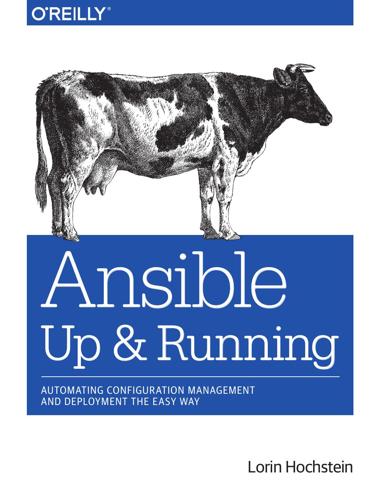
Ansible: Up and Running: Automating Configuration Management and Deployment the Easy Way
by
Lorin Hochstein
Published 8 Dec 2014
When you make requests against EC2 using a client program that supports IAM roles, and an instance is granted permissions by an IAM role, the client will fetch the credentials from the EC2 instance metadata service and use those to make requests against the EC2 service end point. You can create an IAM role through the Amazon Web Services (AWS) management console, or at the command line using the AWS Command Line Interface tool, or AWS CLI. AWS Management Console Here’s how you would use the AWS management console to create an IAM role that has “Power User Access,” meaning that it is permitted to do pretty much anything with AWS except to modify IAM users and groups.

Artificial Unintelligence: How Computers Misunderstand the World
by
Meredith Broussard
Published 19 Apr 2018
We can choose to import all of the functions or just a few. From scikit-learn, we’ll import only two functions. One is named tree and the other is named preprocessing. Next, let’s import the data from a comma-separated values (CSV) file that is also sitting somewhere on the Internet. Specifically, this CSV file is sitting on a server owned by Amazon Web Services (AWS). We can tell because the base URL of the file (the first part after http://) is s3.amazonaws.com. A CSV file is a file of structured data in which each column is separated by a comma. We’re going to import two different Titanic data files from AWS. One is a training data set, another is a test data set.

The Globotics Upheaval: Globalisation, Robotics and the Future of Work
by
Richard Baldwin
Published 10 Jan 2019
Microsoft is using its digital assistant, Cortana, to allow users to speak in any of twenty languages and have the results appear as text in up to sixty different languages. Its email app, Outlook, added an instant translation add-in in 2018. At the end of 2017, Amazon introduced its contender—Amazon Translate—via Amazon Web Services. Unbuilding the Tower of Babel The fact that machine translation is entering everyday life is a big change. As anyone who has traveled or done business internationally knows, language is a huge barrier to just about everything. There is even an Old Testament story that says language-linked divisiveness was divinely inspired.

AIQ: How People and Machines Are Smarter Together
by
Nick Polson
and
James Scott
Published 14 May 2018
Well, the same logic holds for data, the oil of the twenty-first century. Most hobbyists or small companies would face prohibitive costs if they had to buy all the gear and expertise needed to build an AI system from their data. But the cloud-computing resources provided by outfits like Microsoft Azure, IBM, and Amazon Web Services have turned that fixed cost into a variable cost, radically changing the economic calculus for large-scale data storage and analysis. Today, anyone who wants to make use of their “oil” can now do so cheaply, by renting someone else’s infrastructure. When you put those four trends together—faster chips, massive data sets, cloud computing, and above all good ideas—you get a supernova-like explosion in both the demand and capacity for using AI to solve real problems.

The Thinking Machine: Jensen Huang, Nvidia, and the World's Most Coveted Microchip
by
Stephen Witt
Published 8 Apr 2025
Unlike crypto miners, CUDA developers didn’t necessarily purchase their own Nvidia hardware. Many ran their programs, and sometimes their whole companies, on virtual machines they leased through the cloud. For cloud providers, this was an exceptionally lucrative business. The dominant player was Amazon Web Services, which controlled 50 percent of the market and which in good years actually made more money than Amazon’s vast e-commerce operation. Chasing behind Amazon was Microsoft’s cloud service Azure, under the reinvigorated leadership of Microsoft chief executive Satya Nadella. The combined purchasing demand from Amazon, Microsoft, and other cloud providers was enough to double Nvidia’s chip sales to data centers for the year.
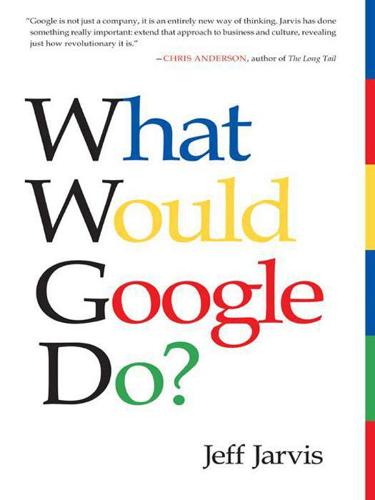
What Would Google Do?
by
Jeff Jarvis
Published 15 Feb 2009
He sells his retail services to other merchants, sending them customers online and taking a cut, in some cases warehousing and shipping their inventory and charging for the services. He also took the computer infrastructure he had to build and offered it to any company as a low-cost, pay-as-you-go service: computing power, storage, databases, and a mechanism for paying programmers. Countless companies now use Amazon Web Services as their backend, foregoing or at least forestalling investments in computers and software. Amazon has also created the infrastructure for an on-demand workforce called Mechanical Turk (named after a phony chess-playing automaton from 1769 that had a human chess master hidden inside). Companies post a repetitive task to be done and anyone can earn money—as little as one cent per task—by verifying the address in a picture, for example, or categorizing content.
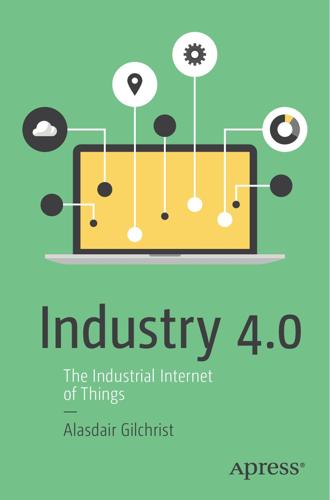
Industry 4.0: The Industrial Internet of Things
by
Alasdair Gilchrist
Published 27 Jun 2016
Knowing a user’s location, activity, and interests will enable location based services (LBS), such as instantaneously providing a coupon for a discount. The Cloud and Fog Cloud computing is similar to many technologies that have been around for decades. It really came to the fore, in the format that we now recognize, in the mid 2000s with the launch of Amazon Web Services (AWS). AWS was followed by RackSpace, Google’s CE, and Microsoft Azure, among several others. Amazon’s vision of the cloud was on hyper-provisioning; in so much as they built massive data centers with hyper-capacity in order to meet their web-scale requirements. Amazon then took the business initiative to rent spare capacity to other businesses, in the form of leasing compute, and storage resources on an as-used basis.

Service Design Patterns: Fundamental Design Solutions for SOAP/WSDL and RESTful Web Services
by
Robert Daigneau
Published 14 Sep 2011
However, many developers have learned that use of a Service Connector typically implies distributed communications, and that one must create exception-handling logic around the connector to handle communication errors. Example: Examples of Popular Service Connectors A number of Software-as-a-Service (SaaS) providers and their developer communities have produced robust Service Connectors. Two notable examples include Amazon Web Services: http://aws.amazon.com/ Twitter: https://dev.twitter.com/docs/twitter-libraries Example: A Typical Client-Service Interaction through a Service Proxy Service Connector The following Java code demonstrates how a client might interact with an RPC API (18). This Service Proxy was generated from the service’s WSDL.
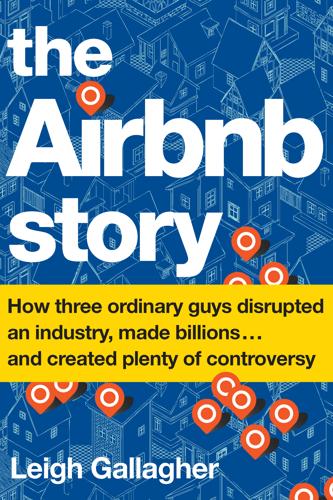
The Airbnb Story: How Three Ordinary Guys Disrupted an Industry, Made Billions...and Created Plenty of Controversy
by
Leigh Gallagher
Published 14 Feb 2017
Instead of having to own and build out expensive, resource-intensive servers, warehouses, and data centers, it could store all of its online infrastructure in the cloud; it could rent features and tools from providers that were also in the cloud; and it could essentially outsource all of its computing power. It migrated all these functions to Amazon Web Services, the subsidiary of the online retail giant that has since grown to dominate the market for third-party cloud computing for businesses. Without having to spend any time or energy figuring out how to maintain and run a complicated infrastructure, the Airbnb engineering team could work only on building a robust site and solving the problems unique to its core business.

Seven Databases in Seven Weeks: A Guide to Modern Databases and the NoSQL Movement
by
Eric Redmond
,
Jim Wilson
and
Jim R. Wilson
Published 7 May 2012
Using cURL allows us to peek at the underlying API without resorting to a particular driver or programming language. Riak is a great choice for datacenters like Amazon that must serve many requests with low latency. If every millisecond spent waiting is a potential customer loss, Riak is hard to beat. It’s easy to manage, easy to set up, and can grow with your needs. If you’ve ever used Amazon Web Services, like SimpleDB or S3, you may notice some similarities in form and function. This is no coincidence. Riak is inspired by Amazon’s Dynamo paper.[9] In this chapter, we’ll investigate how Riak stores and retrieves values and how to tie data together using Links. Then we’ll explore a data-retrieval concept used heavily throughout this book: mapreduce.

@War: The Rise of the Military-Internet Complex
by
Shane Harris
Published 14 Sep 2014
It won’t be impervious to assault—neither are the military’s, as the Buckshot Yankee operation showed. But they will afford a higher level of security than what you have now in the mostly ungoverned expanse of the Internet. Who would build such a community? Perhaps Amazon. In fact, it has already built a version—for the CIA. Amazon Web Services, which hosts other companies’ data and computing operations, has a $600 million contract to build a private system, or cloud, for the spy agency. But unlike other clouds, which are accessed through the public Internet, this one will be run this one using Amazon’s own hardware and network equipment.
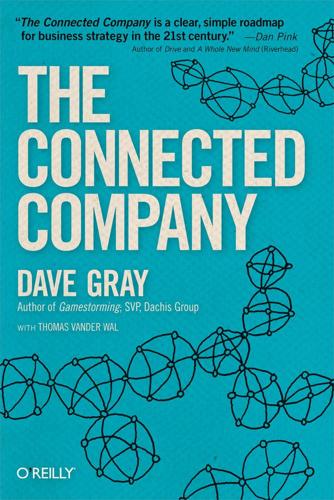
The Connected Company
by
Dave Gray
and
Thomas Vander Wal
Published 2 Dec 2014
It asks, “What do we want to achieve?” Emergent strategy is means-oriented. It asks, “What is possible, with the means we have at our disposal?” You can see emergent strategy at work at Amazon, where small-scale experiments proliferate and the company “scales up” a few large-scale experiments, like Amazon Web Services, Kindle, and Amazon Marketplace. You can see it at work at Google, where every employee is encouraged to spend one day a week pursuing experiments of their own making, and a few of the most successful ones, like Google News and Gmail, attract resources and scale to become significant new sources of revenue.

Peers Inc: How People and Platforms Are Inventing the Collaborative Economy and Reinventing Capitalism
by
Robin Chase
Published 14 May 2015
It turns out that only one independent engineer earning a mere $20,000 a year had been working on the OpenSSL code, and donations financing this key piece of Internet security amounted to only about $2,000 a year. On April 23, Jim Zemlin, the executive director of the Linux Foundation, spent all night calling potential donor companies, and by April 24 he had the funding to announce the creation of the Core Infrastructure Initiative. Thirteen companies—Amazon Web Services, Cisco Systems, Dell, Facebook, Fujitsu, Google, IBM, Intel, Microsoft, NetApp, Rackspace, Qualcomm, and VMware—together committed more than $1 million per year for three years to resolve the funding gap faced by the OpenSSL FOSS team.18 The private sector had stepped in to finance the ongoing improvement of a free and open-source platform.

What Algorithms Want: Imagination in the Age of Computing
by
Ed Finn
Published 10 Mar 2017
Source: Uber, http://mascola.com/insights/ubers-lost-positoning-luxury-car-service/. Figure 4.4: Lyft advertising takes a very different tack from Uber. Source: http://www.adweek.com/news/technology/lyft-hopes-accelerate-first-integrated-ad-campaign-159619. Figure 4.5: Amazon Mechanical Turk Interface for Managing Workers. © 2016, Amazon Web Services, Inc. or its affiliates. All rights reserved. http://docs.aws.amazon.com/AWSMechTurk/latest/RequesterUI/ViewingWorkerDetails.html. Figure 4.6: An engraving of the Turk from Karl Gottlieb von Windisch’s 1784 book Inanimate Reason. Figure 5.1: The Blockchain, a system for transparent, public accounting of Bitcoin transactions.

Late Bloomers: The Power of Patience in a World Obsessed With Early Achievement
by
Rich Karlgaard
Published 15 Apr 2019
Diane Greene, who cofounded and ran software giant VMware, constructed a pot that was family friendly, certainly by the workaholic standards of Silicon Valley. Until January 2019, the CEO of Google Cloud, she encouraged parents at Google to get home and have dinner with their families. Google Cloud’s fierce competitor in the market is Amazon Web Services, run by Andy Jassy, who reports to Amazon founder and CEO Jeff Bezos, one of the most demanding bosses in the world. Amazon is a tough culture, especially for those reporting to Bezos. Certain kinds of people will bloom in Amazon’s pot, but many will not. No one should be surprised by the shape and soil of a company’s pot if they’ve done their research on Glassdoor and other free Web sources.
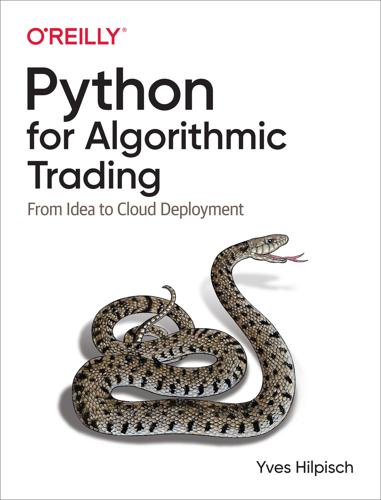
Python for Algorithmic Trading: From Idea to Cloud Deployment
by
Yves Hilpisch
Published 8 Dec 2020
They provide a number of benefits when it comes to Python deployment and development efforts, not only when working locally but also in particular when working with remote cloud instances and servers deploying code for algorithmic trading. Using Cloud Instances This section shows how to set up a full-fledged Python infrastructure on a DigitalOcean cloud instance. There are many other cloud providers out there, among them Amazon Web Services (AWS) as the leading provider. However, DigitalOcean is well known for its simplicity and relatively low rates for smaller cloud instances, which it calls Droplet. The smallest Droplet, which is generally sufficient for exploration and development purposes, only costs 5 USD per month or 0.007 USD per hour.
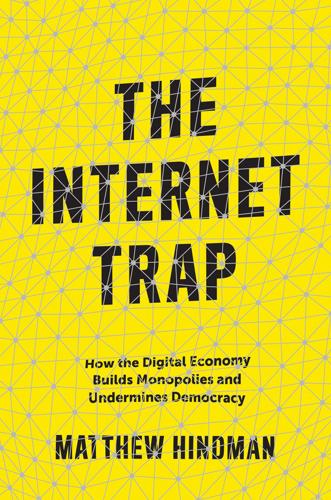
The Internet Trap: How the Digital Economy Builds Monopolies and Undermines Democracy
by
Matthew Hindman
Published 24 Sep 2018
If users cannot be reliably separated into treatment and control groups no experiment can work. Newsroom subscriptions to services like Omniture and Chartbeat are one way to solve the problem of tracking users. Second, newspapers need to be able to serve altered versions of their web pages. Most newspapers currently do not have this ability. Cloud computing platforms such as Amazon Web Services or Google App Engine/Compute Engine are cheap and relatively easy to use—though of course newspapers need to make sure that load times and responsiveness are equal across different servers. Several vendors now provide A/B testing as a service with just a few extra lines of code on the target webpage.

Code Dependent: Living in the Shadow of AI
by
Madhumita Murgia
Published 20 Mar 2024
Many of the women complained that they rarely got to see the products built with the data they supplied. Often, they never heard from the companies again. ‘It’s not just a question of data, it’s also about the dependence of the state on Big Tech actors,’ Aneja said. The reliance on American companies was too high, she felt. ‘Most government [health] systems run on Amazon Web Services. A lot of infrastructure and expertise that shapes how the government thinks about AI is coming from Big Tech. They are filling a gap in state capacity.’ Ashita, too, has a measured outlook. She likes the Qure.ai product and believes it has huge potential, but to improve real-world access the technology has to move from private hospitals like hers into free government-run healthcare centres and mobile vans.

Extremely Hardcore: Inside Elon Musk's Twitter
by
Zoë Schiffer
Published 13 Feb 2024
Sacks, a member of Twitter’s Goon squad, was well on his way to becoming a political powerhouse, leveraging his network and chart-topping podcast to fundraise for Republican candidates. The move might’ve been a win for Musk, but it proved a problem for the Twitter Spaces team, which previously had around a hundred employees and now had just three. Spaces technology relied on servers that Twitter rented from Amazon Web Services (AWS). Unfortunately, these servers were “insanely underprovisioned,” according to an employee who’d worked on them. In the past, the technology had been able to autoscale, adding more capacity as listeners entered the room. But the process was bound to buckle under pressure. JP Doherty encouraged the team to run some tests, but they didn’t have time.
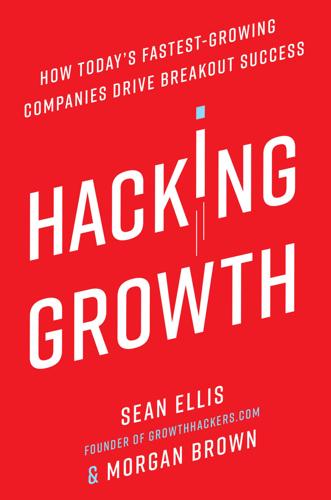
Hacking Growth: How Today's Fastest-Growing Companies Drive Breakout Success
by
Sean Ellis
and
Morgan Brown
Published 24 Apr 2017
A year and a half after launch, the company’s operating expenses totaled $480,674 while the revenue coming in from subscriptions totaled only just over $250,000. And the founders had spent almost all of the $1.8 million in seed capital they had raised on building the product features. The coffers had run dry, and with a bill estimated at $35,000 soon to come in from Amazon Web Services, the founders had no time left to do anything but try to raise more cash—and, when that failed, close up shop. They had considered employing several growth hacks to drive more adoption. For example, they thought about requiring people to whom users sent photos to also sign up for the app in order to download the photos.

Mastering ElasticSearch
by
Rafal Kuc
and
Marek Rogozinski
Published 14 Aug 2013
Optional EC2 discovery configuration options The previously mentioned settings are sufficient to run the EC2 discovery, but in order to control the EC2 discovery plugin's behavior ElasticSearch exposes the following additional settings: cloud.aws.region: This specifies the region for connecting with Amazon web services. You can choose a region adequate to the region where your instance resides. For example eu-west-1 for Ireland. The possible values are: eu-west-1, us-east-1, us-west-1, and ap-southeast-1. cloud.aws.ec2.endpoint: Instead of defining a region, you can enter an address of the AWS endpoint, for example: ec2.eu-west-1.amazonaws.com.

Nervous States: Democracy and the Decline of Reason
by
William Davies
Published 26 Feb 2019
For example, the IT infrastructure used to build e-government projects or “smart cities” comes from the commercial sector, and the companies that provide it often retain control over the data that results. The US government outsources IT services in areas of the greatest importance to national security, with Amazon Web Services hosting classified systems for the CIA for example. Among the things we don’t know is quite how effective platforms are in influencing our behavior, emotions, and preferences. This uncertainty is exacerbated by the marketing bravado of companies such as Cambridge Analytica, who had repeatedly exaggerated their political influence before they were disbanded.

The Launch Pad: Inside Y Combinator, Silicon Valley's Most Exclusive School for Startups
by
Randall Stross
Published 4 Sep 2013
The TechCrunch story rides to the top of Hacker News, which brings in more users. At one point, they see one thousand photos coming in a minute. They are going to quickly burn through the $50,000 in credit that Heroku gives every YC startup.2 (YC’s startups also receive credits from other providers besides Heroku, including Amazon Web Services, Dropbox, Rackspace, Mixpanel, and Microsoft.) Ren says they’re a little worried: “Heroku e-mailed us and said, ‘You guys have a lot of credit from us. You’re probably fine for a few days.’” A few days? Then what? Dwan and Ren expect that the users who come to Snapjoy are going to upload personal collections of five thousand photos each.

Forward: Notes on the Future of Our Democracy
by
Andrew Yang
Published 15 Nov 2021
The country has lost more than four million manufacturing jobs since 2000, devastating hundreds of once-thriving communities in the Midwest and the South. That’s fine; if ten politicians stand in a circle holding hands and chant in unison, “You’ll like to code, heed this refrain, despair not, you shall retrain,” those millions of workers shall all move to Seattle and become Amazon Web Services technicians. You can’t solve the problem, so talking assumes the role of solution. Right before he left office, Justin Amash, a Michigan congressman, said, “I’m seeing all of these campaign ads right now, and everyone’s saying, ‘I’m going to do this, I’m going to do that’…No you’re not.

How to Turn Down a Billion Dollars: The Snapchat Story
by
Billy Gallagher
Published 13 Feb 2018
All these young engineers needed more experienced leadership, so Evan recruited longtime Amazon engineer Tim Sehn to become VP of engineering. Sehn had joined Amazon in 2001 as an intern and quickly rose through the ranks; at one point he was responsible for the performance of Amazon’s main website, and later he moved on to maintaining Amazon Web Services. Sehn’s recruitment was crucial, and his willingness to join Snapchat showed the hiring power Evan and Bobby enjoyed as the hottest new startup in the tech world. Phillippe Browning next joined the team from CBS Mobile to head up monetization at Snapchat; Evan had been redirecting every email he received from marketers to a dead-end mailbox.
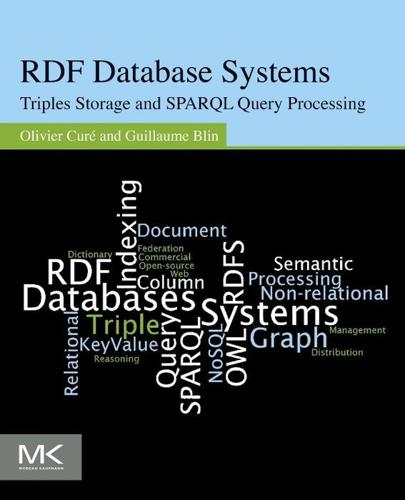
RDF Database Systems: Triples Storage and SPARQL Query Processing
by
Olivier Cure
and
Guillaume Blin
Published 10 Dec 2014
This approach supports direct-range scans on the literals and provides fast importing and querying operations through simple serialization and deserialization of the row IDs. The next two systems are evolving in a cloud infrastructure using the available data stores. They have been implemented in the Amazon Web Service (AWS) cloud but are using different database solutions. Amada is defined by its authors as a Web data repository in the cloud. Its architecture belongs to the software as a service (SaaS) category, which natively provides scalability and elastic resource allocation.The system aims at providing a storage solution for Web data formats of the W3C, namely XML and RDF, and is based on the AWS cloud infrastructure.

Sickening: How Big Pharma Broke American Health Care and How We Can Repair It
by
John Abramson
Published 15 Dec 2022
But a more likely explanation is that all three of the corporations involved in the joint venture had significant financial interests in U.S. health care that were in direct conflict with the goals of Haven. Berkshire Hathaway held investments in several large drug companies as well as in the largest U.S. provider of kidney dialysis. Amazon was getting into the mail-order pharmacy business and expanding services to health-care businesses and hospitals through Amazon Web Services. And JPMorgan Chase offered a broad array of banking services to the health-care industry: “From biotechnology to pharmaceuticals, medical devices to diagnostics — as you make history, we’ll be with you every step of the way.” The failure of Haven shows that effective reform will require a broad coalition comprising: health-care professionals demanding accurate, complete, and epidemiologically balanced information to guide patient care; health-care purchasers — businesses both large and small whose financial success does not depend on profits from health care, as well as government and unions — seeking the most cost-effective care; and health-care consumers seeking the best health possible.

Supremacy: AI, ChatGPT, and the Race That Will Change the World
by
Parmy Olson
But paying rock star salaries was OpenAI’s biggest expense, and not far behind was the cost of computing power. A company like OpenAI couldn’t train its AI models on the same laptops its staff members were working on. To process so many billions of pieces of data for training, and quickly, it needed the powerful chips found only in servers and typically rented from cloud providers like Amazon Web Services, Google Cloud, or Microsoft’s Azure. These were the companies that had endless football fields of computers enclosed in vast warehouses, whose ownership of these “cloud” computers would see them become the biggest financial winners of the AI boom. By early 2024, the market value of Nvidia would start closing in on $2 trillion as demand raced ahead for its GPU chips for training AI models.

Solr 1.4 Enterprise Search Server
by
David Smiley
and
Eric Pugh
Published 15 Nov 2009
If you were doing real world testing, then you might want to record/playback actual search requests. [ 273 ] Download at Boykma.Com This material is copyright and is licensed for the sole use by William Anderson on 26th August 2009 4310 E Conway Dr. NW, , Atlanta, , 30327 Scaling Solr Firing up Solr on Amazon EC2 In order to start using Solr on Amazon EC2, we assume that you have set up an account with Amazon Web Services, available from http://aws.amazon.com/. Firstly, we use the AWS Management Console web app at https://console.aws. amazon.com to create a Security Group for Solr that opens up ports, which the Solr master and slaves will communicate over. Just click on Security Groups and create a new Solr security group with ports 8983 through 8999 open: Then click on AMIs and search for solr-packtpub/solrbook to find the Amazon Machine Instance (AMI) prepared for this book.

The Inevitable: Understanding the 12 Technological Forces That Will Shape Our Future
by
Kevin Kelly
Published 6 Jun 2016
AIs like this one are getting smarter every month, unlike human players. Amid all this activity, a picture of our AI future is coming into view, and it is not the HAL 9000—a discrete machine animated by a charismatic (yet potentially homicidal) humanlike consciousness—or a Singularitan rapture of superintelligence. The AI on the horizon looks more like Amazon Web Services—cheap, reliable, industrial-grade digital smartness running behind everything, and almost invisible except when it blinks off. This common utility will serve you as much IQ as you want but no more than you need. You’ll simply plug into the grid and get AI as if it was electricity. It will enliven inert objects, much as electricity did more than a century past.

Augmented: Life in the Smart Lane
by
Brett King
Published 5 May 2016
So just how big is the cloud? Unfortunately, cloud providers don’t disclose too many details about their operations. However, we know that Amazon is the biggest since it recently reported US$7 billion in annual revenue for 2014. First, let’s look at the scale of Amazon’s cloud operations. It’s truly mind-blowing. • Amazon Web Services (AWS) is carved up into 11 regions globally where it has datacentres. • Each region has at least two availability zones (AZs), for a total of 28 availability zones. • Most AZs have multiple datacentres. Amazon hasn’t revealed how many datacentres it actually has but a recent EnterpriseTech article estimates that there are around 87 AWS datacentres

The Deep Learning Revolution (The MIT Press)
by
Terrence J. Sejnowski
Published 27 Sep 2018
Although the major high-tech companies have pioneered deep learning applications, machine learning tools are already widely available and many other companies are beginning to benefit. Alexa, a wildly popular digital assistant operating in tandem with the Amazon Echo smart speaker, responds to natural language requests based on deep learning. Amazon Web Services (AWS) has introduced toolboxes called “Lex,” “Poly” and “Comprehend” that make it easy to develop the same natural language interfaces based on automated test-to-speech, speech recognition and natural language understanding, respectively. Applications with conversational interactions are now within the reach of smaller businesses that can’t afford to hire machine learning experts.

Talk to Me: How Voice Computing Will Transform the Way We Live, Work, and Think
by
James Vlahos
Published 1 Mar 2019
Twelve minutes. Santa Claus and his unintended role in climate change. Thirteen minutes. George asks the bot to sing. It complies. Fifteen minutes. Music and movies again, health care and Bill Gates. The timer hits nineteen minutes, and the conversation is still going. On November 28, as part of Amazon Web Services’ annual conference, hundreds of people file into a large banquet room at the Aria Resort and Casino in Las Vegas. The front row of seats is reserved for the Alexa Prize finalists. “It’s anyone’s game,” Heriot-Watt’s Lemon predicts. Marek toggles between optimism and doubt. Fang and his UW teammates are the most visibly stressed-out.
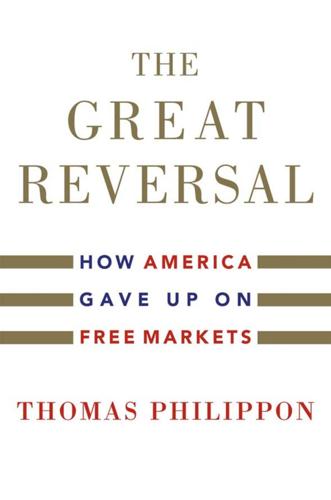
The Great Reversal: How America Gave Up on Free Markets
by
Thomas Philippon
Published 29 Oct 2019
It has about 9 million users, 16 million questions, and 25 million answers per year. GitHub is at the heart of open-source software development. It is a code repository with around 25 million users and 50 million repositories. Microsoft announced in June 2018 that it would buy GitHub for $7.5 billion. The move was expected to help Microsoft compete against Amazon Web Services. c Omarova is quoted in Rana Foroohar, “Banks jump on to the fintech bandwagon,” Financial Times, September 16, 2018. d The GDPR requires companies to notify regulators of breaches within seventy-two hours. In the US there is no federal breach notification law. Instead, companies navigate a patchwork of state laws.

Reset
by
Ronald J. Deibert
Published 14 Aug 2020
For example, in 2019 Mesa, Arizona, made a deal with Google to permit construction of a massive server farm that would guarantee up to four million gallons for cooling purposes.361 While Google has made significant public strides to “green” its server farms and other processes, the company considers its water use a proprietary trade secret and typically forbids public officials from disclosing its water consumption.362 Greenpeace has closely studied the environmental consequences of cloud computing, and in 2017 they published an extensive ranking of social media platforms on the basis of their environmental sustainability efforts.363 Many companies, including Google (notwithstanding its water consumption), Facebook, and Microsoft have made significant improvements in recent years, either offsetting or directly powering their operations with 100 percent clean energy, and investing in server farms in areas like Iceland, where there is plentiful access to cool water and low temperatures. However, many technology companies are doing very poorly, and they seem reluctant to take measures to reduce their energy consumption and other environmentally impacting practices, or to become more transparent in that regard. Among the worst is Amazon, whose cloud-based business, Amazon Web Services (AWS), makes up a sizable and growing proportion of its revenue.364 (AWS alone brings in more revenue than McDonald’s.365) Amazon also runs one of the largest warehouse, transportation, distribution, and logistical operations in the world, including dozens of its own cargo aircraft.366 Worldwide, Amazon owns 850 facilities in twenty-two countries, occupying 220 million square feet, making it the embodiment of globalization in a single corporation.367 However, it is also almost completely non-transparent about its energy footprint.368 Among cloud providers, only AWS refuses to disclose full details on its energy and environmental impacts.

Woke, Inc: Inside Corporate America's Social Justice Scam
by
Vivek Ramaswamy
Published 16 Aug 2021
Instead, Parler set out to value, of all things, free speech and open dialogue. Parler was… earnest. Ultimately it paid a hefty price for its naivete. Following the Capitol riot, Parler was blocked from being downloaded from Google’s Play Store, was suspended from Apple’s App Store, and lost access to Amazon Web Services—all based on hackneyed allegations similar to those levied against President Trump. Big Tech may permanently put Parler out of business. As it turns out, the free market is no match for the monopoly of ideas. This isn’t about silencing conservatives. That’s just how they get you on board with the idea of censorship.

You've Been Played: How Corporations, Governments, and Schools Use Games to Control Us All
by
Adrian Hon
Published 14 Sep 2022
Unlike other task-specific platforms, Mechanical Turk is generalised; crowdworkers can perform online tasks of any kind, from classifying objects in satellite images to finding phone numbers for restaurants. During the early months of COVID-19, Wired reported the number of crowdworkers surged due to furloughs and redundancies, depressing the already-low pay rates.85 Mechanical Turk is completely integrated into the company’s crown jewel, Amazon Web Services (AWS), the cloud platform that runs a substantial fraction of the entire internet and spins off billions of dollars in profit every year.86 And like everything else integrated into AWS, Mechanical Turk is controlled through APIs, or application programming interfaces. On the internet, APIs allow apps and websites to easily talk to each other, like a fitness app requesting weather data from a forecaster, or a shop’s website asking a mapping service to give customers directions to its nearest branch.

The Measure of Progress: Counting What Really Matters
by
Diane Coyle
Published 15 Apr 2025
I n de x Note: Numbers in italics denote tables. accounting frameworks: based on time use, 7–8, 143, 256–58; failures of, 32–33; KLEMS, 11, 43–46, 55; for new goods and quality change, 188–90. See also individual frameworks advance market commitments, 142 advertising, digital, 127–28 Airbnb, 93, 149, 151 algorithms: data bias and, 29–30; fairness issues regarding, 30–31 Always On (Cellan-Jones), 103 Amazon, 87, 95, 166, 166, 168, 171, 175 Amazon Web Services (AWS), 88–89, 91, 92, 167, 170, 196 Apple, 73, 85, 87, 112, 157, 171 Apple iPhone, 102, 102–3, 155 as-a-service model, 248. See also subscription economy Assetization (Birch & Muniesa), 220 assets: classifying, 212–15; comprehensive wealth framework and types of, 7, 248–49; defining, 7, 215; in social infrastructure, 61 As Time Goes By (Freeman & Louca), 258 attention economy, 122–23 Attention Economy, The (Davenport & Beck), 122 “attention rents,” 134 barter, imputation for, 131–33 Baumol cost disease, 64 Beyond GDP movement, 16, 179, 233, 238, 240–41, 244–45, 263 Big Tech: dominance of, 171–72; labour sources, 163–64; personal data collected by, 145–46; using revenues to estimate digitally delivered services, advertising, and platform fees, 169 biodiversity, decline in, 206–7 bonding and bridging, social capital and, 232 budget constraint applied to digital services, 139 bundling solutions/services, 72–73, 74, 88, 116 Cantril’s ladder of life, 234, 241 capabilities, comprehensive wealth framework and, 243, 250–51 capital: domestic, 119–20; household, 113–16; public, 60–65; substituted for labour, 100–1.
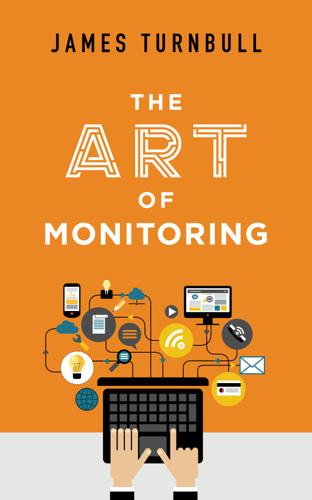
The Art of Monitoring
by
James Turnbull
Published 1 Dec 2014
This host was long lived and hence easy to monitor: there was a single set of metrics that was tracked over time. This was the typical host architecture of about 15–20 years ago. The middle column shows the change to hosts introduced by virtualization, largely VMWare-driven, and the Cloud, largely the result of Amazon Web Services. Here two or more virtualized or cloud instances were running on top of a single hardware host. Correspondingly, operational and monitoring complexity increased as the number of hosts increased and the volume of metrics created was multiplied. Additionally, the lifespan of those instances tended to be shorter than those of single physical hosts.

The Upstarts: How Uber, Airbnb, and the Killer Companies of the New Silicon Valley Are Changing the World
by
Brad Stone
Published 30 Jan 2017
He had coded the entire site himself, using what was then a new open-source programming language called Ruby on Rails. He devised a flexible, global payment system that allowed Airbnb to collect fees from guests and then remit them to hosts, minus the company’s commission, using a variety of online services such as PayPal. He had also presciently hosted the site on the nascent Amazon Web Services, a division of the e-commerce giant that allowed companies to rent remote Amazon servers via the internet only when they needed them, a huge cost savings and efficiency advantage that would power an entire wave of new businesses. “Joe and I would have crazy dreams and visions,” says Chesky of his co-founder.
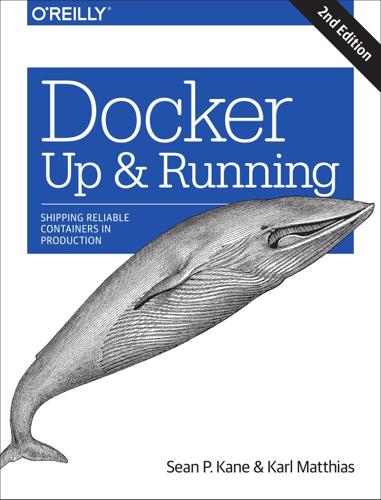
Docker: Up & Running: Shipping Reliable Containers in Production
by
Sean P. Kane
and
Karl Matthias
Published 15 Mar 2018
The Final Word | 315 Index A add-apt-repository, 33 admin processes, 308 Alpine Linux testing Docker setup, 45 using to build custom base images, 60 Amazon EC2, 221 AmazonEC2ContainerServiceforEC2Role, 222 EC2 launch type, 225 Amazon ECS, 221-234 Amazon Fargate, 222 AWS CLI setup, 223 container instances, 224 core AWS setup, 222 IAM role setup, 222 tasks, 225-234 Apache Mesos, 196, 306 API (Docker), 16 apk add, 75 update, 75 AppArmor, 275 apt-get, 207 install, 33 remove, 33 update, 33 atomic hosts, 7, 28 AuFS, 286 authentication, 277 auxiliary addresses, 284 aws configure, 224 ec2 ecs describe-security-groups, 228 describe-subnets, 228 create-cluster, 225 create-service, 228 describe-services, 229, 233 describe-tasks, 231, 234 list-services, 229 list-task-definitions, 227 list-tasks, 230, 233, 234 register-task-definition, 227, 230 stop-task, 233 update-service, 230 iam create-service-linked-role, 229 list-users, 224 AWS (Amazon Web Services) CLI (command-line interface) tools setup, 223 configuration, 224 installation, 223 core setup for ECS and Fargate, 222 IAM role setup, 222 B backing filesystems, 288 backing services, 304 bash shell, 121, 262, 265 starting in container with /etc bindmounted to namespace, 266 Berkeley Packet Filter (bpf) rules, 271 brew cask install, 235 317 install, 223, 236 update, 223 bridge mode, 17 bridge network, 160 Btrfs, 286 building with Docker, 25 C caching, optimizing for the layer cache in image builds, 79-83 cAdvisor, 142-146 cc-proxy, 294 cc-runtime, 293 cc-env, 294 list, 293 cc-shim, 294 Centurion, 206-211 centurionize, 208 cgroups, 256, 296 /sys filesystem, 257 constraints, 95 chat robot hubot, 302 Chocolatey for Windows, 32 installing Docker CLI tools with, 35 Clear Containers runtime, 292 (see also cc-runtime) client/server model (Docker), 14 cloud platforms, 5 Docker support, 12 cloud providers plug-ins for Docker, 29 registries, 61 support for Docker ecosystem, 205 cloud-init tool, 41 codebase, 300 including administrative/maintenance func‐ tions in, 308 keeping configuration information out of, 303 compare-object (PowerShell), 274 Compose configuration language, 172 concurency, 306 configuration management, 6 avoiding with Docker, 21 configuring containerized applications, 193 language-dependent configuration files, 301 networking, 278-284 storing configuration in environment vari‐ ables, 302 318 | Index container platform design (see platform design) containerd, 14, 155, 288 functions of, 289 managing more than one runtime, 293 containers, 85-113, 255-264 and pods in Kubernetes, 241 auto-restarting, 104 cgroups, 256 /sys filesystem, 257 cleaning up containers and images, 108-110 cloud providers' support for, 205 container user, 154 creating, 87-103 container name, 88 DNS, 91 hostname, 89 labels, 89 MAC address, 92 resource quotas, 95-103 storage volumes, 92 creating container instances for AWS ECS cluster, 224 debugging (see debugging containers) defined, 85 Docker container networking, 17 getting inside a running container, 123-128 using docker exec, 123 using docker volume, 127 using nsenter, 124-127 health checks, 138-141 history of, 86 inspecting, 119-120 killing, 106 lightweight nature of, 21 limited isolation, 20 monitoring (see monitoring Docker) namespaces, 260-264 exploring, 262 passing configuration in environment vari‐ ables, 302 pausing and unpausing, 107 performance impacts of storage backends, 287 privileged, 268-271 starting, 103 stats on, 134-138 taking to production, 189-204 Docker and the DevOps pipeline, 200-203 Docker's role in production environ‐ ments, 190-199 steps in process, 190 versus virtual machines, 19 Windows, 110-112 content-addressable tags, 119 control groups (see cgroups) CPUs cAdvisor CPU graphs, 143 CPU pinning of containers, 97 CPU shares for containers, 95 simplifying CPU quotas for containers, 98 credentials managers, 64 curl, 136-138, 243 D daemon, 46-48, 276 databases in Docker, 19 Debian systems, 32 debugging containers, 151-166 filesystem inspection, 165 image history, 163 inspecting a container, 163-165 network inspection, 160-163 process inspection, 156 process output, 152-156 dependencies, 300 external, 203 treating as attached resources, 309 deployment concerns addressed by Docker, 311 creating in Kubernetes, 242 deploying a realistic stack in Kubernetes, 244 Deployment definition in Kubernetes, 247 Docker deployment workflow, 11 Docker minimization of deployment arti‐ facts, 313 mass deployment tools, 28 rolling deployment using Centurion, 210 tools for, 206 with Docker, 27 with zero downtime, 195 workflow without Docker, 9 deployment frameworks, 6 development environments, 6 development/production parity, 307 Device Mapper, 286 DevOps Docker addressing similar problems, 312 Docker and DevOps pipeline, 200-203 diff, 274 disposability, 306 dmesg, 100 dnf clean, 78 config-manager, 34 install, 34, 78 DNS (Domain Name Service), 91 Docker architecture, 14-18 API, 16 client/server model, 14 command-line tool, 16 container networking, 17 network ports and Unix sockets, 15 robust tooling, 15 benefits of, 3, 314 broad support and adoption of, 12 challenges addressed by, 311 getting the most from, 18-23 containers vs. virtual machines, 19 externalizing state, 22 lightweight containers, 21 limited container isolation, 20 moving toward immutable infrastruc‐ ture, 21 stateless applications, 22 printing the version, 115 process simplification with, 9 structure of, 288-292 terminology, 7 tools used with, 5 workflow, 23-29, 312 building applications, 25 deployment, 27 Docker ecosystem, 27-29 packaging, 27 revision control, 24 testing, 26 docker, 15, 16 build, 56, 140 container ls, 71 update, 95, 259 create, 87 --cgroup-parent, 260 diff, 165 Index | 319 dockerd, 288 events, 141, 259 exec, 123, 157, 262 export, 71 history, 77, 163, 175 image inspect, 72 ls, 65 images, 108 import, 150 info, 43, 95, 117, 126, 287, 293 inspect, 51, 89, 120, 140, 164, 303 kill, 106, 124, 157 login, 63, 64, 68 logout, 64 logs, 129-130, 165, 307 network create, 215 inspect, 160, 282 ls, 160, 282 node inspect, 220 ls, 214, 219 update, 219, 220, 221 pause, 105, 107 ps, 59, 89, 104, 105, 119, 126, 140, 152, 164, 239, 293 pull, 66, 118 push, 65, 203 rm, 68, 88, 109, 263 rmi, 109 run, 45, 60, 87, 122, 128, 140, 143, 148, 192 --cap-add, 270 --cap-drop, 270 --cgroup-parent, 259 --init, 159 --net=host, 18, 281 --privileged=true, 268 --runtime, 293 --uts=host, 261 -e, 202, 302 -p, 305 -v, 266 save, 150 secret, 303 service create, 215 inspect, 216 ls, 216 320 | Index ps, 216, 218, 220, 221 rm, 221 rollback, 218 scale, 217, 306 update, 217, 218 start, 88, 104, 142, 192 stats, 134, 257, 292 stop, 60, 106, 142, 192 swarm init, 212 join, 213, 214 system prune, 109 tag, 65, 77, 203 top, 152 unpause, 105, 108 update, 99 version, 116 volume create, 127 ls, 127 rm, 128 Docker client, 7 installing, 32-35 on Linux, 32 on macOS and Mac OS X, 34 on Windows 10 Professional, 35 version information, 116 Docker Community Edition, 32, 33, 212 Docker server setup, 35 Docker Compose, 15, 167-188, 203 configuring, 168-175 exploring further features, 185-188 exploring RocketChat service (example), 177-185 launching services, 175-177 Docker containers, 7 (see also containers) Docker daemon (see Docker server; dockerd) Docker Distribution, 62, 66 Docker Enterprise Edition, 33 Docker Hub, 50 creating an account, 63 logging into a registry, 63 Docker images, 7 (see also images) Docker Machine, 15, 36 downloading and installing the executable, 37 Docker server, 7 exploring, 46-48 information about, 117 installing, 35-45 non-Linux VM-based server, 36-45 on systemd-based Linux, 36 version information, 116 Docker Swarm (deprecated), 15, 198, 211 Docker Swarm mode, 15, 198, 211-221, 306 docker-compose, 160 build, 176 config, 175 down, 187 exec, 186 logs, 176, 187 pause, 187 restart, 183 start, 187 stop, 187 top, 186 unpause, 187 up, 176 docker-compose.yaml file (example), 171 docker-containerd-shim, 155, 263, 294 functions of, 289 docker-enter, 127 docker-init, 14 docker-machine, 32 config, 39 create, 37 env, 38 ip, 39, 59 ls, 39 regenerate-certs, 37 rm, 40 ssh, 39 start, 38, 40 stop, 40 docker-proxy, 14, 155, 162, 278 docker-runc events, 292 list, 291 dockerd, 7, 15, 131, 146, 263, 276, 288 --add-runtime, 294 functions of, 289 Dockerfile, 50-53, 193 ADD, 50, 52 changing order of commands, 82 CMD, 53, 133, 159 COPY, 139 defining dependencies, 301 ENTRYPOINT, 202 ENV, 51 FROM, 50, 139 health check definitions in, 139 HEALTHCHECK, 139 LABEL, 50, 51 MAINTAINER, 51 RUN, 50, 51 USER, 50, 51 WORKDIR, 50, 52 dynamic volume provisioning, 247 E EC2, 221 AmazonEC2ContainerServiceforEC2Role, 222 EC2 launch type, 225 ecosystem (Docker), 27-29 additional tools, 29 atomic hosts, 28 changes and deprecated features, 32 orchestration, 28 ECS (Elastic Container Service), 222 (see also Amazon ECS) Enterprise Edition (see Docker Enterprise Edi‐ tion) enterprise virtualization platforms, 5 environment variables, 193 configuration passed in, 22 defining in Docker Compose, 174 DOCKER_CERT_PATH, 38, 43 DOCKER_HOST, 38, 43, 59, 136 DOCKER_MACHINE_NAME, 38 DOCKER_TLS_VERIFY, 38, 43 for Centurion, 210 KUBE_VERSION, 237 passing to an application, 59 passing to docker run, 202 storing configuration in, 302 expose (port) setting (Docker Compose), 175 F Fargate, 221 (see also Amazon ECS) Fedora Linux installing Docker client on, 33 testing Docker setup, 45 Index | 321 filesystem inspection, 165 filesystem layers, 24 G git clone, 41, 66 Go, Docker SDK for, 17 gVisor, 295-298 H health checks for containers, 138-141 Heroku, 10, 300 HipChat adapter, 302 Homebrew, 32, 207 installing AWS CLI, 223 installing Docker CLI tools with, 34 installing Minikube, 235 horizontal scaling, 306 host network mode, 160, 280 hostname, 89 hosts atomic hosts, 7, 28 configuring for Centurion, 209 htop, 96 HUP signals, 107 Hyper-V, 237 hyperkube, 253 hypervisors, 85 for Docker Machine, 37 I I/O, block I/O for containers, 101 IAM (Identity and Access Management) roles, AWS, 222 ifconfig, 279 ignition tool, 41 image registries (see registries) image tags, 24 editing, 65 in testing, 202 setting in Docker Compose, 173 images, 49-83 base images larger than needed, 301 building, 53-56 building techniques, advanced, 70-83 additive layers, 77-79 keeping images small, 70-76 optimizing for the cache, 79-83 cleaning up, 108-110 322 | Index custom base images, 60 Dockerfiles, 50-53 downloading updates, 118-119 history of, 163 optimizing storage and retrieval of, 313 storing, 61-70 troubleshooting broken builds, 56-58 immutable infrastructure, 21 init process, 158 init system, 121 installation, 31-48 Docker client, 32-35 on Linux, 32 on macOS and Mac OS X, 34 on Windows 10 Professional, 35 Docker server, 35-45 testing the setup, 45-45 ip addr show, 279, 297 IPC namespaces, 261 J job control, 192 journald, 132 json-file logging plug-in, 129 K Kata Containers runtime, 293 kernel capabilities given to container, 268 kill command, 157 kubectl, 241 create, 249 delete, 244 expose deployment, 243 get, 242, 243, 248 installing on Linux, 237 installing on Windows, 237 logs, 251 on macOS, 236 proxy, 252 run, 242 scale, 251 Kubernetes, 196, 234-254, 306 containers and pods, 241-242 dashboard, 240 deploying a pod, 242 deploying a realistic stack, 244 deploying the application, 248 Deployment definition, 247 kubectl API, 252 PersistentVolumeClaim definition, 246 running, 238-240 scaling up, 250 service definition, 245 L labels, 89 latest tag, 25, 118 Linux building images on various distributions, 61 containers, 87 Docker server on systemd-based Linux, 36 Docker support, 13 installing Docker client on, 32 installing Minikube, 237 Linux containers, building and launching, 31 out-of-memory (OOM) killer, 100 logging, 128-134, 165, 194 configurable logging backends, 131 journald, 132 logs for Kubernetes application, 251 logs for services in Docker Compose, 176 non-plug-in community options, 133 sending container logs to syslog, 131-132 sending logs to logging system, 307 stdout/stderr, 129 streaming logs to STDOUT/STDERR, 307 Logspout, 134 lsof, 156 M MAC (media access control) address, 92, 283 attempting to change for a container, 268 macOS installing AWS CLI, 223 installing Docker client on, 34 installing Docker on, 32 installing Minikube, 235 macvlan driver, 283 Mandatory Access Control, 276 memory, controlling acces for containers, 99 Mesos (see Apache Mesos) message-driven systems, 309 Minikube, 234-238 about, 235 commands, 239 installing, 235-238 minikube dashboard, 240, 251 ip, 240 service, 243, 250 ssh, 238 start, 238 status, 239 stop, 240 monitoring, 194 (see also monitoring Docker) monitoring Docker, 134-146 container stats, 134-138 Prometheus monitoring, 146-149 using cAdvisor, 142-146 using docker events, 141 mount command, 90, 281, 296 mount namespaces, 260 N namespaces, 256, 260-264, 296 exploring, 262 Interprocess Communication (ipc), 261 Mount (mnt), 260 Network (net), 261 Process ID (pid), 261 Unix Time Sharing (uts), 261 User ID (user), 261 netstat, 161 -an, 281 network namespaces, 261 network ports, Docker on, 15 networking, 193 configuration, advanced, 278-284 configuring networks, 282 host networking, 280 creating default network for services in Docker Swarm, 215 Docker containers, 17 network inspection for containers, 160-163 networks for a Docker Compose container, 173 networks section in docker-compose.yaml, 172 nsenter, 47, 124-127, 260, 264 O OCI (see Open Container Initiative) Open Container Initiative (OCI), 13, 290 operating system virtualization, 85 Index | 323 operating systems Docker installation directions for, 35 support and adoption of Docker, 12 support by Docker client, 32 Oracle's Railcar, 292 orchestration, 196 orchestration toolset, 15, 28 OS package manager, 32 out-of-memory (OOM) killer (Linux), 100 overlay driver, 283 Overlay filesystem, 285 P package managers, 78, 207 packaging, 27 packaging and delivery, 194 PersistentVolume, 245 PersistentVolumeClaim, 245, 248 definition, 246 PID namespaces, 261, 263 platform design, 299-310 Reactive Manifesto, 308-310 elasticity, 309 message-driven systems, 309 resilience, 309 responsiveness, 309 Twelve-Factor App, 300-308 admin processes, 308 backing services, 304 build, release, run, 304 codebase, 300 concurrency, 306 configuration, 302 dependencies, 300 development/production parity, 307 disposable, 306 logs, 307 port binding, 305 processes, 305 plug-ins, 29 pods (Kubernetes), 241, 249 deployment, 242 ports port binding, 305 setting for Centurion, 210 printing Docker version, 115 privileged containers, 268-271 /proc filesystem, 261, 265, 297 processes 324 | Index controlling, 157-159 getting for a new container, 263 inspecting running processes, 156 process output, 152-156 process-tracing capabilities for containers, 271 stateless, 305 production environments, Docker's role in, 190-199 configuration, 193 job control, 192 logging, 194 monitoring, 194 networking, 193 packaging and delivery, 194 scheduling, 195 distributed schedulers, 195 orchestration, 196 service discovery, 197-199 wrap-up, 199 production, getting an application to, 189 production/development parity, 307 Prometheus monitoring system, 146-149 ps, 154 pstree, 155 ptrace (system call), 273 Python Amazon CLI tools, installing with pip, 223 Docker SDK for, 17 Q Quay.io, 61 R Reactive Manifesto, 308-310 Red Hat, 32 CentOS, 40 CoreOS, 13, 40 Fedora, 33 Project Atomic, 29, 40 RHEL (Red Hat Enterprise Linux), 33 registries, 61-70, 194, 304 authenticating to, 62-64 creating a Docker Hub account, 63 logging into Docker Hub, 63 private, 62 public, 61 pushing images into, 64 running a private registry, 66-70 testing the registry, 68 ReplicaSet, 249 resilience, 309 resource limits, 193 defining for tasks in AWS ECS, 226 resource quotas for containers, 95-103 block I/O, 101 CPU pinning, 97 CPU shares, 95 memory, 99 simplifying CPU quotas, 98 ulimits, 102 returning a result, 121-123 revision control, 24 filesystem layers, 24 image tags, 24 root, 261 daemon running as, 277 UID 0 and, 265-268 Ruby Centurion requirement for, 207 Docker library, 17 runc, 14, 118, 291, 293, 296 functions of, 289 substituting other runtimes for, 292 runtimes, swapping, 292-298 Clear Containers/Kata Containers, 292 gVisor, 295 S scale, running Docker at, 205-254 Amazon ECS and Fargate, 221-234 Centurion, 206-211 Kubernetes, 234-254 scaling, horizontal, 306 schedulers automatic, 28 tools for, 206 scheduling, 195 distributed schedulers, 195 orchestration, 196 SDKs, Docker (software development kits), 17 seccomp (see security, Secure Computing Mode) seccomp profiles, 272 seccomp-bpf, 271 secrets, managing, 303 security, 264-277 and limited container isolation, 20 Docker daemon (dockerd), 276 improvements for containers, 262 privileged containers, 268-271 Secure Computing Mode, 271-275 SELinux and AppArmor, 275 UID 0, 265-268 SELinux, 275 and volume mounts, 93 service discovery, 197-199 services configuring in Docker Compose, 173-175 designed to be ephemeral, 306 launching in Docker Compose, 175-177 treating backing services as attached resour‐ ces, 304 shell, exploring, 121 SIGKILL signals, 106 signals, Unix (see Unix signals) SIGSTOP signals, 107 SIGTERM signals, 106, 306 SIGUSR1 signals, 158 SSL certificates, 277 Standard Error (see logging) Standard Out (see logging) startup and shutdown, fast and graceful, 306 state, externalizing, 22 stateless applications, 22, 305 stdout/stderr, 133 storage, 284-288 Docker optimation of, 313 storage backends, 49, 287 storage volumes, 92 (see also volumes) strace, 156, 271 stress command, 96, 98, 100 structure of Docker, 288-292 supervisord, 53 swap (memory), 99 swapon, 270 Swarm (see Docker Swarm; Docker Swarm mode) /sys filesystem, 257, 265 syslog, logging to, 131-132 systemctl, 257 enable, 36 start, 36 systemd init system, 132, 257, 307 Index | 325 T tar command, 71 tasks, 225-234 creating a task definition, 225-228 stopping, 233 testing, 232 tcpdump, 270 testing, 26 workflow for testing Dockerized applica‐ tion, 200 time command, 80 tini project, 159 TLS (Transport Layer Security), 277 tooling, Docker's robust tooling, 15 top command, 96 Twelve-Factor App, 300-308 U Ubuntu Linux installing Docker client on, 32 testing Docker setup, 45 UID 0, 265-268 ulimit, 102 Unix signals, 158 SIGKILL, 106 SIGSTOP, 107 SIGTERM, 106, 306 SIGUSR1, 158 Unix sockets, 15 upstart, 307 user namespaces, 261 UTS (Unix Time Sharing) namespaces, 261 V Vagrant, 6, 32, 40 326 | Index installing, 40 vagrant halt, 44 ssh, 44 up, 42 VFS (Virtual File System), 287 virtual machines vs. containers, 19 VirtualBox, 37 virtualization platforms, 5 volumes, 92 docker volume commands, 127 dynamic volume provisioning in Kuber‐ netes, 247 volumes option in Docker Compose, 173 W wc, 123 whoami, 267 Windows bringing up Docker Compose services, 176 containers, 110-112 Docker support, 12 docker-compose down command, 187 docker-compose.yaml file, 175 installing AWS CLI, 223 installing Docker client on Windows 10 Professional, 35 installing Docker on, 32 installing Minikube, 237 workload management tools, 6 Z ZFS, 287 About the Authors Sean Kane is currently Lead Site Reliability Engineer at New Relic.

Think Like a Rocket Scientist: Simple Strategies You Can Use to Make Giant Leaps in Work and Life
by
Ozan Varol
Published 13 Apr 2020
The other group was taught to use function-free descriptions of objects—for example, instead of saying “a prong of an electrical plug,” they were taught to describe the prong as “a thin, rectangular piece of metal.” The group that received training solved 67 percent more problems than did the other participants. The switch from function to form is also helpful in reframing the resources at your disposal. Consider, for example, the development of Amazon Web Services (AWS).41 As Amazon grew from an online bookstore to an “everything” store, it built up an immense electronic infrastructure, including storage and databases. The company realized that its infrastructure wasn’t simply an internal resource. It could also be sold to other companies as a cloud-computing service, to be used for storage, networking, and databases.

Money Men: A Hot Startup, a Billion Dollar Fraud, a Fight for the Truth
by
Dan McCrum
Published 15 Jun 2022
Earl watched Perring tap out drivel for a while then settle on internet hosting costs as the big-ticket item. He claimed to have spent tens of thousands in a matter of days as he and the IT guy, Dave, tried to keep Zatarra’s website alive in the face of the DDoS attack. Earl asked for receipts, but Perring didn’t have them, claiming to have paid Amazon Web Services in cash by buying as many as fifty prepaid credit cards at a time from Sainsbury’s. Earl was surprised to see Perring invite the mysterious Ian Hollins to join the conversation. He watched in rising astonishment as Perring and his ‘friend’ berated him in the manner of a Punch and Judy show.

The Coming Wave: Technology, Power, and the Twenty-First Century's Greatest Dilemma
by
Mustafa Suleyman
Published 4 Sep 2023
All the big tech platforms either are mainly service businesses or have very large service businesses. Apple has the App Store, despite primarily selling devices, and Amazon, while operating as the world’s biggest retailer of physical goods, also provides e-commerce services to merchants and TV streaming to individuals, and hosts a good chunk of the internet on its cloud offering, Amazon Web Services. Everywhere you look, technology accelerates this dematerialization, reducing complexity for the end consumer by providing continuous consumption services rather than traditional buy-once products. Whether it’s services like Uber, DoorDash, and Airbnb, or open publishing platforms like Instagram and TikTok, the drift of mega-businesses is toward not participating in the market but being the market, not making the product but operating the service.

Hacker, Hoaxer, Whistleblower, Spy: The Story of Anonymous
by
Gabriella Coleman
Published 4 Nov 2014
The typical Anonymous DDoS attacks, or “traffic floods,” were unsuccessful against service sites that perform a lot of data transactions and are served by CDNs (Content Delivery Networks) like Amazon.com. (AnonOps briefly tried to target Amazon.com directly and it was a spectacular failure.) Even with the estimated thousands of individuals contributing their computers to a voluntary botnet, their efforts never shuttered infrastructural backbones like Amazon Web Services. Anonymous’s DDoS campaigns tended to be more successful against informational sites like mpaa.org. Anonymous’s digital protest tactics essentially blocked access to these domains, but only their internet-facing websites. Given what transpires during a DDoS attack, and whatever one might think of the risks and seriousness of it, one thing seems certain: the charges levelled again Anonymous participants in the US and the UK tend to be out of line with the nonviolent nature of these actions.
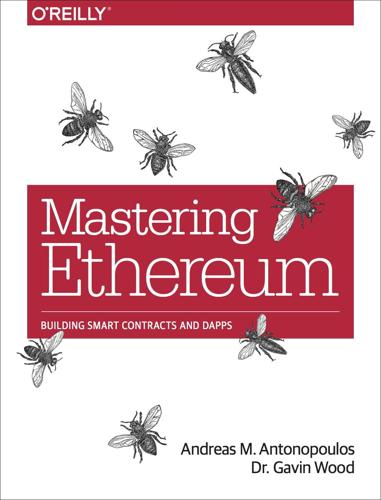
Mastering Ethereum: Building Smart Contracts and DApps
by
Andreas M. Antonopoulos
and
Gavin Wood Ph. D.
Published 23 Dec 2018
As a result, TLSNotary proofs rely on TLSNotary (via PageSigner) signatures. TLSNotary proofs leverage the Transport Layer Security (TLS) protocol, enabling the TLS master key, which signs the data after it has been accessed, to be split between three parties: the server (the oracle), an auditee (Oraclize), and an auditor. Oraclize uses an Amazon Web Services (AWS) virtual machine instance as the auditor, which can be verified as having been unmodified since instantiation. This AWS instance stores the TLSNotary secret, allowing it to provide honesty proofs. Although it offers higher assurances against data tampering than a pure request–response mechanism, this approach does require the assumption that Amazon itself will not tamper with the VM instance.

Build: An Unorthodox Guide to Making Things Worth Making
by
Tony Fadell
Published 2 May 2022
They would smile and smile but the promised meetings, the oversight from Google management, the plans we’d made to integrate—they all started to fall apart. Even the basic, no-brainer stuff stalled out: Can we sell Nest products in the Google Store? No. Not for at least a year. Can we get off Amazon Web Services and onto Google Cloud? No, not without a huge set of changes. And it’ll actually be more expensive. That shouldn’t have been a shock, though. Everything was more expensive. In 2014, just before the Google acquisition, Nest spent around $250,000 per employee per year. That included decent office space, good health insurance, the occasional free lunch, and fun perks from time to time.

Your Face Belongs to Us: A Secretive Startup's Quest to End Privacy as We Know It
by
Kashmir Hill
Published 19 Sep 2023
GO TO NOTE REFERENCE IN TEXT a marketing document: Clearview AI Investor Presentation, December 2021, on file with author. GO TO NOTE REFERENCE IN TEXT Amazon press release: “Amazon Rekognition Announces Real-Time Face Recognition, Text in Image Recognition, and Improved Face Detection,” Amazon Web Services, Inc., https://aws.amazon.com/about-aws/whats-new/2017/11/amazon-rekognition-announces-real-time-face-recognition-text-in-image-recognition-and-improved-face-detection/. GO TO NOTE REFERENCE IN TEXT What worried Cagle: Author’s interview with Matt Cagle, 2022. Matt Cagle and Nicole A.
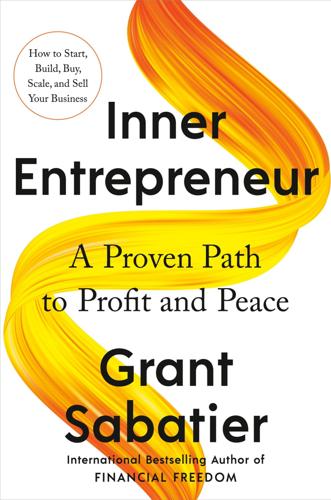
Inner Entrepreneur: A Proven Path to Profit and Peace
by
Grant Sabatier
Published 10 Mar 2025
Use Universal Systems When deciding which software, programs, or technology to use, stick with widely available ones with established reputations and histories as opposed to start-ups or novelties. This makes it easier for the buyer to onboard your company because they will likely be familiar with your tools. Avoid niche products that have not gained widespread use and newer products that may go out of business anytime. At my company, we use Amazon Web Services (the world’s most widely used cloud-computing service), open-source code for our site development, Google Suite for email and document sharing, and other popular tools that would make it easy for a buyer to integrate with their systems. Since we are building our websites and businesses to sell, we engineer everything from the beginning to make it easy for almost any company to take over the operation and integrate it with their systems.

The Future of the Professions: How Technology Will Transform the Work of Human Experts
by
Richard Susskind
and
Daniel Susskind
Published 24 Aug 2015
There is an overlap here with mass collaboration, but ‘crowdsourcing’ tends to be the term used when a given project is well bounded in scope and likely time-scale, and there is a clear commission or invitation from an individual or institution for the contributions of others.96 There are many businesses that specialize in crowdsourcing. At CrowdFlower, for example, it is said that an online workforce of millions of people can be drawn from to put together teams to clean up incomplete and messy bodies of data, while at Mechanical Turk, an Amazon Web Service, requests can be sent out to Internet users to offer support for tasks that computers are currently unable to do. At Watsi, the cost of raising money to pay for healthcare is shared out among donors. The apparently selfless nature of this socializing, sharing, community-building, and co-operating can be surprising.

Fire in the Valley: The Birth and Death of the Personal Computer
by
Michael Swaine
and
Paul Freiberger
Published 19 Oct 2014
It scaled. And soon you didn’t have to be an Amazon or a Facebook or a Google to benefit from these innovations. Google, HP, IBM, and Amazon turned this in-house technology into a marketable service. They made it possible for any business to distribute processing and storage with maximum efficiency. Amazon Web Services, or AWS, began renting Amazon’s distributed computing capability. You could rent computers, storage, the processing power of computers—virtually any definable capability of computers—on an as-needed basis. If your business grew rapidly and you needed ten times the capability tomorrow as today, you just bought more.
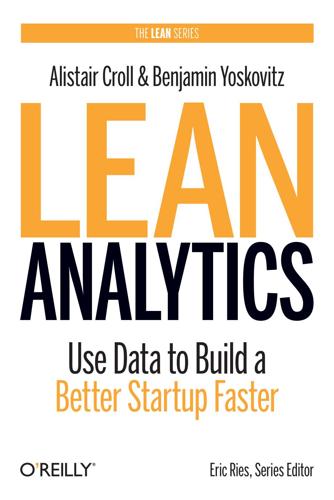
Lean Analytics: Use Data to Build a Better Startup Faster
by
Alistair Croll
and
Benjamin Yoskovitz
Published 1 Mar 2013
But if you can limit what you’re working on to just three big things, then everyone in the company knows what they’re doing and why they’re doing it. Three Big Assumptions In your current business model, you have some fundamental assumptions, such as “people will answer questions,” or “organizers are frustrated with how to run conferences,” or “we’ll make money from parents.” Some of these may be platform assumptions too: “Amazon Web Services are reliable enough for our users.” Each assumption has a metric associated with it, and a line in the sand. This is your big bet. These are the cells in your spreadsheet that you obsess over as a board. They’re what you look at to see if you can make payroll, or how much investment you’re going to need, or whether the marketing campaigns are bringing in more than they’re costing, or whether your business model is hopelessly, fatally, doomed.

The Future Is Asian
by
Parag Khanna
Published 5 Feb 2019
Jack Ma points out that Alibaba is not just a company but an economy. Its electronic world trade platform (e-WTP) links suppliers and vendors around the globe in a borderless marketplace; its Tmall combines the marketplace of eBay with the infrastructure of Amazon, and its Alipay ecosystem keeps money within its orbit. Alibaba Cloud wants to take on Amazon Web Services in the global cloud computing market, with plans to leverage its hard infrastructure investments into “One Belt, One Road, One Cloud.” Building and Manufacturing Growth Masses of farmers and peasants are moving into Asia’s thriving cities. From Pakistan to Vietnam, another 1 billion Asians are expected to urbanize by 2040, equivalent to the entire urban population of Europe and North America today.
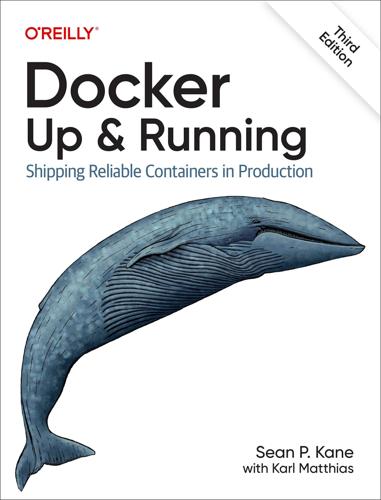
Docker: Up & Running: Shipping Reliable Containers in Production
by
Sean Kane
and
Karl Matthias
Published 14 May 2023
Better yet, it leads to more robust software through testing of the deployment environment before release. Broad Support and Adoption Docker is well supported, with the majority of the large public clouds offering some direct support for it. For example, Docker and Linux containers have been used in Amazon Web Services (AWS) via multiple products like Amazon Elastic Container Service (Amazon ECS), Amazon Elastic Kubernetes Service (Amazon EKS), Amazon Fargate, and Amazon Elastic Beanstalk. Linux containers can also be used on Google App Engine (GAE), Google Kubernetes Engine, Red Hat OpenShift, IBM Cloud, Microsoft Azure, and many more.

When McKinsey Comes to Town: The Hidden Influence of the World's Most Powerful Consulting Firm
by
Walt Bogdanich
and
Michael Forsythe
Published 3 Oct 2022
To help with the product launch, McKinsey partnered with UsAgainstAlzheimer’s, a nonprofit advocacy group funded in part by Biogen. The result was a web and voice service to support families concerned about the disease, Sneader said. The service, BrainGuide, was developed by a joint McKinsey and Amazon Web Services team and launched on ABC’s Good Morning America. The Health Research Group director, Dr. Michael A. Carome, said he was unaware that the FDA and Biogen had a common thread—McKinsey—until the authors of this book questioned him about it. Dr. Carome called that relationship a clear conflict of interest.

Battle for the Bird: Jack Dorsey, Elon Musk, and the $44 Billion Fight for Twitter's Soul
by
Kurt Wagner
Published 20 Feb 2024
Omid Kordestani, a longtime and well-liked Google executive credited with building the company’s massive search ads business, was one potential target, though he bowed out after meeting with Dorsey; he walked away convinced that the Twitter cofounder was both interested and committed to the job despite the board’s claim that it wouldn’t hire a part-timer. The board also talked to Tony Bates, who had worked at Microsoft and Cisco and was the president of the camera company GoPro. As summer morphed into fall, one candidate emerged from the pack: Andy Jassy, the head of Amazon Web Services, the retail giant’s incredibly successful and underrated cloud computing division. Jassy had been at Amazon since 1997, earning the trust of CEO Jeff Bezos and building a reputation as someone who embodied Amazon’s hard-core culture by working long hours and requiring his teams to do the same.

It's Not TV: The Spectacular Rise, Revolution, and Future of HBO
by
Felix Gillette
and
John Koblin
Published 1 Nov 2022
What HBO needed to do, Berkes wrote, was to transition to an integrated software-based approach. He recommended that instead of continuing to buy and maintain its own growing number of servers, HBO should commit to a more efficient and scalable model, leasing cloud-based capabilities, as needed, from the likes of Amazon Web Services. As an example of how HBO should proceed, he invoked Netflix, which was an early adopter of Amazon’s cloud computing services and used “one code base, one set of product features, one user experience, and one set of apps anywhere in the world.” With the right investment, focus, and institutional support, Berkes wrote, HBO could get there in eighteen months.

Your Computer Is on Fire
by
Thomas S. Mullaney
,
Benjamin Peters
,
Mar Hicks
and
Kavita Philip
Published 9 Mar 2021
Unlike Amazon’s retail operations, the provision of these services and infrastructure are highly lucrative, bringing in more than $17 billion in revenue annually and comprising the majority of the company’s overall profits.14 Within the computer industry, these products are known collectively as Amazon Web Services. Colloquially, the commodity computational infrastructure that these services comprise is known simply as “the Cloud.” Of all of the elements of the contemporary digital ecosystem, none is more associated with the claims of present or imminent technological, economic, and political revolution than the Cloud.15 If trucks and warehouses are the legacy technologies that ground e-commerce companies like Amazon to materiality and geography, the invisible and ethereal infrastructure of the Cloud seems to point the way toward a truly postindustrial and entirely digital economy.

API Design Patterns
by
Jj Geewax
Published 19 Jul 2021
Second, when we continue adding more and more configuration options to a flat structure, our next temptation is to reuse existing fields on the interface such that they might apply to multiple different storage systems. In other words, rather than having a sambaPassword field along with a s3secretKey field, we might just have one password field and attempt to use it for both the S3 secret key issued by Amazon Web Services as well as the password for a specific user on a Samba network share. This looks like a good idea at first but leads to even more confusion when a single field is used for more than one purpose, just because it happens to have a similar-sounding name. A more straightforward solution is to have a single polymorphic field that then has specific interfaces for each different storage system supported.

The Singularity Is Nearer: When We Merge with AI
by
Ray Kurzweil
Published 25 Jun 2024
BACK TO NOTE REFERENCE 11 For more detail on Moderna’s use of AI in developing vaccines, see “AI and the COVID-19 Vaccine: Moderna’s Dave Johnson,” Me, Myself, and AI podcast, ep. 209 (July 13, 2021), https://sloanreview.mit.edu/audio/ai-and-the-covid-19-vaccine-modernas-dave-johnson; “Moderna on AWS,” Amazon Web Services, accessed October 20, 2022, https://aws.amazon.com/solutions/case-studies/innovators/moderna; Bryce Elder, “Will Big Tobacco Save Us from the Coronavirus?,” Financial Times, April 1, 2020, https://www.ft.com/content/f909fb16-f514-47da-97dc-c03e752dd2e1. BACK TO NOTE REFERENCE 12 Gary Polakovic, “Artificial Intelligence Aims to Outsmart the Mutating Coronavirus,” USC News, February 5, 2021, https://news.usc.edu/181226/artificial-intelligence-ai-coronavirus-vaccines-mutations-usc-research; Zikun Yang et al., “An In Silico Deep Learning Approach to Multi-Epitope Vaccine Design: A SARS-CoV-2 Case Study,” Scientific Reports 11, article 3238 (February 5, 2021), https://doi.org/10.1038/s41598-021-81749-9.
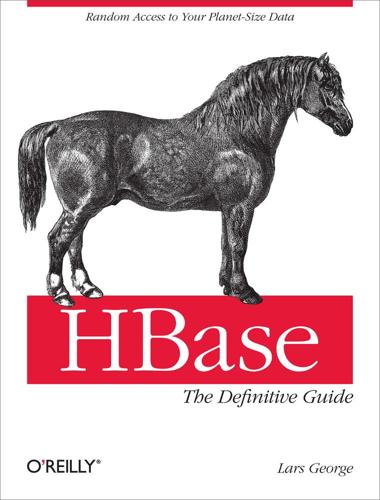
HBase: The Definitive Guide
by
Lars George
Published 29 Aug 2011
Foreword Michael Stack, HBase Project Janitor The HBase story begins in 2006, when the San Francisco-based startup Powerset was trying to build a natural language search engine for the Web. Their indexing pipeline was an involved multistep process that produced an index about two orders of magnitude larger, on average, than your standard term-based index. The datastore that they’d built on top of the then nascent Amazon Web Services to hold the index intermediaries and the webcrawl was buckling under the load (Ring. Ring. “Hello! This is AWS. Whatever you are running, please turn it off!”). They were looking for an alternative. The Google BigTable paper[1] had just been published. Chad Walters, Powerset’s head of engineering at the time, reflects back on the experience as follows: Building an open source system to run on top of Hadoop’s Distributed Filesystem (HDFS) in much the same way that BigTable ran on top of the Google File System seemed like a good approach because: 1) it was a proven scalable architecture; 2) we could leverage existing work on Hadoop’s HDFS; and 3) we could both contribute to and get additional leverage from the growing Hadoop ecosystem.

Ubuntu 15.04 Server with systemd: Administration and Reference
by
Richard Petersen
Published 15 May 2015
Use either a command line browser like elinks or lynx, or, if you have installed the ubuntu desktop or basic GNOME interface, you can use Firefox or Epiphany. Check the Amazon EC2 documentation for more details, including the User Guide and Getting Started guide at http://docs.amazonwebservices.com. Public Cloud: Amazon EC2 Cloud The Ubuntu 15.04 server edition provides support for access the Amazon EC2 cloud provided by Amazon Web Services (AWS). This is a commercial service that you have to sign up and pay for. Once you have access, you can then access an Amazon Machine Image (AMI) for an Ubuntu server and set up applications to run from the Amazon EC2 cloud. See the Ubuntu public cloud page for an overview. http://www.ubuntu.com/cloud/ You can find out more about Amazon EC2 cloud at: http://aws.amazon.com/ec2/ The EC2StartGUide shows how to set up access.

Engineering Security
by
Peter Gutmann
A far simpler technique for evaluating overall performance in the case of failures of individual components is used by Netflix, who use a system called the Chaos Monkey whose “job is to randomly kill instances and services within our architecture” [200]. As a result of engineering their systems to cope with the failure of individual 332 Design components, when their hosting provider (Amazon Web Services) experienced a major outage in early 2011, Netflix wasn’t affected [201][202]. The Chaos Monkey was later extended to create an entire Simian Army, including ones to take out larger chunks of functionality by inducing network partitioning in a data centre, or even larger chunks by taking an entire region offline, as well as more pernicious degradation-related failures like extreme latency, in which something is still functioning fully but its performance has been degraded to a level at which it’s no longer functioning usefully [203].
…
The same EC2 machine image survey that was mentioned above found that 22% of all images had public keys from previous owners still on them in authorized_keys files, and of those 82% allowed root access to the VM [70]. This works in reverse as well, with Internet services like Github containing thousands upon thousands of unprotected keys used to access Amazon Web Services (AWS, of which EC2 is a part) [75], with the keys being exploited by attackers via automated tools that scrape Github for them and then use them to access AWS, typically for Bitcoin mining [76][77]. This problem is endemic among organisations using SSH. For example one major bank that was audited by a security company had over a million unaccounted-for SSH keys, of which around ten percent granted root access to the banks’ servers [78].

On the Edge: The Art of Risking Everything
by
Nate Silver
Published 12 Aug 2024
The hamburger is a notoriously disputed example; 1904 is the date when the hamburger became famous at the St. Louis World’s Fair, but other sources date its origins to 1885 or 1900. mRNA vaccines are another ambiguous case. But the seminal paper cited to Katalin Karikó and Drew Weissman in their award of the Nobel Prize dates to 2005. Cloud computing refers to commercial application with Amazon Web Services. Human genome project refers to the completion of the project in 2003. And Tesla’s 2008 date refers to the first commercial sales. GO TO NOTE REFERENCE IN TEXT Barzun used “decadent”: Jacques Barzun, From Dawn to Decadence: 500 Years of Western Cultural Life 1500 to the Present (New York: HarperCollins, 2000), xvi.

The Age of Surveillance Capitalism
by
Shoshana Zuboff
Published 15 Jan 2019
Kevin McLaughlin et al., “Bezos Ordered Alexa App Push,” Information, November 16, 2016, https://www.theinformation.com/bezos-ordered-alexa-app-push; “The Real Reasons That Amazon’s Alexa May Become the Go-To AI for the Home,” Fast Company, April 8, 2016, https://www.fastcompany.com/3058721/app-economy/the-real-reasons-that-amazons-alexa-may-become-the-go-to-ai-for-the-home; “Amazon Lex—Build Conversation Bots,” Amazon Web Services, February 24, 2017, https//aws.amazon.com/lex. 40. “Dave Limp, Exec Behind Amazon’s Alexa.” 41. Aaron Tilley and Priya Anand, “Apple Loses Ground to Amazon in Smart Home Deals with Builders,” Information, April 16, 2018, https://www.theinformation.com/articles/apple-loses-ground-to-amazon-in-smart-home-deals-with-builders. 42.

Palo Alto: A History of California, Capitalism, and the World
by
Malcolm Harris
Published 14 Feb 2023
In 2018, after spending all 2017’s leftover cash to acquire Whole Foods and try groceries again, the realest of the internet titans finally started showing a profit. The numbers are going according to plan, and one part of the plan has been to constantly probe for new income sources. The Fire Phone was a flop, as was a hotel booking service and a mobile payment processing system, but Amazon Web Services (AWS) was a huge success. In the early 2000s, Amazon started to build its partner platform, which allowed third-party vendors to sell their goods on Amazon or with Amazon tools. The company saw large demand for web server infrastructure and related services among existing retailers, and Amazon was little more than one big exercise in perfecting those technologies for that purpose at global scale.